Organic light-emitting devices
Cho , et al.
U.S. patent number 10,333,077 [Application Number 14/447,559] was granted by the patent office on 2019-06-25 for organic light-emitting devices. This patent grant is currently assigned to Samsung Display Co., Ltd.. The grantee listed for this patent is Samsung Display Co., Ltd.. Invention is credited to Hwan-Hee Cho, Chang-Woong Chu, Dong-Hyun Kim, Mi-Kyung Kim, Se-Hun Kim, Jae-Yong Lee.
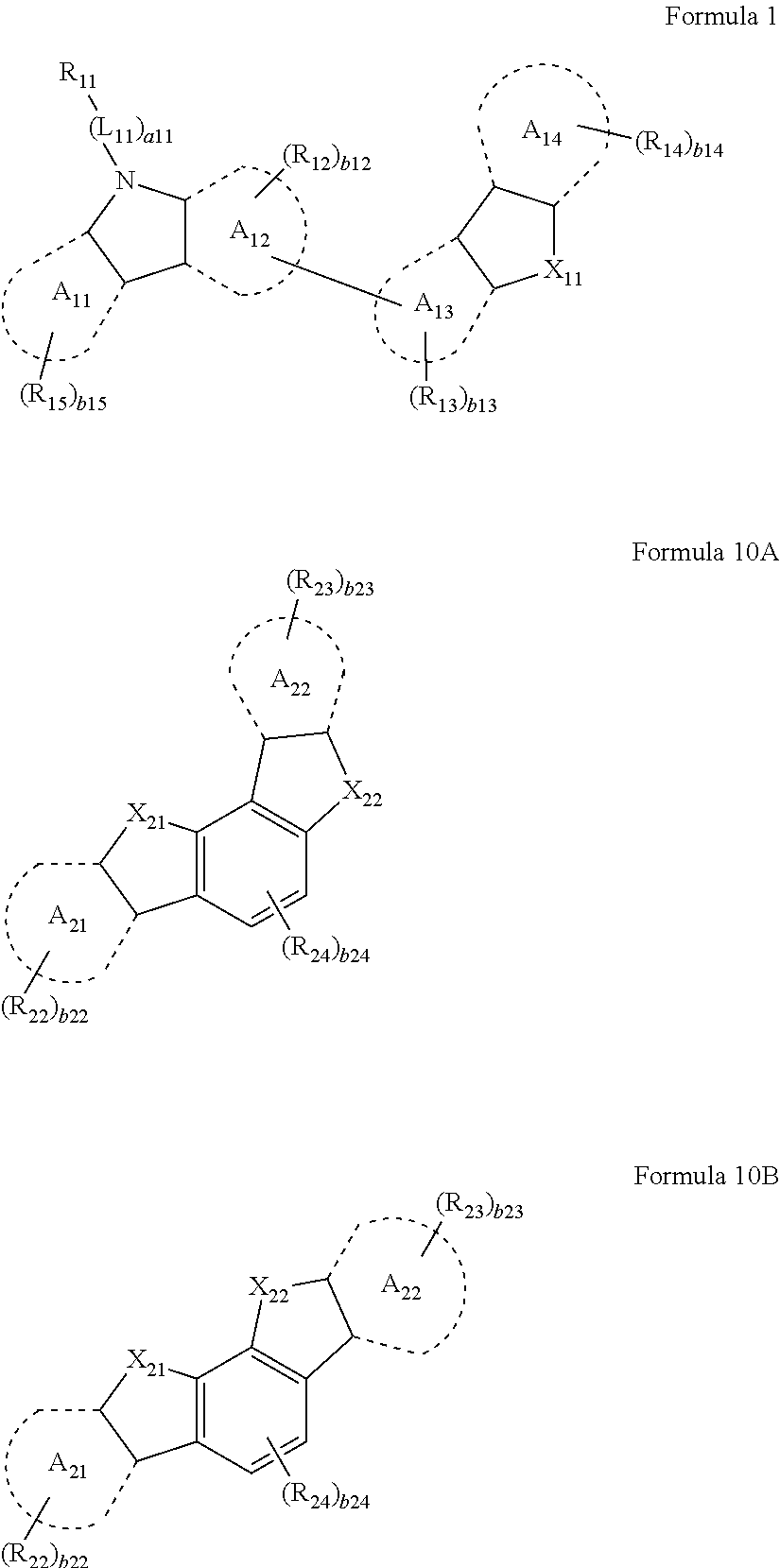
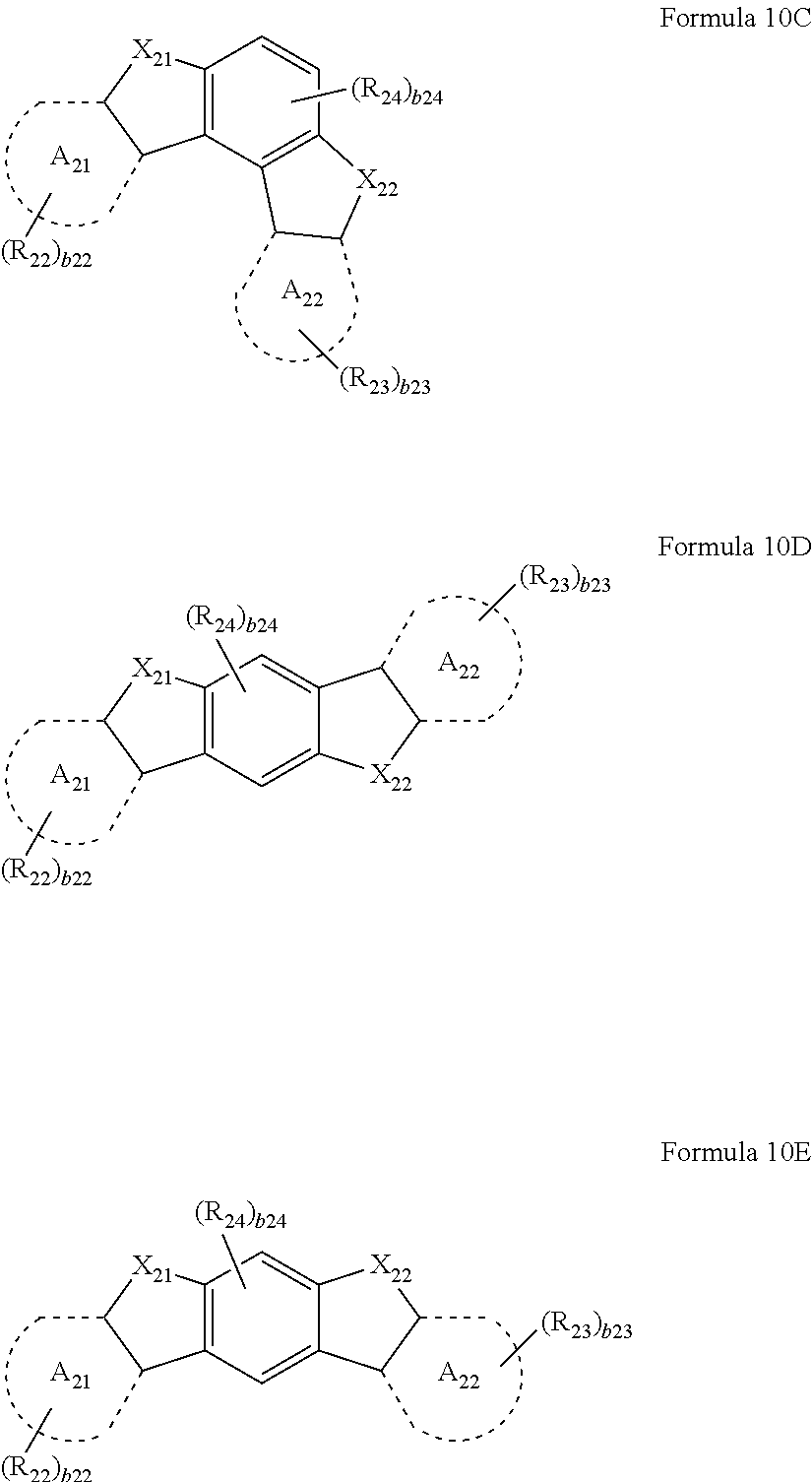
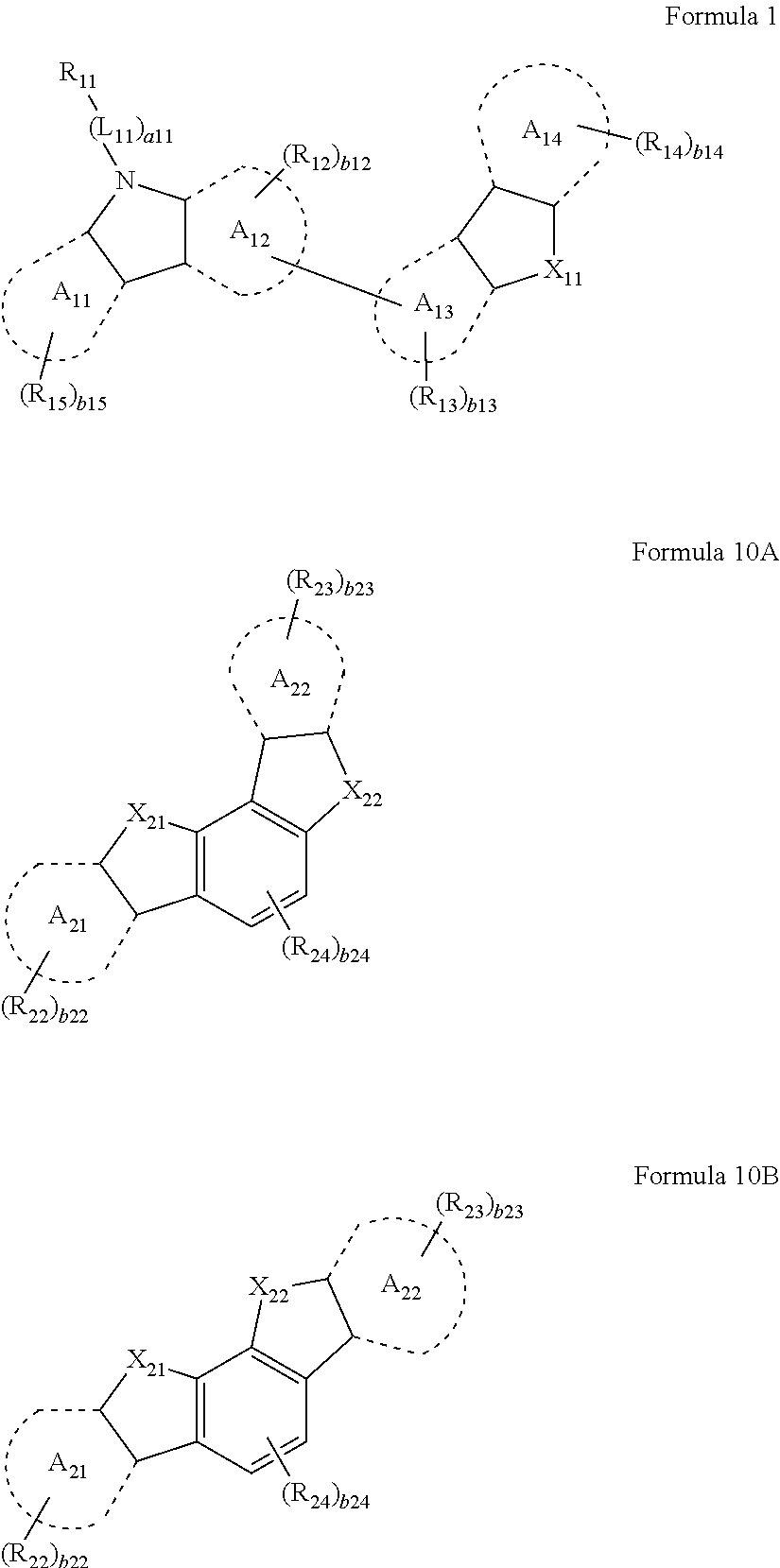
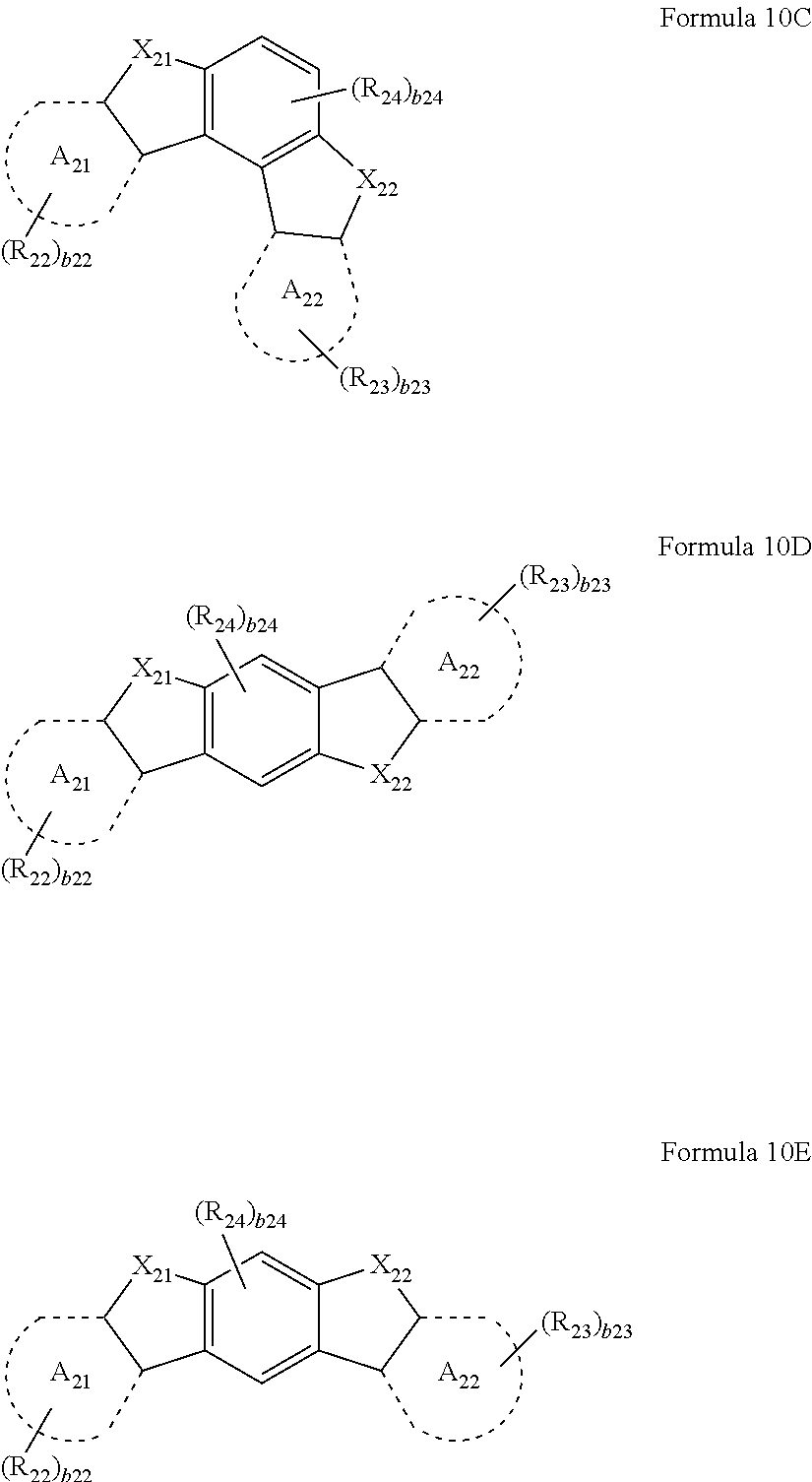
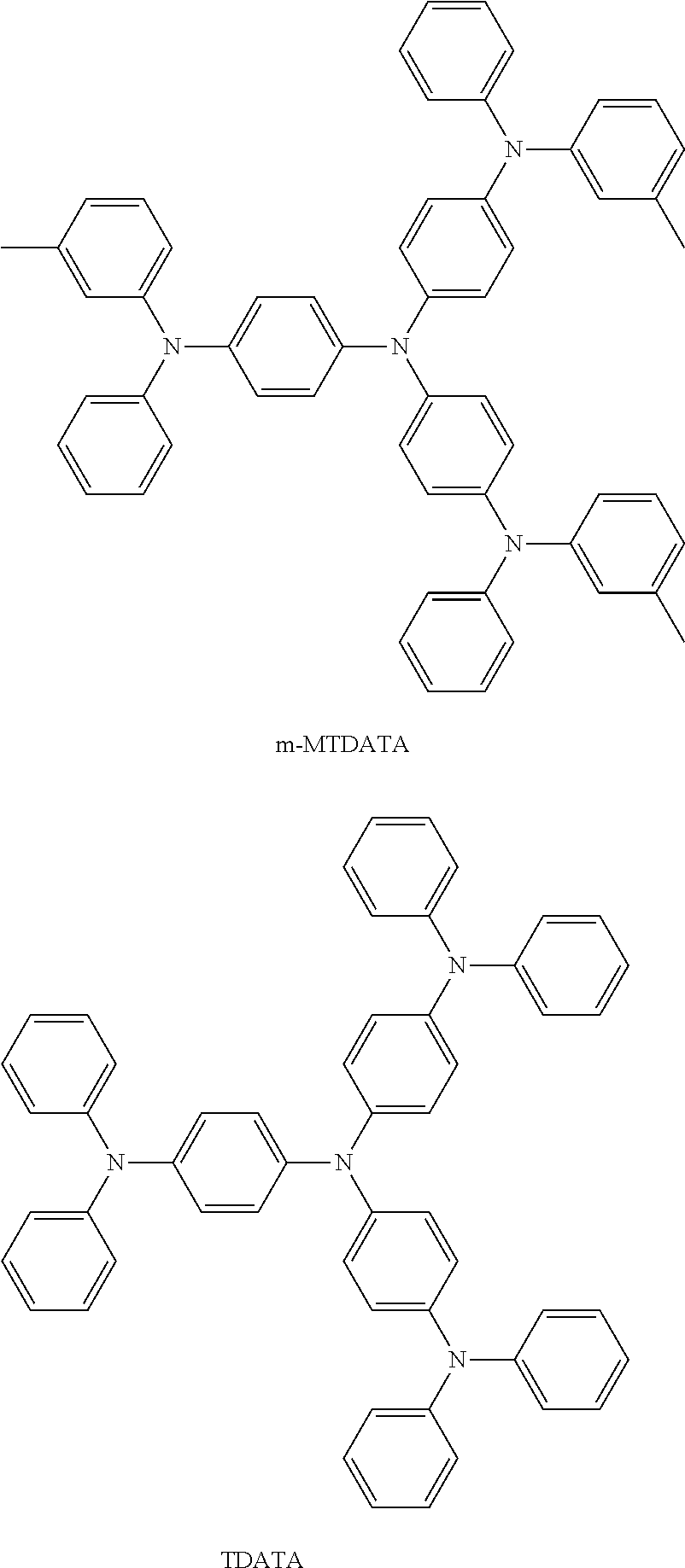
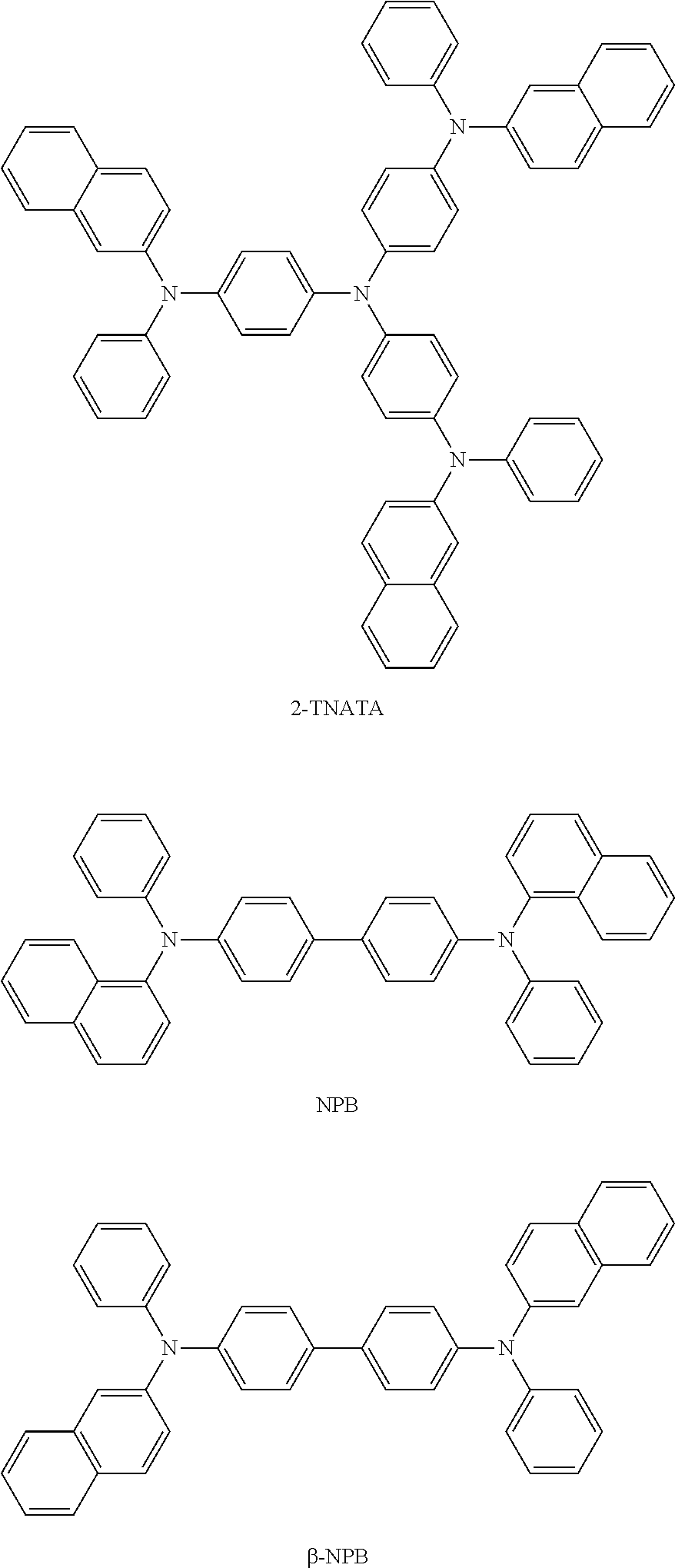
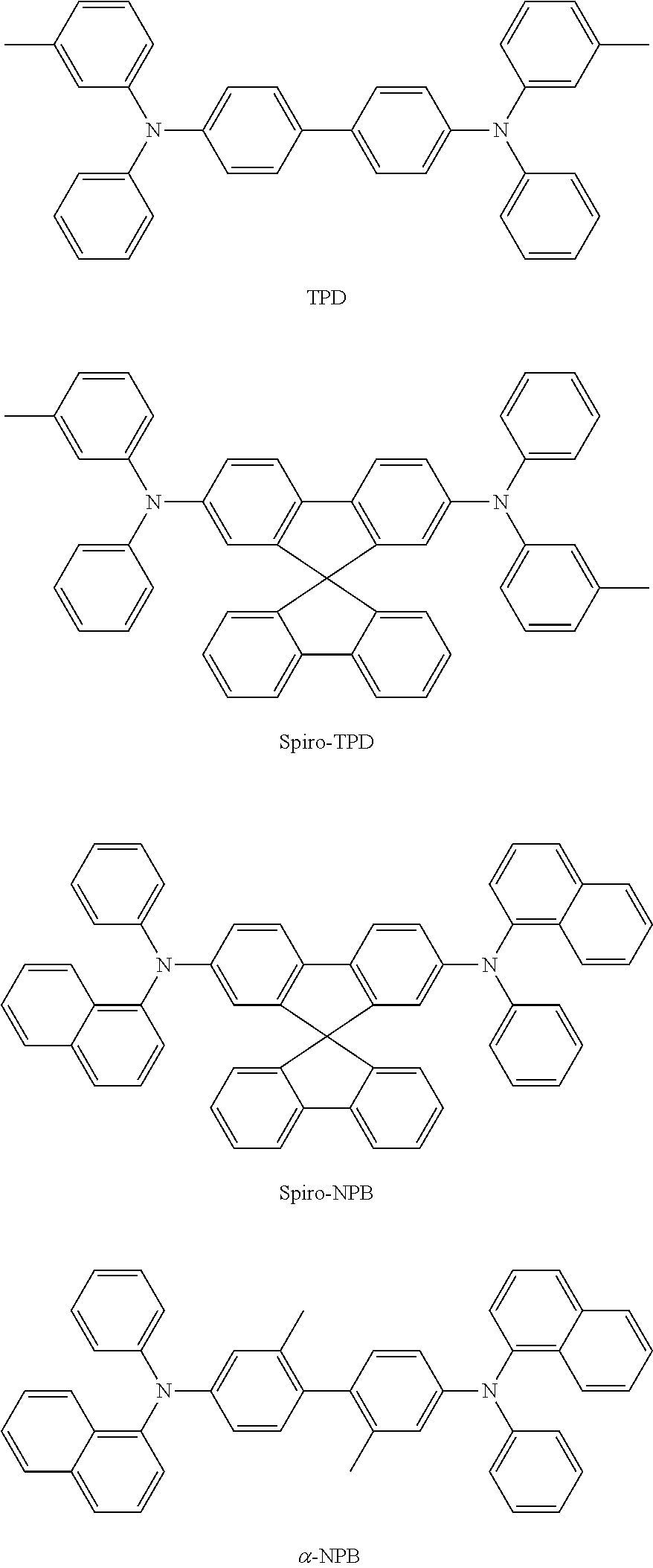
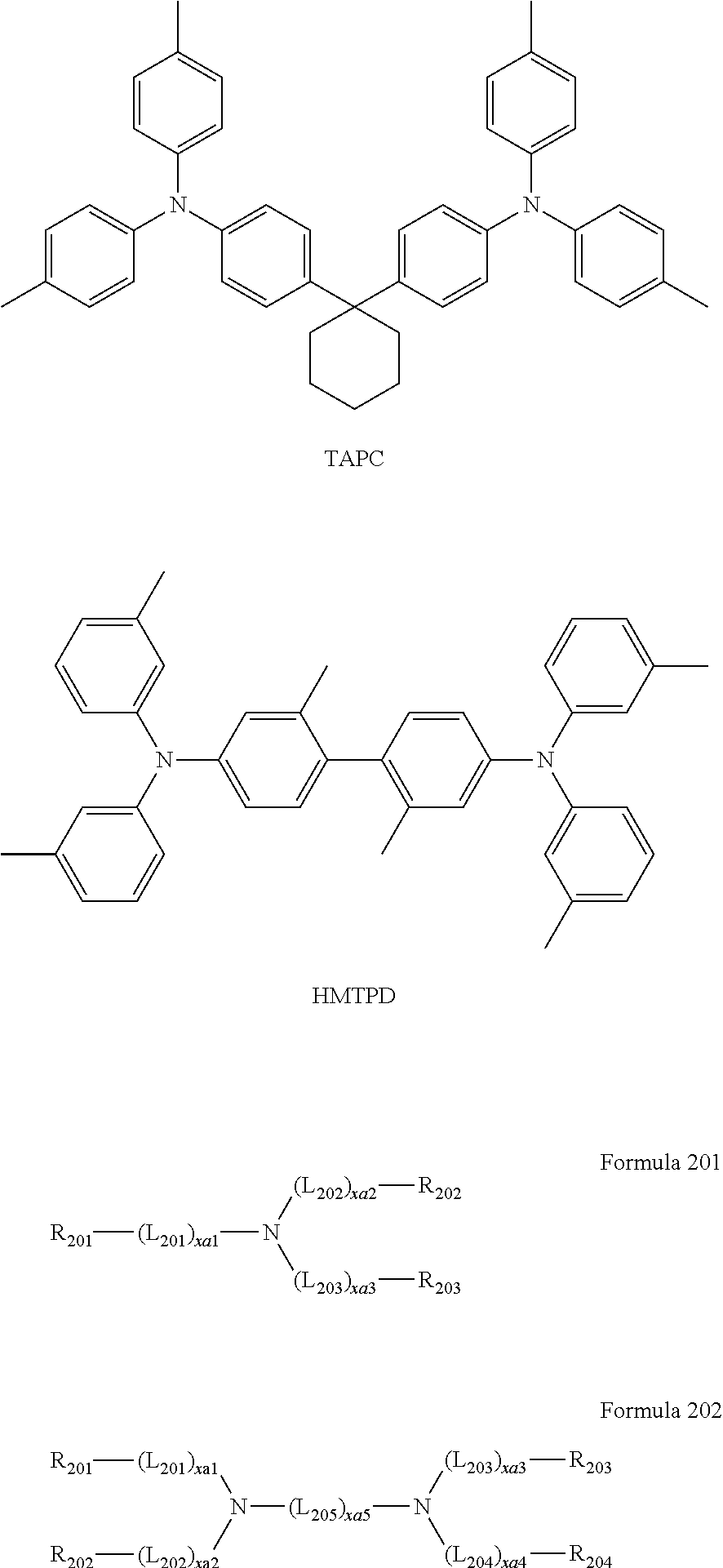
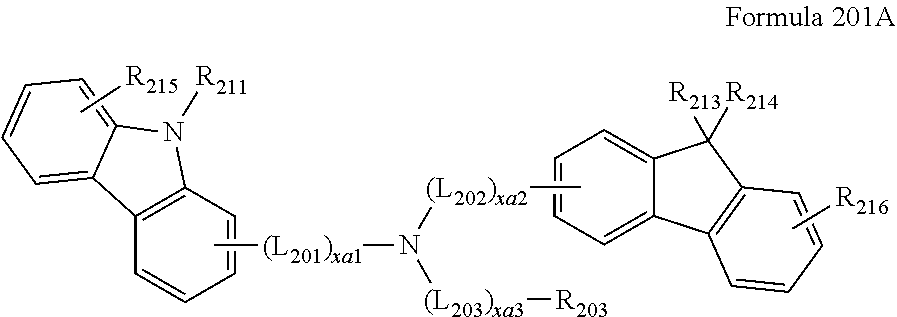
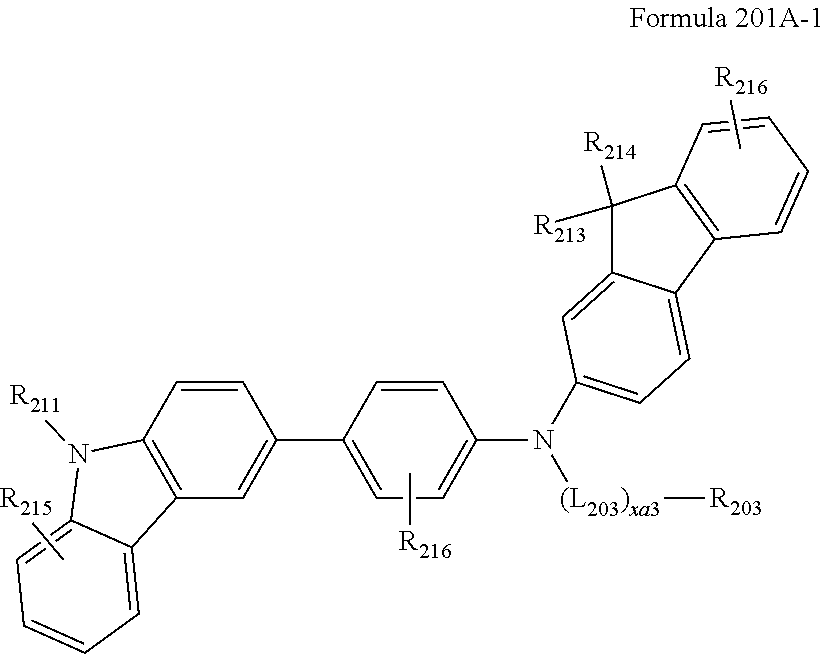
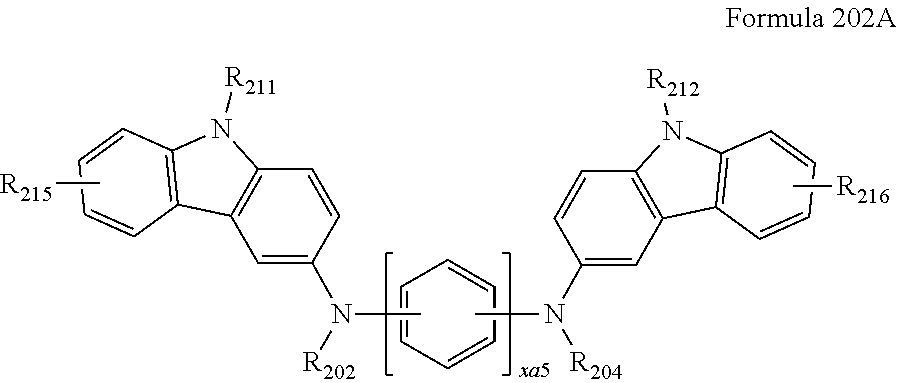
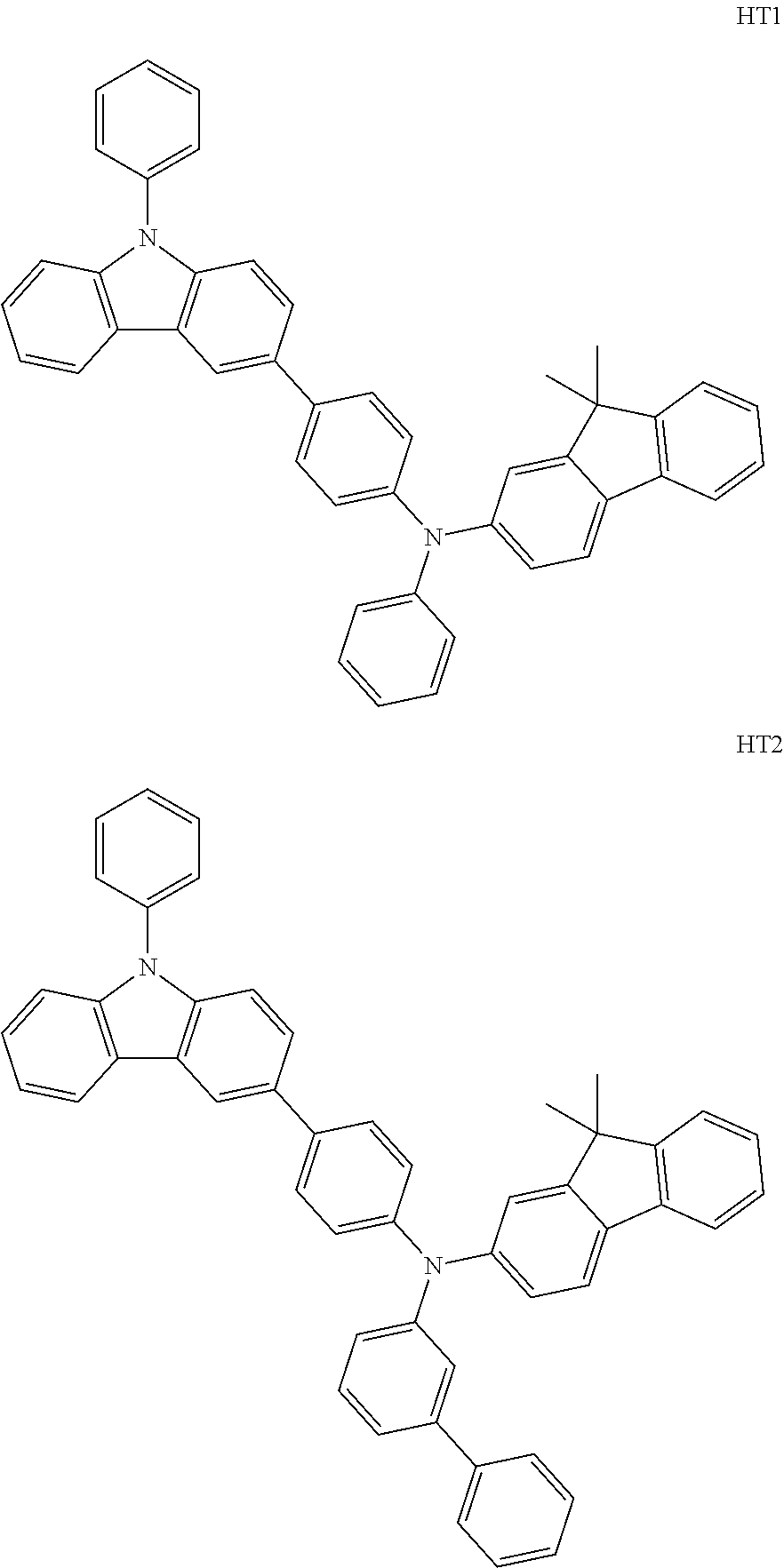
View All Diagrams
| United States Patent | 10,333,077 |
| Cho , et al. | June 25, 2019 |
Organic light-emitting devices
Abstract
An organic light-emitting device includes: a first electrode; a second electrode facing the first electrode; and an organic layer including an emission layer between the first electrode and the second electrode. The emission layer includes at least one compound selected from carbazole-based compounds, and at least one compound selected from heterocyclic compounds as described in the detailed description.
| Inventors: | Cho; Hwan-Hee (Yongin, KR), Kim; Mi-Kyung (Yongin, KR), Lee; Jae-Yong (Yongin, KR), Kim; Dong-Hyun (Yongin, KR), Kim; Se-Hun (Yongin, KR), Chu; Chang-Woong (Yongin, KR) | ||||||||||
|---|---|---|---|---|---|---|---|---|---|---|---|
| Applicant: |
|
||||||||||
| Assignee: | Samsung Display Co., Ltd.
(Yongin-si, KR) |
||||||||||
| Family ID: | 53798889 | ||||||||||
| Appl. No.: | 14/447,559 | ||||||||||
| Filed: | July 30, 2014 |
Prior Publication Data
| Document Identifier | Publication Date | |
|---|---|---|
| US 20150236262 A1 | Aug 20, 2015 | |
Foreign Application Priority Data
| Feb 14, 2014 [KR] | 10-2014-0017518 | |||
| Current U.S. Class: | 1/1 |
| Current CPC Class: | H01L 51/0054 (20130101); H01L 51/0059 (20130101); H01L 51/0058 (20130101); H01L 51/0072 (20130101); H01L 51/0094 (20130101); H01L 51/0074 (20130101); H01L 51/0073 (20130101); H01L 51/0067 (20130101); H01L 51/0071 (20130101); H01L 51/0052 (20130101); H01L 2251/5384 (20130101); H01L 51/5016 (20130101) |
| Current International Class: | H01L 51/54 (20060101); C09K 11/06 (20060101); H01L 51/00 (20060101); H01L 51/50 (20060101) |
| Field of Search: | ;428/690,691,917,411.4,336 ;427/58,66 ;313/500-512 ;257/40,88-104,E51.001-E51.052 ;252/301.16-301.35 |
References Cited [Referenced By]
U.S. Patent Documents
| 9530969 | December 2016 | Mizuki et al. |
| 9559309 | January 2017 | Min et al. |
| 2011/0037062 | February 2011 | Fukumatsu et al. |
| 2011/0315975 | December 2011 | Kai et al. |
| 2012/0001158 | January 2012 | Asari et al. |
| 2012/0080670 | April 2012 | Park et al. |
| 2012/0104370 | May 2012 | Suzuki et al. |
| 2012/0138915 | June 2012 | Nishimura |
| 2012/0153272 | June 2012 | Fukuzaki |
| 2013/0112952 | May 2013 | Adamovich et al. |
| 2013/0234119 | September 2013 | Mizuki et al. |
| 2013/0313536 | November 2013 | Nishimura et al. |
| 2014/0070204 | March 2014 | Nagao |
| 2014/0084270 | March 2014 | Kato |
| 2014/0151647 | June 2014 | Mizuki et al. |
| 2014/0197386 | July 2014 | Kim |
| 2014/0306207 | October 2014 | Nishimura |
| 2015/0084020 | March 2015 | Nagao et al. |
| 2879196 | Jun 2015 | EP | |||
| 10-2010-0079458 | Jul 2010 | KR | |||
| 10-2010-0105099 | Sep 2010 | KR | |||
| 10-2011-0007124 | Jan 2011 | KR | |||
| 10-2011-0134885 | Dec 2011 | KR | |||
| 10-2011-0134923 | Dec 2011 | KR | |||
| 10-2012-0042633 | May 2012 | KR | |||
| 10-2012-0049135 | May 2012 | KR | |||
| 10-2012-0057611 | Jun 2012 | KR | |||
| 10-2012-0060611 | Jun 2012 | KR | |||
| 10-2013-0073023 | Jul 2013 | KR | |||
| 10-2013-0132226 | Dec 2013 | KR | |||
| 10-2014-0096203 | Aug 2014 | KR | |||
| 10-2014-0105913 | Sep 2014 | KR | |||
| 10-2014-0108637 | Sep 2014 | KR | |||
| WO 2010/107244 | Sep 2010 | WO | |||
| WO 2012/026780 | Mar 2012 | WO | |||
| WO 2013/084881 | Jun 2013 | WO | |||
| WO 2013/122082 | Aug 2013 | WO | |||
| WO 2013/133219 | Sep 2013 | WO | |||
| WO 2013/133223 | Sep 2013 | WO | |||
| WO 2013/187894 | Dec 2013 | WO | |||
| WO 2014/017484 | Jan 2014 | WO | |||
Other References
|
KIPO Office Action dated Feb. 15, 2017, for corresponding Korean Patent Application No. 10-2014-0017518 (11 pages). cited by applicant . KIPO Office Action dated Jun. 1, 2016, for Korean Patent application 10-2014-0017518 (9 pages). cited by applicant . U.S. Office Action dated Jun. 28, 2018, issued in U.S. Appl. No. 15/960,254 (12 pages). cited by applicant. |
Primary Examiner: Bohaty; Andrew K
Attorney, Agent or Firm: Lewis Roca Rothgerber Christie LLP
Claims
What is claimed is:
1. An organic light-emitting device comprising: a first electrode; a second electrode facing the first electrode; and an organic layer comprising an emission layer between the first electrode and the second electrode, wherein the emission layer comprises at least one compound selected from carbazole-based compounds represented by Formula 1, and at least one compound selected from heterocyclic compounds represented by Formulae 10A, 10B, 10C, 10D, and 10E: ##STR00182## wherein, in Formulae 1, 10A, 10B, 10C, 10D, and 10E, A.sub.11 to A.sub.14, A.sub.21, and A.sub.22 are each independently selected from benzene, naphthalene, pyridine, pyrimidine, pyrazine, quinoline, isoquinoline, 2,6-naphthyridine, 1,8-naphthyridine, 1,5-naphthyridine, 1,6-naphthyridine, 1,7-naphthyridine, 2,7-naphthyridine, quinoxaline, phthalazine, and quinazoline; X.sub.11 is N(R.sub.16); X.sub.21 and X.sub.22 are each independently N-(L.sub.21).sub.a21-R.sub.21; L.sub.11 is selected from: a C.sub.3-C.sub.10 cycloalkylene group, a C.sub.3-C.sub.10 heterocycloalkylene group, a C.sub.3-C.sub.10 cycloalkenylene group, a C.sub.3-C.sub.10 heterocycloalkenylene group, a C.sub.6-C.sub.60 arylene group, a C.sub.1-C.sub.60 heteroarylene group, a divalent nonaromatic condensed polycyclic group, and a divalent nonaromatic condensed heteropolycyclic group; and a C.sub.3-C.sub.10 cycloalkylene group, a C.sub.3-C.sub.10 heterocycloalkylene group, a C.sub.3-C.sub.10 cycloalkenylene group, a C.sub.3-C.sub.10 heterocycloalkenylene group, a C.sub.6-C.sub.60 arylene group, a C.sub.2-C.sub.60 heteroarylene group, a divalent nonaromatic condensed polycyclic group, and a divalent nonaromatic condensed heteropolycyclic group, each substituted with at least one selected from a deuterium; --F; --Cl; --Br; --I; a C.sub.1-C.sub.60 alkyl group; a C.sub.6-C.sub.60 aryl group; a monovalent nonaromatic condensed polycyclic group; and a monovalent nonaromatic condensed heteropolycyclic group; except for a nitrogen (N)-containing C.sub.1-C.sub.60 heteroarylene group, and a nitrogen (N)-containing C.sub.1-C.sub.60 heteroarylene group substituted with at least one selected from a deuterium, --F, --Cl, --Br, --I, a C.sub.1-C.sub.60 alkyl group, a C.sub.6-C.sub.60 aryl group, a monovalent nonaromatic condensed polycyclic group, and a monovalent nonaromatic condensed heteropolycyclic group; a11 is an integer selected from 0 to 5; R.sub.11, and R.sub.16 are each independently selected from: a hydrogen, a C.sub.1-C.sub.60 alkyl group, a C.sub.3-C.sub.10 cycloalkyl group, a C.sub.3-C.sub.10 heterocycloalkyl group, a C.sub.3-C.sub.10 cycloalkenyl group, a C.sub.3-C.sub.10 heterocycloalkenyl group, a C.sub.6-C.sub.60 aryl group, a C.sub.1-C.sub.60 heteroaryl group, a monovalent nonaromatic condensed polycyclic group, a monovalent nonaromatic condensed heteropolycyclic group, and --N(Q.sub.11)(Q.sub.12); and a C.sub.1-C.sub.60 alkyl group, a C.sub.3-C.sub.10 cycloalkyl group, a C.sub.3-C.sub.10 heterocycloalkyl group, a C.sub.3-C.sub.10 cycloalkenyl group, a C.sub.3-C.sub.10 heterocycloalkenyl group, a C.sub.6-C.sub.60 aryl group, a C.sub.1-C.sub.60 heteroaryl group, a monovalent nonaromatic condensed polycyclic group, and a monovalent nonaromatic condensed heteropolycyclic group, each substituted with at least one selected from a deuterium; --F; --Cl; --Br; --I; a C.sub.1-C.sub.60 alkyl group; a C.sub.6-C.sub.60 aryl group; a monovalent nonaromatic condensed polycyclic group; and a monovalent nonaromatic condensed heteropolycyclic group; except for a nitrogen (N)-containing C.sub.1-C.sub.60 heteroaryl group, and a nitrogen (N)-containing C.sub.1-C.sub.60 heteroaryl group substituted with at least one selected from a deuterium, --F, --Cl, --Br, --I, a C.sub.1-C.sub.60 alkyl group, a C.sub.6-C.sub.60 aryl group, a monovalent nonaromatic condensed polycyclic group, and a monovalent nonaromatic condensed heteropolycyclic group; L.sub.21 is selected from a nitrogen (N)-containing C.sub.1-C.sub.60 heteroarylene group, and a C.sub.1-C.sub.60 heteroarylene group substituted with at least one selected from a deuterium, --F, --Cl, --Br, --I, a C.sub.1-C.sub.60 alkyl group, a C.sub.6-C.sub.60 aryl group, a monovalent nonaromatic condensed polycyclic group, and a monovalent nonaromatic condensed heteropolycyclic group; a21 is an integer selected from 0 to 5; R.sub.21 is selected from: a hydrogen, a C.sub.1-C.sub.60 alkyl group, a C.sub.3-C.sub.10 cycloalkyl group, a C.sub.3-C.sub.10 heterocycloalkyl group, a C.sub.3-C.sub.10 cycloalkenyl group, a C.sub.3-C.sub.10 heterocycloalkenyl group, a C.sub.6-C.sub.60 aryl group, a C.sub.1-C.sub.60 heteroaryl group, a monovalent nonaromatic condensed polycyclic group, a monovalent nonaromatic condensed heteropolycyclic group, and --N(Q.sub.11)(Q.sub.12); and a C.sub.1-C.sub.60 alkyl group, a C.sub.3-C.sub.10 cycloalkyl group, a C.sub.3-C.sub.10 heterocycloalkyl group, a C.sub.3-C.sub.10 cycloalkenyl group, a C.sub.3-C.sub.10 heterocycloalkenyl group, a C.sub.6-C.sub.60 aryl group, a C.sub.1-C.sub.60 heteroaryl group, a monovalent nonaromatic condensed polycyclic group, and a monovalent nonaromatic condensed heteropolycyclic group, each substituted with at least one selected from a deuterium, --F, --Cl, --Br, --I, a C.sub.1-C.sub.60 alkyl group, a C.sub.6-C.sub.60 aryl group, a monovalent nonaromatic condensed polycyclic group, and a monovalent nonaromatic condensed heteropolycyclic group; R.sub.12 to R.sub.15, and R.sub.22 to R.sub.24 are each independently selected from: a hydrogen, a deuterium, --F, --Cl, --Br, --I, a hydroxyl group, a cyano group, a nitro group, an amino group, an amidino group, a hydrazine, a hydrazone, a carboxylic acid group or a salt thereof, a sulfonic acid group or a salt thereof, a phosphoric acid group or a salt thereof, a C.sub.1-C.sub.60 alkyl group a C.sub.2-C.sub.60 alkenyl group, a C.sub.2-C.sub.60 alkynyl group, and a C.sub.1-C.sub.60 alkoxy group; a C.sub.1-C.sub.60 alkyl group, a C.sub.2-C.sub.60 alkenyl group, a C.sub.2-C.sub.60 alkynyl group, and a C.sub.1-C.sub.60 alkoxy group, each substituted with at least one of a deuterium, --F, --Cl, --Br, --I, a hydroxyl group, a cyano group, a nitro group, an amino group, an amidino group, a hydrazine, a hydrazone, a carboxylic acid group or a salt thereof, a sulfonic acid group or a salt thereof, a phosphoric acid group or a salt thereof, a C.sub.3-C.sub.10 cycloalkyl group, a C.sub.3-C.sub.10 heterocycloalkyl group, a C.sub.3-C.sub.10 cycloalkenyl group, a C.sub.3-C.sub.10 heterocycloalkenyl group, a C.sub.6-C.sub.60 aryl group, a C.sub.6-C.sub.60 aryloxy group, a C.sub.6-C.sub.60 arylthio group, a C.sub.2-C.sub.60 heteroaryl group, a monovalent nonaromatic condensed polycyclic group, and a monovalent nonaromatic condensed heteropolycyclic group; a C.sub.3-C.sub.10 cycloalkyl group, a C.sub.3-C.sub.10 heterocycloalkyl group, a C.sub.3-C.sub.10 cycloalkenyl group, a C.sub.3-C.sub.10 heterocycloalkenyl group, a C.sub.6-C.sub.60 aryl group, a C.sub.2-C.sub.60 heteroaryl group, a monovalent nonaromatic condensed polycyclic group, and a monovalent nonaromatic condensed heteropolycyclic group; a C.sub.3-C.sub.10 cycloalkyl group, a C.sub.3-C.sub.10 heterocycloalkyl group, a C.sub.3-C.sub.10 cycloalkenyl group, a C.sub.3-C.sub.10 heterocycloalkenyl group, a C.sub.6-C.sub.60 aryl group, a C.sub.2-C.sub.60 heteroaryl group, a monovalent nonaromatic condensed polycyclic group, and a monovalent nonaromatic condensed heteropolycyclic group, each substituted with at least one selected from a deuterium, --F, --Cl, --Br, --I, a hydroxyl group, a cyano group, a nitro group, an amino group, an amidino group, a hydrazine, a hydrazone, a carboxylic acid group or a salt thereof, a sulfonic acid group or a salt thereof, a phosphoric acid group or a salt thereof, a C.sub.1-C.sub.60 alkyl group, a C.sub.2-C.sub.60 alkenyl group, a C.sub.2-C.sub.60 alkynyl group, a C.sub.1-C.sub.60 alkoxy group, a C.sub.3-C.sub.10 cycloalkyl group, a C.sub.3-C.sub.10 heterocycloalkyl group, a C.sub.3-C.sub.10 cycloalkenyl group, a C.sub.3-C.sub.10 heterocycloalkenyl group, a C.sub.6-C.sub.60 aryl group, a C.sub.6-C.sub.60 aryloxy group, a C.sub.6-C.sub.60 arylthio group, a C.sub.2-C.sub.60 heteroaryl group, a monovalent nonaromatic condensed polycyclic group, and a monovalent nonaromatic condensed heteropolycyclic group; and --N(Q.sub.21)(Q.sub.22); b12 to b15, and b22 to b24 are each independently an integer selected from 1 to 5; and Q.sub.11, Q.sub.12, Q.sub.21, and Q.sub.22 are each independently selected from a hydrogen, a C.sub.1-C.sub.60 alkyl group, a C.sub.6-C.sub.60 aryl group, and a C.sub.6-C.sub.60 aryl group substituted with a C.sub.6-C.sub.60 aryl group, wherein R.sub.11 is free of a nitrogen (N)-containing C.sub.1-C.sub.60 heteroarylene group, and a nitrogen (N)-containing C.sub.1-C.sub.60 heteroarylene group substituted with at least one selected from a deuterium, --F, --Cl, --Br, --I, a C.sub.1-C.sub.60 alkyl group, a C.sub.6-C.sub.60 aryl group, a monovalent nonaromatic condensed polycyclic group, and a monovalent nonaromatic condensed heteropolycyclic group; and when a21 is 0, R.sub.21 is selected from a nitrogen (N)-containing C.sub.1-C.sub.60 heteroarylene group, and a C.sub.1-C.sub.60 heteroarylene group substituted with at least one selected from a deuterium, --F, --Cl, --Br, --I, a C.sub.1-C.sub.60 alkyl group, a C.sub.6-C.sub.60 aryl group, a monovalent nonaromatic condensed polycyclic group, and a monovalent nonaromatic condensed heteropolycyclic group.
2. The organic light-emitting device of claim 1, wherein R.sub.16 is selected from: a hydrogen, a C.sub.1-C.sub.60 alkyl group, a C.sub.6-C.sub.60 aryl group, and --N(Q.sub.11)(Q.sub.12); and a C.sub.1-C.sub.60 alkyl group and a C.sub.6-C.sub.60 aryl group, each substituted with at least one selected from a deuterium, --F, --Cl, --Br, --I, a C.sub.1-C.sub.60 alkyl group, a C.sub.6-C.sub.60 aryl group, and monovalent nonaromatic condensed polycyclic group; and Q.sub.11 and Q.sub.12 are each independently selected from a hydrogen, a C.sub.1-C.sub.60 alkyl group, and a C.sub.6-C.sub.60 aryl group.
3. The organic light-emitting device of claim 1, wherein L.sub.11 is selected from: a phenylene group, a pentalenylene group, an indenylene group, a naphthylene group, an azulenylene group, a heptalenylene group, an indacenylene group, an acenaphthylene group, a fluorenylene group, a spiro-fluorenylene group, a benzofluorenylene group, a dibenzofluorenylene group, a phenalenylene group, a phenanthrenylene group, an anthracenylene group, a fluoranthenylene group, a triphenylenylene group, a pyrenylene group, a chrysenylene group, a naphthacenylene group, a picenylene group, a perylenylene group, a pentaphenylene group, a hexacenylene group, a pentacenylene group, a rubicenylene group, a coronenylene group, and an ovalenylene group; and a phenylene group, a pentalenylene group, an indenylene group, a naphthylene group, an azulenylene group, a heptalenylene group, an indacenylene group, an acenaphthylene group, a fluorenylene group, a spiro-fluorenylene group, a benzofluorenylene group, a dibenzofluorenylene group, a phenalenylene group, a phenanthrenylene group, an anthracenylene group, a fluoranthenylene group, a triphenylenylene group, a pyrenylene group, a chrysenylene group, a naphthacenylene group, a picenylene group, a perylenylene group, a pentaphenylene group, a hexacenylene group, a pentacenylene group, a rubicenylene group, a coronenylene group, and an ovalenylene group, each substituted with at least one selected from a deuterium, --F, --Cl, --Br, --I, a C.sub.1-C.sub.60 alkyl group, a C.sub.6-C.sub.60 aryl group, a monovalent nonaromatic condensed polycyclic group, and a monovalent nonaromatic condensed heteropolycyclic group.
4. The organic light-emitting device of claim 1, wherein R.sub.11 is selected from: a C.sub.6-C.sub.60 aryl group, a monovalent nonaromatic condensed polycyclic group, a monovalent nonaromatic condensed heteropolycyclic group, and --N(Q.sub.11)(Q.sub.12); and a C.sub.6-C.sub.60 aryl group, a monovalent nonaromatic condensed polycyclic group, and a monovalent nonaromatic condensed heteropolycyclic group, each substituted with at least one selected from a deuterium, --F, --Cl, --Br, --I, a C.sub.1-C.sub.60 alkyl group, and a C.sub.6-C.sub.60 aryl group; and Q.sub.11 and Q.sub.12 are each independently selected from a C.sub.6-C.sub.60 aryl group, and a C.sub.6-C.sub.60 aryl group substituted with a C.sub.6-C.sub.60 aryl group.
5. The organic light-emitting device of claim 1, wherein L.sub.21 is selected from: a pyrrolylene group, an imidazolylene group, a pyrazolylene group, a pyridinylene group, a pyrazinylene group, a pyrimidinylene group, an indolylene group, a quinolinylene group, an isoquinolinylene group, a benzoquinolinylene group, a phenanthridinylene group, an acridinylene group, a phenanthrolinylene group, a triazolylene group, and a tetrazolylene group; and a pyrrolylene group, an imidazolylene group, a pyrazolylene group, a pyridinylene group, a pyrazinylene group, a pyrimidinylene group, an indolylene group, a quinolinylene group, an isoquinolinylene group, a benzoquinolinylene group, a phenanthridinylene group, an acridinylene group, a phenanthrolinylene group, a triazolylene group, and a tetrazolylene group, each substituted with at least one selected from a deuterium, --F, --Cl, --Br, --I, a C.sub.1-C.sub.60 alkyl group, a C.sub.6-C.sub.60 aryl group, a monovalent nonaromatic condensed polycyclic group, and a monovalent nonaromatic condensed heteropolycyclic group.
6. The organic light-emitting device of claim 1, wherein R.sub.21 is selected from: a hydrogen, a C.sub.6-C.sub.60 aryl group, a C.sub.1-C.sub.60 heteroaryl group, a monovalent nonaromatic condensed polycyclic group, a monovalent nonaromatic condensed heteropolycyclic group, and --N(Q.sub.11)(Q.sub.12); and a C.sub.6-C.sub.60 aryl group, a C.sub.1-C.sub.60 heteroaryl group, a monovalent nonaromatic condensed polycyclic group, and a monovalent nonaromatic condensed heteropolycyclic group, each substituted with at least one selected from a deuterium, --F, --Cl, --Br, --I, a C.sub.1-C.sub.60 alkyl group, a C.sub.6-C.sub.60 aryl group, a monovalent nonaromatic condensed polycyclic group, and a monovalent nonaromatic condensed heteropolycyclic group; and Q.sub.11 and Q.sub.12 are each independently selected from a C.sub.6-C.sub.60 aryl group, and a C.sub.6-C.sub.60 aryl group substituted with a C.sub.6-C.sub.60 aryl group.
7. The organic light-emitting device of claim 1, wherein R.sub.12 to R.sub.15, and R.sub.22 to R.sub.24 are each independently selected from a hydrogen, a deuterium, --F, --Cl, --Br, --I, a C.sub.1-C.sub.60 alkyl group, a C.sub.6-C.sub.60 aryl group, a C.sub.2-C.sub.60 heteroaryl group, and --N(Q.sub.21)(Q.sub.22); and Q.sub.21 and Q.sub.22 are each independently selected from a C.sub.6-C.sub.60 aryl group, and a C.sub.6-C.sub.60 aryl group substituted with a C.sub.6-C.sub.60 aryl group.
8. The organic light-emitting device of claim 1, wherein the carbazole-based compound represented by Formula 1 is selected from Compounds 101A to 136A and 140A to 163A, and the heterocyclic compound represented by Formulae 10A, 10B, 10C, 10D, and 10E is selected from Compounds 100 to 108, 133 to 218, 221 to 233 and 235: ##STR00183## ##STR00184## ##STR00185## ##STR00186## ##STR00187## ##STR00188## ##STR00189## ##STR00190## ##STR00191## ##STR00192## ##STR00193## ##STR00194## ##STR00195## ##STR00196## ##STR00197## ##STR00198## ##STR00199## ##STR00200## ##STR00201## ##STR00202## ##STR00203## ##STR00204## ##STR00205## ##STR00206## ##STR00207## ##STR00208## ##STR00209##
9. The organic light-emitting device of claim 1, wherein the emission layer further comprises a phosphorescent dopant.
10. An organic light-emitting device comprising: a first electrode; a second electrode facing the first electrode; and an organic layer comprising an emission layer between the first electrode and the second electrode, wherein the emission layer comprises at least one compound selected from carbazole-based compounds represented by Formula 1, and at least one compound selected from heterocyclic compounds represented by Formulae 10A, 10B, 10C, 10D, and 10E: ##STR00210## wherein, in Formulae 1, and 10A, 10B, 10C, 10D, and 10E, A.sub.11 to A.sub.14, A.sub.21, and A.sub.22 are each independently selected from benzene, naphthalene, pyridine, pyrimidine, pyrazine, quinoline, isoquinoline, 2,6-naphthyridine, 1,8-naphthyridine, 1,5-naphthyridine, 1,6-naphthyridine, 1,7-naphthyridine, 2,7-naphthyridine, quinoxaline, phthalazine, and quinazoline; X.sub.11 is N(R.sub.16); X.sub.21, and X.sub.22 are each independently N-(L.sub.21).sub.a21-R.sub.21; L.sub.11 is selected from: a nitrogen (N)-containing C.sub.1-C.sub.60 heteroarylene group; and a C.sub.1-C.sub.60 heteroarylene group substituted with at least one selected from a deuterium, --F, --Cl, --Br, --I, a C.sub.1-C.sub.60 alkyl group, a C.sub.6-C.sub.60 aryl group, a monovalent nonaromatic condensed polycyclic group, and a monovalent nonaromatic condensed heteropolycyclic group; a11 is an integer selected from 0 to 5; R.sub.11, and R.sub.16 are each independently selected from: a hydrogen, a C.sub.1-C.sub.60 alkyl group, a C.sub.3-C.sub.10 cycloalkyl group, a C.sub.3-C.sub.10 heterocycloalkyl group, a C.sub.3-C.sub.10 cycloalkenyl group, a C.sub.3-C.sub.10 heterocycloalkenyl group, a C.sub.6-C.sub.60 aryl group, a C.sub.1-C.sub.60 heteroaryl group, a monovalent nonaromatic condensed polycyclic group, a monovalent nonaromatic condensed heteropolycyclic group, and --N(Q.sub.11)(Q.sub.12); and a C.sub.1-C.sub.60 alkyl group, a C.sub.3-C.sub.10 cycloalkyl group, a C.sub.3-C.sub.10 heterocycloalkyl group, a C.sub.3-C.sub.10 cycloalkenyl group, a C.sub.3-C.sub.10 heterocycloalkenyl group, a C.sub.6-C.sub.60 aryl group, a C.sub.1-C.sub.60 heteroaryl group, a monovalent nonaromatic condensed polycyclic group, and a monovalent nonaromatic condensed heteropolycyclic group, each substituted with at least one selected from a deuterium, --F, --Cl, --Br, --I, a C.sub.1-C.sub.60 alkyl group, a C.sub.6-C.sub.60 aryl group, a monovalent nonaromatic condensed polycyclic group, and a monovalent nonaromatic condensed heteropolycyclic group; L.sub.21 is selected from: a C.sub.3-C.sub.10 cycloalkylene group, a C.sub.3-C.sub.10 heterocycloalkylene group, a C.sub.3-C.sub.10 cycloalkenylene group, a C.sub.3-C.sub.10 heterocycloalkenylene group, a C.sub.6-C.sub.60 arylene group, a C.sub.1-C.sub.60 heteroarylene group, a divalent nonaromatic condensed polycyclic group, and a divalent nonaromatic condensed heteropolycyclic group; and a C.sub.3-C.sub.10 cycloalkylene group, a C.sub.3-C.sub.10 heterocycloalkylene group, a C.sub.3-C.sub.10 cycloalkenylene group, a C.sub.3-C.sub.10 heterocycloalkenylene group, a C.sub.6-C.sub.60 arylene group, a C.sub.2-C.sub.60 heteroarylene group, a divalent nonaromatic condensed polycyclic group, and a divalent nonaromatic condensed heteropolycyclic group, each substituted with at least one selected from a deuterium; --F; --Cl; --Br; --I; a C.sub.1-C.sub.60 alkyl group; a C.sub.6-C.sub.60 aryl group; a monovalent nonaromatic condensed polycyclic group; and a monovalent nonaromatic condensed heteropolycyclic group; except for a nitrogen (N)-containing C.sub.1-C.sub.60 heteroarylene group, and a nitrogen (N)-containing C.sub.1-C.sub.60 heteroarylene group substituted with at least one selected from a deuterium, --F, --Cl, --Br, --I, a C.sub.1-C.sub.60 alkyl group, a C.sub.6-C.sub.60 aryl group, a monovalent nonaromatic condensed polycyclic group, and a monovalent nonaromatic condensed heteropolycyclic group; a21 is an integer selected from 0 to 5; R.sub.21 is selected from: a hydrogen, a C.sub.1-C.sub.60 alkyl group, a C.sub.3-C.sub.10 cycloalkyl group, a C.sub.3-C.sub.10 heterocycloalkyl group, a C.sub.3-C.sub.10 cycloalkenyl group, a C.sub.3-C.sub.10 heterocycloalkenyl group, a C.sub.6-C.sub.60 aryl group, a C.sub.1-C.sub.60 heteroaryl group, a monovalent nonaromatic condensed polycyclic group, a monovalent nonaromatic condensed heteropolycyclic group, and --N(Q.sub.11)(Q.sub.12); and a C.sub.1-C.sub.60 alkyl group, a C.sub.3-C.sub.10 cycloalkyl group, a C.sub.3-C.sub.10 heterocycloalkyl group, a C.sub.3-C.sub.10 cycloalkenyl group, a C.sub.3-C.sub.10 heterocycloalkenyl group, a C.sub.6-C.sub.60 aryl group, a C.sub.1-C.sub.60 heteroaryl group, a monovalent nonaromatic condensed polycyclic group, and a monovalent nonaromatic condensed heteropolycyclic group, each substituted with at least one selected from a deuterium; --F; --Cl; --Br; --I; a C.sub.1-C.sub.60 alkyl group; a C.sub.6-C.sub.60 aryl group; a monovalent nonaromatic condensed polycyclic group; and a monovalent nonaromatic condensed heteropolycyclic group; except for a nitrogen (N)-containing C.sub.1-C.sub.60 heteroaryl group, and a nitrogen (N)-containing C.sub.1-C.sub.60 heteroaryl group substituted with at least one selected from a deuterium, --F, --Cl, --Br, --I, a C.sub.1-C.sub.60 alkyl group, a C.sub.6-C.sub.60 aryl group, a monovalent nonaromatic condensed polycyclic group, and a monovalent nonaromatic condensed heteropolycyclic group; R.sub.12 to R.sub.15, and R.sub.22 to R.sub.24 are each independently selected from: a hydrogen, a deuterium, --F, --Cl, --Br, --I, a hydroxyl group, a cyano group, a nitro group, an amino group, an amidino group, a hydrazine, a hydrazone, a carboxylic acid group or a salt thereof, a sulfonic acid group or a salt thereof, a phosphoric acid group or a salt thereof, a C.sub.1-C.sub.60 alkyl group, a C.sub.2-C.sub.60 alkenyl group, a C.sub.2-C.sub.60 alkynyl group, and a C.sub.1-C.sub.60 alkoxy group; a C.sub.1-C.sub.60 alkyl group, a C.sub.2-C.sub.60 alkenyl group, a C.sub.2-C.sub.60 alkynyl group, and a C.sub.1-C.sub.60 alkoxy group, each substituted with at least one of a deuterium, --F, --Cl, --Br, --I, a hydroxyl group, a cyano group, a nitro group, an amino group, an amidino group, a hydrazine, a hydrazone, a carboxylic acid group or a salt thereof, a sulfonic acid group or a salt thereof, a phosphoric acid group or a salt thereof, a C.sub.3-C.sub.10 cycloalkyl group, a C.sub.3-C.sub.10 heterocycloalkyl group, a C.sub.3-C.sub.10 cycloalkenyl group, a C.sub.3-C.sub.10 heterocycloalkenyl group, a C.sub.6-C.sub.60 aryl group, a C.sub.6-C.sub.60 aryloxy group, a C.sub.6-C.sub.60 arylthio group, a C.sub.2-C.sub.60 heteroaryl group, a monovalent nonaromatic condensed polycyclic group, and a monovalent nonaromatic condensed heteropolycyclic group; a C.sub.3-C.sub.10 cycloalkyl group, a C.sub.3-C.sub.10 heterocycloalkyl group, a C.sub.3-C.sub.10 cycloalkenyl group, a C.sub.3-C.sub.10 heterocycloalkenyl group, a C.sub.6-C.sub.60 aryl group, a C.sub.2-C.sub.60 heteroaryl group, a monovalent nonaromatic condensed polycyclic group, and a monovalent nonaromatic condensed heteropolycyclic group; a C.sub.3-C.sub.10 cycloalkyl group, a C.sub.3-C.sub.10 heterocycloalkyl group, a C.sub.3-C.sub.10 cycloalkenyl group, a C.sub.3-C.sub.10 heterocycloalkenyl group, a C.sub.6-C.sub.60 aryl group, a C.sub.2-C.sub.60 heteroaryl group, a monovalent nonaromatic condensed polycyclic group, and a monovalent nonaromatic condensed heteropolycyclic group, each substituted with at least one selected from a deuterium, --F, --Cl, --Br, --I, a hydroxyl group, a cyano group, a nitro group, an amino group, an amidino group, a hydrazine, a hydrazone, a carboxylic acid group or a salt thereof, a sulfonic acid group or a salt thereof, a phosphoric acid group or a salt thereof, a C.sub.1-C.sub.60 alkyl group, a C.sub.2-C.sub.60 alkenyl group, a C.sub.2-C.sub.60 alkynyl group, a C.sub.1-C.sub.60 alkoxy group, a C.sub.3-C.sub.10 cycloalkyl group, a C.sub.3-C.sub.10 heterocycloalkyl group, a C.sub.3-C.sub.10 cycloalkenyl group, a C.sub.3-C.sub.10 heterocycloalkenyl group, a C.sub.6-C.sub.60 aryl group, a C.sub.6-C.sub.60 aryloxy group, a C.sub.6-C.sub.60 arylthio group, a C.sub.2-C.sub.60 heteroaryl group, a monovalent nonaromatic condensed polycyclic group, and a monovalent nonaromatic condensed heteropolycyclic group; and --N(Q.sub.21)(Q.sub.22); b12 to b15, and b22 to b24 are each independently an integer selected from 1 to 5; and Q.sub.11, Q.sub.12, Q.sub.21, and Q.sub.22 are each independently selected from a hydrogen, a C.sub.1-C.sub.60 alkyl group, a C.sub.6-C.sub.60 aryl group, and a C.sub.6-C.sub.60 aryl group substituted with a C.sub.6-C.sub.60 aryl group, wherein: when a11 is 0, R.sub.11 is selected from a nitrogen (N)-containing C.sub.1-C.sub.60 heteroarylene group, and a C.sub.1-C.sub.60 heteroarylene group substituted with at least one selected from a deuterium, --F, --Cl, --Br, --I, a C.sub.1-C.sub.60 alkyl group, a C.sub.6-C.sub.60 aryl group, a monovalent nonaromatic condensed polycyclic group, and a monovalent nonaromatic condensed heteropolycyclic group; and R.sub.21 is free of a nitrogen (N)-containing C.sub.1-C.sub.60 heteroarylene group, and a nitrogen (N)-containing C.sub.1-C.sub.60 heteroarylene group substituted with at least one selected from a deuterium, --F, --Cl, --Br, --I, a C.sub.1-C.sub.60 alkyl group, a C.sub.6-C.sub.60 aryl group, a monovalent nonaromatic condensed polycyclic group, and a monovalent nonaromatic condensed heteropolycyclic group.
11. The organic light-emitting device of claim 10, wherein X.sub.11 is N(R.sub.16); R.sub.16 is selected from: a hydrogen, a C.sub.1-C.sub.60 alkyl group, a C.sub.6-C.sub.60 aryl group, and --N(Q.sub.11)(Q.sub.12); and a C.sub.1-C.sub.60 alkyl group and a C.sub.6-C.sub.60 aryl group, each substituted with at least one selected from a deuterium, --F, --Cl, --Br, a C.sub.1-C.sub.60 alkyl group, a C.sub.6-C.sub.60 aryl group, and monovalent nonaromatic condensed polycyclic group; and Q.sub.11 and Q.sub.12 are each independently selected from a hydrogen, a C.sub.1-C.sub.60 alkyl group, and a C.sub.6-C.sub.60 aryl group.
12. The organic light-emitting device of claim 10, wherein L.sub.11 is selected from: a pyrrolylene group, an imidazolylene group, a pyrazolylene group, a pyridinylene group, a pyrazinylene group, a pyrimidinylene group, an indolylene group, a quinolinylene group, an isoquinolinylene group, a benzoquinolinylene group, a phenanthridinylene group, an acridinylene group, a phenanthrolinylene group, a triazolylene group, and a tetrazolylene group; and a pyrrolylene group, an imidazolylene group, a pyrazolylene group, a pyridinylene group, a pyrazinylene group, a pyrimidinylene group, an indolylene group, a quinolinylene group, an isoquinolinylene group, a benzoquinolinylene group, a phenanthridinylene group, an acridinylene group, a phenanthrolinylene group, a triazolylene group, and a tetrazolylene group, each substituted with at least one selected from a deuterium, --F, --Cl, --Br, --I, a C.sub.1-C.sub.60 alkyl group, a C.sub.6-C.sub.60 aryl group, a monovalent nonaromatic condensed polycyclic group, and a monovalent nonaromatic condensed heteropolycyclic group.
13. The organic light-emitting device of claim 10, wherein R.sub.11 is selected from: a hydrogen, a C.sub.6-C.sub.60 aryl group, a C.sub.1-C.sub.60 heteroaryl group, a monovalent nonaromatic condensed polycyclic group, a monovalent nonaromatic condensed heteropolycyclic group, and --N(Q.sub.11)(Q.sub.12); and a C.sub.6-C.sub.60 aryl group, a C.sub.1-C.sub.60 heteroaryl group, a monovalent nonaromatic condensed polycyclic group, and a monovalent nonaromatic condensed heteropolycyclic group, each substituted with at least one selected from a deuterium, --F, --Cl, --Br, --I, a C.sub.1-C.sub.60 alkyl group, a C.sub.6-C.sub.60 aryl group, a monovalent nonaromatic condensed polycyclic group, and a monovalent nonaromatic condensed heteropolycyclic group; and Q.sub.11 and Q.sub.12 are each independently selected from a C.sub.6-C.sub.60 aryl group, and a C.sub.6-C.sub.60 aryl group substituted with a C.sub.6-C.sub.60 aryl group.
14. The organic light-emitting device of claim 10, wherein L.sub.21 is selected from: a phenylene group, a pentalenylene group, an indenylene group, a naphthylene group, an azulenylene group, a heptalenylene group, an indacenylene group, an acenaphthylene group, a fluorenylene group, a spiro-fluorenylene group, a benzofluorenylene group, a dibenzofluorenylene group, a phenalenylene group, a phenanthrenylene group, an anthracenylene group, a fluoranthenylene group, a triphenylenylene group, a pyrenylene group, a chrysenylene group, a naphthacenylene group, a picenylene group, a perylenylene group, a pentaphenylene group, a hexacenylene group, a pentacenylene group, a rubicenylene group, a coronenylene group, and an ovalenylene group; and a phenylene group, a pentalenylene group, an indenylene group, a naphthylene group, an azulenylene group, a heptalenylene group, an indacenylene group, an acenaphthylene group, a fluorenylene group, a spiro-fluorenylene group, a benzofluorenylene group, a dibenzofluorenylene group, a phenalenylene group, a phenanthrenylene group, an anthracenylene group, a fluoranthenylene group, a triphenylenylene group, a pyrenylene group, a chrysenylene group, a naphthacenylene group, a picenylene group, a perylenylene group, a pentaphenylene group, a hexacenylene group, a pentacenylene group, a rubicenylene group, a coronenylene group, and an ovalenylene group, each substituted with at least one selected from a deuterium, --F, --Cl, --Br, --I, a C.sub.1-C.sub.60 alkyl group, a C.sub.6-C.sub.60 aryl group, a monovalent nonaromatic condensed polycyclic group, and a monovalent nonaromatic condensed heteropolycyclic group.
15. The organic light-emitting device of claim 10, wherein R.sub.21 is selected from: a C.sub.6-C.sub.60 aryl group, a monovalent nonaromatic condensed polycyclic group, a monovalent nonaromatic condensed heteropolycyclic group, and --N(Q.sub.11)(Q.sub.12); and a C.sub.6-C.sub.60 aryl group, a monovalent nonaromatic condensed polycyclic group, and a monovalent nonaromatic condensed heteropolycyclic group, each substituted with at least one selected from a deuterium, --F, --Cl, --Br, --I, a C.sub.1-C.sub.60 alkyl group, and a C.sub.6-C.sub.60 aryl group; and Q.sub.11 and Q.sub.12 are each independently selected from a C.sub.6-C.sub.60 aryl group, and a C.sub.6-C.sub.60 aryl group substituted with a C.sub.6-C.sub.60 aryl group.
16. The organic light-emitting device of claim 10, wherein R.sub.12 to R.sub.15, and R.sub.22 to R.sub.24 are each independently selected from a hydrogen, a deuterium, --F, --Cl, --Br, --I, a C.sub.1-C.sub.60 alkyl group, a C.sub.6-C.sub.60 aryl group, a C.sub.2-C.sub.60 heteroaryl group, and --N(Q.sub.21)(Q.sub.22), and Q.sub.21 and Q.sub.22 are each independently selected from a C.sub.6-C.sub.60 aryl group, and a C.sub.6-C.sub.60 aryl group substituted with a C.sub.6-C.sub.60 aryl group.
17. The organic light-emitting device of claim 10, wherein the carbazole-based compound represented by Formula 1 is selected from Compounds 161B to 164B and 166B to 196B, and the heterocyclic compound represented by Formulae 10A, 10B, 10C, 10D, and 10E is selected from Compounds 301 to 369: ##STR00211## ##STR00212## ##STR00213## ##STR00214## ##STR00215## ##STR00216## ##STR00217## ##STR00218## ##STR00219## ##STR00220## ##STR00221## ##STR00222## ##STR00223## ##STR00224## ##STR00225## ##STR00226## ##STR00227## ##STR00228##
18. The organic light-emitting device of claim 10, wherein the emission layer further comprises a phosphorescent dopant.
19. An organic light-emitting device comprising: a first electrode; a second electrode facing the first electrode; and an organic layer comprising an emission layer between the first electrode and the second electrode, wherein the emission layer comprises at least one compound selected from carbazole-based compounds represented by Formula 1, and at least one compound selected from heterocyclic compounds represented by Formulae 10A, 10B, 10C, 10D, and 10E: ##STR00229## ##STR00230## wherein, in Formulae 1, 10A, 10B, 10C, 10D, and 10E, A.sub.11 to A.sub.14, A.sub.21, and A.sub.22 are each independently selected from benzene, naphthalene, pyridine, pyrimidine, pyrazine, quinoline, isoquinoline, 2,6-naphthyridine, 1,8-naphthyridine, 1,5-naphthyridine, 1,6-naphthyridine, 1,7-naphthyridine, 2,7-naphthyridine, quinoxaline, phthalazine, and quinazoline; X.sub.11 is O, S, C(R.sub.16)(R.sub.17), Si(R.sub.16)(R.sub.17), P(R.sub.16), B(R.sub.16), P(.dbd.O)(R.sub.16), or N(R.sub.16); one selected from X.sub.21 and X.sub.22 is N-(L.sub.21).sub.a21-R.sub.21, and an other one selected from X.sub.21 and X.sub.22 is Si(R.sub.25)(R.sub.26), P(R.sub.25), B(R.sub.25), or P(.dbd.O)(R.sub.25); when X.sub.21 is N-(L.sub.21).sub.a21-R.sub.21, X.sub.22 is Si(R.sub.25)(R.sub.26), P(R.sub.25), B(R.sub.25), or P(.dbd.O)(R.sub.25), when X.sub.22 is N-(L.sub.21).sub.a21-R.sub.21, X.sub.21 is Si(R.sub.25)(R.sub.26), P(R.sub.25), B(R.sub.25), or P(.dbd.O)(R.sub.25); L.sub.11 is selected from: a C.sub.3-C.sub.10 cycloalkylene group, a C.sub.3-C.sub.10 heterocycloalkylene group, a C.sub.3-C.sub.10 cycloalkenylene group, a C.sub.3-C.sub.10 heterocycloalkenylene group, a C.sub.6-C.sub.60 arylene group, a C.sub.1-C.sub.60 heteroarylene group, a divalent nonaromatic condensed polycyclic group, and a divalent nonaromatic condensed heteropolycyclic group; and a C.sub.3-C.sub.10 cycloalkylene group, a C.sub.3-C.sub.10 heterocycloalkylene group, a C.sub.3-C.sub.10 cycloalkenylene group, a C.sub.3-C.sub.10 heterocycloalkenylene group, a C.sub.6-C.sub.80 arylene group, a C.sub.2-C.sub.60 heteroarylene group, a divalent nonaromatic condensed polycyclic group, and a divalent nonaromatic condensed heteropolycyclic group, each substituted with at least one selected from a deuterium; --F; --Cl; --Br; --I; a C.sub.1-C.sub.60 alkyl group; a C.sub.6-C.sub.60 aryl group; a monovalent nonaromatic condensed polycyclic group; and a monovalent nonaromatic condensed heteropolycyclic group; except for a nitrogen (N)-containing C.sub.1-C.sub.60 heteroarylene group, and a nitrogen (N)-containing C.sub.1-C.sub.60 heteroarylene group substituted with at least one selected from a deuterium, --F, --Cl, --Br, --I, a C.sub.1-C.sub.60 alkyl group, a C.sub.6-C.sub.60 aryl group, a monovalent nonaromatic condensed polycyclic group, and a monovalent nonaromatic condensed heteropolycyclic group; a11 is an integer selected from 0 to 5; R.sub.11, R.sub.16, and R.sub.17 are each independently selected from: a hydrogen, a C.sub.1-C.sub.60 alkyl group, a C.sub.3-C.sub.10 cycloalkyl group, a C.sub.3-C.sub.10 heterocycloalkyl group, a C.sub.3-C.sub.10 cycloalkenyl group, a C.sub.3-C.sub.10 heterocycloalkenyl group, a C.sub.6-C.sub.60 aryl group, a C.sub.1-C.sub.60 heteroaryl group, a monovalent nonaromatic condensed polycyclic group, a monovalent nonaromatic condensed heteropolycyclic group, and --N(Q.sub.11)(Q.sub.12); and a C.sub.1-C.sub.60 alkyl group, a C.sub.3-C.sub.10 cycloalkyl group, a C.sub.3-C.sub.10 heterocycloalkyl group, a C.sub.3-C.sub.10 cycloalkenyl group, a C.sub.3-C.sub.10 heterocycloalkenyl group, a C.sub.6-C.sub.60 aryl group, a C.sub.1-C.sub.60 heteroaryl group, a monovalent nonaromatic condensed polycyclic group, and a monovalent nonaromatic condensed heteropolycyclic group, each substituted with at least one selected from a deuterium; --F; --Cl; --Br; --I; a C.sub.1-C.sub.60 alkyl group; a C.sub.6-C.sub.60 aryl group; a monovalent nonaromatic condensed polycyclic group; and a monovalent nonaromatic condensed heteropolycyclic group; except for a nitrogen (N)-containing C.sub.1-C.sub.60 heteroaryl group, and a nitrogen (N)-containing C.sub.1-C.sub.60 heteroaryl group substituted with at least one selected from a deuterium, --F, --Cl, --Br, --I, a C.sub.1-C.sub.60 alkyl group, a C.sub.6-C.sub.60 aryl group, a monovalent nonaromatic condensed polycyclic group, and a monovalent nonaromatic condensed heteropolycyclic group; L.sub.21 is selected from a nitrogen (N)-containing C.sub.1-C.sub.60 heteroarylene group, and a C.sub.1-C.sub.60 heteroarylene group substituted with at least one selected from a deuterium, --F, --Cl, --Br, --I, a C.sub.1-C.sub.60 alkyl group, a C.sub.6-C.sub.60 aryl group, a monovalent nonaromatic condensed polycyclic group, and a monovalent nonaromatic condensed heteropolycyclic group; a21 is an integer selected from 0 to 5; R.sub.21, R.sub.25, and R.sub.26 are each independently selected from: a hydrogen, a C.sub.1-C.sub.60 alkyl group, a C.sub.3-C.sub.10 cycloalkyl group, a C.sub.3-C.sub.10 heterocycloalkyl group, a C.sub.3-C.sub.10 cycloalkenyl group, a C.sub.3-C.sub.10 heterocycloalkenyl group, a C.sub.6-C.sub.60 aryl group, a C.sub.1-C.sub.60 heteroaryl group, a monovalent nonaromatic condensed polycyclic group, a monovalent nonaromatic condensed heteropolycyclic group, and --N(Q.sub.11)(Q.sub.12); and a C.sub.1-C.sub.60 alkyl group, a C.sub.3-C.sub.10 cycloalkyl group, a C.sub.3-C.sub.10 heterocycloalkyl group, a C.sub.3-C.sub.10 cycloalkenyl group, a C.sub.3-C.sub.10 heterocycloalkenyl group, a C.sub.6-C.sub.60 aryl group, a C.sub.1-C.sub.60 heteroaryl group, a monovalent nonaromatic condensed polycyclic group, and a monovalent nonaromatic condensed heteropolycyclic group, each substituted with at least one selected from a deuterium, --F, --Cl, --Br, --I, a C.sub.1-C.sub.60 alkyl group, a C.sub.6-C.sub.60 aryl group, a monovalent nonaromatic condensed polycyclic group, and a monovalent nonaromatic condensed heteropolycyclic group; R.sub.12 to R.sub.15, and R.sub.22 to R.sub.24 are each independently selected from: a hydrogen, a deuterium, --F, --Cl, --Br, --I, a hydroxyl group, a cyano group, a nitro group, an amino group, an amidino group, a hydrazine, a hydrazone, a carboxylic acid group or a salt thereof, a sulfonic acid group or a salt thereof, a phosphoric acid group or a salt thereof, a C.sub.1-C.sub.60 alkyl group a C.sub.2-C.sub.60 alkenyl group, a C.sub.2-C.sub.60 alkynyl group, and a C.sub.1-C.sub.60 alkoxy group; a C.sub.1-C.sub.60 alkyl group, a C.sub.2-C.sub.60 alkenyl group, a C.sub.2-C.sub.60 alkynyl group, and a C.sub.1-C.sub.60 alkoxy group, each substituted with at least one of a deuterium, --F, --Cl, --Br, --I, a hydroxyl group, a cyano group, a nitro group, an amino group, an amidino group, a hydrazine, a hydrazone, a carboxylic acid group or a salt thereof, a sulfonic acid group or a salt thereof, a phosphoric acid group or a salt thereof, a C.sub.3-C.sub.10 cycloalkyl group, a C.sub.3-C.sub.10 heterocycloalkyl group, a C.sub.3-C.sub.10 cycloalkenyl group, a C.sub.3-C.sub.10 heterocycloalkenyl group, a C.sub.6-C.sub.60 aryl group, a C.sub.6-C.sub.60 aryloxy group, a C.sub.6-C.sub.60 arylthio group, a C.sub.2-C.sub.60 heteroaryl group, a monovalent nonaromatic condensed polycyclic group, and a monovalent nonaromatic condensed heteropolycyclic group; a C.sub.3-C.sub.10 cycloalkyl group, a C.sub.3-C.sub.10 heterocycloalkyl group, a C.sub.3-C.sub.10 cycloalkenyl group, a C.sub.3-C.sub.10 heterocycloalkenyl group, a C.sub.6-C.sub.60 aryl group, a C.sub.2-C.sub.60 heteroaryl group, a monovalent nonaromatic condensed polycyclic group, and a monovalent nonaromatic condensed heteropolycyclic group; a C.sub.3-C.sub.10 cycloalkyl group, a C.sub.3-C.sub.10 heterocycloalkyl group, a C.sub.3-C.sub.10 cycloalkenyl group, a C.sub.3-C.sub.10 heterocycloalkenyl group, a C.sub.6-C.sub.60 aryl group, a C.sub.2-C.sub.60 heteroaryl group, a monovalent nonaromatic condensed polycyclic group, and a monovalent nonaromatic condensed heteropolycyclic group, each substituted with at least one selected from a deuterium, --F, --Cl, --Br, --I, a hydroxyl group, a cyano group, a nitro group, an amino group, an amidino group, a hydrazine, a hydrazone, a carboxylic acid group or a salt thereof, a sulfonic acid group or a salt thereof, a phosphoric acid group or a salt thereof, a C.sub.1-C.sub.6O alkyl group, a C.sub.2-C.sub.60 alkenyl group, a C.sub.2-C.sub.60 alkynyl group, a C.sub.1-C.sub.60 alkoxy group, a C.sub.3-C.sub.10 cycloalkyl group, a C.sub.3-C.sub.10 heterocycloalkyl group, a C.sub.3-C.sub.10 cycloalkenyl group, a C.sub.3-C.sub.10 heterocycloalkenyl group, a C.sub.6-C.sub.60 aryl group, a C.sub.6-C.sub.60 aryloxy group, a C.sub.6-C.sub.60 arylthio group, a C.sub.2-C.sub.60 heteroaryl group, a monovalent nonaromatic condensed polycyclic group, and a monovalent nonaromatic condensed heteropolycyclic group; and --N(Q.sub.21)(Q.sub.22); b12 to b15, and b22 to b24 are each independently an integer selected from 1 to 5; and Q.sub.11, Q.sub.12, Q.sub.21, and Q.sub.22 are each independently selected from a hydrogen, a C.sub.1-C.sub.60 alkyl group, a C.sub.6-C.sub.60 aryl group, and a C.sub.6-C.sub.60 aryl group substituted with a C.sub.6-C.sub.60 aryl group, wherein R.sub.11 is free of a nitrogen (N)-containing C.sub.1-C.sub.60 heteroarylene group, and a nitrogen (N)-containing C.sub.1-C.sub.60 heteroarylene group substituted with at least one selected from a deuterium, --F, --Cl, --Br, --I, a C.sub.1-C.sub.60 alkyl group, a C.sub.6-C.sub.60 aryl group, a monovalent nonaromatic condensed polycyclic group, and a monovalent nonaromatic condensed heteropolycyclic group; and when a21 is 0, R.sub.21 is selected from a nitrogen (N)-containing C.sub.1-C.sub.60 heteroarylene group, and a C.sub.1-C.sub.60 heteroarylene group substituted with at least one selected from a deuterium, --Cl, --Br, --I, a C.sub.1-C.sub.60 alkyl group, a C.sub.6-C.sub.60 aryl group, a monovalent nonaromatic condensed polycyclic group, and a monovalent nonaromatic condensed heteropolycyclic group.
20. An organic light-emitting device comprising: a first electrode; a second electrode facing the first electrode; and an organic layer comprising an emission layer between the first electrode and the second electrode, wherein the emission layer comprises at least one compound selected from carbazole-based compounds represented by Formula 1, and at least one compound selected from heterocyclic compounds represented by Formulae 10A, 10B, 10C, 10D, and 10E: ##STR00231## ##STR00232## wherein, in Formulae 1, and 10A, 10B, 10C, 10D, and 10E, A.sub.11 to A.sub.14, A.sub.21, and A.sub.22 are each independently selected from benzene, naphthalene, pyridine, pyrimidine, pyrazine, quinoline, isoquinoline, 2,6-naphthyridine, 1,8-naphthyridine, 1,5-naphthyridine, 1,6-naphthyridine, 1,7-naphthyridine, 2,7-naphthyridine, quinoxaline, phthalazine, and quinazoline; X.sub.11 is O, S, C(R.sub.16)(R.sub.17), Si(R.sub.16)(R.sub.17), P(R.sub.16), B(R.sub.16), P(.dbd.O)(R.sub.16), or N(R.sub.16); one selected from X.sub.21 and X.sub.22 is N-(L.sub.21).sub.a21-R.sub.21, and an other one selected from X.sub.21 and X.sub.22 is Si(R.sub.25)(R.sub.26), P(R.sub.25), B(R.sub.25), or P(.dbd.O)(R.sub.25); when X.sub.21 is N-(L.sub.21).sub.a21-R.sub.21, X.sub.22 is Si(R.sub.25)(R.sub.26), P(R.sub.25), B(R.sub.25), or P(.dbd.O)(R.sub.25), when X.sub.22 is N-(L.sub.21).sub.a21-R.sub.21, X.sub.21 is Si(R.sub.25)(R.sub.26), P(R.sub.25), B(R.sub.25), or P(.dbd.O)(R.sub.25); L.sub.11 is selected from: a nitrogen (N)-containing C.sub.1-C.sub.60 heteroarylene group; and a C.sub.1-C.sub.60 heteroarylene group substituted with at least one selected from a deuterium, --F, --Cl, --Br, --I, a C.sub.1-C.sub.60 alkyl group, a C.sub.6-C.sub.60 aryl group, a monovalent nonaromatic condensed polycyclic group, and a monovalent nonaromatic condensed heteropolycyclic group; a11 is an integer selected from 0 to 5; R.sub.11, R.sub.16, and R.sub.17 are each independently selected from: a hydrogen, a C.sub.1-C.sub.60 alkyl group, a C.sub.3-C.sub.10 cycloalkyl group, a C.sub.3-C.sub.10 heterocycloalkyl group, a C.sub.3-C.sub.10 cycloalkenyl group, a C.sub.3-C.sub.10 heterocycloalkenyl group, a C.sub.6-C.sub.60 aryl group, a C.sub.1-C.sub.60 heteroaryl group, a monovalent nonaromatic condensed polycyclic group, a monovalent nonaromatic condensed heteropolycyclic group, and --N(Q.sub.11)(Q.sub.12); and a C.sub.1-C.sub.60 alkyl group, a C.sub.3-C.sub.10 cycloalkyl group, a C.sub.3-C.sub.10 heterocycloalkyl group, a C.sub.3-C.sub.10 cycloalkenyl group, a C.sub.3-C.sub.10 heterocycloalkenyl group, a C.sub.6-C.sub.60 aryl group, a C.sub.1-C.sub.60 heteroaryl group, a monovalent nonaromatic condensed polycyclic group, and a monovalent nonaromatic condensed heteropolycyclic group, each substituted with at least one selected from a deuterium, --F, --Cl, --Br, --I, a C.sub.1-C.sub.60 alkyl group, a C.sub.6-C.sub.60 aryl group, a monovalent nonaromatic condensed polycyclic group, and a monovalent nonaromatic condensed heteropolycyclic group; L.sub.21 is selected from: a C.sub.3-C.sub.10 cycloalkylene group, a C.sub.3-C.sub.10 heterocycloalkylene group, a C.sub.3-C.sub.10 cycloalkenylene group, a C.sub.3-C.sub.10 heterocycloalkenylene group, a C.sub.6-C.sub.60 arylene group, a C.sub.1-C.sub.60 heteroarylene group, a divalent nonaromatic condensed polycyclic group, and a divalent nonaromatic condensed heteropolycyclic group; and a C.sub.3-C.sub.10 cycloalkylene group, a C.sub.3-C.sub.10 heterocycloalkylene group, a C.sub.3-C.sub.10 cycloalkenylene group, a C.sub.3-C.sub.10 heterocycloalkenylene group, a C.sub.6-C.sub.60 arylene group, a C.sub.2-C.sub.60 heteroarylene group, a divalent nonaromatic condensed polycyclic group, and a divalent nonaromatic condensed heteropolycyclic group, each substituted with at least one selected from a deuterium; --F; --Cl; --Br; --I; a C.sub.1-C.sub.60 alkyl group; a C.sub.6-C.sub.60 aryl group; a monovalent nonaromatic condensed polycyclic group; and a monovalent nonaromatic condensed heteropolycyclic group; except for a nitrogen (N)-containing C.sub.1-C.sub.60 heteroarylene group, and a nitrogen (N)-containing C.sub.1-C.sub.60 heteroarylene group substituted with at least one selected from a deuterium, --F, --Cl, --Br, --I, a C.sub.1-C.sub.60 alkyl group, a C.sub.6-C.sub.60 aryl group, a monovalent nonaromatic condensed polycyclic group, and a monovalent nonaromatic condensed heteropolycyclic group; a21 is an integer selected from 0 to 5; R.sub.21, R.sub.25, and R.sub.26 are each independently selected from: a hydrogen, a C.sub.1-C.sub.60 alkyl group, a C.sub.3-C.sub.10 cycloalkyl group, a C.sub.3-C.sub.10 heterocycloalkyl group, a C.sub.3-C.sub.10 cycloalkenyl group, a C.sub.3-C.sub.10 heterocycloalkenyl group, a C.sub.6-C.sub.60 aryl group, a C.sub.1-C.sub.60 heteroaryl group, a monovalent nonaromatic condensed polycyclic group, a monovalent nonaromatic condensed heteropolycyclic group, and --N(Q.sub.11)(Q.sub.12); and a C.sub.1-C.sub.60 alkyl group, a C.sub.3-C.sub.10 cycloalkyl group, a C.sub.3-C.sub.10 heterocycloalkyl group, a C.sub.3-C.sub.10 cycloalkenyl group, a C.sub.3-C.sub.10 heterocycloalkenyl group, a C.sub.6-C.sub.60 aryl group, a C.sub.1-C.sub.60 heteroaryl group, a monovalent nonaromatic condensed polycyclic group, and a monovalent nonaromatic condensed heteropolycyclic group, each substituted with at least one selected from a deuterium; --F; --Cl; --Br; --I; a C.sub.1-C.sub.60 alkyl group; a C.sub.6-C.sub.60 aryl group; a monovalent nonaromatic condensed polycyclic group; and a monovalent nonaromatic condensed heteropolycyclic group; except for a nitrogen (N)-containing C.sub.1-C.sub.60 heteroaryl group, and a nitrogen (N)-containing C.sub.1-C.sub.60 heteroaryl group substituted with at least one selected from a deuterium, --F, --Cl, --Br, --I, a C.sub.1-C.sub.60 alkyl group, a C.sub.6-C.sub.60 aryl group, a monovalent nonaromatic condensed polycyclic group, and a monovalent nonaromatic condensed heteropolycyclic group; R.sub.12 to R.sub.15, and R.sub.22 to R.sub.24 are each independently selected from: a hydrogen, a deuterium, --F, --Cl, --Br, --I, a hydroxyl group, a cyano group, a nitro group, an amino group, an amidino group, a hydrazine, a hydrazone, a carboxylic acid group or a salt thereof, a sulfonic acid group or a salt thereof, a phosphoric acid group or a salt thereof, a C.sub.1-C.sub.60 alkyl group, a C.sub.2-C.sub.60 alkenyl group, a C.sub.2-C.sub.60 alkynyl group, and a C.sub.1-C.sub.60 alkoxy group; a C.sub.1-C.sub.60 alkyl group, a C.sub.2-C.sub.60 alkenyl group, a C.sub.2-C.sub.60 alkynyl group, and a C.sub.1-C.sub.60 alkoxy group, each substituted with at least one of a deuterium, --F, --Cl, --Br, --I, a hydroxyl group, a cyano group, a nitro group, an amino group, an amidino group, a hydrazine, a hydrazone, a carboxylic acid group or a salt thereof, a sulfonic acid group or a salt thereof, a phosphoric acid group or a salt thereof, a C.sub.3-C.sub.10 cycloalkyl group, a C.sub.3-C.sub.10 heterocycloalkyl group, a C.sub.3-C.sub.10 cycloalkenyl group, a C.sub.3-C.sub.10 heterocycloalkenyl group, a C.sub.6-C.sub.60 aryl group, a C.sub.5-C.sub.60 aryloxy group, a C.sub.6-C.sub.60 arylthio group, a C.sub.2-C.sub.60 heteroaryl group, a monovalent nonaromatic condensed polycyclic group, and a monovalent nonaromatic condensed heteropolycyclic group; a C.sub.3-C.sub.10 cycloalkyl group, a C.sub.3-C.sub.10 heterocycloalkyl group, a C.sub.3-C.sub.10 cycloalkenyl group, a C.sub.3-C.sub.10 heterocycloalkenyl group, a C.sub.6-C.sub.60 aryl group, a C.sub.2-C.sub.60 heteroaryl group, a monovalent nonaromatic condensed polycyclic group, and a monovalent nonaromatic condensed heteropolycyclic group; a C.sub.3-C.sub.10 cycloalkyl group, a C.sub.3-C.sub.10 heterocycloalkyl group, a C.sub.3-C.sub.10 cycloalkenyl group, a C.sub.3-C.sub.10 heterocycloalkenyl group, a C.sub.6-C.sub.60 aryl group, a C.sub.2-C.sub.60 heteroaryl group, a monovalent nonaromatic condensed polycyclic group, and a monovalent nonaromatic condensed heteropolycyclic group, each substituted with at least one selected from a deuterium, --F, --Cl, --Br, --I, a hydroxyl group, a cyano group, a nitro group, an amino group, an amidino group, a hydrazine, a hydrazone, a carboxylic acid group or a salt thereof, a sulfonic acid group or a salt thereof, a phosphoric acid group or a salt thereof, a C.sub.1-C.sub.60 alkyl group, a C.sub.2-C.sub.60 alkenyl group, a C.sub.2-C.sub.60 alkynyl group, a C.sub.1-C.sub.60 alkoxy group, a C.sub.3-C.sub.10 cycloalkyl group, a C.sub.3-C.sub.10 heterocycloalkyl group, a C.sub.3-C.sub.10 cycloalkenyl group, a C.sub.3-C.sub.10 heterocycloalkenyl group, a C.sub.6-C.sub.60 aryl group, a C.sub.6-C.sub.60 aryloxy group, a C.sub.6-C.sub.60 arylthio group, a C.sub.2-C.sub.60 heteroaryl group, a monovalent nonaromatic condensed polycyclic group, and a monovalent nonaromatic condensed heteropolycyclic group; and --N(Q.sub.21)(Q.sub.22); b12 to b15, and b22 to b24 are each independently an integer selected from 1 to 5; and Q.sub.11, Q.sub.12, Q.sub.21, and Q.sub.22 are each independently selected from a hydrogen, a C.sub.1-C.sub.60 alkyl group, a C.sub.6-C.sub.60 aryl group, and a C.sub.6-C.sub.60 aryl group substituted with a C.sub.6-C.sub.60 aryl group, wherein: when a11 is 0, R.sub.11 is selected from a nitrogen (N)-containing C.sub.1-C.sub.60 heteroarylene group, and a C.sub.1-C.sub.60 heteroarylene group substituted with at least one selected from a deuterium, --F, --Cl, --Br, --I, a C.sub.1-C.sub.60 alkyl group, a C.sub.6-C.sub.60 aryl group, a monovalent nonaromatic condensed polycyclic group, and a monovalent nonaromatic condensed heteropolycyclic group; at least one of X.sub.21 and X.sub.22 is N-(L.sub.21).sub.a21-R.sub.21; and R.sub.21 is free of a nitrogen (N)-containing C.sub.1-C.sub.60 heteroarylene group, and a nitrogen (N)-containing C.sub.1-C.sub.60 heteroarylene group substituted with at least one selected from a deuterium, --F, --Cl, --Br, --I, a C.sub.1-C.sub.60 alkyl group, a C.sub.6-C.sub.60 aryl group, a monovalent nonaromatic condensed polycyclic group, and a monovalent nonaromatic condensed heteropolycyclic group.
Description
CROSS-REFERENCE TO RELATED APPLICATION
This application claims priority to and the benefit of Korean Patent Application No. 10-2014-0017518, filed on Feb. 14, 2014, in the Korean Intellectual Property Office, the disclosure of which is incorporated herein in its entirety by reference.
BACKGROUND
1. Field
Aspects of embodiments of the present disclosure relate to organic light-emitting devices.
2. Description of the Related Art
Organic light-emitting devices (OLEDs), which are self-emitting devices, have desired features such as wide viewing angles, excellent contrast, quick response, high brightness, excellent driving voltage characteristics, etc.; and can provide multicolored images.
An organic light-emitting device may have a structure in which a first electrode, a hole transport region, an emission layer, an electron transport region, and a second electrode are sequentially disposed in this order on a substrate. Holes injected from the first electrode move to the emission layer via the hole transport region, while electrons injected from the second electrode move to the emission layer via the electron transport region. Carriers such as the holes and electrons recombine in the emission layer to generate exitons. When the exitons drop from an excited state to a ground state, light is emitted.
SUMMARY
Aspects according to one or more embodiments of the present disclosure are directed toward organic light-emitting devices.
Additional aspects will be set forth in part in the description which follows and, in part, will be apparent from the description, or may be learned by practice of the presented embodiments.
According to one or more embodiments of the present invention, an organic light-emitting device includes: a first electrode; a second electrode facing the first electrode; and an organic layer including an emission layer between the first electrode and the second electrode, wherein the emission layer includes at least one compound selected from carbazole-based compounds represented by Formula 1, and at least one compound selected from heterocyclic compounds represented by Formulae 10A, 10B, 10C, 10D, and 10E:
##STR00001## ##STR00002##
wherein, in Formulae 1, 10A, 10B, 10C, 10D, and 10E,
A.sub.11 to A.sub.14, A.sub.21, and A.sub.22 are each independently selected from benzene, naphthalene, pyridine, pyrimidine, pyrazine, quinoline, isoquinoline, 2,6-naphthyridine, 1,8-naphthyridine, 1,5-naphthyridine, 1,6-naphthyridine, 1,7-naphthyridine, 2,7-naphthyridine, quinoxaline, phthalazine, and quinazoline;
X.sub.11 is O, S, C(R.sub.16)(R.sub.17), Si(R.sub.16)(R.sub.17), P(R.sub.16), B(R.sub.16), P(.dbd.O)(R.sub.16), or N(R.sub.16);
X.sub.21 and X.sub.22 are each independently, N-(L.sub.21).sub.a21-R.sub.21, O, S, C(R.sub.25)(R.sub.26), Si(R.sub.25)(R.sub.26), P(R.sub.25), B(R.sub.25), or P(.dbd.O)(R.sub.25);
L.sub.11 is selected from:
a C.sub.3-C.sub.10 cycloalkylene group, a C.sub.3-C.sub.10 heterocycloalkylene group, a C.sub.3-C.sub.10 cycloalkenylene group, a C.sub.3-C.sub.10 heterocycloalkenylene group, a C.sub.6-C.sub.60 arylene group, a C.sub.1-C.sub.60 heteroarylene group, a divalent nonaromatic condensed polycyclic group, and a divalent nonaromatic condensed heteropolycyclic group; and
a C.sub.3-C.sub.10 cycloalkylene group, a C.sub.3-C.sub.10 heterocycloalkylene group, a C.sub.3-C.sub.10 cycloalkenylene group, a C.sub.3-C.sub.10 heterocycloalkenylene group, a C.sub.6-C.sub.60 arylene group, a C.sub.2-C.sub.60 heteroarylene group, a divalent nonaromatic condensed polycyclic group, and a divalent nonaromatic condensed heteropolycyclic group, each substituted with at least one selected from a deuterium; --F; --Cl; --Br; --I; a C.sub.1-C.sub.60 alkyl group; a C.sub.6-C.sub.60 aryl group; a monovalent nonaromatic condensed polycyclic group; and a monovalent nonaromatic condensed heteropolycyclic group; except for (i.e, the substituent does not include) a nitrogen (N)-containing C.sub.1-C.sub.60 heteroarylene group, and a nitrogen (N)-containing C.sub.1-C.sub.60 heteroarylene group substituted with at least one selected from a deuterium, --F, --Cl, --Br, --I, a C.sub.1-C.sub.60 alkyl group, a C.sub.6-C.sub.60 aryl group, a monovalent nonaromatic condensed polycyclic group, and a monovalent nonaromatic condensed heteropolycyclic group;
a11 is an integer selected from 0 to 5;
R.sub.11, R.sub.16, and R.sub.17 are each independently selected from:
a hydrogen, a C.sub.1-C.sub.60 alkyl group, a C.sub.3-C.sub.10 cycloalkyl group, a C.sub.3-C.sub.10 heterocycloalkyl group, a C.sub.3-C.sub.10 cycloalkenyl group, a C.sub.3-C.sub.10 heterocycloalkenyl group, a C.sub.6-C.sub.60 aryl group, a C.sub.1-C.sub.60 heteroaryl group, a monovalent nonaromatic condensed polycyclic group, a monovalent nonaromatic condensed heteropolycyclic group, and --N(Q.sub.11)(Q.sub.12); and
a C.sub.1-C.sub.60 alkyl group, a C.sub.3-C.sub.10 cycloalkyl group, a C.sub.3-C.sub.10 heterocycloalkyl group, a C.sub.3-C.sub.10 cycloalkenyl group, a C.sub.3-C.sub.10 heterocycloalkenyl group, a C.sub.6-C.sub.60 aryl group, a C.sub.1-C.sub.60 heteroaryl group, a monovalent nonaromatic condensed polycyclic group, and a monovalent nonaromatic condensed heteropolycyclic group, each substituted with at least one selected from a deuterium; --F; --Cl; --Br; --I; a C.sub.1-C.sub.60 alkyl group; a C.sub.6-C.sub.60 aryl group; a monovalent nonaromatic condensed polycyclic group; and a monovalent nonaromatic condensed heteropolycyclic group; except for (i.e, the substituent does not include) a nitrogen (N)-containing C.sub.1-C.sub.60 heteroaryl group, and a nitrogen (N)-containing C.sub.1-C.sub.60 heteroaryl group substituted with at least one selected from a deuterium, --F, --Cl, --Br, --I, a C.sub.1-C.sub.60 alkyl group, a C.sub.6-C.sub.60 aryl group, a monovalent nonaromatic condensed polycyclic group, and a monovalent nonaromatic condensed heteropolycyclic group;
L.sub.21 is selected from a nitrogen (N)-containing C.sub.1-C.sub.60 heteroarylene group, and a C.sub.1-C.sub.60 heteroarylene group substituted with at least one selected from a deuterium, --F, --Cl, --Br, --I, a C.sub.1-C.sub.60 alkyl group, a C.sub.6-C.sub.60 aryl group, a monovalent nonaromatic condensed polycyclic group, and a monovalent nonaromatic condensed heteropolycyclic group;
a21 is an integer selected from 0 to 5;
R.sub.21, R.sub.25, and R.sub.26 are each independently selected from:
a hydrogen, a C.sub.1-C.sub.60 alkyl group, a C.sub.3-C.sub.10 cycloalkyl group, a C.sub.3-C.sub.10 heterocycloalkyl group, a C.sub.3-C.sub.10 cycloalkenyl group, a C.sub.3-C.sub.10 heterocycloalkenyl group, a C.sub.6-C.sub.60 aryl group, a C.sub.1-C.sub.60 heteroaryl group, a monovalent nonaromatic condensed polycyclic group, a monovalent nonaromatic condensed heteropolycyclic group, and --N(Q.sub.11)(Q.sub.12); and
a C.sub.1-C.sub.60 alkyl group, a C.sub.3-C.sub.10 cycloalkyl group, a C.sub.3-C.sub.10 heterocycloalkyl group, a C.sub.3-C.sub.10 cycloalkenyl group, a C.sub.3-C.sub.10 heterocycloalkenyl group, a C.sub.6-C.sub.60 aryl group, a C.sub.1-C.sub.60 heteroaryl group, a monovalent nonaromatic condensed polycyclic group, and a monovalent nonaromatic condensed heteropolycyclic group, each substituted with at least one selected from a deuterium, --F, --Cl, --Br, --I, a C.sub.1-C.sub.60 alkyl group, a C.sub.6-C.sub.60 aryl group, a monovalent nonaromatic condensed polycyclic group, and a monovalent nonaromatic condensed heteropolycyclic group;
R.sub.12 to R.sub.15, and R.sub.22 to R.sub.24 are each independently selected from:
a hydrogen, a deuterium, --F, --Cl, --Br, --I, a hydroxyl group, a cyano group, a nitro group, an amino group, an amidino group, a hydrazine, a hydrazone, a carboxylic acid group or a salt thereof, a sulfonic acid group or a salt thereof, a phosphoric acid group or a salt thereof, a C.sub.1-C.sub.60 alkyl group, a C.sub.2-C.sub.60 alkenyl group, a C.sub.2-C.sub.60 alkynyl group, and a C.sub.1-C.sub.60 alkoxy group;
a C.sub.1-C.sub.60 alkyl group, a C.sub.2-C.sub.60 alkenyl group, a C.sub.2-C.sub.60 alkynyl group, and a C.sub.1-C.sub.60 alkoxy group, each substituted with at least one of a deuterium, --F, --Cl, --Br, --I, a hydroxyl group, a cyano group, a nitro group, an amino group, an amidino group, a hydrazine, a hydrazone, a carboxylic acid group or a salt thereof, a sulfonic acid group or a salt thereof, a phosphoric acid group or a salt thereof, a C.sub.3-C.sub.10 cycloalkyl group, a C.sub.3-C.sub.10 heterocycloalkyl group, a C.sub.3-C.sub.10 cycloalkenyl group, a C.sub.3-C.sub.10 heterocycloalkenyl group, a C.sub.6-C.sub.60 aryl group, a C.sub.6-C.sub.60 aryloxy group, a C.sub.6-C.sub.60 arylthio group, a C.sub.2-C.sub.60 heteroaryl group, a monovalent nonaromatic condensed polycyclic group, and a monovalent nonaromatic condensed heteropolycyclic group;
a C.sub.3-C.sub.10 cycloalkyl group, a C.sub.3-C.sub.10 heterocycloalkyl group, a C.sub.3-C.sub.10 cycloalkenyl group, a C.sub.3-C.sub.10 heterocycloalkenyl group, a C.sub.6-C.sub.60 aryl group, a C.sub.2-C.sub.60 heteroaryl group, a monovalent nonaromatic condensed polycyclic group, and a monovalent nonaromatic condensed heteropolycyclic group;
a C.sub.3-C.sub.10 cycloalkyl group, a C.sub.3-C.sub.10 heterocycloalkyl group, a C.sub.3-C.sub.10 cycloalkenyl group, a C.sub.3-C.sub.10 heterocycloalkenyl group, a C.sub.6-C.sub.60 aryl group, a C.sub.2-C.sub.60 heteroaryl group, a monovalent nonaromatic condensed polycyclic group, and a monovalent nonaromatic condensed heteropolycyclic group, each substituted with at least one selected from a deuterium, --F, --Cl, --Br, --I, a hydroxyl group, a cyano group, a nitro group, an amino group, an amidino group, a hydrazine, a hydrazone, a carboxylic acid group or a salt thereof, a sulfonic acid group or a salt thereof, a phosphoric acid group or a salt thereof, a C.sub.1-C.sub.60 alkyl group, a C.sub.2-C.sub.60 alkenyl group, a C.sub.2-C.sub.60 alkynyl group, a C.sub.1-C.sub.60 alkoxy group, a C.sub.3-C.sub.10 cycloalkyl group, a C.sub.3-C.sub.10 heterocycloalkyl group, a C.sub.3-C.sub.10 cycloalkenyl group, a C.sub.3-C.sub.10 heterocycloalkenyl group, a C.sub.6-C.sub.60 aryl group, a C.sub.6-C.sub.60 aryloxy group, a C.sub.6-C.sub.60 arylthio group, a C.sub.2-C.sub.60 heteroaryl group, a monovalent nonaromatic condensed polycyclic group, and a monovalent nonaromatic condensed heteropolycyclic group; and
--N(Q.sub.21)(Q.sub.22);
b12 to b15, and b22 to b24 are each independently an integer selected from 1 to 5; and
Q.sub.11, Q.sub.12, Q.sub.21, and Q.sub.22 are each independently selected from a hydrogen, a C.sub.1-C.sub.60 alkyl group, a C.sub.6-C.sub.60 aryl group, and a C.sub.6-C.sub.60 aryl group substituted with a C.sub.6-C.sub.60 aryl group.
According to one or more embodiments of the present invention, an organic light-emitting device includes: a first electrode; a second electrode facing the first electrode; and an organic layer including an emission layer between the first electrode and the second electrode, wherein the emission layer includes at least one compound selected from carbazole-based compounds represented by Formula 1, and at least one compound selected from heterocyclic compounds represented by Formulae 10A, 10B, 10C, 10D, and 10E:
##STR00003## ##STR00004##
wherein, in Formulae 1, and 10A, 10B, 10C, 10D, and 10E,
A.sub.11 to A.sub.14, A.sub.21, and A.sub.22 are each independently selected from benzene, naphthalene, pyridine, pyrimidine, pyrazine, quinoline, isoquinoline, 2,6-naphthyridine, 1,8-naphthyridine, 1,5-naphthyridine, 1,6-naphthyridine, 1,7-naphthyridine, 2,7-naphthyridine, quinoxaline, phthalazine, and quinazoline;
X.sub.11 is O, S, C(R.sub.16)(R.sub.17), Si(R.sub.16)(R.sub.17), P(R.sub.16), B(R.sub.16), P(.dbd.O)(R.sub.16), or N(R.sub.16);
X.sub.21 and X.sub.22 are each independently N-(L.sub.21).sub.a21-R.sub.21, O, S, C(R.sub.25)(R.sub.26), Si(R.sub.25)(R.sub.26), P(R.sub.25), B(R.sub.25), or P(.dbd.O)(R.sub.25);
L.sub.11 is selected from:
a nitrogen (N)-containing C.sub.1-C.sub.60 heteroarylene group; and
a C.sub.1-C.sub.60 heteroarylene group substituted with at least one selected from a deuterium, --F, --Cl, --Br, --I, a C.sub.1-C.sub.60 alkyl group, a C.sub.6-C.sub.60 aryl group, a monovalent nonaromatic condensed polycyclic group, and a monovalent nonaromatic condensed heteropolycyclic group;
a11 is an integer selected from 0 to 5;
R.sub.11, R.sub.16, and R.sub.17 are each independently selected from:
a hydrogen, a C.sub.1-C.sub.60 alkyl group, a C.sub.3-C.sub.10 cycloalkyl group, a C.sub.3-C.sub.10 heterocycloalkyl group, a C.sub.3-C.sub.10 cycloalkenyl group, a C.sub.3-C.sub.10 heterocycloalkenyl group, a C.sub.6-C.sub.60 aryl group, a C.sub.1-C.sub.60 heteroaryl group, a monovalent nonaromatic condensed polycyclic group, a monovalent nonaromatic condensed heteropolycyclic group, and --N(Q.sub.11)(Q.sub.12); and
a C.sub.1-C.sub.60 alkyl group, a C.sub.3-C.sub.10 cycloalkyl group, a C.sub.3-C.sub.10 heterocycloalkyl group, a C.sub.3-C.sub.10 cycloalkenyl group, a C.sub.3-C.sub.10 heterocycloalkenyl group, a C.sub.6-C.sub.60 aryl group, a C.sub.1-C.sub.60 heteroaryl group, a monovalent nonaromatic condensed polycyclic group, and a monovalent nonaromatic condensed heteropolycyclic group, each substituted with at least one selected from a deuterium, --F, --Cl, --Br, --I, a C.sub.1-C.sub.60 alkyl group, a C.sub.6-C.sub.60 aryl group, a monovalent nonaromatic condensed polycyclic group, and a monovalent nonaromatic condensed heteropolycyclic group;
L.sub.21 is selected from:
a C.sub.3-C.sub.10 cycloalkylene group, a C.sub.3-C.sub.10 heterocycloalkylene group, a C.sub.3-C.sub.10 cycloalkenylene group, a C.sub.3-C.sub.10 heterocycloalkenylene group, a C.sub.6-C.sub.60 arylene group, a C.sub.1-C.sub.60 heteroarylene group, a divalent nonaromatic condensed polycyclic group, and a divalent nonaromatic condensed heteropolycyclic group; and
a C.sub.3-C.sub.10 cycloalkylene group, a C.sub.3-C.sub.10 heterocycloalkylene group, a C.sub.3-C.sub.10 cycloalkenylene group, a C.sub.3-C.sub.10 heterocycloalkenylene group, a C.sub.6-C.sub.60 arylene group, a C.sub.2-C.sub.60 heteroarylene group, a divalent nonaromatic condensed polycyclic group, and a divalent nonaromatic condensed heteropolycyclic group, each substituted with at least one selected from a deuterium; --F; --Cl; --Br; --I; a C.sub.1-C.sub.60 alkyl group; a C.sub.6-C.sub.60 aryl group; a monovalent nonaromatic condensed polycyclic group; and a monovalent nonaromatic condensed heteropolycyclic group; except for (Le, the substituent does not include) a nitrogen (N)-containing C.sub.1-C.sub.60 heteroarylene group, and a nitrogen (N)-containing C.sub.1-C.sub.60 heteroarylene group substituted with at least one selected from a deuterium, --F, --Cl, --Br, --I, a C.sub.1-C.sub.60 alkyl group, a C.sub.6-C.sub.60 aryl group, a monovalent nonaromatic condensed polycyclic group, and a monovalent nonaromatic condensed heteropolycyclic group;
a21 is an integer selected from 0 to 5;
R.sub.21, R.sub.25, and R.sub.26 are each independently selected from:
a hydrogen, a C.sub.1-C.sub.60 alkyl group, a C.sub.3-C.sub.10 cycloalkyl group, a C.sub.3-C.sub.10 heterocycloalkyl group, a C.sub.3-C.sub.10 cycloalkenyl group, a C.sub.3-C.sub.10 heterocycloalkenyl group, a C.sub.6-C.sub.60 aryl group, a C.sub.1-C.sub.60 heteroaryl group, a monovalent nonaromatic condensed polycyclic group, a monovalent nonaromatic condensed heteropolycyclic group, and --N(Q.sub.11)(Q.sub.12); and
a C.sub.1-C.sub.60 alkyl group, a C.sub.3-C.sub.10 cycloalkyl group, a C.sub.3-C.sub.10 heterocycloalkyl group, a C.sub.3-C.sub.10 cycloalkenyl group, a C.sub.3-C.sub.10 heterocycloalkenyl group, a C.sub.6-C.sub.60 aryl group, a C.sub.1-C.sub.60 heteroaryl group, a monovalent nonaromatic condensed polycyclic group, and a monovalent nonaromatic condensed heteropolycyclic group, each substituted with at least one selected from a deuterium; --F; --Cl; --Br; --I; a C.sub.1-C.sub.60 alkyl group; a C.sub.6-C.sub.60 aryl group; a monovalent nonaromatic condensed polycyclic group; and a monovalent nonaromatic condensed heteropolycyclic group; except for (i.e, the substituent does not include) a nitrogen (N)-containing C.sub.1-C.sub.60 heteroaryl group, and a nitrogen (N)-containing C.sub.1-C.sub.60 heteroaryl group substituted with at least one selected from a deuterium, --F, --Cl, --Br, --I, a C.sub.1-C.sub.60 alkyl group, a C.sub.6-C.sub.60 aryl group, a monovalent nonaromatic condensed polycyclic group, and a monovalent nonaromatic condensed heteropolycyclic group;
R.sub.12 to R.sub.15, and R.sub.22 to R.sub.24 are each independently selected from:
a hydrogen, a deuterium, --F, --Cl, --Br, --I, a hydroxyl group, a cyano group, a nitro group, an amino group, an amidino group, a hydrazine, a hydrazone, a carboxylic acid group or a salt thereof, a sulfonic acid group or a salt thereof, a phosphoric acid group or a salt thereof, a C.sub.1-C.sub.60 alkyl group, a C.sub.2-C.sub.60 alkenyl group, a C.sub.2-C.sub.60 alkynyl group, and a C.sub.1-C.sub.60 alkoxy group;
a C.sub.1-C.sub.60 alkyl group, a C.sub.2-C.sub.60 alkenyl group, a C.sub.2-C.sub.60 alkynyl group, and a C.sub.1-C.sub.60 alkoxy group, each substituted with at least one of a deuterium, --F, --Cl, --Br, --I, a hydroxyl group, a cyano group, a nitro group, an amino group, an amidino group, a hydrazine, a hydrazone, a carboxylic acid group or a salt thereof, a sulfonic acid group or a salt thereof, a phosphoric acid group or a salt thereof, a C.sub.3-C.sub.10 cycloalkyl group, a C.sub.3-C.sub.10 heterocycloalkyl group, a C.sub.3-C.sub.10 cycloalkenyl group, a C.sub.3-C.sub.10 heterocycloalkenyl group, a C.sub.6-C.sub.60 aryl group, a C.sub.6-C.sub.60 aryloxy group, a C.sub.6-C.sub.60 arylthio group, a C.sub.2-C.sub.60 heteroaryl group, a monovalent nonaromatic condensed polycyclic group, and a monovalent nonaromatic condensed heteropolycyclic group;
a C.sub.3-C.sub.10 cycloalkyl group, a C.sub.3-C.sub.10 heterocycloalkyl group, a C.sub.3-C.sub.10 cycloalkenyl group, a C.sub.3-C.sub.10 heterocycloalkenyl group, a C.sub.6-C.sub.60 aryl group, a C.sub.2-C.sub.60 heteroaryl group, a monovalent nonaromatic condensed polycyclic group, and a monovalent nonaromatic condensed heteropolycyclic group;
a C.sub.3-C.sub.10 cycloalkyl group, a C.sub.3-C.sub.10 heterocycloalkyl group, a C.sub.3-C.sub.10 cycloalkenyl group, a C.sub.3-C.sub.10 heterocycloalkenyl group, a C.sub.6-C.sub.60 aryl group, a C.sub.2-C.sub.60 heteroaryl group, a monovalent nonaromatic condensed polycyclic group, and a monovalent nonaromatic condensed heteropolycyclic group, each substituted with at least one selected from a deuterium, --F, --Cl, --Br, --I, a hydroxyl group, a cyano group, a nitro group, an amino group, an amidino group, a hydrazine, a hydrazone, a carboxylic acid group or a salt thereof, a sulfonic acid group or a salt thereof, a phosphoric acid group or a salt thereof, a C.sub.1-C.sub.60 alkyl group, a C.sub.2-C.sub.60 alkenyl group, a C.sub.2-C.sub.60 alkynyl group, a C.sub.1-C.sub.60 alkoxy group, a C.sub.3-C.sub.10 cycloalkyl group, a C.sub.3-C.sub.10 heterocycloalkyl group, a C.sub.3-C.sub.10 cycloalkenyl group, a C.sub.3-C.sub.10 heterocycloalkenyl group, a C.sub.6-C.sub.60 aryl group, a C.sub.6-C.sub.60 aryloxy group, a C.sub.6-C.sub.60 arylthio group, a C.sub.2-C.sub.60 heteroaryl group, a monovalent nonaromatic condensed polycyclic group, and a monovalent nonaromatic condensed heteropolycyclic group; and
--N(Q.sub.21)(Q.sub.22);
b12 to b15, and b22 to b24 are each independently an integer selected from 1 to 5; and
Q.sub.11, Q.sub.12, Q.sub.21, and Q.sub.22 are each independently selected from a hydrogen, a C.sub.1-C.sub.60 alkyl group, a C.sub.6-C.sub.60 aryl group, and a C.sub.6-C.sub.60 aryl group substituted with a C.sub.6-C.sub.60 aryl group.
BRIEF DESCRIPTION OF THE DRAWING
These and/or other aspects will become apparent and more readily appreciated from the following description of the embodiments, taken in conjunction with the accompanying drawing in which:
The drawing is a schematic view of a structure of an organic light-emitting device according to an embodiment of the present disclosure.
DETAILED DESCRIPTION
Reference will now be made in more detail to embodiments, examples of which are illustrated in the accompanying drawing, wherein like reference numerals refer to the like elements throughout. In this regard, the present embodiments may have different forms and should not be construed as being limited to the descriptions set forth herein. Accordingly, the embodiments are merely described below, by referring to the figures, to explain aspects of the present description. In the drawing, the sizes or thicknesses of layers and regions are exaggerated for clarity, and thus are not limited thereto. As used herein, the term "and/or" includes any and all combinations of one or more of the associated listed items. Expressions such as "at least one of," when preceding a list of elements, modify the entire list of elements and do not modify the individual elements of the list. Further, the use of "may" when describing embodiments of the present invention refers to "one or more embodiments of the present invention."
As used herein, the term "organic layer" refers to a single layer and/or a plurality of layers disposed between the first and second electrodes of the organic light-emitting device. A material in the "organic layer" is not limited to an organic material.
The drawing is a schematic sectional view of an organic light-emitting device 10 according to an embodiment of the present disclosure. Referring to the drawing, the organic light-emitting device 10 includes a first electrode 110, an organic layer 150, and a second electrode 190.
A substrate may be disposed under the first electrode 110 or on the second electrode 190 in the drawing. The substrate may be a glass or transparent plastic substrate with good mechanical strength, thermal stability, transparency, surface smoothness, ease of handling, and water resistance.
For example, the first electrode 110 may be formed by depositing or sputtering a first electrode-forming material on the substrate. When the first electrode 110 is an anode, a material having a high work function may be used (utilized) as the first electrode-forming material to facilitate hole injection. The first electrode 110 may be a reflective electrode, a semi-transmissive electrode, or a transmissive electrode. Transparent and conductive materials (such as ITO, IZO, SnO.sub.2, or ZnO) may be used (utilized) to form the first electrode. The first electrode 110 as a semi-transmissive electrode or a reflective electrode may be formed of at least one material selected from magnesium (Mg), aluminum (Al), aluminum-lithium (Al--Li), calcium (Ca), magnesium-indium (Mg--In), and magnesium-silver (Mg--Ag).
The first electrode 110 may have a single-layer structure or a multi-layer structure including a plurality of layers. For example, the first electrode 110 may have a three-layered structure of ITO/Ag/ITO, but is not limited thereto.
The organic layer 150 may be disposed on the first electrode 110. The organic layer 150 may include an emission layer (EML).
The organic layer 150 may further include a hole transport region disposed between the first electrode and the EML. The organic layer 150 may further include an electron transport region between the EML and the second electrode.
For example, the hole transport region may include at least one of a hole injection layer (HIL), a hole transport layer (HTL), a buffer layer, and an electron blocking layer (EBL). For example, the electron transport layer may include at least one of a hole blocking layer (HBL), an electron transport layer (ETL), and an electron injection layer (EIL). However, embodiments of the present disclosure are not limited thereto.
The hole transport region may have a single-layered structure including a single material, a single-layered structure including a plurality of materials, or a multi-layered structure including a plurality of layers including different materials.
In some embodiments, the electron transport region may have a single-layered structure including a plurality of materials, or a multi-layered structure of HIL/HTL, HIL/HTL/buffer layer, HIL/buffer layer, HTL/buffer layer, or HIL/HTL/EBL, wherein these layers forming a multi-layered structure are sequentially disposed on the first electrode 110 in the order stated above. However, embodiments of the present disclosure are not limited thereto.
When the hole transport region includes an HIL, the HIL may be formed on the first electrode 110 by using (utilizing) any of a variety of suitable methods, for example, by using (utilizing) vacuum deposition, spin coating, casting, Langmuir-Blodgett (LB) deposition, inkjet printing, laser printing, laser induced thermal imaging (LITI), or the like.
When the HIL is formed using (utilizing) vacuum deposition, the deposition conditions may vary depending on the material that is used (utilized) to form the HIL and the structure of the HIL. For example, the deposition conditions may be selected from the following conditions: a deposition temperature of about 100.degree. C. to about 500.degree. C., a degree of vacuum of about 10.sup.-8 to about 10.sup.-3 torr, and a deposition rate of about 0.01 to 100 .ANG./sec.
When the HIL is formed using (utilizing) spin coating, the coating conditions may vary depending on the material that is used (utilized) to form the HIL and the structure of the HIL. For example, the coating conditions may be selected from the following conditions: a coating rate of about 2,000 rpm to about 5,000 rpm, and a heat treatment temperature of about 800.degree. C. to about 200.degree. C.
When the hole transport region includes an HTL, the HTL may be formed on the first electrode 110 or the HIL by using (utilizing) any of a variety of suitable methods, for example, by using (utilizing) vacuum deposition, spin coating, casting, Langmuir-Blodgett (LB) deposition, inkjet printing, laser printing, laser induced thermal imaging (LITI), or the like. When the HTL is formed using (utilizing) vacuum deposition or spin coating, the conditions for deposition and coating may be similar to the above-described deposition and coating conditions for forming the HIL, and accordingly will not be described in more detail.
In some embodiments, the hole transport region may include at least one of m-MTDATA, TDATA, 2-TNATA, NPB, .beta.-NPB, TPD, Spiro-TPD, Spiro-NPB, .alpha.-NPB, TAPC, HMTPD, 4,4',4''-tris(N-carbazolyl)triphenylamine (TCTA), polyaniline/dodecylbenzene sulfonic acid (Pani/DBSA), poly(3,4-ethylenedioxythiophene)/poly(4-styrenesulfonate)(PEDOT/PSS), polyaniline/camphor sulfonic acid (Pani/CSA), polyaniline/poly(4-styrenesulfonate) (PANI/PSS), a compound represented by Formula 201 below, and a compound represented by Formula 202 below.
##STR00005## ##STR00006## ##STR00007## ##STR00008##
In Formulae 201 and 202,
L.sub.201 to L.sub.205 may be each independently selected from a substituted or unsubstituted C.sub.3-C.sub.10 cycloalkylene group, a substituted or unsubstituted C.sub.3-C.sub.10 heterocycloalkylene group, a substituted or unsubstituted C.sub.3-C.sub.10 cycloalkenylene group, a substituted or unsubstituted C.sub.3-C.sub.10 heterocycloalkenylene group, a substituted or unsubstituted C.sub.6-C.sub.60arylene group, a substituted or unsubstituted C.sub.2-C.sub.60 heteroarylene group, and a substituted or unsubstituted divalent non-aromatic condensed polycyclic group;
at least one substituent of the substituted C.sub.3-C.sub.10 cycloalkylene group, the substituted C.sub.3-C.sub.10 heterocycloalkylene group, the substituted C.sub.3-C.sub.10 cycloalkenylene group, the substituted C.sub.3-C.sub.10 heterocycloalkenylene group, the substituted C.sub.6-C.sub.60arylene group, the substituted C.sub.2-C.sub.60 heteroarylene group, and the substituted divalent non-aromatic condensed polycyclic group, may be selected from:
a deuterium, --F, --Cl, --Br, --I, a hydroxyl group, a cyano group, a nitro group, an amino group, an amidino group, a hydrazine group, a hydrazone group, a carboxylic acid group or a salt thereof, a sulfonic acid group or a salt thereof, a phosphoric acid group or a salt thereof, a C.sub.1-C.sub.60 alkyl group, a C.sub.2-C.sub.60 alkenyl group, a C.sub.2-C.sub.60 alkynyl group, and a C.sub.1-C.sub.60 alkoxy group;
a C.sub.1-C.sub.60 alkyl group, a C.sub.2-C.sub.60 alkenyl group, a C.sub.2-C.sub.60 alkynyl group, and a C.sub.1-C.sub.60 alkoxy group, each substituted with at least one of a deuterium, --F, --Cl, --Br, --I, a hydroxyl group, a cyano group, a nitro group, an amino group, an amidino group, a hydrazine group, a hydrazone group, a carboxylic acid group or a salt thereof, a sulfonic acid group or a salt thereof, a phosphoric acid group or a salt thereof, a C.sub.3-C.sub.10 cycloalkyl group, a C.sub.3-C.sub.10 heterocycloalkyl group, a C.sub.3-C.sub.10 cycloalkenyl group, a C.sub.3-C.sub.10 heterocycloalkenyl group, a C.sub.6-C.sub.60 aryl group, a C.sub.6-C.sub.60 aryloxy group, a C.sub.6-C.sub.60 arylthio group, a C.sub.2-C.sub.60 hetero aryl group, a divalent non-aromatic condensed polycyclic group, --N(Q.sub.201)(Q.sub.202), --Si(Q.sub.203)(Q.sub.204)(Q.sub.205), and --B(Q.sub.206)(Q.sub.207);
a C.sub.3-C.sub.10 cycloalkyl group, a C.sub.3-C.sub.10 heterocycloalkyl group, a C.sub.3-C.sub.10 cycloalkenyl group, a C.sub.3-C.sub.10 heterocycloalkenyl group, a C.sub.6-C.sub.60 aryl group, a C.sub.6-C.sub.60 aryloxy group, a C.sub.6-C.sub.60 arylthio group, a C.sub.2-C.sub.60 heteroaryl group, and a divalent non-aromatic condensed polycyclic group;
a C.sub.3-C.sub.10 cycloalkyl group, a C.sub.3-C.sub.10 heterocycloalkyl group, a C.sub.3-C.sub.10 cycloalkenyl group, a C.sub.3-C.sub.10 heterocycloalkenyl group, a C.sub.6-C.sub.60 aryl group, a C.sub.6-C.sub.60 aryloxy group, a C.sub.6-C.sub.60 arylthio group, a C.sub.2-C.sub.60 heteroaryl group, and a divalent non-aromatic condensed polycyclic group, each substituted with at least one of a deuterium, --F, --Cl, --Br, --I, a hydroxyl group, a cyano group, a nitro group, an amino group, an amidino group, a hydrazine group, a hydrazone group, a carboxylic acid group or a salt thereof, a sulfonic acid group or a salt thereof, a phosphoric acid group or a salt thereof, a C.sub.1-C.sub.60 alkyl group, a C.sub.2-C.sub.60 alkenyl group, a C.sub.2-C.sub.60 alkynyl group, a C.sub.1-C.sub.60 alkoxy group, a C.sub.3-C.sub.10 cycloalkyl group, a C.sub.3-C.sub.10 heterocycloalkyl group, a C.sub.3-C.sub.10 cycloalkenyl group, a C.sub.3-C.sub.10 heterocycloalkenyl group, a C.sub.6-C.sub.60 aryl group, a C.sub.6-C.sub.60 aryloxy group, a C.sub.6-C.sub.60 arylthio group, a C.sub.2-C.sub.60 hetero aryl group, a divalent non-aromatic condensed polycyclic group, --N(Q.sub.211)(Q.sub.212), --Si(Q.sub.213)(Q.sub.214)(Q.sub.215), and --B(Q.sub.216)(Q.sub.217); and
--N(Q.sub.221)(Q.sub.222), --Si(Q.sub.223)(Q.sub.224)(Q.sub.225), and --B(Q.sub.226)(Q.sub.227);
xa1 to xa4 may be each independently selected from 0, 1, 2, and 3;
xa5 may be selected from 1, 2, 3, 4, and 5;
R.sub.201 to R.sub.205 may be each independently selected from:
a C.sub.1-C.sub.60 alkyl group, a C.sub.2-C.sub.60 alkenyl group, a C.sub.2-C.sub.60 alkynyl group, and a C.sub.1-C.sub.60 alkoxy group;
a C.sub.1-C.sub.60 alkyl group, a C.sub.2-C.sub.60 alkenyl group, a C.sub.2-C.sub.60 alkynyl group, and a C.sub.1-C.sub.60 alkoxy group, each substituted with at least one of a deuterium, --F, --Cl, --Br, --I, a hydroxyl group, a cyano group, a nitro group, an amino group, an amidino group, a hydrazine group, a hydrazone group, a carboxylic acid group or a salt thereof, a sulfonic acid group or a salt thereof, a phosphoric acid group or a salt thereof, a C.sub.3-C.sub.10 cycloalkyl group, a C.sub.3-C.sub.10 heterocycloalkyl group, a C.sub.3-C.sub.10 cycloalkenyl group, a C.sub.3-C.sub.10 heterocycloalkenyl group, a C.sub.6-C.sub.60 aryl group, a C.sub.6-C.sub.60 aryloxy group, a C.sub.6-C.sub.60 arylthio group, a C.sub.2-C.sub.60 hetero aryl group, a divalent non-aromatic condensed polycyclic group --N(Q.sub.231)(Q.sub.232), --Si(Q.sub.233)(Q.sub.234)(Q.sub.235), and --B(Q.sub.236)(Q.sub.237);
a C.sub.3-C.sub.10 cycloalkyl group, a C.sub.3-C.sub.10 heterocycloalkyl group, a C.sub.3-C.sub.10 cycloalkenyl group, a C.sub.3-C.sub.10 heterocycloalkenyl group, a C.sub.6-C.sub.60 aryl group, a C.sub.6-C.sub.60 aryloxy group, a C.sub.6-C.sub.60 arylthio group, a C.sub.2-C.sub.60 heteroaryl group, and a divalent non-aromatic condensed polycyclic group; and
a C.sub.3-C.sub.10 cycloalkyl group, a C.sub.3-C.sub.10 heterocycloalkyl group, a C.sub.3-C.sub.10 cycloalkenyl group, a C.sub.3-C.sub.10 heterocycloalkenyl group, a C.sub.6-C.sub.60 aryl group, a C.sub.6-C.sub.60 aryloxy group, a C.sub.6-C.sub.60 arylthio group, a C.sub.2-C.sub.60 heteroaryl group, and a divalent non-aromatic condensed polycyclic group, each substituted with at least one of a deuterium, --F, --Cl, --Br, --I, a hydroxyl group, a cyano group, a nitro group, an amino group, an amidino group, a hydrazine group, a hydrazone group, a carboxylic acid group or a salt thereof, a sulfonic acid group or a salt thereof, a phosphoric acid group or a salt thereof, a C.sub.1-C.sub.60 alkyl group, a C.sub.2-C.sub.60 alkenyl group, a C.sub.2-C.sub.60 alkynyl group, a C.sub.1-C.sub.60 alkoxy group, a C.sub.3-C.sub.10 cycloalkyl group, a C.sub.3-C.sub.10 heterocycloalkyl group, a C.sub.3-C.sub.10 cycloalkenyl group, a C.sub.3-C.sub.10 heterocycloalkenyl group, a C.sub.6-C.sub.60 aryl group, a C.sub.6-C.sub.60 aryloxy group, a C.sub.6-C.sub.60 arylthio group, a C.sub.2-C.sub.60 hetero aryl group, a divalent non-aromatic condensed polycyclic group, --N(Q.sub.241)(Q.sub.242), --Si(Q.sub.243)(Q.sub.244)(Q.sub.245), and --B(Q.sub.246)(Q.sub.247); and
Q.sub.201 to Q.sub.207, Q.sub.211 to Q.sub.217, Q.sub.221 to Q.sub.227, Q.sub.231 to Q.sub.237, and Q.sub.241 to Q.sub.247 may be each independently selected from:
a hydrogen, a deuterium, --F, --Cl, --Br, --I, a hydroxyl group, a cyano group, a nitro group, an amino group, an amidino group, a hydrazine group, a hydrazone group, a carboxylic acid group or a salt thereof, a sulfonic acid group or a salt thereof, a phosphoric acid group or a salt thereof, a C.sub.1-C.sub.60 alkyl group, a C.sub.2-C.sub.60 alkenyl group, a C.sub.2-C.sub.60 alkynyl group, and a C.sub.1-C.sub.60 alkoxy group;
a C.sub.1-C.sub.60 alkyl group, a C.sub.2-C.sub.60 alkenyl group, a C.sub.2-C.sub.60 alkynyl group, and a C.sub.1-C.sub.60 alkoxy group, each substituted with at least one of a deuterium, --F, --Cl, --Br, --I, a hydroxyl group, a cyano group, a nitro group, an amino group, an amidino group, a hydrazine group, a hydrazone group, a carboxylic acid group or a salt thereof, a sulfonic acid group or a salt thereof, a phosphoric acid group or a salt thereof, a C.sub.3-C.sub.10 cycloalkyl group, a C.sub.3-C.sub.10 heterocycloalkyl group, a C.sub.3-C.sub.10 cycloalkenyl group, a C.sub.3-C.sub.10 heterocycloalkenyl group, a C.sub.6-C.sub.60 aryl group, a C.sub.6-C.sub.60 aryloxy group, a C.sub.6-C.sub.60 arylthio group, a C.sub.2-C.sub.60 heteroaryl group, and a divalent non-aromatic condensed polycyclic group;
a C.sub.3-C.sub.10 cycloalkyl group, a C.sub.3-C.sub.10 heterocycloalkyl group, a C.sub.3-C.sub.10 cycloalkenyl group, a C.sub.3-C.sub.10 heterocycloalkenyl group, a C.sub.6-C.sub.60 aryl group, a C.sub.6-C.sub.60 aryloxy group, a C.sub.6-C.sub.60 arylthio group, a C.sub.2-C.sub.60 heteroaryl group, and a divalent non-aromatic condensed polycyclic group; and
a C.sub.3-C.sub.10 cycloalkyl group, a C.sub.3-C.sub.10 heterocycloalkyl group, a C.sub.3-C.sub.10 cycloalkenyl group, a C.sub.3-C.sub.10 heterocycloalkenyl group, a C.sub.6-C.sub.60 aryl group, a C.sub.6-C.sub.60 aryloxy group, a C.sub.6-C.sub.60 arylthio group, a C.sub.2-C.sub.60 heteroaryl group, and a divalent non-aromatic condensed polycyclic group, each substituted with at least one of a deuterium, --F, --Cl, --Br, --I, a hydroxyl group, a cyano group, a nitro group, an amino group, an amidino group, a hydrazine group, a hydrazone group, a carboxylic acid group or a salt thereof, a sulfonic acid group or a salt thereof, a phosphoric acid group or a salt thereof, a C.sub.1-C.sub.60 alkyl group, a C.sub.2-C.sub.60 alkenyl group, a C.sub.2-C.sub.60 alkynyl group, a C.sub.1-C.sub.60 alkoxy group, a C.sub.3-C.sub.10 cycloalkyl group, a C.sub.3-C.sub.10 heterocycloalkyl group, a C.sub.3-C.sub.10 cycloalkenyl group, a C.sub.3-C.sub.10 heterocycloalkenyl group, a C.sub.6-C.sub.60 aryl group, a C.sub.6-C.sub.60 aryloxy group, a C.sub.6-C.sub.60 arylthio group, a C.sub.2-C.sub.60 heteroaryl group, and a divalent non-aromatic condensed polycyclic group.
In Formulae 201 and 202, L.sub.201 to L.sub.205 may be defined as described above herein in conjunction with L.sub.1, and R.sub.201 to R.sub.205 may be defined as described above herein in conjunction with R.sub.11.
For example, in Formulae 201 and 202,
L.sub.201 to L.sub.205 may be each independently selected from:
a phenylene group, a naphthylene group, a fluorenylene group, a spiro-fluorenylene group, a benzofluorenylene group, a dibenzofluorenylene group, a phenanthrenylene group, an anthracenylene group, a pyrenylene group, a chrysenylene group, a pyridinylene group, a pyrazinylene group, a pyrimidinylene group, a pyridazinylene group, a quinolinylene group, an isoquinolinylene group, a quinoxalinylene group, a quinazolinylene group, a carbazolylene group, and a triazinylene group; and
a phenylene group, a naphthylene group, a fluorenylene group, a spiro-fluorenylene group, a benzofluorenylene group, a dibenzofluorenylene group, a phenanthrenylene group, an anthracenylene group, a pyrenylene group, a chrysenylene group, a pyridinylene group, a pyrazinylene group, a pyrimidinylene group, a pyridazinylene group, a quinolinylene group, an isoquinolinylene group, a quinoxalinylene group, a quinazolinylene group, a carbazolylene group, and a triazinylene group, each substituted with at least one of a deuterium, --F, --Cl, --Br, --I, a hydroxyl group, a cyano group, a nitro group, an amino group, an amidino group, a hydrazine group, a hydrazone group, a carboxylic acid group or a salt thereof, a sulfonic acid group or a salt thereof, a phosphoric acid group or a salt thereof, a C.sub.1-C.sub.20 alkyl group, a C.sub.1-C.sub.20 alkoxy group, a phenyl group, a naphthyl group, a fluorenyl group, a spiro-fluorenyl group, a benzofluorenyl group, a dibenzofluorenyl group, a phenanthrenyl group, an anthracenyl group, a pyrenyl group, a chrysenyl group, a pyridinyl group, a pyrazinyl group, a pyrimidinyl group, a pyridazinyl group, an isoindolyl group, a quinolinyl group, an isoquinolinyl group, a quinoxalinyl group, a quinazolinyl group, a carbazolyl group, and a triazinyl group;
xa1 to xa4 may be each independently 0, 1, or 2;
xa5 may be 1, 2, or 3;
R.sub.201 to R.sub.205 may be each independently selected from:
a phenyl group, a naphthyl group, a fluorenyl group, a spiro-fluorenyl group, a benzofluorenyl group, a dibenzofluorenyl group, a phenanthrenyl group, an anthracenyl group, a pyrenyl group, a chrysenyl group, a pyridinyl group, a pyrazinyl group, a pyrimidinyl group, a pyridazinyl group, a quinolinyl group, an isoquinolinyl group, a quinoxalinyl group, a quinazolinyl group, a carbazolyl group, and a triazinyl group; and
a phenyl group, a naphthyl group, a fluorenyl group, a spiro-fluorenyl group, a benzofluorenyl group, a dibenzofluorenyl group, a phenanthrenyl group, an anthracenyl group, a pyrenyl group, a chrysenyl group, a pyridinyl group, a pyrazinyl group, a pyrimidinyl group, a pyridazinyl group, a quinolinyl group, an isoquinolinyl group, a quinoxalinyl group, a quinazolinyl group, a carbazolyl group, and a triazinyl group, each substituted with at least one of a deuterium, --F, --Cl, --Br, --I, a hydroxyl group, a cyano group, a nitro group, an amino group, an amidino group, a hydrazine group, a hydrazone group, a carboxylic acid group or a salt thereof, a sulfonic acid group or a salt thereof, a phosphoric acid group or a salt thereof, a C.sub.1-C.sub.20 alkyl group, a C.sub.1-C.sub.20 alkoxy group, a phenyl group, a naphthyl group, an azulenyl group, a fluorenyl group, a spiro-fluorenyl group, a benzofluorenyl group, a dibenzofluorenyl group, a phenanthrenyl group, an anthracenyl group, a pyrenyl group, a chrysenyl group, a pyridinyl group, a pyrazinyl group, a pyrimidinyl group, a pyridazinyl group, a quinolinyl group, an isoquinolinyl group, a quinoxalinyl group, a quinazolinyl group, a carbazolyl group, and a triazinyl group, but are not limited thereto.
For example, the compound of Formula 201 may be a compound represented by Formula 201A below:
##STR00009##
The compound of Formula 201 may be a compound represented by Formula 201A-1 below, but is not limited thereto:
##STR00010##
The compound of Formula 202 may be a compound represented by Formula 202A below, but is not limited thereto:
##STR00011##
In Formulae 201A, 201A-1, and 202A,
L.sub.201 to L.sub.203, xa1 to xa3, xa5, and R.sub.202 to R.sub.204 may be the same as those described above herein;
R.sub.211 and R.sub.212 may be defined as described above herein in conjunction with R.sub.203;
R.sub.213 to R.sub.216 may be each independently selected from a hydrogen, a deuterium, --F, --Cl, --Br, --I, a hydroxyl group, a cyano group, a nitro group, an amino group, an amidino group, a hydrazine group, a hydrazone group, a carboxylic acid group or a salt thereof, a sulfonic acid group or a salt thereof, a phosphoric acid group or a salt thereof, a C.sub.1-C.sub.60 alkyl group, a C.sub.2-C.sub.60 alkenyl group, a C.sub.2-C.sub.60 alkynyl group, a C.sub.1-C.sub.60 alkoxy group, a C.sub.3-C.sub.10 cycloalkyl group, a C.sub.3-C.sub.10 heterocycloalkyl group, a C.sub.3-C.sub.10 cycloalkenyl group, a C.sub.3-C.sub.10 heterocycloalkenyl group, a C.sub.6-C.sub.60 aryl group, a C.sub.6-C.sub.60 aryloxy group, a C.sub.6-C.sub.60 arylthio group, a C.sub.2-C.sub.60 heteroaryl group, and a divalent non-aromatic condensed polycyclic group.
For example, in Formulae 201A, 201A-1, and 202A,
L.sub.201 to L.sub.203 may be each independently selected from:
a phenylene group, a naphthylene group, a fluorenylene group, a spiro-fluorenylene group, a benzofluorenylene group, a dibenzofluorenylene group, a phenanthrenylene group, an anthracenylene group, a pyrenylene group, a chrysenylene group, a pyridinylene group, a pyrazinylene group, a pyrimidinylene group, a pyridazinylene group, a quinolinylene group, an isoquinolinylene group, a quinoxalinylene group, a quinazolinylene group, a carbazolylene group, and a triazinylene group; and
a phenylene group, a naphthylene group, a fluorenylene group, a spiro-fluorenylene group, a benzofluorenylene group, a dibenzofluorenylene group, a phenanthrenylene group, an anthracenylene group, a pyrenylene group, a chrysenylene group, a pyridinylene group, a pyrazinylene group, a pyrimidinylene group, a pyridazinylene group, a quinolinylene group, an isoquinolinylene group, a quinoxalinylene group, a quinazolinylene group, a carbazolylene group, and a triazinylene group, each substituted with at least one selected from a deuterium, --F, --Cl, --Br, --I, a hydroxyl group, a cyano group, a nitro group, an amino group, an amidino group, a hydrazine group, a hydrazone group, a carboxylic acid group or a salt thereof, a sulfonic acid group or a salt thereof, a phosphoric acid group or a salt thereof, a C.sub.1-C.sub.20 alkyl group, a C.sub.1-C.sub.20 alkoxy group, a phenyl group, a naphthyl group, a fluorenyl group, a spiro-fluorenyl group, a benzofluorenyl group, a dibenzofluorenyl group, a phenanthrenyl group, an anthracenyl group, a pyrenyl group, a chrysenyl group, a pyridinyl group, a pyrazinyl group, a pyrimidinyl group, a pyridazinyl group, a quinolinyl group, an isoquinolinyl group, a quinoxalinyl group, a quinazolinyl group, a carbazolyl group, and a triazinyl group;
xa1 to xa3 may be each independently 0 or 1;
R.sub.203, R.sub.211, and R.sub.212 may be each independently selected from:
a phenyl group, a naphthyl group, a fluorenyl group, a spiro-fluorenyl group, a benzofluorenyl group, a dibenzofluorenyl group, a phenanthrenyl group, an anthracenyl group, a pyrenyl group, a chrysenyl group, a pyridinyl group, a pyrazinyl group, a pyrimidinyl group, a pyridazinyl group, a quinolinyl group, an isoquinolinyl group, a quinoxalinyl group, a quinazolinyl group, a carbazolyl group, and a triazinyl group; and
a phenyl group, a naphthyl group, a fluorenyl group, a spiro-fluorenyl group, a benzofluorenyl group, a dibenzofluorenyl group, a phenanthrenyl group, an anthracenyl group, a pyrenyl group, a chrysenyl group, a phenanthrenyl group, an anthracenyl group, a pyrenyl group, a chrysenyl group, a pyridinyl group, a pyrazinyl group, a pyrimidinyl group, a pyridazinyl group, a quinolinyl group, an isoquinolinyl group, a quinoxalinyl group, a quinazolinyl group, a carbazolyl group, and a triazinyl group, each substituted with at least one selected from a deuterium, --F, --Cl, --Br, --I, a hydroxyl group, a cyano group, a nitro group, an amino group, an amidino group, a hydrazine group, a hydrazone group, a carboxylic acid group or a salt thereof, a sulfonic acid group or a salt thereof, a phosphoric acid group or a salt thereof, a C.sub.1-C.sub.20 alkyl group, a C.sub.1-C.sub.20 alkoxy group, a phenyl group, a naphthyl group, a fluorenyl group, a spiro-fluorenyl group, a benzofluorenyl group, a dibenzofluorenyl group, a phenanthrenyl group, an anthracenyl group, a pyrenyl group, a chrysenyl group, a pyridinyl group, a pyrazinyl group, a pyrimidinyl group, a pyridazinyl group, a quinolinyl group, an isoquinolinyl group, a quinoxalinyl group, a quinazolinyl group, a carbazolyl group, and a triazinyl group;
R.sub.213 and R.sub.214 may be each independently selected from:
a C.sub.1-C.sub.20 alkyl group, and a C.sub.1-C.sub.20 alkoxy group;
a C.sub.1-C.sub.20 alkyl group, and a C.sub.1-C.sub.20 alkoxy group, each substituted with at least one selected from a deuterium, --F, --Cl, --Br, --I, a hydroxyl group, a cyano group, a nitro group, an amino group, an amidino group, a hydrazine group, a hydrazone group, a carboxylic acid group or a salt thereof, a sulfonic acid group or a salt thereof, a phosphoric acid group or a salt thereof, a phenyl group, a naphthyl group, a fluorenyl group, a spiro-fluorenyl group, a benzofluorenyl group, a dibenzofluorenyl group, a phenanthrenyl group, an anthracenyl group, a pyrenyl group, a chrysenyl group, a pyridinyl group, a pyrazinyl group, a pyrimidinyl group, a pyridazinyl group, a quinolinyl group, an isoquinolinyl group, a quinoxalinyl group, a quinazolinyl group, a carbazolyl group, and a triazinyl group;
a phenyl group, a naphthyl group, a fluorenyl group, a spiro-fluorenyl group, a benzofluorenyl group, a dibenzofluorenyl group, a phenanthrenyl group, an anthracenyl group, a pyrenyl group, a chrysenyl group, a pyridinyl group, a pyrazinyl group, a pyrimidinyl group, a pyridazinyl group, a quinolinyl group, an isoquinolinyl group, a quinoxalinyl group, a quinazolinyl group, a carbazolyl group, and a triazinyl group; and
a phenyl group, a naphthyl group, a fluorenyl group, a spiro-fluorenyl group, a benzofluorenyl group, a dibenzofluorenyl group, a phenanthrenyl group, an anthracenyl group, a pyrenyl group, a chrysenyl group, a pyridinyl group, a pyrazinyl group, a pyrimidinyl group, a pyridazinyl group, a quinolinyl group, an isoquinolinyl group, a quinoxalinyl group, a quinazolinyl group, a carbazolyl group, and a triazinyl group, each substituted with at least one selected from a deuterium, --F, --Cl, --Br, --I, a hydroxyl group, a cyano group, a nitro group, an amino group, an amidino group, a hydrazine group, a hydrazone group, a carboxylic acid group or a salt thereof, a sulfonic acid group or a salt thereof, a phosphoric acid group or a salt thereof, a C.sub.1-C.sub.20 alkyl group, a C.sub.1-C.sub.20 alkoxy group, a phenyl group, a naphthyl group, a fluorenyl group, a spiro-fluorenyl group, a benzofluorenyl group, a dibenzofluorenyl group, a phenanthrenyl group, an anthracenyl group, a pyrenyl group, a chrysenyl group, a pyridinyl group, a pyrazinyl group, a pyrimidinyl group, a pyridazinyl group, a quinolinyl group, an isoquinolinyl group, a quinoxalinyl group, a quinazolinyl group, a carbazolyl group, and a triazinyl group;
R.sub.215 and R.sub.216 may be each independently selected from:
a hydrogen, a deuterium, --F, --Cl, --Br, --I, a hydroxyl group, a cyano group, a nitro group, an amino group, an amidino group, a hydrazine group, a hydrazone group, a carboxylic acid group or a salt thereof, a sulfonic acid group or a salt thereof, a phosphoric acid group or a salt thereof;
a C.sub.1-C.sub.20 alkyl group, and a C.sub.1-C.sub.20 alkoxy group;
a C.sub.1-C.sub.20 alkyl group, and a C.sub.1-C.sub.20 alkoxy group, each substituted with at least one selected from a deuterium, --F, --Cl, --Br, --I, a hydroxyl group, a cyano group, a nitro group, an amino group, an amidino group, a hydrazine group, a hydrazone group, a carboxylic acid group or a salt thereof, a sulfonic acid group or a salt thereof, a phosphoric acid group or a salt thereof, a phenyl group, a naphthyl group, a fluorenyl group, a spiro-fluorenyl group, a benzofluorenyl group, a dibenzofluorenyl group, a phenanthrenyl group, an anthracenyl group, a pyrenyl group, a chrysenyl group, a pyridinyl group, a pyrazinyl group, a pyrimidinyl group, a pyridazinyl group, a quinolinyl group, an isoquinolinyl group, a quinoxalinyl group, a quinazolinyl group, a carbazolyl group, and a triazinyl group;
a phenyl group, a naphthyl group, a fluorenyl group, a spiro-fluorenyl group, a benzofluorenyl group, a dibenzofluorenyl group, a phenanthrenyl group, an anthracenyl group, a pyrenyl group, a chrysenyl group, a pyridinyl group, a pyrazinyl group, a pyrimidinyl group, a pyridazinyl group, a quinolinyl group, an isoquinolinyl group, a quinoxalinyl group, a quinazolinyl group, a carbazolyl group, and a triazinyl group; and
a phenyl group, a naphthyl group, a fluorenyl group, a spiro-fluorenyl group, a benzofluorenyl group, a dibenzofluorenyl group, a phenanthrenyl group, an anthracenyl group, a pyrenyl group, a chrysenyl group, a pyridinyl group, a pyrazinyl group, a pyrimidinyl group, a pyridazinyl group, a quinolinyl group, an isoquinolinyl group, a quinoxalinyl group, a quinazolinyl group, a carbazolyl group, and a triazinyl group, each substituted with at least one selected from a deuterium, --F, --Cl, --Br, --I, a hydroxyl group, a cyano group, a nitro group, an amino group, an amidino group, a hydrazine group, a hydrazone group, a carboxylic acid group or a salt thereof, a sulfonic acid group or a salt thereof, a phosphoric acid group or a salt thereof, a C.sub.1-C.sub.20 alkyl group, a C.sub.1-C.sub.20 alkoxy group, a phenyl group, a naphthyl group, a fluorenyl group, a spiro-fluorenyl group, a benzofluorenyl group, a dibenzofluorenyl group, a phenanthrenyl group, an anthracenyl group, a pyrenyl group, a chrysenyl group, a pyridinyl group, a pyrazinyl group, a pyrimidinyl group, a pyridazinyl group, a quinolinyl group, an isoquinolinyl group, a quinoxalinyl group, a quinazolinyl group, a carbazolyl group, and a triazinyl group; and
xa5 may be 1 or 2.
In Formulae 201A and 201A-1, R.sub.213 and R.sub.214 may be linked to each other to form a saturated or unsaturated ring.
The compound of Formula 201 and the compound of Formula 202 may each independently be selected from Compounds HT1 to HT20, but are not limited thereto.
##STR00012## ##STR00013## ##STR00014## ##STR00015## ##STR00016## ##STR00017## ##STR00018## ##STR00019##
A thickness of the hole transport region may be from about 100 .ANG. to about 10000 .ANG., and in some embodiments, from about 100 .ANG. to about 1000 .ANG.. When the hole transport region includes an HIL and an HTL, a thickness of the HIL may be from about 100 .ANG. to about 10,000 .ANG., and in some embodiments, from about 100 .ANG. to about 1,000 .ANG.; and a thickness of the HTL may be from about 50 .ANG. to about 2,000 .ANG., and in some embodiments, from about 100 .ANG. to about 1,500 .ANG.. In one embodiment, when the thicknesses of the hole transport region, the HIL, and the HTL are within these ranges, satisfactory hole transport characteristics are obtained without a substantial increase in driving voltage.
The hole transport region may further include a charge-generating material to improve conductivity, in addition to the materials as described above. The charge-generating material may be homogeneously or inhomogeneously dispersed in the hole transport region.
The charge-generating material may be, for example, a p-dopant. The p-dopant may be one of quinine derivatives, metal oxides, and cyano group-containing compounds, but is not limited thereto. Non-limiting examples of the p-dopant are quinone derivatives (such as tetracyanoquinonedimethane (TCNQ), 2,3,5,6-tetrafluoro-tetracyano-1,4-benzoquinonedimethane (F4-TCNQ), or the like); metal oxides (such as tungsten oxide, molybdenum oxide, or the like); and a Compound HT-D1 below.
##STR00020##
The hole transport region may further include at least one of a buffer layer and an EBL, in addition to the HIL and HTL described above. The buffer layer may compensate for an optical resonance distance of light according to a wavelength of the light emitted from the EML, and thus may improve light-emission efficiency. A material in the buffer layer may be any suitable material used (utilized) in the hole transport region. The EBL may block migration of electrons from the electron transport region into the EML.
The EML may be formed on the first electrode 110 or the hole transport region by using (utilizing) any of a variety of suitable methods, for example, by using (utilizing) vacuum deposition, spin coating, casting, Langmuir-Blodgett (LB) deposition, inkjet printing, laser printing, laser induced thermal imaging (LITI), or the like. When the EML is formed using (utilizing) vacuum deposition or spin coating, the deposition and coating conditions for forming the EML may be similar to the above-described deposition and coating conditions for forming the HIL, and accordingly will not be described in more detail.
When the organic light-emitting device 10 is a full color organic light-emitting device, the EML may be patterned into a red emission layer, a green emission layer, and a blue emission layer to correspond to individual subpixels, respectively. In some embodiments, the EML may have a structure in which a red emission layer, a green emission layer and a blue emission layer are stacked upon one another, or a structure including a mixture of a red light-emitting material, a green light-emitting material, and a blue light-emitting material without separation of layers for the different color emission, and thus may emit white light. In some embodiments, the EML may be a white EML. In this regard, the EML may further include a color converting layer or a color filter to convert white light into light of a desired color.
The EML may include a host.
In some embodiments, the EML may include at least one (compound) selected from carbazole-based compounds represented by Formula 1, and at least one (compound) selected from heterocyclic compounds represented by Formulae 10A, 10B, 10C, 10D, and 10E:
##STR00021## ##STR00022##
In Formulae 1, 10A, 10B, 10C, 10D, and 10E,
A.sub.11 to A.sub.14, A.sub.21, and A.sub.22 may be each independently selected from benzene, naphthalene, pyridine, pyrimidine, pyrazine, quinoline, isoquinoline, 2,6-naphthyridine, 1,8-naphthyridine, 1,5-naphthyridine, 1,6-naphthyridine, 1,7-naphthyridine, 2,7-naphthyridine, quinoxaline, phthalazine, and quinazoline.
For example, in Formulae 1, 10A, 10B, 10C, 10D, and 10E, A.sub.11 to A.sub.14, A.sub.21, and A.sub.22 may be each independently selected from, but not limited to, benzene, naphthalene, pyridine, pyrimidine, pyrazine, quinoline, and isoquinoline.
For example, A.sub.11 to A.sub.14 in Formula 1 may be each independently selected from, but not limited to, benzene and naphthalene. For example, in Formula 1, each of A.sub.11 and A.sub.14 may be naphthalene or benzene; and each of A.sub.12 and A.sub.13 may be benzene. However, embodiments of the present disclosure are not limited thereto. For example, each of A.sub.11 to A.sub.14 in Formula 1 may be benzene, but are not limited thereto.
In some embodiments, in Formulae 10A, 10B, 10C, 10D, and 10E, A.sub.21 and A.sub.22 may be each independently selected from, but not limited to, benzene, naphthalene, and pyridine.
In Formula 1, X.sub.11 may be O, S, C(R.sub.16)(R.sub.17), Si(R.sub.16)(R.sub.17), P(R.sub.16), B(R.sub.16), P(.dbd.O)(R.sub.16), or N(R.sub.16), wherein R.sub.16 and R.sub.17 may be each independently selected from:
a hydrogen, a C.sub.1-C.sub.60 alkyl group, a C.sub.3-C.sub.10 cycloalkyl group, a C.sub.3-C.sub.10 heterocycloalkyl group, a C.sub.3-C.sub.10 cycloalkenyl group, a C.sub.3-C.sub.10 heterocycloalkenyl group, a C.sub.6-C.sub.60 aryl group, a C.sub.1-C.sub.60 heteroaryl group, a monovalent nonaromatic condensed polycyclic group, a monovalent nonaromatic condensed heteropolycyclic group, and --N(Q.sub.11)(Q.sub.12); and
a C.sub.1-C.sub.60 alkyl group, a C.sub.3-C.sub.10 cycloalkyl group, a C.sub.3-C.sub.10 heterocycloalkyl group, a C.sub.3-C.sub.10 cycloalkenyl group, a C.sub.3-C.sub.10 heterocycloalkenyl group, a C.sub.6-C.sub.60 aryl group, a C.sub.1-C.sub.50 heteroaryl group, a monovalent nonaromatic condensed polycyclic group, and a monovalent nonaromatic condensed heteropolycyclic group, each substituted with at least one selected from a deuterium, --F, --Cl, --Br, --I, a C.sub.1-C.sub.60 alkyl group, a C.sub.6-C.sub.60 aryl group, a monovalent nonaromatic condensed polycyclic group, and a monovalent nonaromatic condensed heteropolycyclic group. However, the substituent does not include a nitrogen (N)-containing C.sub.1-C.sub.60 heteroaryl group, and a nitrogen (N)-containing C.sub.1-C.sub.60 heteroaryl group substituted with at least one selected from a deuterium, --F, --Cl, --Br, --I, a C.sub.1-C.sub.60 alkyl group, a C.sub.6-C.sub.60 aryl group, a monovalent nonaromatic condensed polycyclic group, and a monovalent nonaromatic condensed heteropolycyclic group.
For example, in Formula 1, X.sub.11 may be O, S, C(R.sub.16)(R.sub.17), or N(R.sub.16), wherein R.sub.16 and R.sub.17 may be optionally linked to each other to form a saturated ring or an unsaturated ring, and R.sub.16 and R.sub.17 may be each independently selected from:
a hydrogen, a C.sub.1-C.sub.60 alkyl group, a C.sub.6-C.sub.60 aryl group, and --N(Q.sub.11)(Q.sub.12); and
a C.sub.1-C.sub.60 alkyl group and a C.sub.6-C.sub.60 aryl group, each substituted with at least one selected from a deuterium, --F, --Cl, --Br, --I, a C.sub.1-C.sub.60 alkyl group, a C.sub.6-C.sub.60 aryl group, and monovalent nonaromatic condensed polycyclic group; and
Q.sub.11 and Q.sub.12 may be each independently selected from, but not limited to, a hydrogen, a C.sub.1-C.sub.60 alkyl group, and a C.sub.6-C.sub.60 aryl group.
For example, in Formula 1, X.sub.11 may be O, S, C(R.sub.16)(R.sub.17), or N(R.sub.16), wherein R.sub.16 and R.sub.17 may be each independently selected from, but not limited to,
a hydrogen, a methyl group, an ethyl group, a phenyl group, and a naphthyl group; and
a phenyl group, and a naphthyl group, each substituted with at least one selected from a deuterium, --F, --Cl, --Br, --I, an alkyl group, a methyl group, a phenyl group, and a naphthyl group.
In Formula 1, L.sub.11 may be selected from, but not limited to,
a C.sub.3-C.sub.10 cycloalkylene group, a C.sub.3-C.sub.10 heterocycloalkylene group, a C.sub.3-C.sub.10 cycloalkenylene group, a C.sub.3-C.sub.10 heterocycloalkenylene group, a C.sub.6-C.sub.60 arylene group, a C.sub.1-C.sub.60 heteroarylene group, a divalent nonaromatic condensed polycyclic group, and a divalent nonaromatic condensed heteropolycyclic group; and
a C.sub.3-C.sub.10 cycloalkylene group, a C.sub.3-C.sub.10 heterocycloalkylene group, a C.sub.3-C.sub.10 cycloalkenylene group, a C.sub.3-C.sub.10 heterocycloalkenylene group, a C.sub.6-C.sub.60 arylene group, a C.sub.2-C.sub.60 heteroarylene group, a divalent nonaromatic condensed polycyclic group, and a divalent nonaromatic condensed heteropolycyclic group, each substituted with at least one selected from a deuterium, --F, --Cl, --Br, --I, a C.sub.1-C.sub.60 alkyl group, a C.sub.6-C.sub.60 aryl group, a monovalent nonaromatic condensed polycyclic group, and a monovalent nonaromatic condensed heteropolycyclic group. However, the substituent does not include a nitrogen (N)-containing C.sub.1-C.sub.60 heteroarylene group, and a nitrogen (N)-containing C.sub.1-C.sub.60 heteroarylene group substituted with at least one selected from a deuterium, --F, --Cl, --Br, --I, a C.sub.1-C.sub.60 alkyl group, a C.sub.6-C.sub.60 aryl group, a monovalent nonaromatic condensed polycyclic group, and a monovalent nonaromatic condensed heteropolycyclic group.
For example, in Formula 1, L.sub.11 may be selected from, but not limited to,
a phenylene group, a pentalenylene group, an indenylene group, a naphthylene group, an azulenylene group, a heptalenylene group, an indacenylene group, an acenaphthylene group, a fluorenylene group, a spiro-fluorenylene group, a benzofluorenylene group, a dibenzofluorenylene group, a phenalenylene group, a phenanthrenylene group, an anthracenylene group, a fluoranthenylene group, a triphenylenylene group, a pyrenylene group, a chrysenylene group, a naphthacenylene group, a picenylene group, a perylenylene group, a pentaphenylene group, a hexacenylene group, a pentacenylene group, a rubicenylene group, a coronenylene group, and an ovalenylene group; and
a phenylene group, a pentalenylene group, an indenylene group, a naphthylene group, an azulenylene group, a heptalenylene group, an indacenylene group, an acenaphthylene group, a fluorenylene group, a spiro-fluorenylene group, a benzofluorenylene group, a dibenzofluorenylene group, a phenalenylene group, a phenanthrenylene group, an anthracenylene group, a fluoranthenylene group, a triphenylenylene group, a pyrenylene group, a chrysenylene group, a naphthacenylene group, a picenylene group, a perylenylene group, a pentaphenylene group, a hexacenylene group, a pentacenylene group, a rubicenylene group, a coronenylene group, and an ovalenylene group, each substituted with at least one selected from a deuterium, --F, --Cl, --Br, --I, a C.sub.1-C.sub.60 alkyl group, a C.sub.6-C.sub.60 aryl group, a monovalent nonaromatic condensed polycyclic group, and a monovalent nonaromatic condensed heteropolycyclic group.
For example, in Formula 1, L.sub.11 may be selected from, but not limited to,
a phenylene group, a naphthylene group, a fluorenylene group, a spiro-fluorenylene group, a benzofluorenylene group, a dibenzofluorenylene group, a phenanthrenylene group, an anthracenylene group, a triphenylenylene group, a pyrenylene group, and a chrysenylene group; and
a phenylene group, a naphthylene group, a fluorenylene group, a spiro-fluorenylene group, a benzofluorenylene group, a dibenzofluorenylene group, a phenanthrenylene group, an anthracenylene group, a triphenylenylene group, a pyrenylene group, and a chrysenylene group, each substituted with at least one selected from a deuterium, --F, --Cl, --Br, --I, a C.sub.1-C.sub.20 alkyl group, a phenyl group, and a naphthyl group.
In some embodiments, L.sub.11 in Formula 1 may be selected from the groups represented by Formulae 3-1 to 3-8, but are not limited thereto:
##STR00023##
In Formulae 3-1 to 3-8,
Z.sub.1 and Z.sub.2 may be each independently selected from a hydrogen, a deuterium, --F, --Cl, --Br, --I, a C.sub.1-C.sub.20 alkyl group, a phenyl group, and a naphthyl group;
d1 may be an integer selected from 1 to 4;
d2 may be an integer selected from 1 to 3;
d3 may be an integer selected from 1 to 6;
d4 may be an integer selected from 1 to 8;
d6 may be an integer selected from 1 to 5; and
* and *' each indicate a binding site with an adjacent atom.
In some other embodiments, L.sub.11 in Formula 1 may be selected from the groups represented by Formulae 4-1 to 4-8, but are not limited thereto:
##STR00024##
In Formulae 4-1 to 4-8, * and *' each indicate a binding site with an adjacent atom.
In Formula 1, a11 may be an integer selected from 0 to 5. For example, a11 in Formula 1 may be 0 or 1, but is not limited thereto.
In Formula 1, R.sub.11 may be selected from:
a hydrogen, a C.sub.1-C.sub.60 alkyl group, a C.sub.3-C.sub.10 cycloalkyl group, a C.sub.3-C.sub.10 heterocycloalkyl group, a C.sub.3-C.sub.10 cycloalkenyl group, a C.sub.3-C.sub.10 heterocycloalkenyl group, a C.sub.6-C.sub.60 aryl group, a C.sub.1-C.sub.60 heteroaryl group, a monovalent nonaromatic condensed polycyclic group, a monovalent nonaromatic condensed heteropolycyclic group, and --N(Q.sub.11)(Q.sub.12); and
a C.sub.1-C.sub.60 alkyl group, a C.sub.3-C.sub.10 cycloalkyl group, a C.sub.3-C.sub.10 heterocycloalkyl group, a C.sub.3-C.sub.10 cycloalkenyl group, a C.sub.3-C.sub.10 heterocycloalkenyl group, a C.sub.6-C.sub.60 aryl group, a C.sub.1-C.sub.60 heteroaryl group, a monovalent nonaromatic condensed polycyclic group, and a monovalent nonaromatic condensed heteropolycyclic group, each substituted with at least one selected from a deuterium, --F, --Cl, --Br, --I, a C.sub.1-C.sub.60 alkyl group, a C.sub.6-C.sub.60 aryl group, a monovalent nonaromatic condensed polycyclic group, and a monovalent nonaromatic condensed heteropolycyclic group. However, the substituent does not include a nitrogen (N)-containing C.sub.1-C.sub.60 heteroaryl group, and a nitrogen (N)-containing C.sub.1-C.sub.60 heteroaryl group substituted with at least one selected from a deuterium, --F, --Cl, --Br, --I, a C.sub.1-C.sub.60 alkyl group, a C.sub.6-C.sub.60 aryl group, a monovalent nonaromatic condensed polycyclic group, and a monovalent nonaromatic condensed heteropolycyclic group.
Q.sub.11, and Q.sub.12 may be each independently selected from a hydrogen, a C.sub.1-C.sub.60 alkyl group, a C.sub.6-C.sub.60 aryl group, and a C.sub.6-C.sub.60 aryl group substituted with a C.sub.6-C.sub.60 aryl group.
For example, R.sub.11 in Formula 1 may be selected from a C.sub.6-C.sub.60 aryl group, a monovalent nonaromatic condensed polycyclic group, a monovalent nonaromatic condensed heteropolycyclic group, and --N(Q.sub.11)(Q.sub.12); and
a C.sub.6-C.sub.60 aryl group, a monovalent nonaromatic condensed polycyclic group, and a monovalent nonaromatic condensed heteropolycyclic group, each substituted with at least one selected from a deuterium, --F, --Cl, --Br, --I, a C.sub.1-C.sub.60 alkyl group, and a C.sub.6-C.sub.60 aryl group,
wherein Q.sub.11 and Q.sub.12 may be each independently selected from a C.sub.6-C.sub.60 aryl group, and a C.sub.6-C.sub.60 aryl group substituted with a C.sub.6-C.sub.60 aryl group. However, embodiments of the present disclosure are not limited thereto.
For example, R.sub.11 in Formula 1 may be selected from a phenyl group, a naphthyl group, an anthracenyl group, a triphenylenyl group, a phenanthrenyl group, a pyrenyl group, a chrysenyl group, a fluorenyl group, a carbazolyl group, a dibenzofuranyl group, a dibenzothienyl group, and --N(Q.sub.11)(Q.sub.12); and
a phenyl group, a naphthyl group, an anthracenyl group, a triphenylenyl group, a phenanthrenyl group, a pyrenyl group, a chrysenyl group, a fluorenyl group, a carbazolyl group, a dibenzofuranyl group, and a dibenzothienyl group, each substituted with at least one selected from a deuterium, --F, --Cl, --Br, --I, a C.sub.1-C.sub.60 alkyl group, and a C.sub.6-C.sub.60 aryl group,
wherein Q.sub.11 and Q.sub.12 may be each independently selected from:
a phenyl group, a naphthyl group, an anthracenyl group, a triphenylenyl group, a phenanthrenyl group, a pyrenyl group, and a chrysenyl group; and
a phenyl group, a naphthyl group, an anthracenyl group, a triphenylenyl group, a phenanthrenyl group, a pyrenyl group, and a chrysenyl group, each substituted with at least one selected from a phenyl group, a naphthyl group, an anthracenyl group, a triphenylenyl group, a pyrenyl group, and a chrysenyl group. However, embodiments of the present disclosure are not limited thereto.
For example, R.sub.11 in Formula 1 may be selected from the groups represented by Formulae 5-1 to 5-31, but is not limited thereto:
##STR00025## ##STR00026## ##STR00027## ##STR00028## ##STR00029## ##STR00030##
In Formulae 5-1 to 5-31, * indicates a binding site with an adjacent atom.
In Formulae 10A, 10B, 10C, 10D, and 10E, X.sub.21 and X.sub.22 may be each independently N-(L.sub.21).sub.a21-R.sub.21, O, S, C(R.sub.25)(R.sub.26), Si(R.sub.25)(R.sub.26), P(R.sub.25), B(R.sub.25), or P(.dbd.O)(R.sub.25),
wherein R.sub.25 and R.sub.26 may be each independently selected from:
a hydrogen, a C.sub.1-C.sub.60 alkyl group, a C.sub.3-C.sub.10 cycloalkyl group, a C.sub.3-C.sub.10 heterocycloalkyl group, a C.sub.3-C.sub.10 cycloalkenyl group, a C.sub.3-C.sub.10 heterocycloalkenyl group, a C.sub.6-C.sub.60 aryl group, a C.sub.1-C.sub.60 heteroaryl group, a monovalent nonaromatic condensed polycyclic group, a monovalent nonaromatic condensed heteropolycyclic group, and --N(Q.sub.11)(Q.sub.12); and
a C.sub.1-C.sub.60 alkyl group, a C.sub.3-C.sub.10 cycloalkyl group, a C.sub.3-C.sub.10 heterocycloalkyl group, a C.sub.3-C.sub.10 cycloalkenyl group, a C.sub.3-C.sub.10 heterocycloalkenyl group, a C.sub.6-C.sub.60 aryl group, a C.sub.1-C.sub.60 heteroaryl group, a monovalent nonaromatic condensed polycyclic group, and a monovalent nonaromatic condensed heteropolycyclic group, each substituted with at least one selected from a deuterium, --F, --Cl, --Br, --I, a C.sub.1-C.sub.60 alkyl group, a C.sub.6-C.sub.60 aryl group, a monovalent nonaromatic condensed polycyclic group, and a monovalent nonaromatic condensed heteropolycyclic group.
For example, in Formulae 10A, 10B, 10C, 10D, and 10E, X.sub.21 and X.sub.22 may be each independently N-(L.sub.21).sub.a21-R.sub.21, O, S, or C(R.sub.25)(R.sub.26),
wherein R.sub.25 and R.sub.26 may be optionally linked to each other to form a saturated or unsaturated ring; and R.sub.25 and R.sub.26 may be each independently selected from:
a hydrogen, a C.sub.1-C.sub.60 alkyl group, a C.sub.6-C.sub.60 aryl group, and --N(Q.sub.ii)(Q.sub.12); and
a C.sub.1-C.sub.60 alkyl group and a C.sub.6-C.sub.60 aryl group, each substituted with at least one selected from a deuterium, --F, --Cl, --Br, --I, a C.sub.1-C.sub.60 alkyl group, a C.sub.6-C.sub.60 aryl group, and monovalent nonaromatic condensed polycyclic group,
wherein Q.sub.11 and Q.sub.12 may be each independently selected from a hydrogen, a C.sub.1-C.sub.60 alkyl group, and a C.sub.6-C.sub.60 aryl group. However, embodiments of the present disclosure are not limited thereto.
For example, in Formulae 10A, 10B, 10C, 10D, and 10E, X.sub.21 and X.sub.22 may be each independently N-(L.sub.21).sub.a21-R.sub.21, O, S, or C(R.sub.25)(R.sub.26),
wherein R.sub.25 and R.sub.26 may be each independently selected from:
a hydrogen, a methyl group, an ethyl group, a phenyl group, and a naphthyl group; and
a phenyl group and a naphthyl group, each substituted with at least one selected from a deuterium, --F, --Cl, --Br, --I, an alkyl group, a methyl group, a phenyl group, and a naphthyl group. However, embodiments of the present disclosure are not limited thereto.
In Formulae 10A, 10B, 10C, 10D, and 10E, L.sub.21 may be selected from:
a nitrogen (N)-containing C.sub.1-C.sub.60 heteroarylene group; and
a C.sub.1-C.sub.60 heteroarylene group substituted with at least one selected from a deuterium, --F, --Cl, --Br, --I, a C.sub.1-C.sub.60 alkyl group, a C.sub.6-C.sub.60 aryl group, a monovalent nonaromatic condensed polycyclic group, and a monovalent nonaromatic condensed heteropolycyclic group.
For example, in Formulae 10A, 10B, 10C, 10D, and 10E, L.sub.21 may be selected from, but not limited to,
a pyrrolylene group, an imidazolylene group, a pyrazolylene group, a pyridinylene group, a pyrazinylene group, a pyrimidinylene group, an indolylene group, a quinolinylene group, an isoquinolinylene group, a benzoquinolinylene group, a phenanthridinylene group, an acridinylene group, a phenanthrolinylene group, a triazolylene group, and a tetrazolylene group; and
a pyrrolylene group, an imidazolylene group, a pyrazolylene group, a pyridinylene group, a pyrazinylene group, a pyrimidinylene group, an indolylene group, a quinolinylene group, an isoquinolinylene group, a benzoquinolinylene group, a phenanthridinylene group, an acridinylene group, a phenanthrolinylene group, a triazolylene group, and a tetrazolylene group, each substituted with at least one selected from a deuterium, --F, --Cl, --Br, --I, a C.sub.1-C.sub.60 alkyl group, a C.sub.6-C.sub.60 aryl group, a monovalent nonaromatic condensed polycyclic group, and a monovalent nonaromatic condensed heteropolycyclic group.
For example, in Formulae 10A, 10B, 10C, 10D, and 10E, L.sub.21 may be selected from, but not limited to,
a pyridinylene group, a pyrazinylene group, a pyrimidinylene group, an indolylene group, a quinolinylene group, an isoquinolinylene group, a phenanthridinylene group, an acridinylene group, a phenanthrolinylene group, a triazolylene group, and a tetrazolylene group; and
a pyridinylene group, a pyrazinylene group, a pyrimidinylene group, an indolylene group, a quinolinylene group, an isoquinolinylene group, a phenanthridinylene group, an acridinylene group, a phenanthrolinylene group, a triazolylene group, and a tetrazolylene group, each substituted with at least one selected from a deuterium, --F, --Cl, --Br, --I, a C.sub.1-C.sub.20 alkyl group, a phenyl group, and a naphthyl group.
For example, in Formulae 10A, 10B, 10C, 10D, and 10E, L.sub.21 may be a group represented by one of Formulae 3-9 to 3-26, but is not limited thereto:
##STR00031## ##STR00032## ##STR00033##
In Formulae 3-9 to 3-26,
Z.sub.1 and Z.sub.2 may be each independently selected from a hydrogen, a deuterium, --F, --Cl, --Br, --I, a C.sub.1-C.sub.20 alkyl group, a phenyl group, and a naphthyl group;
d1 may be an integer selected from 1 to 4;
d2 may be an integer selected from 1 to 3;
d3 may be an integer selected from 1 to 6;
d4 may be an integer selected from 1 to 8;
d5 may be 1 or 2;
d6 may be an integer selected from 1 to 5; and
* and *' each indicate a binding site with an adjacent atom.
For example, in Formulae 10A, 10B, 10C, 10D, and 10E, L.sub.21 may be a group represented by one of Formulae 4-9 to 4-14, but is not limited thereto:
##STR00034##
In Formulae 4-9 to 4-14, * and *' each indicate a binding site with an adjacent atom.
In Formulae 10A, 10B, 10C, 10D, and 10E, a21 may be an integer selected from 0 to 5. For example, in Formulae 10A, 10B, 10C, 10D, and 10E, a21 may be an integer of 1, but is not limited thereto.
In Formula 10A, 10B, 10C, 10D, and 10E, R.sub.21 may be selected from:
a hydrogen, a C.sub.1-C.sub.60 alkyl group, a C.sub.3-C.sub.10 cycloalkyl group, a C.sub.3-C.sub.10 heterocycloalkyl group, a C.sub.3-C.sub.10 cycloalkenyl group, a C.sub.3-C.sub.10 heterocycloalkenyl group, a C.sub.6-C.sub.60 aryl group, a C.sub.1-C.sub.60 heteroaryl group, a monovalent nonaromatic condensed polycyclic group, a monovalent nonaromatic condensed heteropolycyclic group, and --N(Q.sub.11)(Q.sub.12); and
a C.sub.1-C.sub.60 alkyl group, a C.sub.3-C.sub.10 cycloalkyl group, a C.sub.3-C.sub.10 heterocycloalkyl group, a C.sub.3-C.sub.10 cycloalkenyl group, a C.sub.3-C.sub.10 heterocycloalkenyl group, a C.sub.6-C.sub.60 aryl group, a C.sub.1-C.sub.60 heteroaryl group, a monovalent nonaromatic condensed polycyclic group, and a monovalent nonaromatic condensed heteropolycyclic group, each substituted with at least one selected from a deuterium, --F, --Cl, --Br, --I, a C.sub.1-C.sub.60 alkyl group, a C.sub.6-C.sub.60 aryl group, a monovalent nonaromatic condensed polycyclic group, and a monovalent nonaromatic condensed heteropolycyclic group.
For example, in Formulae 10A, 10B, 10C, 10D, and 10E, R.sub.21 may be selected from:
a hydrogen, a C.sub.6-C.sub.60 aryl group, a C.sub.1-C.sub.60 heteroaryl group, a monovalent nonaromatic condensed polycyclic group, a monovalent nonaromatic condensed heteropolycyclic group, and --N(Q.sub.11)(Q.sub.12); and
a C.sub.6-C.sub.60 aryl group, a C.sub.1-C.sub.60 heteroaryl group, a monovalent nonaromatic condensed polycyclic group, and a monovalent nonaromatic condensed heteropolycyclic group, each substituted with at least one selected from a deuterium, --F, --Cl, --Br, --I, a C.sub.1-C.sub.60 alkyl group, a C.sub.6-C.sub.60 aryl group, a monovalent nonaromatic condensed polycyclic group, and a monovalent nonaromatic condensed heteropolycyclic group,
wherein Q.sub.11 and Q.sub.12 may be each independently selected from a C.sub.6-C.sub.60 aryl group, and a C.sub.6-C.sub.60 aryl group substituted with a C.sub.6-C.sub.60 aryl group. However, embodiments of the present disclosure are not limited thereto.
For example, in Formulae 10A, 10B, 10C, 10D, and 10E, R.sub.21 may be selected from a hydrogen, and groups represented by Formulae H1 to H28, H37 to H41, H68 to H76, and H80, but is not limited thereto:
##STR00035## ##STR00036## ##STR00037## ##STR00038## ##STR00039## ##STR00040## ##STR00041## ##STR00042## ##STR00043## ##STR00044## ##STR00045## ##STR00046## ##STR00047## ##STR00048## ##STR00049##
In Formulae H1 to H81, * indicates a binding site with an adjacent atom.
In Formulae 1, 10A, 10B, 10C, 10D, and 10E, R.sub.12 to R.sub.15, and R.sub.22 to R.sub.24 may be each independently selected from:
a hydrogen, a deuterium, --F, --Cl, --Br, --I, a hydroxyl group, a cyano group, a nitro group, an amino group, an amidino group, a hydrazine, a hydrazone, a carboxylic acid group or a salt thereof, a sulfonic acid group or a salt thereof, a phosphoric acid group or a salt thereof, a C.sub.1-C.sub.60 alkyl group, a C.sub.2-C.sub.60 alkenyl group, a C.sub.2-C.sub.60 alkynyl group, and a C.sub.1-C.sub.60 alkoxy group;
a C.sub.1-C.sub.60 alkyl group, a C.sub.2-C.sub.60 alkenyl group, a C.sub.2-C.sub.60 alkynyl group, and a C.sub.1-C.sub.60 alkoxy group, each substituted with at least one of a deuterium, --F, --Cl, --Br, --I, a hydroxyl group, a cyano group, a nitro group, an amino group, an amidino group, a hydrazine, a hydrazone, a carboxylic acid group or a salt thereof, a sulfonic acid group or a salt thereof, a phosphoric acid group or a salt thereof, a C.sub.3-C.sub.10 cycloalkyl group, a C.sub.3-C.sub.10 heterocycloalkyl group, a C.sub.3-C.sub.10 cycloalkenyl group, a C.sub.3-C.sub.10 heterocycloalkenyl group, a C.sub.6-C.sub.60 aryl group, a C.sub.6-C.sub.60 aryloxy group, a C.sub.6-C.sub.60 arylthio group, a C.sub.2-C.sub.60 heteroaryl group, a monovalent nonaromatic condensed polycyclic group, and a monovalent nonaromatic condensed heteropolycyclic group;
a C.sub.3-C.sub.10 cycloalkyl group, a C.sub.3-C.sub.10 heterocycloalkyl group, a C.sub.3-C.sub.10 cycloalkenyl group, a C.sub.3-C.sub.10 heterocycloalkenyl group, a C.sub.6-C.sub.60 aryl group, a C.sub.2-C.sub.60 heteroaryl group, a monovalent nonaromatic condensed polycyclic group, and a monovalent nonaromatic condensed heteropolycyclic group;
a C.sub.3-C.sub.10 cycloalkyl group, a C.sub.3-C.sub.10 heterocycloalkyl group, a C.sub.3-C.sub.10 cycloalkenyl group, a C.sub.3-C.sub.10 heterocycloalkenyl group, a C.sub.6-C.sub.60 aryl group, a C.sub.2-C.sub.60 heteroaryl group, a monovalent nonaromatic condensed polycyclic group, and a monovalent nonaromatic condensed heteropolycyclic group, each substituted with at least one selected from a deuterium, --F, --Cl, --Br, --I, a hydroxyl group, a cyano group, a nitro group, an amino group, an amidino group, a hydrazine, a hydrazone, a carboxylic acid group or a salt thereof, a sulfonic acid group or a salt thereof, a phosphoric acid group or a salt thereof, a C.sub.1-C.sub.60 alkyl group, a C.sub.2-C.sub.60 alkenyl group, a C.sub.2-C.sub.60 alkynyl group, a C.sub.1-C.sub.60 alkoxy group, a C.sub.3-C.sub.10 cycloalkyl group, a C.sub.3-C.sub.10 heterocycloalkyl group, a C.sub.3-C.sub.10 cycloalkenyl group, a C.sub.3-C.sub.10 heterocycloalkenyl group, a C.sub.6-C.sub.60 aryl group, a C.sub.6-C.sub.60 aryloxy group, a C.sub.6-C.sub.60 arylthio group, a C.sub.2-C.sub.60 heteroaryl group, a monovalent nonaromatic condensed polycyclic group, and a monovalent nonaromatic condensed heteropolycyclic group; and
--N(Q.sub.21)(Q.sub.22),
wherein Q.sub.21 and Q.sub.22 may be each independently selected from a hydrogen, a C.sub.1-C.sub.60 alkyl group, a C.sub.6-C.sub.60 aryl group, and a C.sub.6-C.sub.60 aryl group substituted with a C.sub.6-C.sub.60 aryl group.
For example, in Formula 1, 10A, 10B, 10C, 10D, and 10E, R.sub.12 to R.sub.15, and R.sub.22 to R.sub.24 may be each independently selected from a hydrogen, a deuterium, --F, --Cl, --Br, --I, a C.sub.1-C.sub.60 alkyl group, a C.sub.6-C.sub.60 aryl group, a C.sub.2-C.sub.60 heteroaryl group, and --N(Q.sub.21)(Q.sub.22),
wherein Q.sub.21 and Q.sub.22 may be each independently selected from a C.sub.6-C.sub.60 aryl group, and a C.sub.6-C.sub.60 aryl group substituted with a C.sub.6-C.sub.60 aryl group. However, embodiments of the present disclosure are not limited thereto.
For example, in Formulae 1, 10A, 10B, 10C, 10D, and 10E, R.sub.12 to R.sub.15, and R.sub.22 to R.sub.24 may be each independently selected from a hydrogen, a deuterium, --F, --Cl, --Br, --I, a C.sub.1-C.sub.60 alkyl group, phenyl group, a naphthyl group, a pyridinyl group, a quinolinyl group, and --N(Q.sub.21)(Q.sub.22),
wherein Q.sub.21 and Q.sub.22 may be each independently selected from a phenyl group, a naphthyl group, and a biphenyl group. However, embodiments of the present disclosure are not limited thereto.
In Formulae 1, 10A, 10B, 10C, 10D, and 10E, b12 to b15, and b22 to b24 may be each independently selected from an integer selected from 1 to 5.
In some embodiments, the carbazole-based compound represented by Formula 1 may be selected from Compounds 101A to 163A, and the heterocyclic compound represented by Formulae 10A, 10B, 10C, 10D, and 10E may be selected from Compounds 101 to 236. However, embodiments of the present disclosure are not limited thereto:
##STR00050## ##STR00051## ##STR00052## ##STR00053## ##STR00054## ##STR00055## ##STR00056## ##STR00057## ##STR00058## ##STR00059## ##STR00060## ##STR00061## ##STR00062## ##STR00063## ##STR00064## ##STR00065## ##STR00066## ##STR00067## ##STR00068## ##STR00069## ##STR00070## ##STR00071## ##STR00072## ##STR00073## ##STR00074## ##STR00075## ##STR00076## ##STR00077## ##STR00078## ##STR00079## ##STR00080## ##STR00081##
In some embodiments, the EML of the organic light-emitting device may include at least one (compound) selected from carbazole-based compounds represented by Formula 1, and at least one (compound) selected from heterocyclic compounds represented by Formulae 10A, 10B, 10C, 10D, and 10E:
##STR00082##
In Formulae 1, and 10A, 10B, 10C, 10D, and 10E, A.sub.11 to A.sub.14, A.sub.21, and A.sub.22 may be each independently selected from benzene, naphthalene, pyridine, pyrimidine, pyrazine, quinoline, isoquinoline, 2,6-naphthyridine, 1,8-naphthyridine, 1,5-naphthyridine, 1,6-naphthyridine, 1,7-naphthyridine, 2,7-naphthyridine, quinoxaline, phthalazine, and quinazoline.
For example, in Formulae 1, and 10A, 10B, 10C, 10D, and 10E, A.sub.11 to A.sub.14, A.sub.21, and A.sub.22 may be each independently selected from, but not limited to, benzene, naphthalene, pyridine, pyrimidine, pyrazine, quinoline, and isoquinoline.
For example, in Formula 1, A.sub.11 to A.sub.14 may be each independently selected from, but not limited to, benzene and naphthalene. For example, in Formula 1, A.sub.11 and A.sub.14 may be each independently naphthalene or benzene, and A.sub.12 and A.sub.13 may be each independently benzene. However, embodiments of the present disclosure are not limited thereto. For example, in Formula 1, A.sub.11 to A.sub.14 may be each independently benzene, but are not limited thereto.
For example, in Formulae 10A, 10B, 10C, 10D, and 10E, A.sub.21 and A.sub.22 may be each independently selected from benzene, naphthalene, and pyridine, but are not limited thereto.
In Formula 1, X.sub.11 may be O, S, C(R.sub.16)(R.sub.17), Si(R.sub.16)(R.sub.17), P(R.sub.16), B(R.sub.16), P(.dbd.O)(R.sub.16), or N(R.sub.16),
wherein R.sub.16, and R.sub.17 may be each independently selected from:
a hydrogen, a C.sub.1-C.sub.60 alkyl group, a C.sub.3-C.sub.10 cycloalkyl group, a C.sub.3-C.sub.10 heterocycloalkyl group, a C.sub.3-C.sub.10 cycloalkenyl group, a C.sub.3-C.sub.10 heterocycloalkenyl group, a C.sub.6-C.sub.60 aryl group, a C.sub.1-C.sub.60 heteroaryl group, a monovalent nonaromatic condensed polycyclic group, a monovalent nonaromatic condensed heteropolycyclic group, and --N(Q.sub.11)(Q.sub.12), and
a C.sub.1-C.sub.60 alkyl group, a C.sub.3-C.sub.10 cycloalkyl group, a C.sub.3-C.sub.10 heterocycloalkyl group, a C.sub.3-C.sub.10 cycloalkenyl group, a C.sub.3-C.sub.10 heterocycloalkenyl group, a C.sub.6-C.sub.60 aryl group, a C.sub.1-C.sub.60 heteroaryl group, a monovalent nonaromatic condensed polycyclic group, and a monovalent nonaromatic condensed heteropolycyclic group, each substituted with at least one selected from a deuterium, --F, --Cl, --Br, --I, a C.sub.1-C.sub.60 alkyl group, a C.sub.6-C.sub.60 aryl group, a monovalent nonaromatic condensed polycyclic group, and a monovalent nonaromatic condensed heteropolycyclic group,
wherein Q.sub.11 and Q.sub.12 may be each independently selected from, a hydrogen, a C.sub.1-C.sub.60 alkyl group, a C.sub.6-C.sub.60 aryl group, and a C.sub.6-C.sub.60 aryl group substituted with a C.sub.6-C.sub.60 aryl group. However, embodiments of the present disclosure are not limited thereto.
For example, in Formula 1, X.sub.11 may be O, S, C(R.sub.16)(R.sub.17), or N(R.sub.16),
wherein R.sub.16 and R.sub.17 may be optionally linked to each other to form a saturated or unsaturated ring, and R.sub.16 and R.sub.17 may be each independently selected from:
a hydrogen, a C.sub.1-C.sub.60 alkyl group, a C.sub.6-C.sub.60 aryl group, and --N(Q.sub.11)(Q.sub.12); and
a C.sub.1-C.sub.60 alkyl group and a C.sub.6-C.sub.60 aryl group, each substituted with at least one selected from a deuterium, --F, --Cl, --Br, --I, a C.sub.1-C.sub.60 alkyl group, a C.sub.6-C.sub.60 aryl group, and monovalent nonaromatic condensed polycyclic group,
wherein Q.sub.11 and Q.sub.12 may be each independently selected from a hydrogen, a C.sub.1-C.sub.60 alkyl group, and a C.sub.6-C.sub.60 aryl group. However, embodiments of the present disclosure are not limited thereto.
For example, in Formula 1, X.sub.11 may be O, S, C(R.sub.16)(R.sub.17), or N(R.sub.16),
wherein R.sub.16 and R.sub.17 may be each independently selected from:
a hydrogen, a methyl group, an ethyl group, a phenyl group, and a naphthyl group; and
a phenyl group and a naphthyl group, each substituted with at least one selected from a deuterium, --F, --Cl, --Br, --I, an alkyl group, a methyl group, a phenyl group, and a naphthyl group. However, embodiments of the present disclosure are not limited thereto.
In Formula 1, L.sub.11 may be selected from:
a N-containing C.sub.1-C.sub.60 heteroarylene group; and
a C.sub.1-C.sub.60 heteroarylene group substituted with at least one selected from a deuterium, --F, --Cl, --Br, --I, a C.sub.1-C.sub.60 alkyl group, a C.sub.6-C.sub.60 aryl group, a monovalent nonaromatic condensed polycyclic group, and a monovalent nonaromatic condensed heteropolycyclic group.
For example, in Formula 1, L.sub.11 may be selected from, but not limited to,
a pyrrolylene group, an imidazolylene group, a pyrazolylene group, a pyridinylene group, a pyrazinylene group, a pyrimidinylene group, an indolylene group, a quinolinylene group, an isoquinolinylene group, a benzoquinolinylene group, a phenanthridinylene group, an acridinylene group, a phenanthrolinylene group, a triazolylene group, and a tetrazolylene group; and
a pyrrolylene group, an imidazolylene group, a pyrazolylene group, a pyridinylene group, a pyrazinylene group, a pyrimidinylene group, an indolylene group, a quinolinylene group, an isoquinolinylene group, a benzoquinolinylene group, a phenanthridinylene group, an acridinylene group, a phenanthrolinylene group, a triazolylene group, and a tetrazolylene group, each substituted with at least one selected from a deuterium, --F, --Cl, --Br, --I, a C.sub.1-C.sub.60 alkyl group, a C.sub.6-C.sub.60 aryl group, a monovalent nonaromatic condensed polycyclic group, and a monovalent nonaromatic condensed heteropolycyclic group.
For example, in Formula 1, L.sub.11 may be selected from, but not limited to,
a pyridinylene group, a pyrazinylene group, a pyrimidinylene group, an indolylene group, a quinolinylene group, an isoquinolinylene group, a phenanthridinylene group, an acridinylene group, a phenanthrolinylene group, a triazolylene group, and a tetrazolylene group; and
a pyridinylene group, a pyrazinylene group, a pyrimidinylene group, an indolylene group, a quinolinylene group, an isoquinolinylene group, a phenanthridinylene group, an acridinylene group, a phenanthrolinylene group, a triazolylene group, and a tetrazolylene group, each substituted with at least one selected from a deuterium, --F, --Cl, --Br, --I, a C.sub.1-C.sub.20 alkyl group, a phenyl group, and a naphthyl group.
For example, in Formula 1, L.sub.11 may be selected from the groups represented by Formulae 3-9 to 3-26, but is not limited thereto:
##STR00083## ##STR00084##
In Formulae 3-9 to 3-26,
Z.sub.1 and Z.sub.2 may be each independently selected from a hydrogen, a deuterium, --F, --Cl, --Br, --I, a C.sub.1-C.sub.20 alkyl group, a phenyl group, and a naphthyl group;
d1 may be an integer selected from 1 to 4;
d2 may be an integer selected from 1 to 3;
d3 may be an integer selected from 1 to 6;
d4 may be an integer selected from 1 to 8;
d5 may be 1 or 2;
d6 may be an integer selected from 1 to 5; and
* and *' each indicate a binding site with an adjacent atom.
For example, in Formula 1, L.sub.11 may be selected from the groups represented by Formulae 4-9 to 4-14, but is not limited thereto:
##STR00085##
In Formulae 4-9 to 4-14, * and *' each indicate a binding site with an adjacent atom.
In Formula 1, a11 may be an integer selected from 0 to 5. For example, in Formula 1, a11 may be an integer of 1.
In Formula 1, R.sub.11 may be selected from:
a hydrogen, a C.sub.1-C.sub.60 alkyl group, a C.sub.3-C.sub.10 cycloalkyl group, a C.sub.3-C.sub.10 heterocycloalkyl group, a C.sub.3-C.sub.10 cycloalkenyl group, a C.sub.3-C.sub.10 heterocycloalkenyl group, a C.sub.6-C.sub.60 aryl group, a C.sub.1-C.sub.60 heteroaryl group, a monovalent nonaromatic condensed polycyclic group, a monovalent nonaromatic condensed heteropolycyclic group, and --N(Q.sub.11)(Q.sub.12); and
a C.sub.1-C.sub.60 alkyl group, a C.sub.3-C.sub.10 cycloalkyl group, a C.sub.3-C.sub.10 heterocycloalkyl group, a C.sub.3-C.sub.10 cycloalkenyl group, a C.sub.3-C.sub.10 heterocycloalkenyl group, a C.sub.6-C.sub.60 aryl group, a C.sub.1-C.sub.60 heteroaryl group, a monovalent nonaromatic condensed polycyclic group, and a monovalent nonaromatic condensed heteropolycyclic group, each substituted with at least one selected from a deuterium, --F, --Cl, --Br, --I, a C.sub.1-C.sub.60 alkyl group, a C.sub.6-C.sub.60 aryl group, a monovalent nonaromatic condensed polycyclic group, and a monovalent nonaromatic condensed heteropolycyclic group,
wherein Q.sub.11 and Q.sub.12 may be each independently selected from a hydrogen, a C.sub.1-C.sub.60 alkyl group, a C.sub.6-C.sub.60 aryl group, and a C.sub.6-C.sub.60 aryl group substituted with a C.sub.6-C.sub.60 aryl group.
For example, in Formula 1, R.sub.11 may be selected from:
a hydrogen, a C.sub.6-C.sub.60 aryl group, a C.sub.1-C.sub.60 heteroaryl group, a monovalent nonaromatic condensed polycyclic group, a monovalent nonaromatic condensed heteropolycyclic group, and --N(Q.sub.11)(Q.sub.12); and
a C.sub.6-C.sub.60 aryl group, a C.sub.1-C.sub.60 heteroaryl group, a monovalent nonaromatic condensed polycyclic group, and a monovalent nonaromatic condensed heteropolycyclic group, each substituted with at least one selected from a deuterium, --F, --Cl, --Br, --I, a C.sub.1-C.sub.60 alkyl group, a C.sub.6-C.sub.60 aryl group, a monovalent nonaromatic condensed polycyclic group, and a monovalent nonaromatic condensed heteropolycyclic group,
wherein Q.sub.11 and Q.sub.12 may be each independently selected from a C.sub.6-C.sub.60 aryl group, and a C.sub.6-C.sub.60 aryl group substituted with a C.sub.6-C.sub.60 aryl group. However, embodiments of the present disclosure are not limited thereto.
For example, in Formula 1, R.sub.11 may be selected from a hydrogen, and groups represented by Formulae H1 to H28, H37 to H41, H68 to H76, and H80, but is not limited thereto:
##STR00086## ##STR00087## ##STR00088## ##STR00089## ##STR00090## ##STR00091## ##STR00092##
In Formulae H1 to H28, H37 to H41, H68 to H76, and H80, * indicates a binding site with an adjacent atom.
In Formulae 10A, 10B, 10C, 10D, and 10E, X.sub.21 and X.sub.22 may be each independently N-(L.sub.21).sub.a21-R.sub.21, O, S, C(R.sub.25)(R.sub.26), Si(R.sub.25)(R.sub.26), P(R.sub.25), B(R.sub.25), or P(.dbd.O)(R.sub.25),
wherein R.sub.25 and R.sub.26 may be each independently selected from:
a hydrogen, a C.sub.1-C.sub.60 alkyl group, a C.sub.3-C.sub.10 cycloalkyl group, a C.sub.3-C.sub.10 heterocycloalkyl group, a C.sub.3-C.sub.10 cycloalkenyl group, a C.sub.3-C.sub.10 heterocycloalkenyl group, a C.sub.6-C.sub.60 aryl group, a C.sub.1-C.sub.60 heteroaryl group, a monovalent nonaromatic condensed polycyclic group, a monovalent nonaromatic condensed heteropolycyclic group, and --N(Q.sub.11)(Q.sub.12); and
a C.sub.1-C.sub.60 alkyl group, a C.sub.3-C.sub.10 cycloalkyl group, a C.sub.3-C.sub.10 heterocycloalkyl group, a C.sub.3-C.sub.10 cycloalkenyl group, a C.sub.3-C.sub.10 heterocycloalkenyl group, a C.sub.6-C.sub.60 aryl group, a C.sub.1-C.sub.60 heteroaryl group, a monovalent nonaromatic condensed polycyclic group, and a monovalent nonaromatic condensed heteropolycyclic group, each substituted with at least one selected from a deuterium, --F, --Cl, --Br, --I, a C.sub.1-C.sub.60 alkyl group, a C.sub.6-C.sub.60 aryl group, a monovalent nonaromatic condensed polycyclic group, and a monovalent nonaromatic condensed heteropolycyclic group, except for (i.e., the substituent does not include) a nitrogen (N)-containing C.sub.1-C.sub.60 heteroaryl group, and a nitrogen (N)-containing C.sub.1-C.sub.60 heteroaryl group substituted with at least one selected from a deuterium, --F, --Cl, --Br, --I, a C.sub.1-C.sub.60 alkyl group, a C.sub.6-C.sub.60 aryl group, a monovalent nonaromatic condensed polycyclic group, and a monovalent nonaromatic condensed heteropolycyclic group,
wherein Q.sub.11 and Q.sub.12 may be each independently selected from a hydrogen, a C.sub.1-C.sub.60 alkyl group, a C.sub.6-C.sub.60 aryl group, and a C.sub.6-C.sub.60 aryl group substituted with a C.sub.6-C.sub.60 aryl group.
For example, in Formulae 10A, 10B, 10C, 10D, and 10E, X.sub.21, and X.sub.22 may be each independently N-(L.sub.21).sub.a21-R.sub.21, O, S, or C(R.sub.25)(R.sub.26),
wherein R.sub.25 and R.sub.26 may be optionally linked to each other to form a saturated ring or a unsaturated ring, and R.sub.25 and R.sub.26 may be each independently selected from:
a hydrogen, a C.sub.1-C.sub.60 alkyl group, a C.sub.6-C.sub.60 aryl group, and --N(Q.sub.11)(Q.sub.12); and
a C.sub.1-C.sub.60 alkyl group and a C.sub.6-C.sub.60 aryl group, each substituted with at least one selected from a deuterium, --F, --Cl, --Br, --I, a C.sub.1-C.sub.60 alkyl group, a C.sub.6-C.sub.60 aryl group, and monovalent nonaromatic condensed polycyclic group,
wherein Q.sub.11 and Q.sub.12 may be each independently selected from a hydrogen, a C.sub.1-C.sub.60 alkyl group, and a C.sub.6-C.sub.60 aryl group. However, embodiments of the present disclosure are not limited thereto.
For example, in Formulae 10A, 10B, 10C, 10D, and 10E, X.sub.21 and X.sub.22 may be each independently N-(L.sub.21).sub.a21-R.sub.21, O, S, or C(R.sub.25)(R.sub.26),
wherein R.sub.25, and R.sub.26 may be each independently selected from:
a hydrogen, a methyl group, an ethyl group, a phenyl group, and a naphthyl group; and
a phenyl group and a naphthyl group, each substituted with at least one selected from a deuterium, --F, --Cl, --Br, --I, an alkyl group, a methyl group, a phenyl group, and a naphthyl group. However, embodiments of the present disclosure are not limited thereto.
In Formulae 10A, 10B, 10C, 10D, and 10E, L.sub.21 may be selected from:
a C.sub.3-C.sub.10 cycloalkylene group, a C.sub.3-C.sub.10 heterocycloalkylene group, a C.sub.3-C.sub.10 cycloalkenylene group, a C.sub.3-C.sub.10 heterocycloalkenylene group, a C.sub.6-C.sub.60 arylene group, a C.sub.1-C.sub.60 heteroarylene group, a divalent nonaromatic condensed polycyclic group, and a divalent nonaromatic condensed heteropolycyclic group; and
a C.sub.3-C.sub.10 cycloalkylene group, a C.sub.3-C.sub.10 heterocycloalkylene group, a C.sub.3-C.sub.10 cycloalkenylene group, a C.sub.3-C.sub.10 heterocycloalkenylene group, a C.sub.6-C.sub.60 arylene group, a C.sub.2-C.sub.60 heteroarylene group, a divalent nonaromatic condensed polycyclic group, and a divalent nonaromatic condensed heteropolycyclic group, each substituted with at least one selected from a deuterium, --F, --Cl, --Br, --I, a C.sub.1-C.sub.60 alkyl group, a C.sub.6-C.sub.60 aryl group, a monovalent nonaromatic condensed polycyclic group, and a monovalent nonaromatic condensed heteropolycyclic group, except for (i.e., the substituent does not include) nitrogen (N)-containing C.sub.1-C.sub.60 heteroarylene group, and a nitrogen (N)-containing C.sub.1-C.sub.60 heteroarylene group substituted with at least one selected from a deuterium, --F, --Cl, --Br, --I, a C.sub.1-C.sub.60 alkyl group, a C.sub.6-C.sub.60 aryl group, a monovalent nonaromatic condensed polycyclic group, and a monovalent nonaromatic condensed heteropolycyclic group.
For example, in Formulae 10A, 10B, 10C, 10D, and 10E, L.sub.21 may be selected from, but not limited to,
a phenylene group, a pentalenylene group, an indenylene group, a naphthylene group, an azulenylene group, a heptalenylene group, an indacenylene group, an acenaphthylene group, a fluorenylene group, a spiro-fluorenylene group, a benzofluorenylene group, a dibenzofluorenylene group, a phenalenylene group, a phenanthrenylene group, an anthracenylene group, a fluoranthenylene group, a triphenylenylene group, a pyrenylene group, a chrysenylene group, a naphthacenylene group, a picenylene group, a perylenylene group, a pentaphenylene group, a hexacenylene group, a pentacenylene group, a rubicenylene group, a coronenylene group, and an ovalenylene group; and
a phenylene group, a pentalenylene group, an indenylene group, a naphthylene group, an azulenylene group, a heptalenylene group, an indacenylene group, an acenaphthylene group, a fluorenylene group, a spiro-fluorenylene group, a benzofluorenylene group, a dibenzofluorenylene group, a phenalenylene group, a phenanthrenylene group, an anthracenylene group, a fluoranthenylene group, a triphenylenylene group, a pyrenylene group, a chrysenylene group, a naphthacenylene group, a picenylene group, a perylenylene group, a pentaphenylene group, a hexacenylene group, a pentacenylene group, a rubicenylene group, a coronenylene group, and an ovalenylene group, each substituted with at least one selected from a deuterium, --F, --Cl, --Br, --I, a C.sub.1-C.sub.60 alkyl group, a C.sub.6-C.sub.60 aryl group, a monovalent nonaromatic condensed polycyclic group, and a monovalent nonaromatic condensed heteropolycyclic group.
For example, in Formulae 10A, 10B, 10C, 10D, and 10E, L.sub.21 may be selected from, but not limited to,
a phenylene group, a naphthylene group, a fluorenylene group, a spiro-fluorenylene group, a benzofluorenylene group, a dibenzofluorenylene group, a phenanthrenylene group, an anthracenylene group, a triphenylenylene group, a pyrenylene group, and a chrysenylene group; and
a phenylene group, a naphthylene group, a fluorenylene group, a spiro-fluorenylene group, a benzofluorenylene group, a dibenzofluorenylene group, a phenanthrenylene group, an anthracenylene group, a triphenylenylene group, a pyrenylene group, and a chrysenylene group, each substituted with at least one selected from a deuterium, --F, --Cl, --Br, --I, a C.sub.1-C.sub.20 alkyl group, a phenyl group, and a naphthyl group.
For example, in Formulae 10A, 10B, 10C, 10D, and 10E, L.sub.21 may be selected from the groups represented by Formulae 3-1 to 3-8, but is not limited thereto:
##STR00093##
In Formulae 3-1 to 3-8,
Z.sub.1 and Z.sub.2 may be each independently selected from a hydrogen, a deuterium, --F, --Cl, --Br, --I, a C.sub.1-C.sub.20 alkyl group, a phenyl group, and a naphthyl group;
d1 may be an integer selected from 1 to 4;
d2 may be an integer selected from 1 to 3;
d3 may be an integer selected from 1 to 6;
d4 may be an integer selected from 1 to 8;
d6 may be an integer selected from 1 to 5; and
* and *' each indicate a binding site with an adjacent atom.
For example, in Formulae 10A, 10B, 10C, 10D, and 10E, L.sub.21 may be selected from the groups represented by Formulae 4-1 to 4-8, but is not limited thereto:
##STR00094##
In Formulae 4-1 to 4-8, * and *' each indicate a binding site with an adjacent atom.
In Formulae 10A, 10B, 10C, 10D, and 10E, a21 may be an integer selected from 0 to 5. For example, in Formulae 10A, 10B, 10C, 10D, and 10E, a21 may be 0 or 1. However, embodiments of the present disclosure are not limited thereto.
In Formulae 10A, 10B, 10C, 10D, and 10E, R.sub.21 may be selected from:
a hydrogen, a C.sub.1-C.sub.60 alkyl group, a C.sub.3-C.sub.10 cycloalkyl group, a C.sub.3-C.sub.10 heterocycloalkyl group, a C.sub.3-C.sub.10 cycloalkenyl group, a C.sub.3-C.sub.10 heterocycloalkenyl group, a C.sub.6-C.sub.60 aryl group, a C.sub.1-C.sub.60 heteroaryl group, a monovalent nonaromatic condensed polycyclic group, a monovalent nonaromatic condensed heteropolycyclic group, and --N(Q.sub.11)(Q.sub.12); and
a C.sub.1-C.sub.60 alkyl group, a C.sub.3-C.sub.10 cycloalkyl group, a C.sub.3-C.sub.10 heterocycloalkyl group, a C.sub.3-C.sub.10 cycloalkenyl group, a C.sub.3-C.sub.10 heterocycloalkenyl group, a C.sub.6-C.sub.60 aryl group, a C.sub.1-C.sub.60 heteroaryl group, a monovalent nonaromatic condensed polycyclic group, and a monovalent nonaromatic condensed heteropolycyclic group, each substituted with at least one selected from a deuterium, --F, --Cl, --Br, --I, a C.sub.1-C.sub.60 alkyl group, a C.sub.6-C.sub.60 aryl group, a monovalent nonaromatic condensed polycyclic group, and a monovalent nonaromatic condensed heteropolycyclic group, except for a nitrogen (N)-containing C.sub.1-C.sub.60 heteroaryl group, and a nitrogen (N)-containing C.sub.1-C.sub.60 heteroaryl group substituted with at least one selected from a deuterium, --F, --Cl, --Br, --I, a C.sub.1-C.sub.60 alkyl group, a C.sub.6-C.sub.60 aryl group, a monovalent nonaromatic condensed polycyclic group, and a monovalent nonaromatic condensed heteropolycyclic group,
wherein Q.sub.11 and Q.sub.12 may be each independently selected from a hydrogen, a C.sub.1-C.sub.60 alkyl group, a C.sub.6-C.sub.60 aryl group, and a C.sub.6-C.sub.60 aryl group substituted with a C.sub.6-C.sub.60 aryl group.
For example, in Formulae 10A, 10B, 10C, 10D, and 10E, R.sub.21 may be selected from:
a C.sub.6-C.sub.60 aryl group, a monovalent nonaromatic condensed polycyclic group, a monovalent nonaromatic condensed heteropolycyclic group, and --N(Q.sub.11)(Q.sub.12); and
a C.sub.6-C.sub.60 aryl group, a monovalent nonaromatic condensed polycyclic group, and a monovalent nonaromatic condensed heteropolycyclic group, each substituted with at least one selected from a deuterium, --F, --Cl, --Br, --I, a C.sub.1-C.sub.60 alkyl group, and a C.sub.6-C.sub.60 aryl group,
wherein Q.sub.11, and Q.sub.12 may be each independently selected from a C.sub.6-C.sub.60 aryl group, and a C.sub.6-C.sub.60 aryl group substituted with a C.sub.6-C.sub.60 aryl group. However, embodiments of the present disclosure are not limited thereto.
For example, in Formulae 10A, 10B, 10C, 10D, and 10E, R.sub.21 may be selected from:
a phenyl group, a naphthyl group, an anthracenyl group, a triphenylenyl group, a phenanthrenyl group, a pyrenyl group, a chrysenyl group, a fluorenyl group, a carbazolyl group, a dibenzofuranyl group, and a dibenzothienyl group, and --N(Q.sub.11)(Q.sub.12); and
a phenyl group, a naphthyl group, an anthracenyl group, a triphenylenyl group, a phenanthrenyl group, a pyrenyl group, a chrysenyl group, a fluorenyl group, a carbazolyl group, a dibenzofuranyl group, and a dibenzothienyl group, each substituted with at least one selected from a deuterium, --F, --Cl, --Br, --I, a C.sub.1-C.sub.60 alkyl group, and a C.sub.6-C.sub.60 aryl group,
wherein Q.sub.11 and Q.sub.12 may be each independently selected from:
a phenyl group, a naphthyl group, an anthracenyl group, a triphenylenyl group, a phenanthrenyl group, a pyrenyl group, and a chrysenyl group; and
a phenyl group, a naphthyl group, an anthracenyl group, a triphenylenyl group, a phenanthrenyl group, a pyrenyl group, and a chrysenyl group, each substituted with at least one selected from phenyl group, a naphthyl group, an anthracenyl group, a triphenylenyl group, a pyrenyl group, and a chrysenyl group. However, embodiments of the present disclosure are not limited thereto.
For example, in Formulae 10A, 10B, 10C, 10D, and 10E, R.sub.21 may be selected from the groups represented by Formulae 5-1 to 5-31, but is not limited thereto:
##STR00095## ##STR00096## ##STR00097## ##STR00098## ##STR00099##
In Formulae 5-1 to 5-31, * indicates a binding site with an adjacent atom.
In Formulae 1, and 10A, 10B, 10C, 10D, and 10E, R.sub.12 to R.sub.15, and R.sub.22 to R.sub.24 may be each independently selected from:
a hydrogen, a deuterium, --F, --Cl, --Br, --I, a hydroxyl group, a cyano group, a nitro group, an amino group, an amidino group, a hydrazine, a hydrazone, a carboxylic acid group or a salt thereof, a sulfonic acid group or a salt thereof, a phosphoric acid group or a salt thereof, a C.sub.1-C.sub.60 alkyl group, a C.sub.2-C.sub.60 alkenyl group, a C.sub.2-C.sub.60 alkynyl group, and a C.sub.1-C.sub.60 alkoxy group;
a C.sub.1-C.sub.60 alkyl group, a C.sub.2-C.sub.60 alkenyl group, a C.sub.2-C.sub.60 alkynyl group, and a C.sub.1-C.sub.60 alkoxy group, each substituted with at least one of a deuterium, --F, --Cl, --Br, --I, a hydroxyl group, a cyano group, a nitro group, an amino group, an amidino group, a hydrazine, a hydrazone, a carboxylic acid group or a salt thereof, a sulfonic acid group or a salt thereof, a phosphoric acid group or a salt thereof, a C.sub.3-C.sub.10 cycloalkyl group, a C.sub.3-C.sub.10 heterocycloalkyl group, a C.sub.3-C.sub.10 cycloalkenyl group, a C.sub.3-C.sub.10 heterocycloalkenyl group, a C.sub.6-C.sub.60 aryl group, a C.sub.6-C.sub.60 aryloxy group, a C.sub.6-C.sub.60 arylthio group, a C.sub.2-C.sub.60 heteroaryl group, a monovalent nonaromatic condensed polycyclic group, and a monovalent nonaromatic condensed heteropolycyclic group;
a C.sub.3-C.sub.10 cycloalkyl group, a C.sub.3-C.sub.10 heterocycloalkyl group, a C.sub.3-C.sub.10 cycloalkenyl group, a C.sub.3-C.sub.10 heterocycloalkenyl group, a C.sub.6-C.sub.60 aryl group, a C.sub.2-C.sub.60 heteroaryl group, a monovalent nonaromatic condensed polycyclic group, and a monovalent nonaromatic condensed heteropolycyclic group;
a C.sub.3-C.sub.10 cycloalkyl group, a C.sub.3-C.sub.10 heterocycloalkyl group, a C.sub.3-C.sub.10 cycloalkenyl group, a C.sub.3-C.sub.10 heterocycloalkenyl group, a C.sub.6-C.sub.60 aryl group, a C.sub.2-C.sub.60 heteroaryl group, a monovalent nonaromatic condensed polycyclic group, and a monovalent nonaromatic condensed heteropolycyclic group, each substituted with at least one selected from a deuterium, --F, --Cl, --Br, --I, a hydroxyl group, a cyano group, a nitro group, an amino group, an amidino group, a hydrazine, a hydrazone, a carboxylic acid group or a salt thereof, a sulfonic acid group or a salt thereof, a phosphoric acid group or a salt thereof, a C.sub.1-C.sub.60 alkyl group, a C.sub.2-C.sub.60 alkenyl group, a C.sub.2-C.sub.60 alkynyl group, a C.sub.1-C.sub.60 alkoxy group, a C.sub.3-C.sub.10 cycloalkyl group, a C.sub.3-C.sub.10 heterocycloalkyl group, a C.sub.3-C.sub.10 cycloalkenyl group, a C.sub.3-C.sub.10 heterocycloalkenyl group, a C.sub.6-C.sub.60 aryl group, a C.sub.6-C.sub.60 aryloxy group, a C.sub.6-C.sub.60 arylthio group, a C.sub.2-C.sub.60 heteroaryl group, a monovalent nonaromatic condensed polycyclic group, and a monovalent nonaromatic condensed heteropolycyclic group; and
--N(Q.sub.21)(Q.sub.22),
wherein Q.sub.21 and Q.sub.22 may be each independently selected from a hydrogen, a C.sub.1-C.sub.60 alkyl group, a C.sub.6-C.sub.60 aryl group, and a C.sub.6-C.sub.60 aryl group substituted with a C.sub.6-C.sub.60 aryl group.
For example, in Formulae 10A, 10B, 10C, 10D, and 10E, R.sub.12 to R.sub.15, and R.sub.22 to R.sub.24 may be each independently selected from a hydrogen, a deuterium, --F, --Cl, --Br, --I, a C.sub.1-C.sub.60 alkyl group, a C.sub.6-C.sub.60 aryl group, a C.sub.2-C.sub.60 heteroaryl group, and --N(Q.sub.21)(Q.sub.22),
wherein Q.sub.21 and Q.sub.22 may be each independently selected from a C.sub.6-C.sub.60 aryl group, and a C.sub.6-C.sub.60 aryl group substituted with a C.sub.6-C.sub.60 aryl group. However, embodiments of the present disclosure are not limited thereto.
For example, in Formulae 10A, 10B, 10C, 10D, and 10E, R.sub.12 to R.sub.15, and R.sub.22 to R.sub.24 may be each independently selected from a hydrogen, a deuterium, --F, --Cl, --Br, --I, a C.sub.1-C.sub.60 alkyl group, a phenyl group, a naphthyl group, a pyridinyl group, a quinolinyl group, and --N(Q.sub.21)(Q.sub.22),
wherein Q.sub.21 and Q.sub.22 may be each independently selected from a phenyl group, a naphthyl group, and a biphenyl group. However, embodiments of the present disclosure are not limited thereto.
In Formulae 10A, 10B, 10C, 10D, and 10E, b12 to b15, and b22 to b24 may be each independently an integer selected from 1 to 5.
In some embodiments, the carbazole-based compound represented by Formula 1 may be selected from Compounds 101B to 190B, and the heterocyclic compound represented by Formulae 10A, 10B, 10C, 10D, and 10E may be selected from Compounds 301 to 369. However, embodiments of the present disclosure are not limited thereto:
##STR00100## ##STR00101## ##STR00102## ##STR00103## ##STR00104## ##STR00105## ##STR00106## ##STR00107## ##STR00108## ##STR00109## ##STR00110## ##STR00111## ##STR00112## ##STR00113## ##STR00114## ##STR00115## ##STR00116## ##STR00117## ##STR00118## ##STR00119## ##STR00120## ##STR00121## ##STR00122## ##STR00123## ##STR00124## ##STR00125## ##STR00126## ##STR00127## ##STR00128## ##STR00129## ##STR00130## ##STR00131## ##STR00132## ##STR00133## ##STR00134## ##STR00135## ##STR00136## ##STR00137## ##STR00138## ##STR00139## ##STR00140## ##STR00141## ##STR00142## ##STR00143## ##STR00144## ##STR00145## ##STR00146## ##STR00147## ##STR00148## ##STR00149## ##STR00150## ##STR00151##
A ratio of the carbazole-based compound of Formula 1 to the heterocyclic compound of Formula 10A, 10B, 10C, 10D, and 10E may be in a range of about 0.01:0.99 to about 0.99:0.01, but is not limited thereto.
In some embodiments, the ratio of the carbazole-based compound of Formula 1 to the heterocyclic compound of Formula 10A, 10B, 10C, 10D, and 10E may be in a range of about 0.20:0.80 to about 0.80:0.20, for example, 0.50:0.50, but is not limited thereto.
One of the important factors affecting the efficiency and lifetime of an organic light-emitting device is a balance between electrons and holes in an emission layer of the organic light-emitting device. Another important factor is a wide distribution of an emission region in the emission layer, not biased toward a hole transport region or an electron transport region. However, these requirements may not be satisfied with only one material. Rather, using (utilizing) two materials having different substituent's characteristics may lead to satisfactory results. Accordingly, when the carbazole-based compound of Formula 1 includes an electron transporting cyclic group, the heterocyclic compounds of Formulae 10A to 10E may not include an electron transporting cyclic group. When the carbazole-based compound of Formula 1 does not include an electron transporting cyclic group, the heterocyclic compound of Formulae 10A to 10E may include an electron transporting cyclic group.
For example, when an OLED includes the carbazole-based compound of Formula 1 including triazine as a strong electron transporting cyclic group, and when the OLED further includes relatively large amount of the heterocyclic compound of Formulae 10A to 10E including no electron transporting cyclic compound, the OLED may have improved efficiency and lifetime characteristics. For example, when an OLED includes the carbazole-based compound of Formula 1 including pyridine or pyrimidine as a relatively weak electron transporting cyclic group, and when the OLED further includes relatively small amount of the heterocyclic compound of Formulae 10A to 10E including no electron transporting cyclic compound, the OLED may have improved efficiency and lifetime characteristics.
As described above, an appropriate ratio between the two hosts may vary depending on the electrical characteristics of each of the hosts.
For example, the heterocyclic compound of Formulae 10A to 10E not including an electron transporting cyclic group may have a wide band gap, and the heterocyclic compounds of Formulae 10A to 10E may effectively control the electron transport characteristics of the carbazole-based compound of Formula 1 including an electron transporting cyclic group having a relative narrow energy gap. This may reduce or prevent the emission region from being concentrated toward an interface between the hole transport layer and the emission layer, and consequentially improve the efficiency and lifetime characteristics of the organic light-emitting device. On the other hand, the heterocyclic compound of Formulae 10A to 10E including an electron transporting cyclic group may effectively control the electron transport characteristics of the carbazole-based compound of Formula 1 not including an electron transporting cyclic group. This may reduce or prevent the emission region from being concentrated toward the interface between the hole transport layer and the emission layer, and consequentially improve the efficiency and lifetime characteristics of the organic light-emitting device.
The EML may further include a dopant. For example, the dopant may be a phosphorescent dopant.
For example, the phosphorescent dopant may be selected from the organic metal complexes represented by Formula 401, but is not limited thereto:
##STR00152##
In Formula 401,
M may be selected from iridium (Ir), platinum (Pt), osmium (Os), titanium (Ti), zirconium (Zr), halfnium (Hf), europium (Eu), terbium (Tb), and thulium (Tm);
X.sub.401 to X.sub.404 may be each independently a nitrogen atom or a carbon atom;
A.sub.401 and A.sub.402 ring may be each independently selected from a substituted or unsubstituted benzene group, a substituted or unsubstituted naphthalene group, a substituted or unsubstituted fluorene group, a substituted or unsubstituted spiro-fluorene group, a substituted or unsubstituted indene group, a substituted or unsubstituted pyrrole group, a substituted or unsubstituted thiophene group, a substituted or unsubstituted furan group, a substituted or unsubstituted imidazole group, a substituted or unsubstituted pyrazole group, a substituted or unsubstituted thiazole group, a substituted or unsubstituted isothiazole group, a substituted or unsubstituted oxazole group, a substituted or unsubstituted isooxazole group, a substituted or unsubstituted pyridine group, a substituted or unsubstituted pyrazine group, a substituted or unsubstituted pyrimidine group, a substituted or unsubstituted pyridazine group, a substituted or unsubstituted quinoline group, a substituted or unsubstituted isoquinoline group, a substituted or unsubstituted benzoquinoline group, a substituted or unsubstituted quinoxaline group, a substituted or unsubstituted quinazoline group, a substituted or unsubstituted carbazole group, a substituted or unsubstituted benzoimidazole group, a substituted or unsubstituted benzofuran group, a substituted or unsubstituted benzothiophene group, a substituted or unsubstituted isobenzothiophene group, a substituted or unsubstituted benzoxazole group, a substituted or unsubstituted isobenzoxazole group, a substituted or unsubstituted triazole group, a substituted or unsubstituted oxadiazole group, a substituted or unsubstituted triazine group, a substituted or unsubstituted dibenzofuran group, and a substituted or unsubstituted dibenzothiophene group;
at least one substituent of the substituted benzene group, the substituted naphthalene group, the substituted fluorene group, the substituted spiro-fluorene group, the substituted indene group, the substituted pyrrole group, the substituted thiophene group, the substituted furan group, the substituted imidazole group, the substituted pyrazole group, the substituted thiazole group, the substituted isothiazole group, the substituted oxazole group, the substituted isooxazole group, the substituted pyridine group, the substituted pyrazine group, the substituted pyrimidine group, the substituted pyridazine group, the substituted quinoline group, the substituted isoquinoline group, the substituted benzoquinoline group, the substituted quinoxaline group, the substituted quinazoline group, the substituted carbazole group, the substituted benzoimidazole group, the substituted benzofuran group, the substituted benzothiophene group, the substituted isobenzothiophene group, the substituted benzoxazole group, the substituted isobenzoxazole group, the substituted triazole group, the substituted oxadiazole group, the substituted triazine group, the substituted dibenzofuran group, and the substituted dibenzothiophene group may be selected from:
a deuterium, --F, --Cl, --Br, --I, a hydroxyl group, a cyano group, a nitro group, an amino group, an amidino group, a hydrazine group, a hydrazone group, a carboxylic acid group or a salt thereof, a sulfonic acid group or a salt thereof, a phosphoric acid group or a salt thereof, a C.sub.1-C.sub.60 alkyl group, a C.sub.2-C.sub.60 alkenyl group, a C.sub.2-C.sub.60 alkynyl group, and a C.sub.1-C.sub.60 alkoxy group;
a C.sub.1-C.sub.60 alkyl group, a C.sub.2-C.sub.60 alkenyl group, a C.sub.2-C.sub.60 alkynyl group, and a C.sub.1-C.sub.60 alkoxy group, each substituted with at least one of a deuterium, --F, --Cl, --Br, --I, a hydroxyl group, a cyano group, a nitro group, an amino group, an amidino group, a hydrazine group, a hydrazone group, a carboxylic acid group or a salt thereof, a sulfonic acid group or a salt thereof, a phosphoric acid group or a salt thereof, a C.sub.3-C.sub.10 cycloalkyl group, a C.sub.3-C.sub.10 heterocycloalkyl group, a C.sub.3-C.sub.10 cycloalkenyl group, a C.sub.3-C.sub.10 heterocycloalkenyl group, a C.sub.6-C.sub.60 aryl group, a C.sub.6-C.sub.60 aryloxy group, a C.sub.6-C.sub.60 arylthio group, a C.sub.2-C.sub.60 hetero aryl group, a divalent non-aromatic condensed polycyclic group, --N(Q.sub.401)(Q.sub.402), --Si(Q.sub.403)(Q.sub.404)(Q.sub.405), and --B(Q.sub.406)(Q.sub.407);
a C.sub.3-C.sub.10 cycloalkyl group, a C.sub.3-C.sub.10 heterocycloalkyl group, a C.sub.3-C.sub.10 cycloalkenyl group, a C.sub.3-C.sub.10 heterocycloalkenyl group, a C.sub.6-C.sub.60 aryl group, a C.sub.6-C.sub.60 aryloxy group, a C.sub.6-C.sub.60 arylthio group, a C.sub.2-C.sub.60 heteroaryl group, and a divalent non-aromatic condensed polycyclic group;
a C.sub.3-C.sub.10 cycloalkyl group, a C.sub.3-C.sub.10 heterocycloalkyl group, a C.sub.3-C.sub.10 cycloalkenyl group, a C.sub.3-C.sub.10 heterocycloalkenyl group, a C.sub.6-C.sub.60 aryl group, a C.sub.6-C.sub.60 aryloxy group, a C.sub.6-C.sub.60 arylthio group, a C.sub.2-C.sub.60 heteroaryl group, and a divalent non-aromatic condensed polycyclic group, each substituted with at least one of a deuterium, --F, --Cl, --Br, --I, a hydroxyl group, a cyano group, a nitro group, an amino group, an amidino group, a hydrazine group, a hydrazone group, a carboxylic acid group or a salt thereof, a sulfonic acid group or a salt thereof, a phosphoric acid group or a salt thereof, a C.sub.1-C.sub.60 alkyl group, a C.sub.2-C.sub.60 alkenyl group, a C.sub.2-C.sub.60 alkynyl group, a C.sub.1-C.sub.60 alkoxy group, a C.sub.3-C.sub.10 cycloalkyl group, a C.sub.3-C.sub.10 heterocycloalkyl group, a C.sub.3-C.sub.10 cycloalkenyl group, a C.sub.3-C.sub.10 heterocycloalkenyl group, a C.sub.6-C.sub.60 aryl group, a C.sub.6-C.sub.60 aryloxy group, a C.sub.6-C.sub.60 arylthio group, a C.sub.2-C.sub.60 hetero aryl group, and a divalent non-aromatic condensed polycyclic group, --N(Q.sub.411)(Q.sub.412), --Si(Q.sub.413)(Q.sub.414)(Q.sub.415), and --B(Q.sub.416)(Q.sub.417); and
--N(Q.sub.421)(Q.sub.422), --Si(Q.sub.423)(Q.sub.424)(Q.sub.425), and --B(Q.sub.426)(Q.sub.427);
L.sub.401 may be an organic ligand;
xc1 may be 1, 2, or 3; and
xc2 may be 0, 1, 2, or 3.
For example, L.sub.401 may be a monovalent, divalent, or trivalent organic ligand. For example, L.sub.401 may be selected from a halogen ligand (for example, a Cl or F), a diketone ligand (for example, acetylacetonate, 1,3-diphenyl-1,3-propanedionate, 2,2,6,6-tetramethyl-3,5-heptanedionate, or hexafluoroacetonate), a carboxylic acid ligand (for example, picolinate, dimethyl-3-pyrazole carboxylate, or benzoate), a carbon monoxide ligand, an isonitrile ligand, a cyano ligand, and a phosphorous ligand (for example, phosphine or phosphaite), but is not limited thereto.
When A.sub.401 in Formula 401 has at least two substituents, the at least two substituents of A.sub.401 may be linked to each other to form a saturated or unsaturated ring.
When A.sub.402 in Formula 401 has at least two substituents, the at least two substituents of A.sub.402 may be linked to each other to form a saturated or unsaturated ring.
When xc1 in Formula 401 is 2 or greater, the plurality of ligands in Formula 401, represented by
##STR00153## may be identical to or different from each other. When xc1 in Formula 401 is 2 or greater, A.sub.401 and A.sub.402 may be linked to A.sub.401 and A.sub.402 of another adjacent ligand directly or via a linker (for example, a C.sub.1-C.sub.5 alkylene group, --N(R')-- (where R' is a C.sub.1-C.sub.10 alkyl group or a C.sub.6-C.sub.20 aryl group), or --C(.dbd.O)--).
In some embodiments, M in Formula 401 may be selected from iridium (Ir), platinum (Pt), and osmium (Os), but is not limited thereto.
In some embodiments, the phosphorescent dopant may be selected from Compounds PD1 to PD82, but is not limited thereto:
##STR00154## ##STR00155## ##STR00156## ##STR00157## ##STR00158## ##STR00159## ##STR00160## ##STR00161## ##STR00162## ##STR00163## ##STR00164## ##STR00165## ##STR00166## ##STR00167## ##STR00168## ##STR00169##
In some other embodiments, the phosphorescent dopant may be selected from Compound PD1 and Compounds PD76 to PD82, but is not limited thereto:
##STR00170## ##STR00171##
An amount of the dopant in the EML may be from about 0.01 parts to about 15 parts by weight based on 100 parts by weight of the host, but is not limited to this range.
A thickness of the EML may be about 100 .ANG. to about 1000 .ANG., and in some embodiments, may be from about 200 .ANG. to about 600 .ANG.. In one embodiment, when the thickness of the EML is within these ranges, the EML has good light emitting ability without a substantial increase in driving voltage.
Next, the electron transport region may be formed on the EML.
The electron transport region may include at least one of an HBL, an ETL, and an EIL. However, embodiments of the present disclosure are not limited thereto.
In some embodiments, the electron transport region may have a structure including an ETL/EIL or an HBL/ETL/EIL, wherein the layers forming a structure of the electron transport region may be sequentially stacked on the EML in the order stated above. However, embodiments of the present disclosure are not limited thereto.
The electron transport region may include an HBL. When the EML includes a phosphorescent dopant, the HBL may reduce or prevent the diffusion of triplet exitons or holes into the ETL from the EML.
When the electron transport region includes an HBL, the HBL may be formed on the EML by using (utilizing) any of a variety of suitable methods, for example, by using (utilizing) vacuum deposition, spin coating, casting, Langmuir-Blodgett (LB) deposition, inkjet printing, laser printing, laser induced thermal imaging (LITI), or the like. When the HBL is formed using (utilizing) vacuum deposition or spin coating, the deposition and coating conditions for forming the HBL may be similar to the above-described deposition and coating conditions for forming the HIL, and accordingly will not be described in more detail.
For example, the HBL may include at least one of BCP below and Bphen below. However, embodiments of the present disclosure are not limited thereto.
##STR00172##
A thickness of the HBL may be from about 20 .ANG. to about 1,000 .ANG., and in some embodiments, from about 30 .ANG. to about 300 .ANG.. In one embodiment, when the thickness of the HBL is within these ranges, the HBL has improved hole blocking ability without a substantial increase in driving voltage.
The electron transport region may include an ETL. The ETL may be formed on the EML or the HBL by using (utilizing) any of a variety of suitable methods, for example, by using (utilizing) vacuum deposition, spin coating, casting, Langmuir-Blodgett (LB) deposition, inkjet printing, laser printing, laser induced thermal imaging (LITI), or the like. When the ETL is formed using (utilizing) vacuum deposition or spin coating, the deposition and coating conditions for forming the ETL may be similar to the above-described deposition and coating conditions for forming the HIL, and accordingly will not be described in more detail.
The ETL may further include at least one of BCP, Bphen, Alq.sub.3, Balq, TAZ, and NTAZ below.
##STR00173##
In some embodiments, the ETL may include at least one of the compounds represented by Formula 601 below: Ar.sub.601-[(L.sub.601).sub.xe1-E.sub.601].sub.xe2 Formula 601
In Formula 601,
Ar.sub.601 may be selected from:
a naphthalene group, a heptalene group, a fluorene group, a spiro-fluorene group, a benzofluorene group, a dibenzofluorene group, a phenalene group, a phenanthrene group, an anthracene group, a fluoranthene group, a triphenylene group, a pyrene group, a chrysene group, a naphthacene group, a picene group, a perylene group, a pentaphene group, and an indenoanthracene group; and
a naphthalene group, a heptalene group, a fluorene group, a spiro-fluorene group, a benzofluorene group, a dibenzofluorene group, a phenalene group, a phenanthrene group, an anthracene group, a fluoranthene group, a triphenylene group, a pyrene group, a chrysene group, a naphthacene group, a picene group, a perylene group, a pentaphene group, and an indenoanthracene group, each substituted with at least one selected from a deuterium, --F, --Cl, --Br, --I, a hydroxyl group, a cyano group, a nitro group, an amino group, an amidino group, a hydrazine group, a hydrazone group, a carboxylic acid group or a salt thereof, a sulfonic acid group or a salt thereof, a phosphoric acid group or a salt thereof, a C.sub.1-C.sub.60 alkyl group, a C.sub.2-C.sub.60 alkenyl group, a C.sub.2-C.sub.60 alkynyl group, a C.sub.1-C.sub.60 alkoxy group, a C.sub.3-C.sub.10 cycloalkyl group, a C.sub.3-C.sub.10 heterocycloalkyl group, a C.sub.3-C.sub.10 cycloalkenyl group, a C.sub.3-C.sub.10 heterocycloalkenyl group, a C.sub.6-C.sub.60 aryl group, a C.sub.6-C.sub.60 aryloxy group, a C.sub.6-C.sub.60 arylthio group, a C.sub.2-C.sub.60 hetero aryl group, a divalent non-aromatic condensed polycyclic group, and --Si(Q.sub.301)(Q.sub.302)(Q.sub.303) (where Q.sub.301 to Q.sub.303 are each independently selected from a hydrogen, a C.sub.1-C.sub.60 alkyl group, a C.sub.2-C.sub.60 alkenyl group, a C.sub.6-C.sub.60 aryl group, and a C.sub.2-C.sub.60 heteroaryl group);
L.sub.601 may be defined as described above herein in conjunction with L.sub.201;
E.sub.601 may be selected from:
a pyrrolyl group, a thiophenyl group, a furanyl group, an imidazolyl group, a pyrazolyl group, a thiazolyl group, an isothiazolyl group, an oxazolyl group, an isooxazolyl group, a pyridinyl group, a pyrazinyl group, a pyrimidinyl group, a pyridazinyl group, an isoindolyl group, an indolyl group, an indazolyl group, a purinyl group, a quinolinyl group, an isoquinolinyl group, a benzoquinolinyl group, a phthalazinyl group, a naphthyridinyl group, a quinoxalinyl group, a quinazolinyl group, a cinnolinyl group, a carbazolyl group, a phenanthridinyl group, an acridinyl group, a phenanthrolinyl group, a phenazinyl group, a benzoimidazolyl group, a benzofuranyl group, a benzothiophenyl group, an isobenzothiazolyl group, a benzooxazolyl group, an isobenzooxazolyl group, a triazolyl group, a tetrazolyl group, an oxadiazolyl group, a triazinyl group, a dibenzofuranyl group, a dibenzothiophenyl group, a benzocarbazolyl group, and a dibenzocarbazolyl group; and
a pyrrolyl group, a thiophenyl group, a furanyl group, an imidazolyl group, a pyrazolyl group, a thiazolyl group, an isothiazolyl group, an oxazolyl group, an isooxazolyl group, a pyridinyl group, a pyrazinyl group, a pyrimidinyl group, a pyridazinyl group, an isoindolyl group, an indolyl group, an indazolyl group, a purinyl group, a quinolinyl group, an isoquinolinyl group, a benzoquinolinyl group, a phthalazinyl group, a naphthyridinyl group, a quinoxalinyl group, a quinazolinyl group, a cinnolinyl group, a carbazolyl group, a phenanthridinyl group, an acridinyl group, a phenanthrolinyl group, a phenazinyl group, a benzoimidazolyl group, a benzofuranyl group, a benzothiophenyl group, an isobenzothiazolyl group, a benzooxazolyl group, an isobenzooxazolyl group, a triazolyl group, a tetrazolyl group, an oxadiazolyl group, a triazinyl group, a dibenzofuranyl group, a dibenzothiophenyl group, a benzocarbazolyl group, and a dibenzocarbazolyl group, each substituted with at least one of a deuterium, --F, --Cl, --Br, --I, a hydroxyl group, a cyano group, a nitro group, an amino group, an amidino group, a hydrazine group, a hydrazone group, a carboxylic acid group or a salt thereof, a sulfonic acid group or a salt thereof, a phosphoric acid group or a salt thereof, a C.sub.1-C.sub.20 alkyl group, a C.sub.1-C.sub.20 alkoxy group, a phenyl group, a pentalenyl group, an indenyl group, a naphthyl group, an azulenyl group, a heptalenyl group, an indacenyl group, an acenaphthyl group, a fluorenyl group, a spiro-fluorenyl group, a benzofluorenyl group, a dibenzofluorenyl group, a phenalenyl group, a phenanthrenyl group, an anthracenyl group, a fluoranthenyl group, a triphenylenyl group, a pyrenyl group, a chrysenyl group, a naphthacenyl group, a picenyl group, a perylenyl group, a pentaphenyl group, a hexacenyl group, a pentacenyl group, a rubicenyl group, a coroneryl group, an obarenyl group, a pyrrolyl group, a thiophenyl group, a furanyl group, an imidazolyl group, a pyrazolyl group, a thiazolyl group, an isothiazolyl group, an oxazolyl group, an isooxazolyl group, a pyridinyl group, a pyrazinyl group, a pyrimidinyl group, a pyridazinyl group, an isoindolyl group, an indolyl group, an indazolyl group, a purinyl group, a quinolinyl group, an isoquinolinyl group, a benzoquinolinyl group, a phthalazinyl group, a naphthyridinyl group, a quinoxalinyl group, a quinazolinyl group, a cinnolinyl group, a carbazolyl group, a phenanthridinyl group, an acridinyl group, a phenanthrolinyl group, a phenazinyl group, a benzoimidazolyl group, a benzofuranyl group, a benzothiophenyl group, an isobenzothiazolyl group, a benzooxazolyl group, an isobenzooxazolyl group, a triazolyl group, a tetrazolyl group, an oxadiazolyl group, a triazinyl group, a dibenzofuranyl group, a dibenzothiophenyl group, a benzocarbazolyl group, and a dibenzocarbazolyl group;
xe1 may be selected from 0, 1, 2, and 3; and
xe2 may be selected from 1, 2, 3, and 4.
In some other embodiments, the ETL may include at least one of the Compounds represented by Formula 602 below:
##STR00174##
In Formula 602,
X.sub.611 may be N or C-(L.sub.611).sub.xe611-R.sub.611; X.sub.612 may be N or C-(L.sub.612).sub.xe612-R.sub.612; X.sub.613 may be N or C-(L.sub.613).sub.xe613-R.sub.613; at least one of X.sub.611 to X.sub.613 may be N;
L.sub.611 to L.sub.616 may be defined as described above in conjunction L.sub.201;
R.sub.611 to R.sub.616 may be each independently selected from:
a phenyl group, a naphthyl group, a fluorenyl group, a spiro-fluorenyl group, a benzofluorenyl group, a dibenzofluorenyl group, a phenanthrenyl group, an anthracenyl group, a pyrenyl group, a chrysenyl group, a pyridinyl group, a pyrazinyl group, a pyrimidinyl group, a pyridazinyl group, a quinolinyl group, an isoquinolinyl group, a quinoxalinyl group, a quinazolinyl group, a carbazolyl group, and a triazinyl group; and
a phenyl group, a naphthyl group, a fluorenyl group, a spiro-fluorenyl group, a benzofluorenyl group, a dibenzofluorenyl group, a phenanthrenyl group, an anthracenyl group, a pyrenyl group, a chrysenyl group, a pyridinyl group, a pyrazinyl group, a pyrimidinyl group, a pyridazinyl group, a quinolinyl group, an isoquinolinyl group, a quinoxalinyl group, a quinazolinyl group, a carbazolyl group, and a triazinyl group, each substituted with at least one of a deuterium, --F, --Cl, --Br, --I, a hydroxyl group, a cyano group, a nitro group, an amino group, an amidino group, a hydrazine group, a hydrazone group, a carboxylic acid group or a salt thereof, a sulfonic acid group or a salt thereof, a phosphoric acid group or a salt thereof, a C.sub.1-C.sub.20 alkyl group, a C.sub.1-C.sub.20 alkoxy group, a phenyl group, a naphthyl group, an azulenyl group, a fluorenyl group, a spiro-fluorenyl group, a benzofluorenyl group, a dibenzofluorenyl group, a phenanthrenyl group, an anthracenyl group, a pyrenyl group, a chrysenyl group, a pyridinyl group, a pyrazinyl group, a pyrimidinyl group, a pyridazinyl group, a quinolinyl group, an isoquinolinyl group, a quinoxalinyl group, a quinazolinyl group, a carbazolyl group, and a triazinyl group; and
xe611 to xe616 may be each independently selected from, 0, 1, 2, and 3.
The compound of Formula 601 and the compound of Formula 602 may each independently include at least one of Compounds ET1 to ET15 illustrated below.
##STR00175## ##STR00176## ##STR00177## ##STR00178## ##STR00179##
A thickness of the ETL may be from about 100 .ANG. to about 1,000 .ANG., and in some embodiments, from about 150 .ANG. to about 500 .ANG.. In one embodiment, when the thickness of the ETL is within these ranges, the ETL has satisfactory electron transporting ability without a substantial increase in driving voltage.
In some embodiments the ETL may further include a metal-containing material, in addition to the above-described materials.
The metal-containing material may include a lithium (Li) complex. Non-limiting examples of the Li complex are compound ET-D1 below (lithium quinolate (LiQ)), and compound ET-D2 below.
##STR00180##
The electron transport region may include an EIL that may facilitate injection of electrons from the second electrode 190.
The EIL may be formed on the ETL by using (utilizing) any of a variety of suitable methods, for example, by using (utilizing) vacuum deposition, spin coating, casting, Langmuir-Blodgett (LB) deposition, inkjet printing, laser printing, laser induced thermal imaging (LITI), or the like. When the EIL is formed using (utilizing) vacuum deposition or spin coating, the deposition and coating conditions for forming the EIL may be similar to the above-described deposition and coating conditions for forming the HIL, and accordingly will not be described in more detail.
The EIL may include at least one selected from LiF, NaCl, a CsF, Li.sub.2O, BaO, and LiQ.
A thickness of the EIL may be from about 1 .ANG. to about 100 .ANG., and in some embodiments, from about 3 .ANG. to about 90 .ANG.. In one embodiment, when the thickness of the EIL is within these ranges, the EIL has satisfactory electron injection ability without a substantial increase in driving voltage.
The second electrode 190 may be disposed on the organic layer 150, as described above. The second electrode 190 may be a cathode as an electron injecting electrode. A material for forming the second electrode 190 may be a metal, an alloy, an electrically conductive compound, which have a low-work function, or a mixture thereof. Non-limiting examples of suitable materials for forming the second electrode 190 are lithium (Li), magnesium (Mg), aluminum (Al), aluminum-lithium (Al--Li), calcium (Ca), magnesium-indium (Mg--In), and magnesium-silver (Mg--Ag). In some embodiments, a material for forming the second electrode 190 may be ITO or IZO. The second electrode 190 may be a reflective electrode, a semi-transmissive electrode, or a transmissive electrode.
Although the organic light-emitting device of the drawing is described above, embodiments of the present disclosure are not limited thereto.
As used herein, a C.sub.1-C.sub.60 alkyl group refers to a linear or branched aliphatic hydrocarbon monovalent group having 1 to 60 carbon atoms. Non-limiting examples of the C.sub.1-C.sub.60 alkyl group include a methyl group, an ethyl group, a propyl group, an isobutyl group, a sec-butyl group, a tert-butyl group, a pentyl group, an iso-amyl group, and a hexyl group. A C.sub.1-C.sub.60 alkylene group refers to a divalent group having the same structure as the C.sub.1-C.sub.60 alkyl group.
As used herein, a C.sub.1-C.sub.60 alkoxy group refers to a monovalent group represented by --OA.sub.101 (where A.sub.101 is a C.sub.1-C.sub.60 alkyl group, as described above). Non-limiting examples of the C.sub.1-C.sub.60 alkoxy group are a methoxy group, an ethoxy group, and an isopropyloxy group.
As used herein, a C.sub.2-C.sub.60 alkenyl group refers to a hydrocarbon group including at least one carbon double bond in the middle or terminal position of the C.sub.2-C.sub.60 alkyl group. Non-limiting examples of the C.sub.2-C.sub.60 alkenyl group are an ethenyl group, a prophenyl group, and a butenyl group. A C.sub.2-C.sub.60 alkylene group refers to a divalent group having the same structure as the C.sub.2-C.sub.60 alkenyl group.
As used herein, a C.sub.2-C.sub.60 alkynyl group refers to a hydrocarbon group including at least one carbon triple bond in the middle or terminal position of the C.sub.2-C.sub.60 alkyl group. Non-limiting examples of the C.sub.2-C.sub.60 alkynyl group are an ethynyl group and a propynyl group. A C.sub.2-C.sub.60 alkynylene group used herein refers to a divalent group having the same structure as the C.sub.2-C.sub.60 alkynyl group.
As used herein, a C.sub.3-C.sub.10 cycloalkyl group refers to a monovalent, monocyclic hydrocarbon group having 3 to 10 carbon atoms. Non-limiting examples of the C.sub.3-C.sub.10 cycloalkyl group are a cyclopropyl group, a cyclobutyl group, a cyclopentyl group, a cyclohexyl group, and a cycloheptyl group. A C.sub.3-C.sub.10 cycloalkylene group refers to a divalent group having the same structure as the C.sub.3-C.sub.10 cycloalkyl group.
As used herein, a C.sub.3-C.sub.10 heterocycloalkyl group refers to a monovalent monocyclic group having 3 to 10 carbon atoms in which at least one hetero atom selected from N, O, P, and S is included as a ring-forming atom. Non-limiting examples of the C.sub.2-C.sub.10 heterocycloalkyl group are a tetrahydrofuranyl group, and a tetrahydrothiophenyl group. A C.sub.3-C.sub.10 heterocycloalkylene group refers to a divalent group having the same structure as the C.sub.3-C.sub.10 heterocycloalkyl group.
As used herein, a C.sub.3-C.sub.10 cycloalkenyl group refers to a monovalent monocyclic group having 3 to 10 carbon atoms that includes at least one double bond in the ring but does not have aromaticity. Non-limiting examples of the C.sub.3-C.sub.10 cycloalkenyl group are a cyclopentenyl group, a cyclohexenyl group, and a cycloheptenyl group. A C.sub.3-C.sub.10 cycloalkenylene group refers to a divalent group having the same structure as the C.sub.3-C.sub.10 cycloalkenyl group.
As used herein, a C.sub.3-C.sub.10 heterocycloalkenyl group used herein refers to a monovalent monocyclic group having 3 to 10 carbon atoms that includes at least one double bond in the ring and in which at least one hetero atom selected from N, O, P, and S is included as a ring-forming atom. Non-limiting examples of the C.sub.3-C.sub.10 heterocycloalkenyl group are a 2,3-hydrofuranyl group and a 2,3-hydrothiophenyl group. A C.sub.3-C.sub.10 heterocycloalkenylene group used herein refers to a divalent group having the same structure as the C.sub.3-C.sub.10 heterocycloalkenyl group.
As used herein, a C.sub.6-C.sub.60 aryl group refers to a monovalent, aromatic carbocyclic aromatic group having 6 to 60 carbon atoms, and a C.sub.6-C.sub.60 arylene group refers to a divalent, aromatic carbocyclic group having 6 to 60 carbon atoms. Non-limiting examples of the C.sub.6-C.sub.60 aryl group are a phenyl group, a naphthyl group, an anthracenyl group, a phenanthrenyl group, a pyrenyl group, and a chrysenyl group. When the C.sub.6-C.sub.60 aryl group and the C.sub.6-C.sub.60 arylene group include at least two rings, the rings may be fused to each other.
As used herein, a C.sub.2-C.sub.60 heteroaryl group refers to a monovalent, aromatic carbocyclic aromatic group having 2 to 60 carbon atoms in which at least one hetero atom selected from N, O, P, and S is included as a ring-forming atom. A C.sub.2-C.sub.60 heteroarylene group refers to a divalent, aromatic carbocyclic group having 2 to 60 carbon atoms in which at least one hetero atom selected from N, O, P, and S is included as a ring-forming atom. Non-limiting examples of the C.sub.2-C.sub.60 heteroaryl group are a pyridinyl group, a pyrimidinyl group, a pyrazinyl group, a pyridazinyl group, a triazinyl group, a quinolinyl group, and an isoquinolinyl group. When the C.sub.2-C.sub.60 heteroaryl group and the C.sub.2-C.sub.60 heteroarylene group include at least two rings, the rings may be fused to each other.
As used herein, a C.sub.6-C.sub.60 aryloxy group refers to a group represented by --OA.sub.102 (where A.sub.102 is a C.sub.6-C.sub.60 aryl group as described above), and a C.sub.6-C.sub.60 arylthio group refers to a group represented by --SA.sub.103 (where A.sub.103 is a C.sub.6-C.sub.60 aryl group as described above).
As used herein, the monovalent non-aromatic condensed polycyclic group refers to a monovalent group that includes at least two rings condensed to each other, includes only carbon atoms as ring-forming atoms, and has non-aromaticity as a whole. An example of the monovalent non-aromatic condensed polycyclic group is a fluorenyl group. As used herein, a divalent non-aromatic condensed polycyclic group refers to a divalent group with the same structure as the monovalent non-aromatic condensed polycyclic group.
As used herein, the monovalent non-aromatic condensed heteropolycyclic group refers to a monovalent group that includes at least two rings condensed to each other, includes carbon and hetero atoms selected from N, O, P and S as ring-forming atoms, and has non-aromaticity as a whole. An example of the monovalent non-aromatic condensed heteropolycyclic group is a carbazolyl group. As used herein, a divalent non-aromatic condensed heteropolycyclic group refers to a divalent group with the same structure as the monovalent non-aromatic condensed polycyclic group.
The acronym "Ph" used herein refers to a phenyl group, the acronym "Me" used herein refers to a methyl group, the acronym "Et" used herein refers to an ethyl group, and the acronym "ter-Bu" or "Bu.sup.t" used herein refers to a tert-butyl group.
One or more embodiments of the present disclosure will now be described in more detail with reference to the following examples. However, these examples are only for illustrative purposes and are not intended to limit the scope of the one or more embodiments of the present disclosure. In the following synthesis example, the expression that "`B` instead of `A` was used" refers to that the amounts of `B` and `A` were the same in equivalent amounts.
EXAMPLES
Example 1
To manufacture an anode, a glass substrate (with ITO, Ag, and ITO layers having a thickness of about 70 .ANG., about 1000 .ANG., and about 70 .ANG., respectively) was cut to a size of 50 mm.times.50 mm.times.0.4 mm and then sonicated in isopropyl alcohol for 10 minutes and pure water for 10 minutes, and then cleaned by irradiation of ultraviolet rays for 10 minutes and exposure to ozone. The resulting ITO/Ag/ITO substrate was mounted into a vacuum deposition device.
After HT13 was deposited on the anode to form an HIL having a thickness of 700 .ANG., HT3 was deposited on the HIL to form an HTL having a thickness of about 800 .ANG.. Compound 112A (host), Compound 226 (host), and Compound PD82 were co-deposited in a weight ratio of 100:100:15 on the HTL to form an EML having a thickness of about 400 .ANG.. Next, ET1 and LiQ were vacuum-deposited on the EML in a weight ratio of 100:100 to form an ETL having a thickness of about 360 .ANG.. LiQ was deposited on the ETL to form an EIL having a thickness of about 10 .ANG.. Subsequently, Mg and Ag were co-deposited on the EIL in a weight ratio of 90:10 to form a cathode having a thickness of about 120 .ANG., thereby manufacturing an organic light-emitting device.
Example 2
An organic light-emitting device was manufactured in the same manner as in Example 1, except that Compound 108A and Compound 119, instead of Compound 112A and Compound 226, respectively, were used (utilized) to form the EML.
Example 3
An organic light-emitting device was manufactured in the same manner as in Example 1, except that Compound 127A and Compound 104, instead of Compound 112A and Compound 226, respectively, were used (utilized) to form the EML.
Example 4
An organic light-emitting device was manufactured in the same manner as in Example 1, except that Compound 112A and Compound 226 were co-deposited in a weight ratio of about 70:30 to form the EML.
Example 5
An organic light-emitting device was manufactured in the same manner as in Example 1, except that Compound 108A and Compound 119, instead of Compound 112A and Compound 226, respectively, were used (utilized), and Compound 108A and Compound 119 were co-deposited in a weight ratio of about 70:30 to form the EML.
Example 6
An organic light-emitting device was manufactured in the same manner as in Example 1, except that Compound 127A and Compound 104, instead of Compound 112A and Compound 226, respectively, were used (utilized); and Compound 127A and Compound 104 were co-deposited in a weight ratio of about 70:30 to form the EML.
Example 7
An organic light-emitting device was manufactured in the same manner as in Example 1, except that Compound 161B and Compound 306, instead of Compound 112A and Compound 226, respectively, were used (utilized) to form the EML.
Example 8
An organic light-emitting device was manufactured in the same manner as in Example 1, except that Compound 149B and Compound 312, instead of Compound 112A and Compound 226, respectively, were used (utilized) to form the EML.
Example 9
An organic light-emitting device was manufactured in the same manner as in Example 1, except that Compound 161B and Compound 306, instead of Compound 112A and Compound 226, respectively, were used (utilized); and Compound 161B and Compound 306 were co-deposited in a weight ratio of about 70:30 to form the EML.
Example 10
An organic light-emitting device was manufactured in the same manner as in Example 1, except that Compound 149B and Compound 312, instead of Compound 112A and Compound 226, respectively, were used (utilized); and Compound 149B and Compound 312 were co-deposited in a weight ratio of about 70:30 to form the EML.
Comparative Example 1
An organic light-emitting device was manufactured in the same manner as in Example 1, except that only Compounds 112A and PD82 (not using (utilizing) Compound 226) were co-deposited in a weight ratio of about 100:15 to form the EML.
Comparative Example 2
An organic light-emitting device was manufactured in the same manner as in Example 1, except that only Compounds 226 and PD82 (not using (utilizing) Compound 112A) were co-deposited in a weight ratio of about 100:15 to form the EML.
Comparative Example 3
An organic light-emitting device was manufactured in the same manner as in Example 1, except that only Compounds 306 and PD82 were co-deposited in a weight ratio of about 100:15 to form the EML.
Comparative Example 4
An organic light-emitting device was manufactured in the same manner as in Example 1, except that only Compounds 161B and PD82 were co-deposited in a weight ratio of about 100:15 to form the EML.
Comparative Example 5
An organic light-emitting device was manufactured in the same manner as in Example 1, except that host A and host B, instead of Compounds 112A and 226, respectively, were used (utilized) to form the EML.
##STR00181##
Evaluation Example 1
Driving voltages, current densities, luminances, efficiencies and emission colors of the organic light-emitting devices of Examples 1 to 10 and Comparative Examples 1 to 5 were evaluated using (utilizing) a PR650 (Spectroscan) Source Measurement Unit (available from Photo Research, Inc). The results are shown in Table 1. In Table 1, lifetime 97% refers to the time taken to reach 97% of an initial luminance.
TABLE-US-00001 TABLE 1 Driving Current Lifetime voltage density Luminance Power 97% Example Host (V) (mA/cm.sup.2) (cd/A) (lm/W) CIE_x CIE_y (hr) Example 1 Compound 112A 4.0 10.7 84.5 65.8 0.207 0.740 132 Compound 226 Example 2 Compound 108A 4.1 10.4 86.4 66.1 0.268 0.695 158 Compound 119 Example 3 Compound 127A 4.1 10.0 90.5 69.0 0.305 0.671 143 Compound 104 Example 4 Compound 112A 4.5 9.7 92.9 65.6 0.213 0.737 148 Compound 226 Example 5 Compound 108A 4.5 10.1 89.0 61.5 0.280 0.686 175 Compound 119 Example 6 Compound 127A 4.6 9.8 92.3 62.8 0.305 0.671 186 Compound 104 Example 7 Compound 161B 4.0 10.3 87.4 69.1 0.240 0.715 130 Compound 306 Example 8 Compound 149B 4.2 10.5 85.7 64.8 0.234 0.719 136 Compound 312 Example 9 Compound 161B 4.6 10.8 83.4 57.0 0.248 0.711 151 Compound 306 Example 10 Compound 149B 4.8 10.5 85.6 55.6 0.237 0.717 128 Compound 312 Comparative Compound 112A 9.6 131.7 6.8 2.2 0.332 0.648 1 Example 1 Comparative Compound 226 3.7 17.0 52.9 44.8 0.226 0.724 42 Example 2 Comparative Compound 306 9.0 166.3 5.4 1.9 0.216 0.724 1 Example3 Comparative Compound 161B 4.0 12.8 70.4 54.8 0.242 0.720 52 Example4 Comparative Host A 4.1 12.8 70.3 53.4 0.277 0.697 64 Example 5 Host B
Referring to Table 1, the organic light-emitting devices of Examples 1 to 10 were found to have improved characteristics in terms of driving voltage, luminance, efficiency and color purity, compared to the organic light-emitting devices of Comparative Examples 1 to 5.
As described above, according to the one or more of the above embodiments of the present invention, an organic light-emitting device may have a low driving voltage, a high luminance, a high efficiency, and long lifetime.
It should be understood that the example embodiments described therein should be considered in a descriptive sense only and not for purposes of limitation. Descriptions of features or aspects within each embodiment should typically be considered as available for other similar features or aspects in other embodiments.
While one or more embodiments of the present invention have been described with reference to the figures, it will be understood by those of ordinary skill in the art that various changes in form and details may be made therein without departing from the spirit and scope of the present invention as defined by the following claims, and equivalent thereof.
* * * * *
C00001

C00002

C00003

C00004

C00005

C00006

C00007

C00008

C00009

C00010

C00011

C00012

C00013
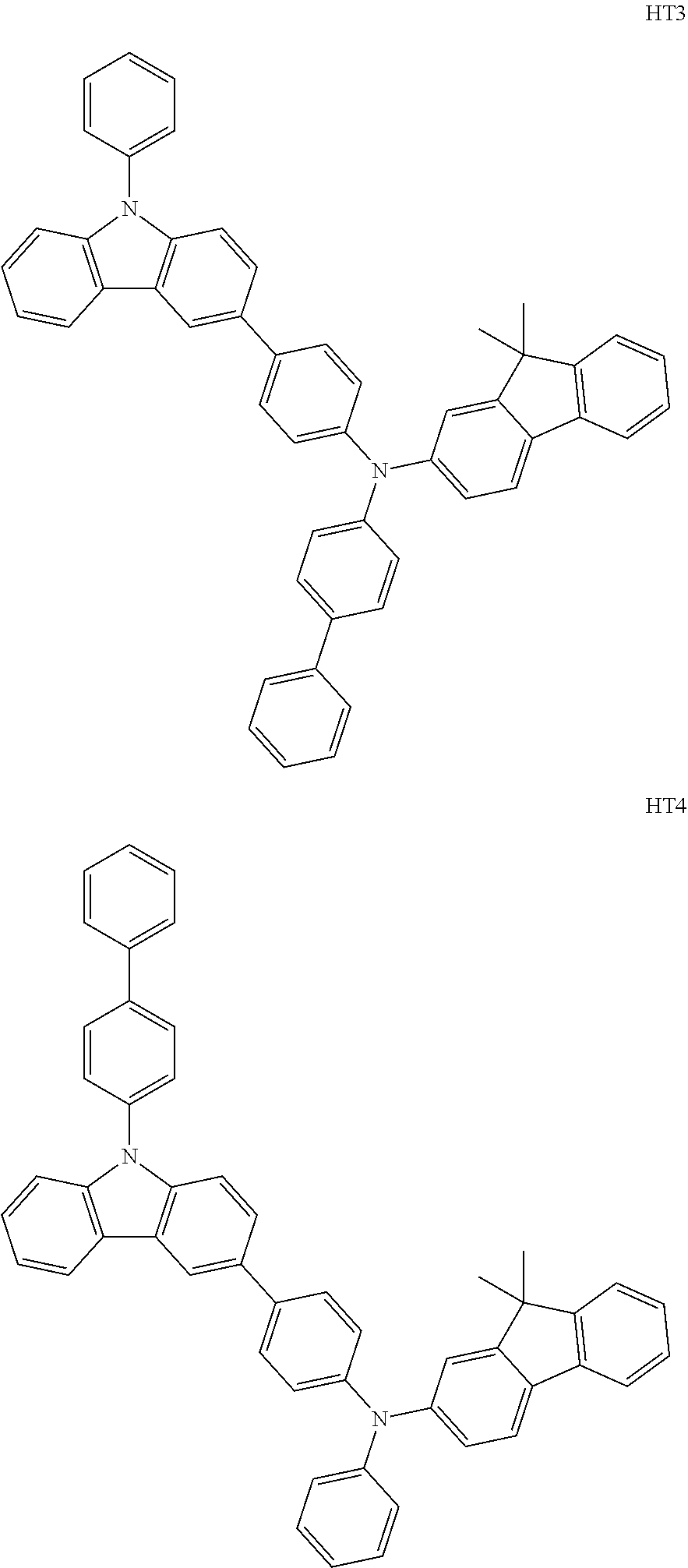
C00014
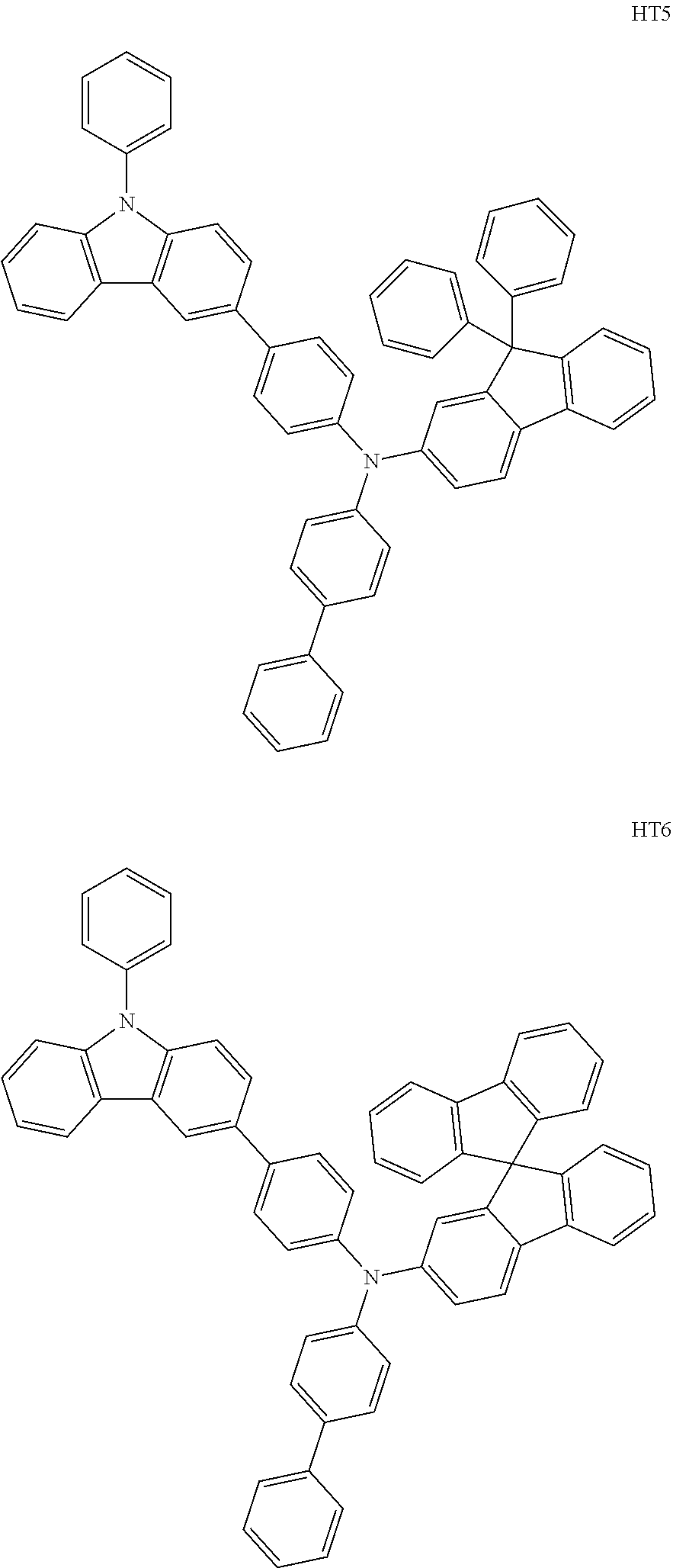
C00015
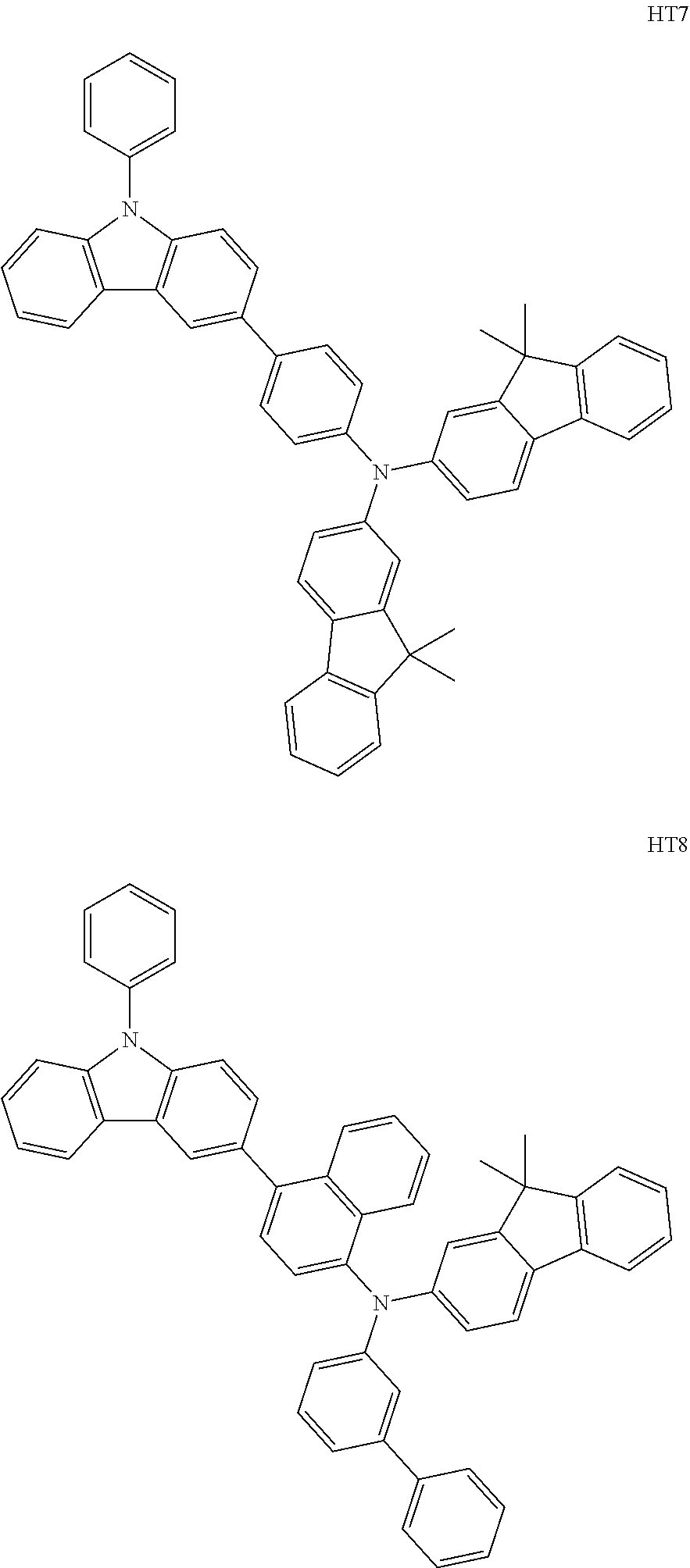
C00016
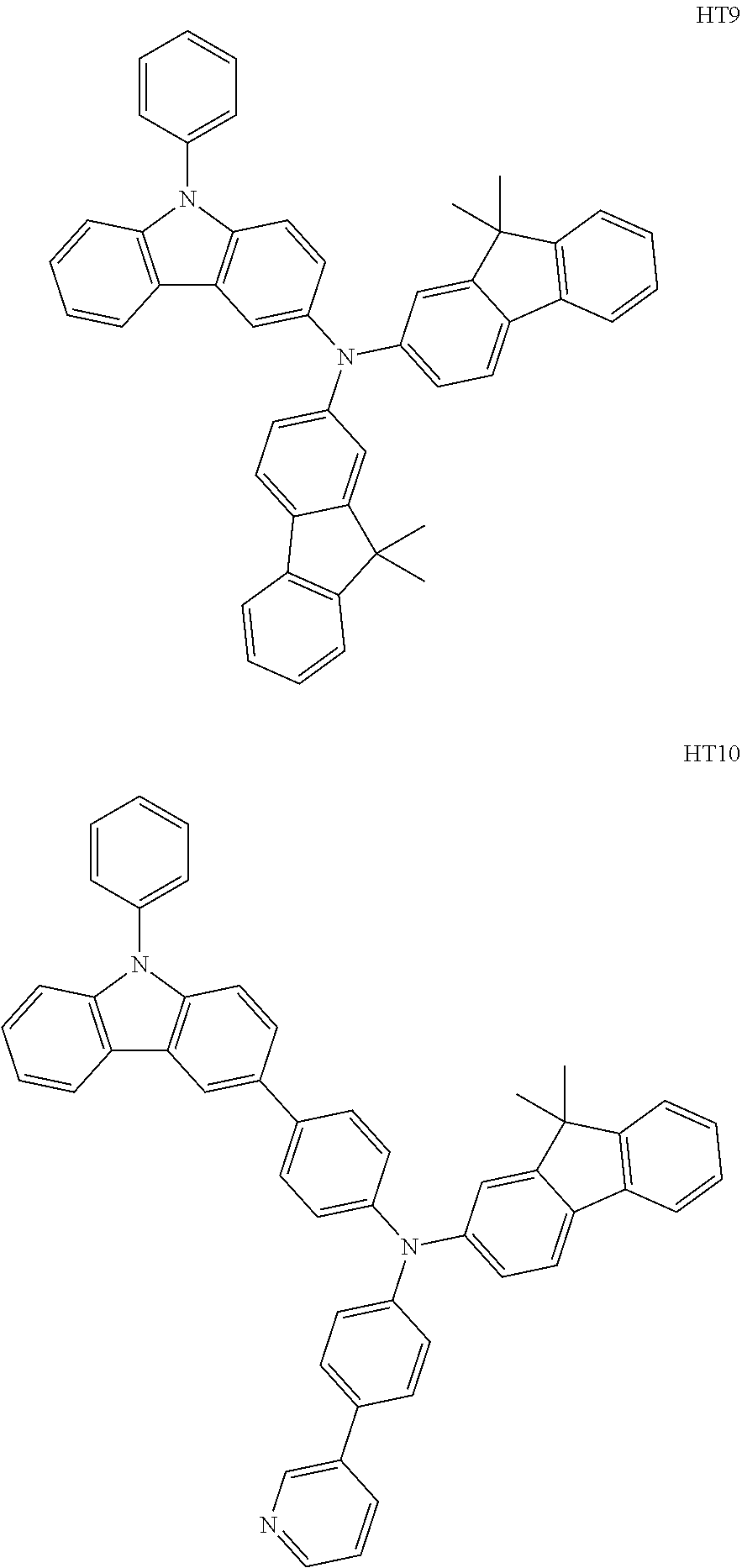
C00017
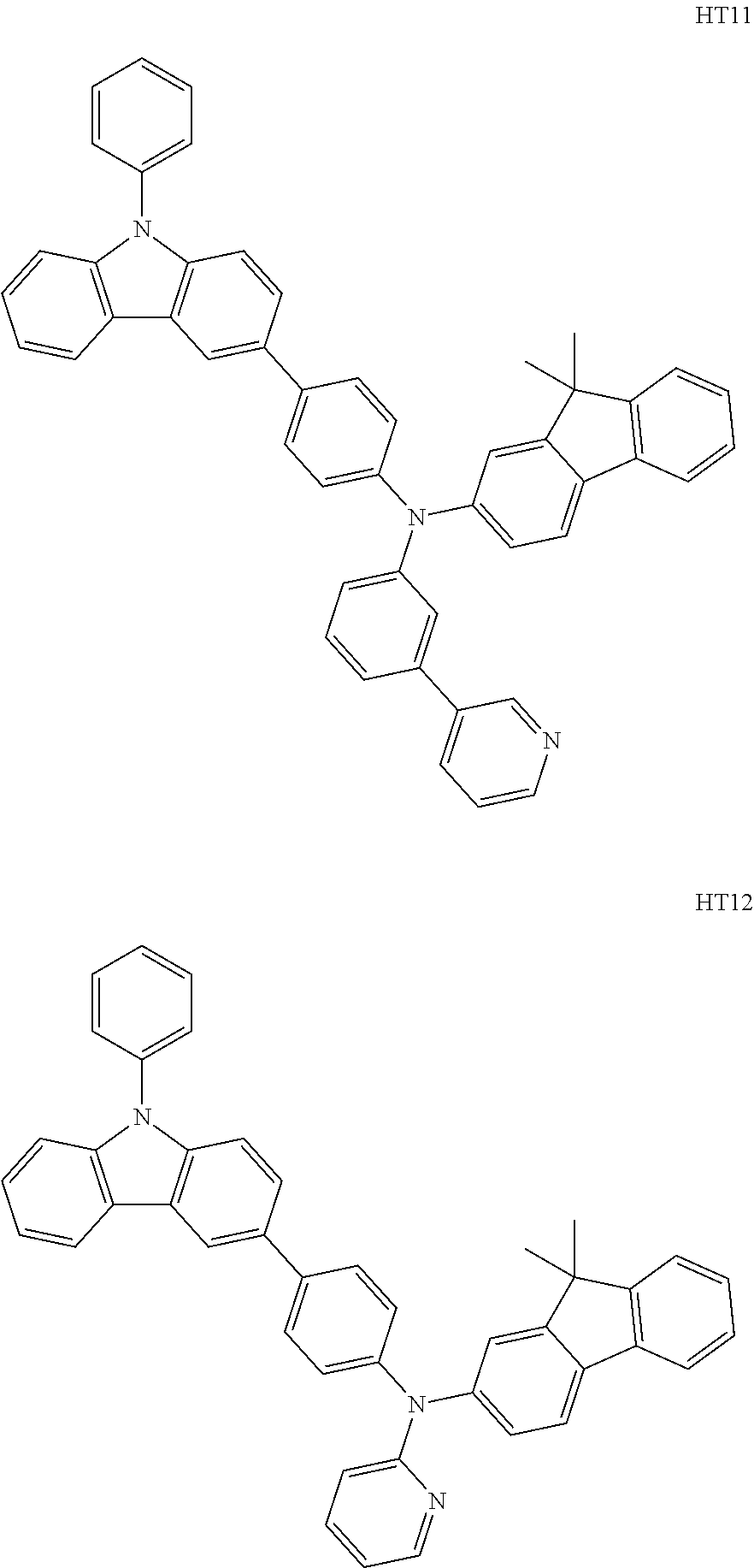
C00018
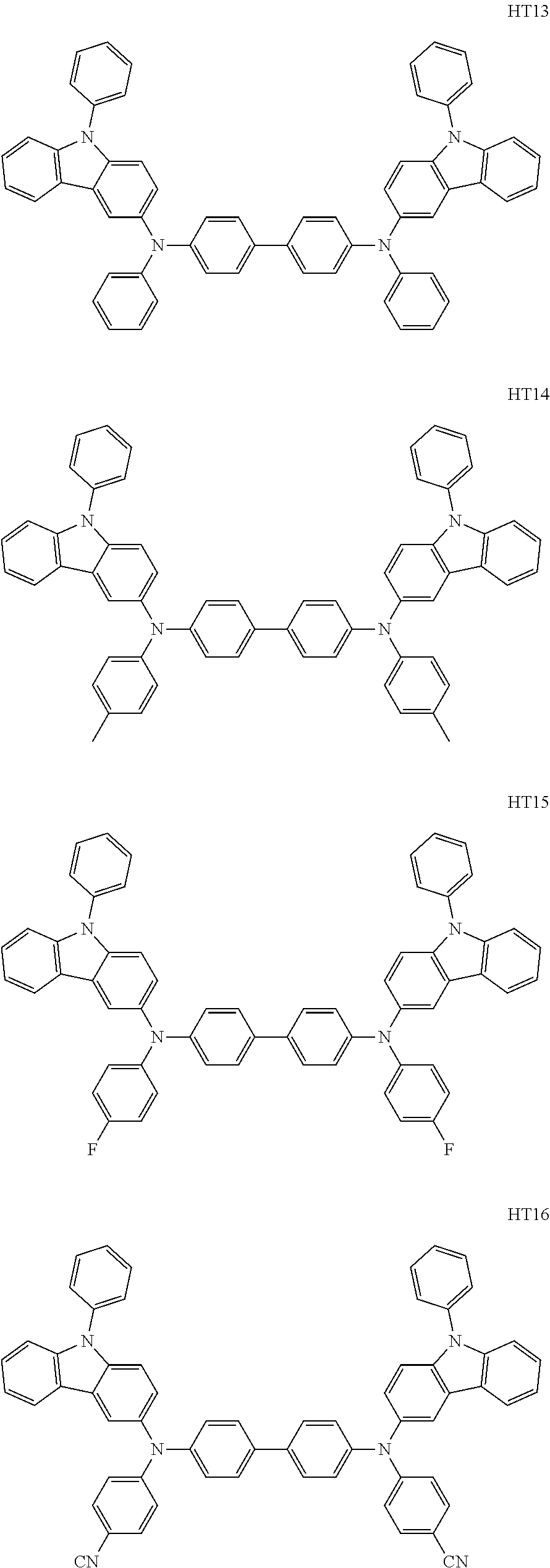
C00019
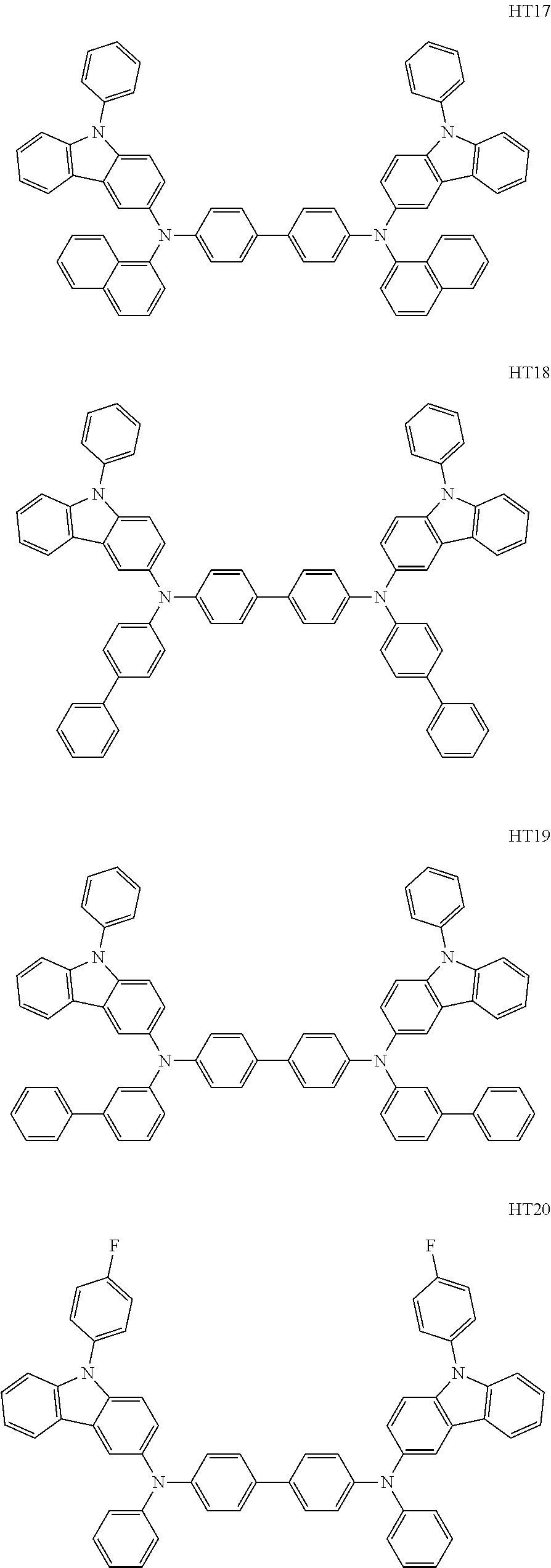
C00020
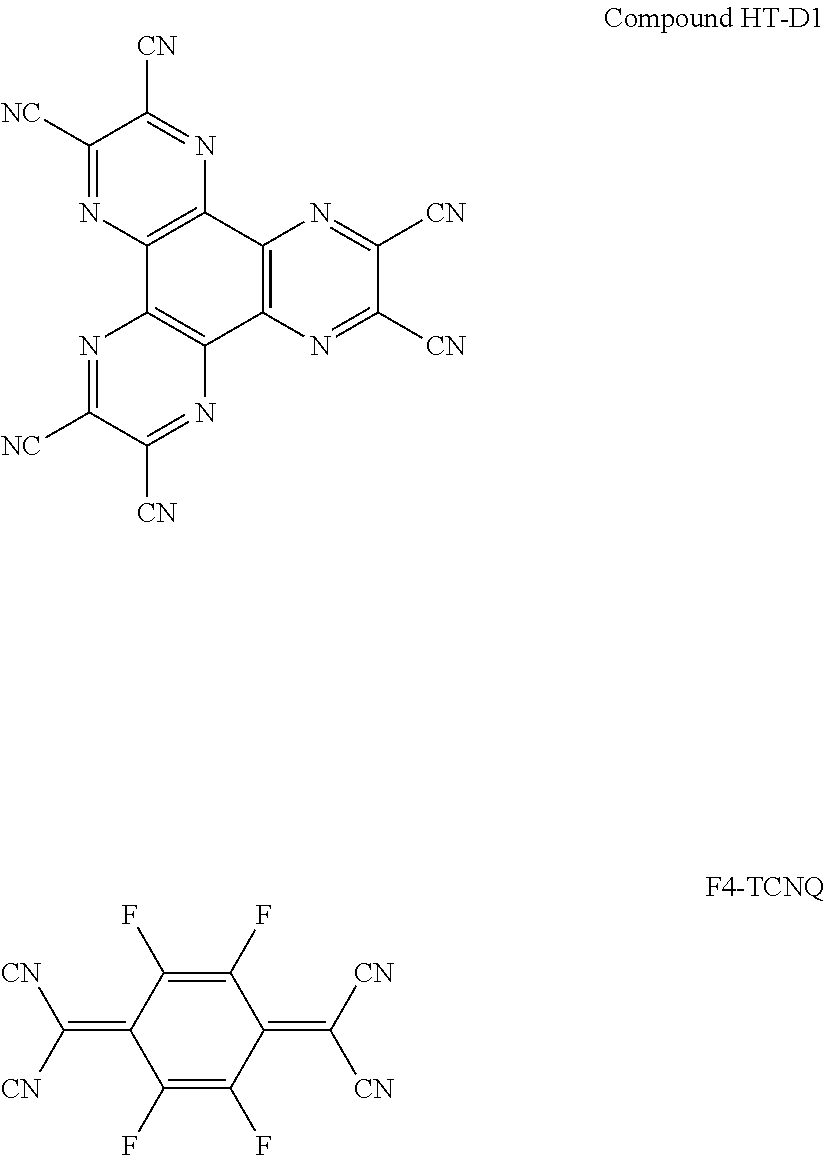
C00021
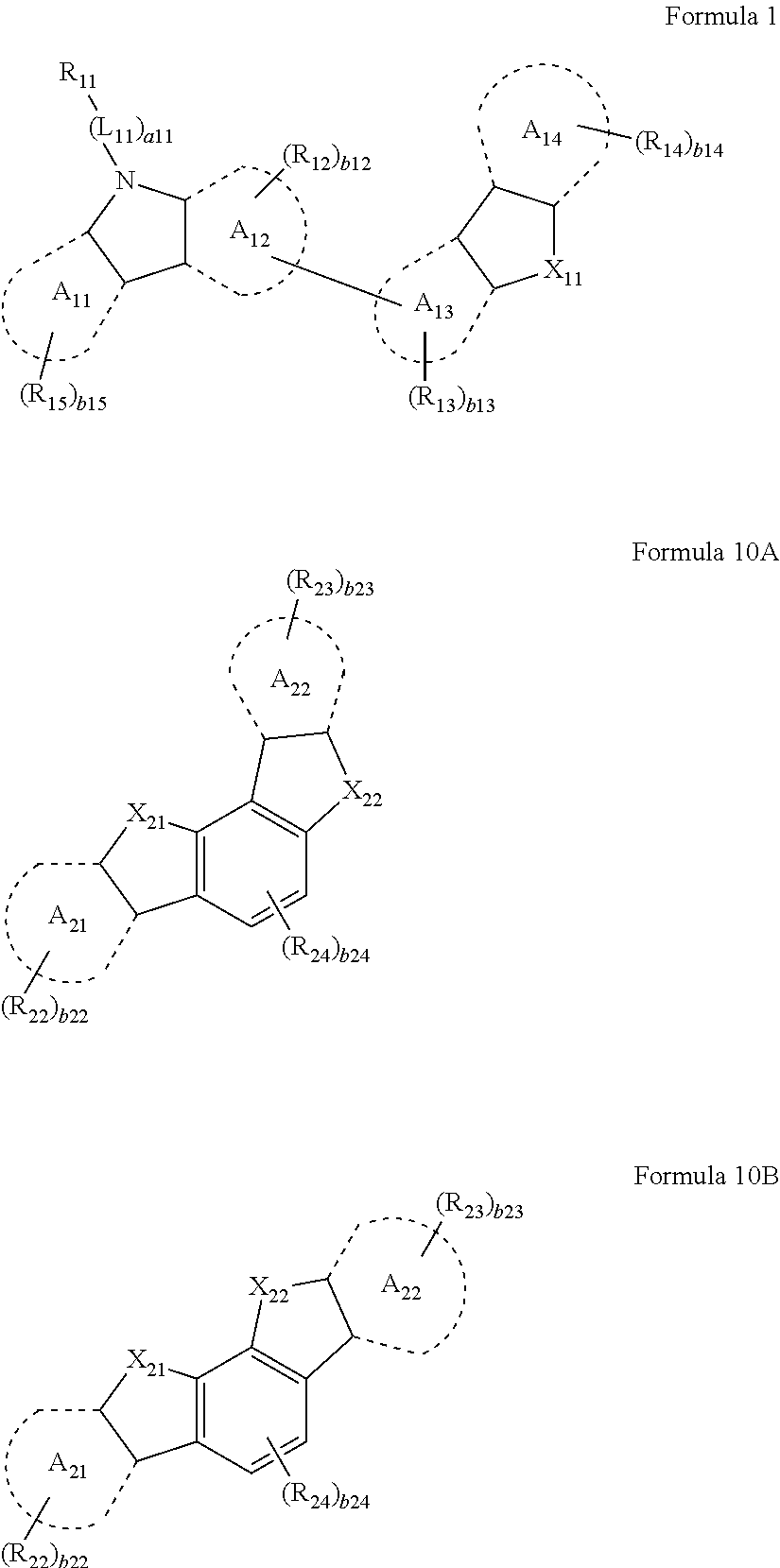
C00022
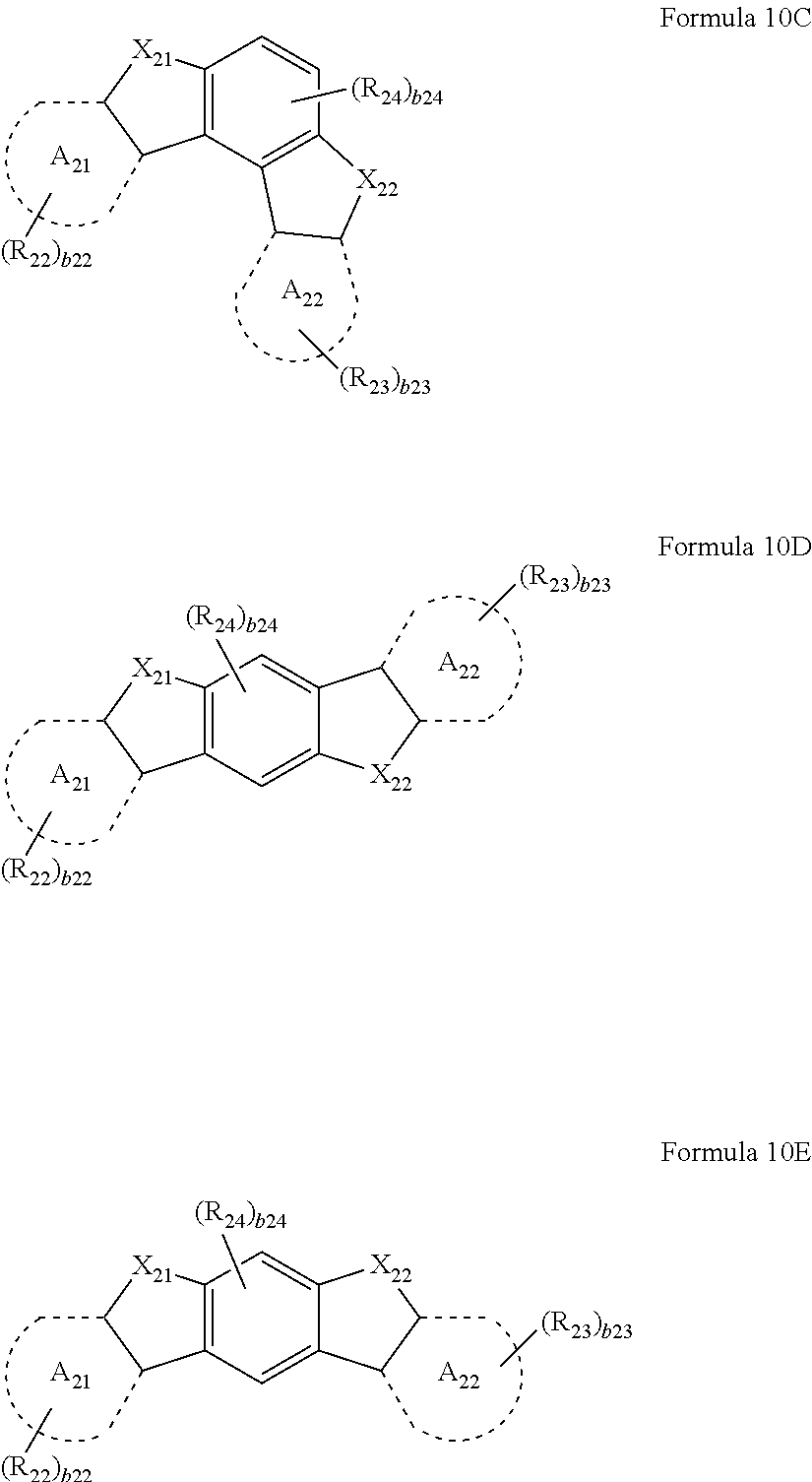
C00023

C00024

C00025
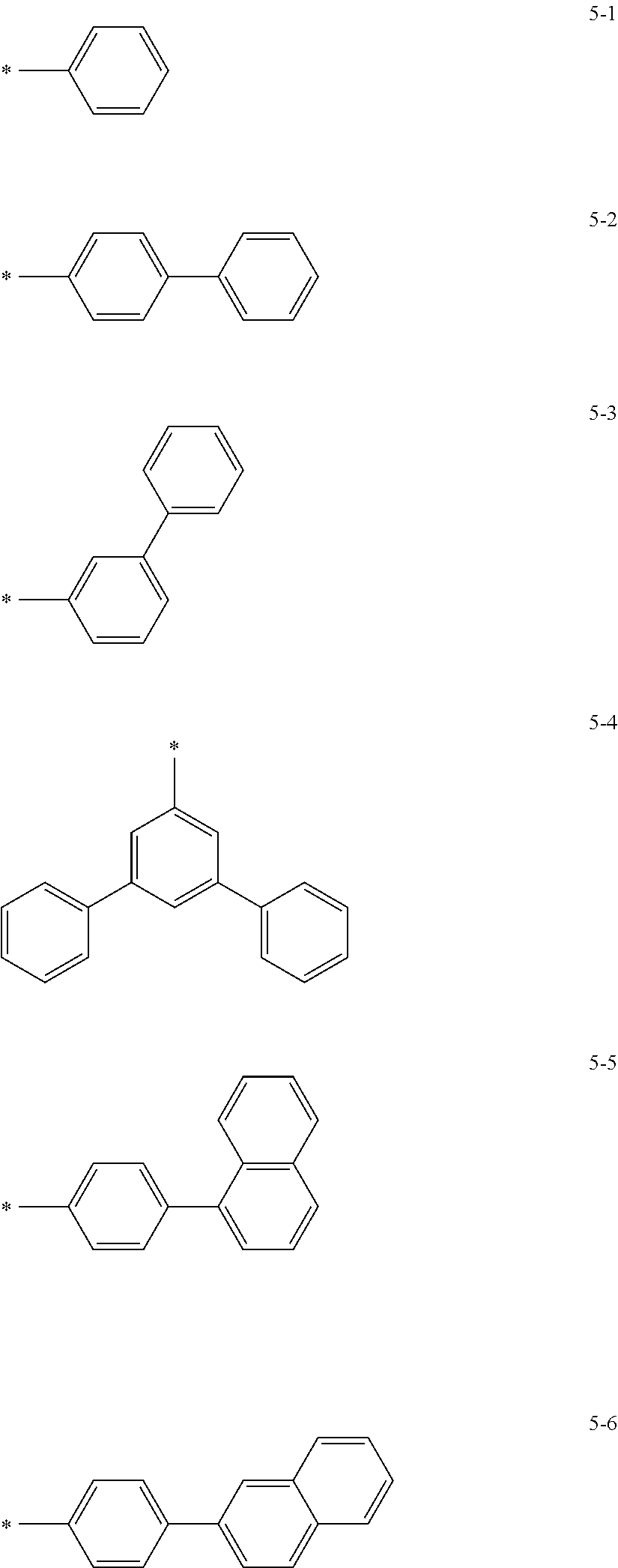
C00026

C00027
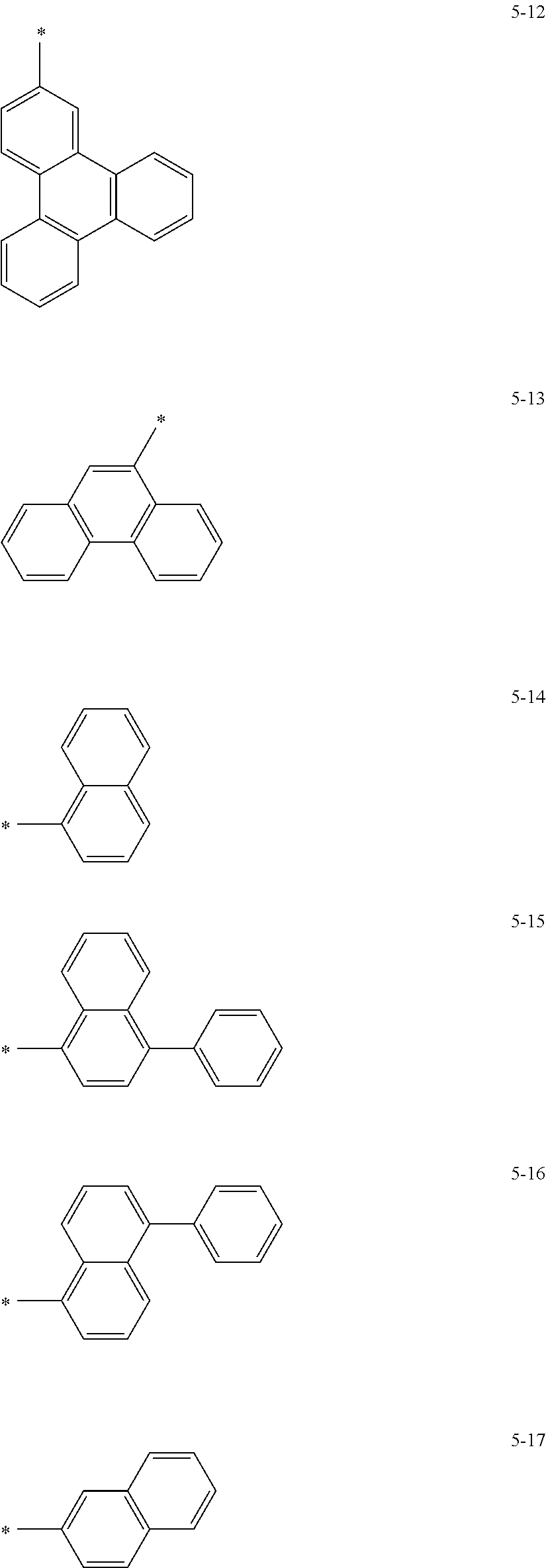
C00028
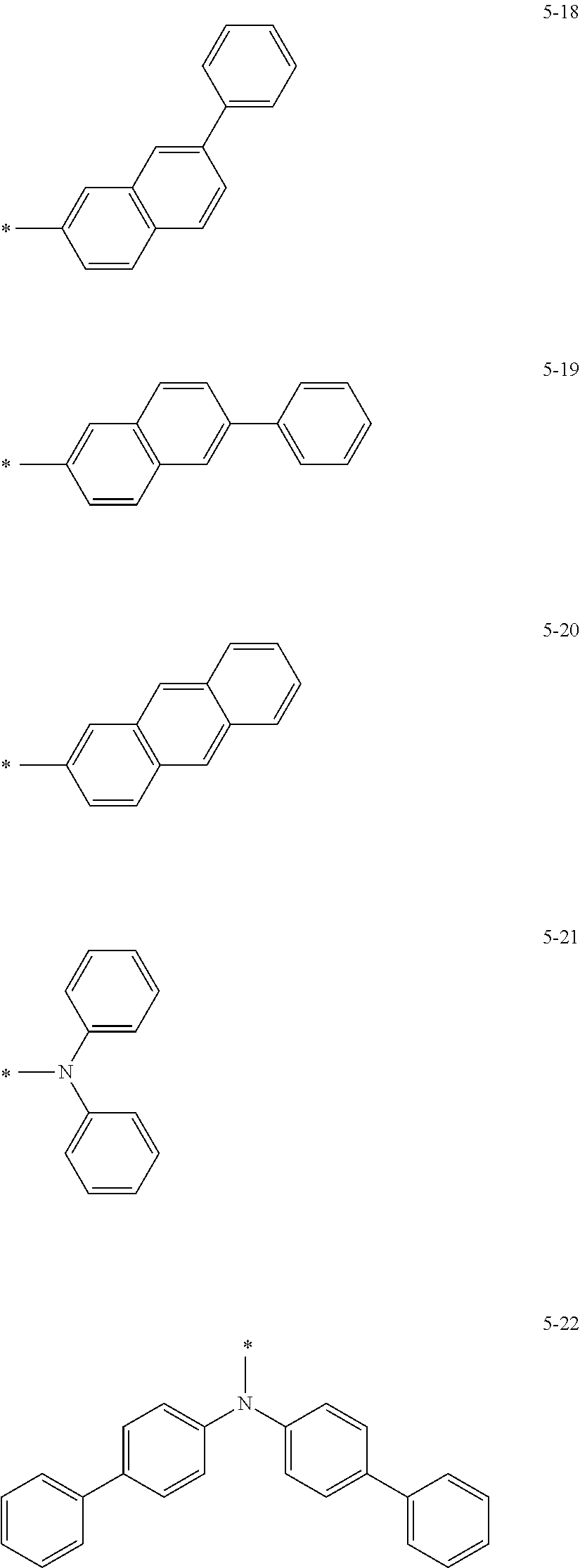
C00029
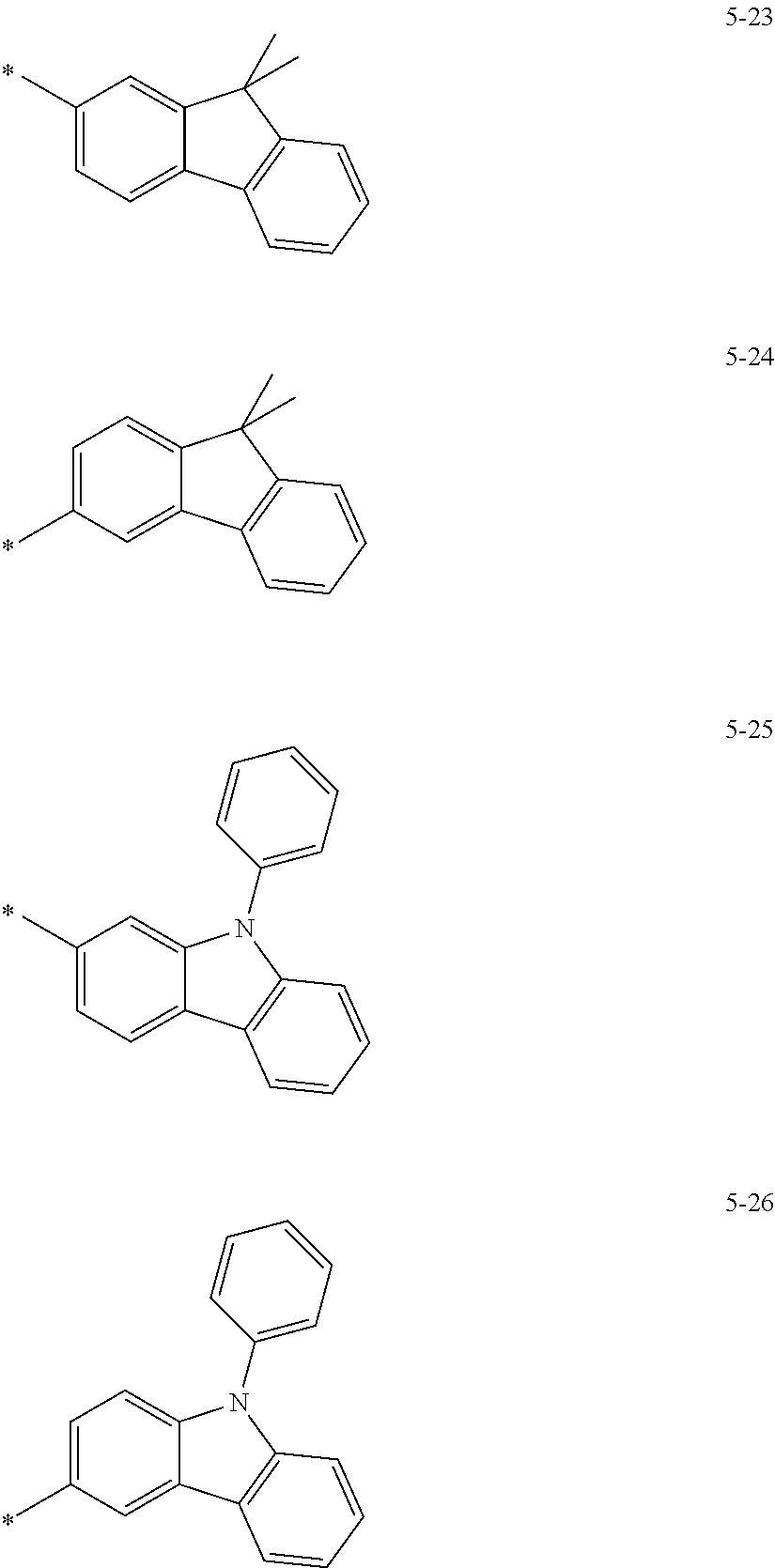
C00030
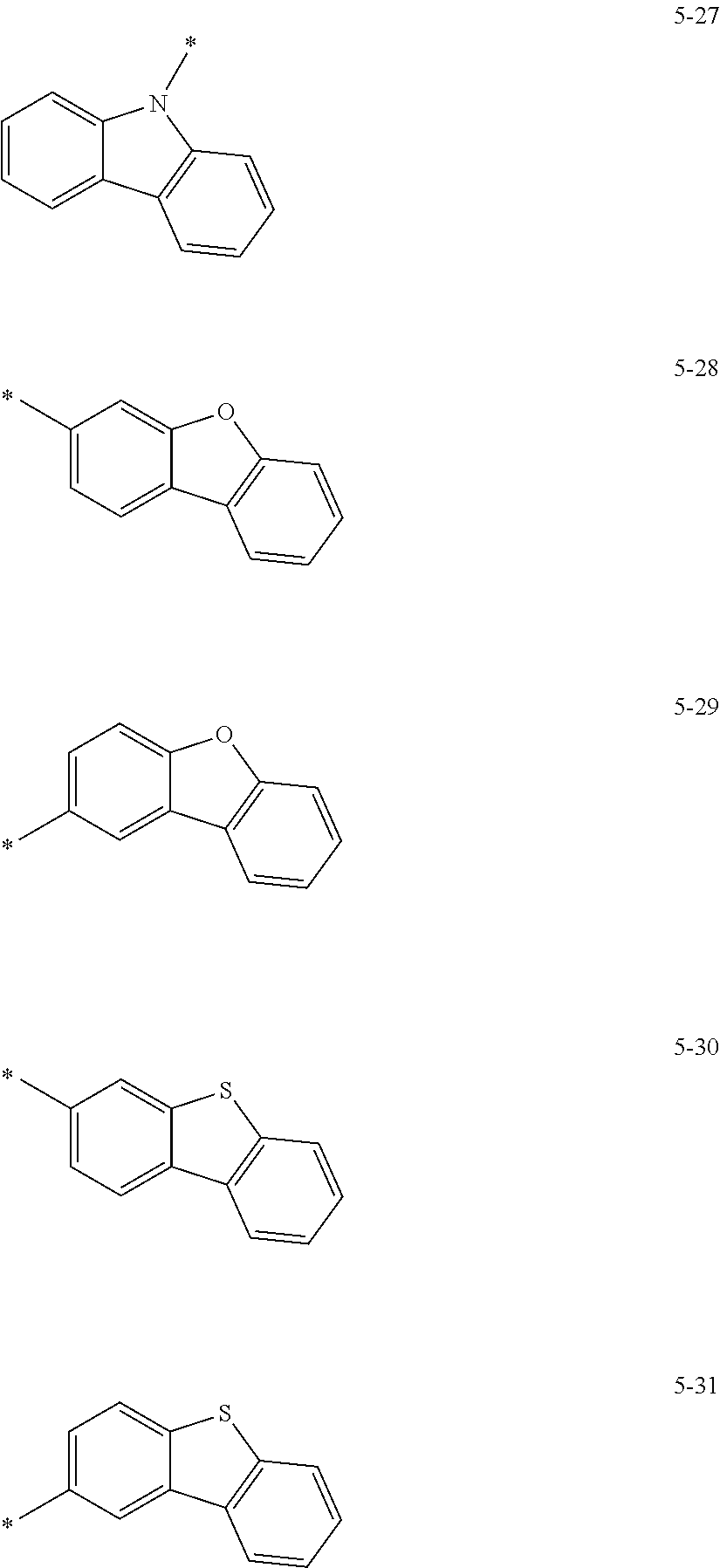
C00031
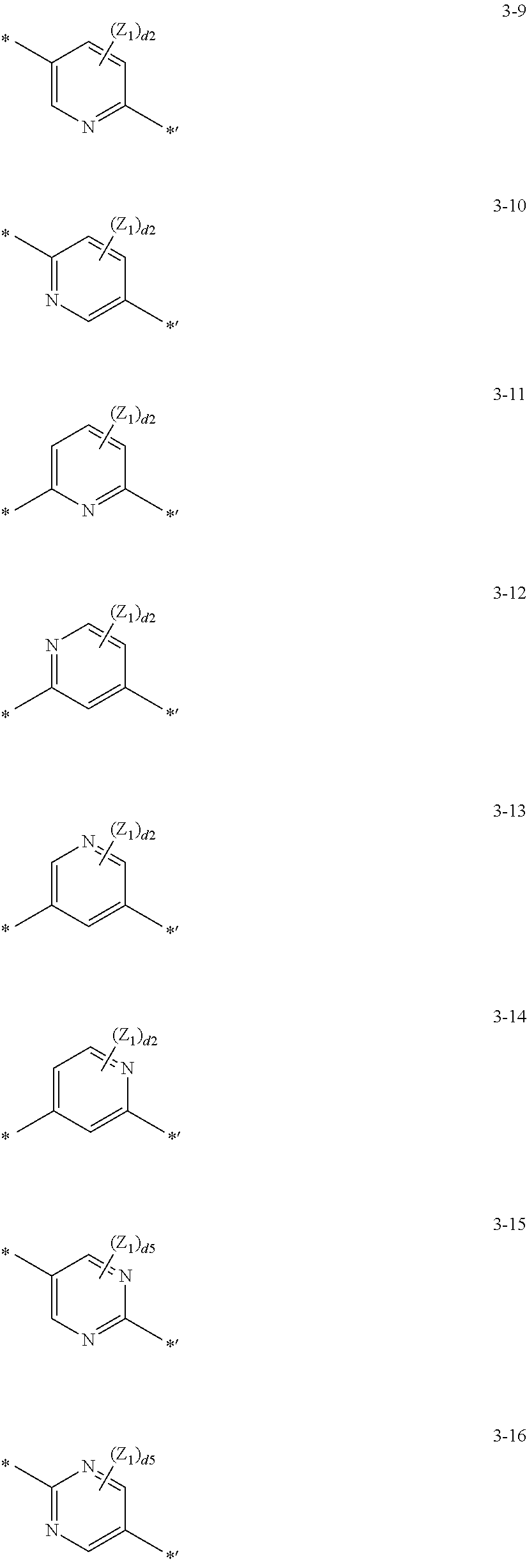
C00032
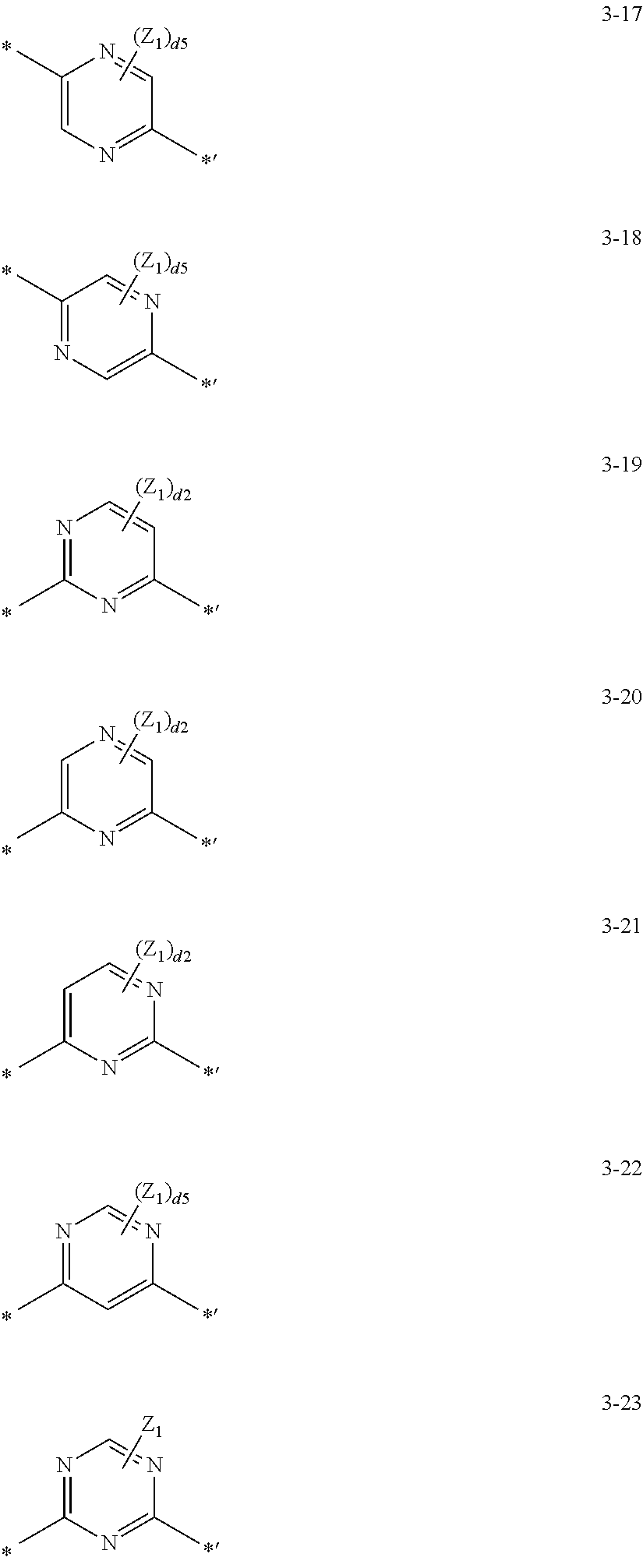
C00033
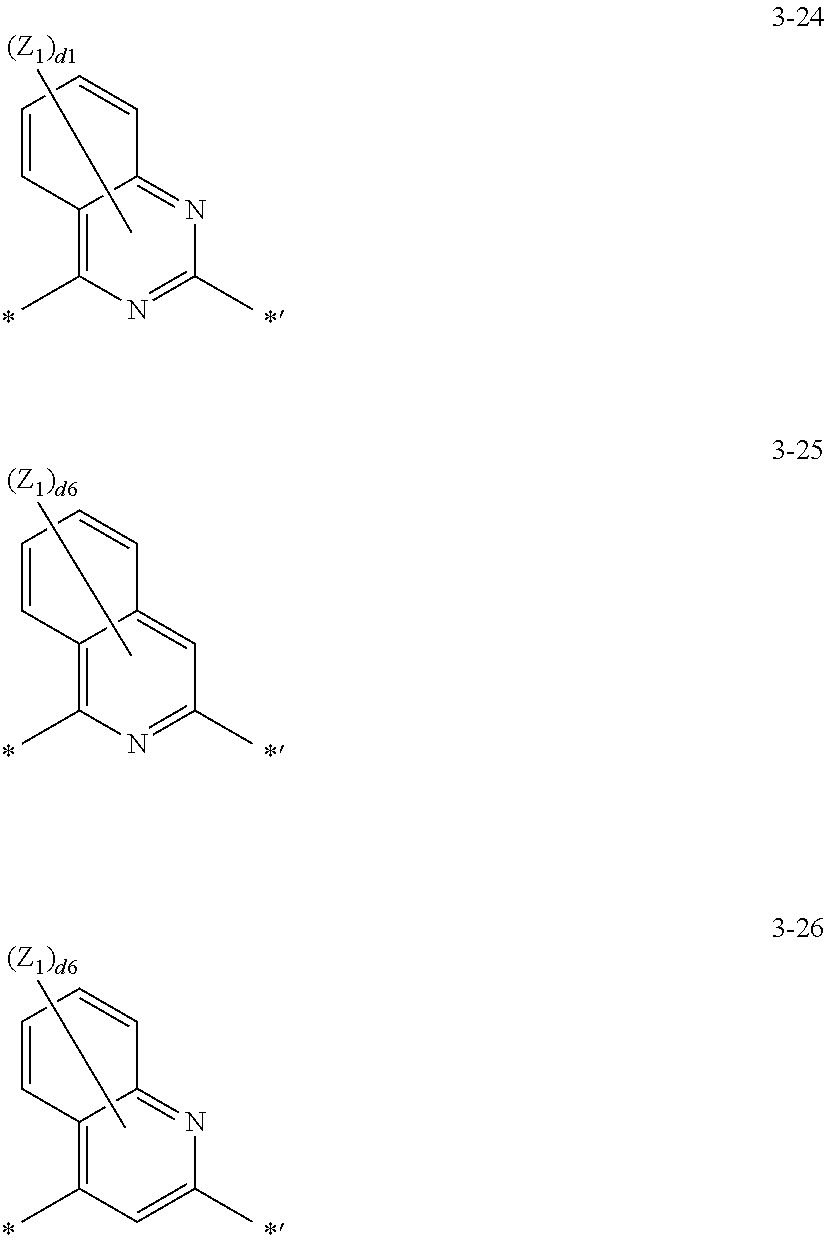
C00034
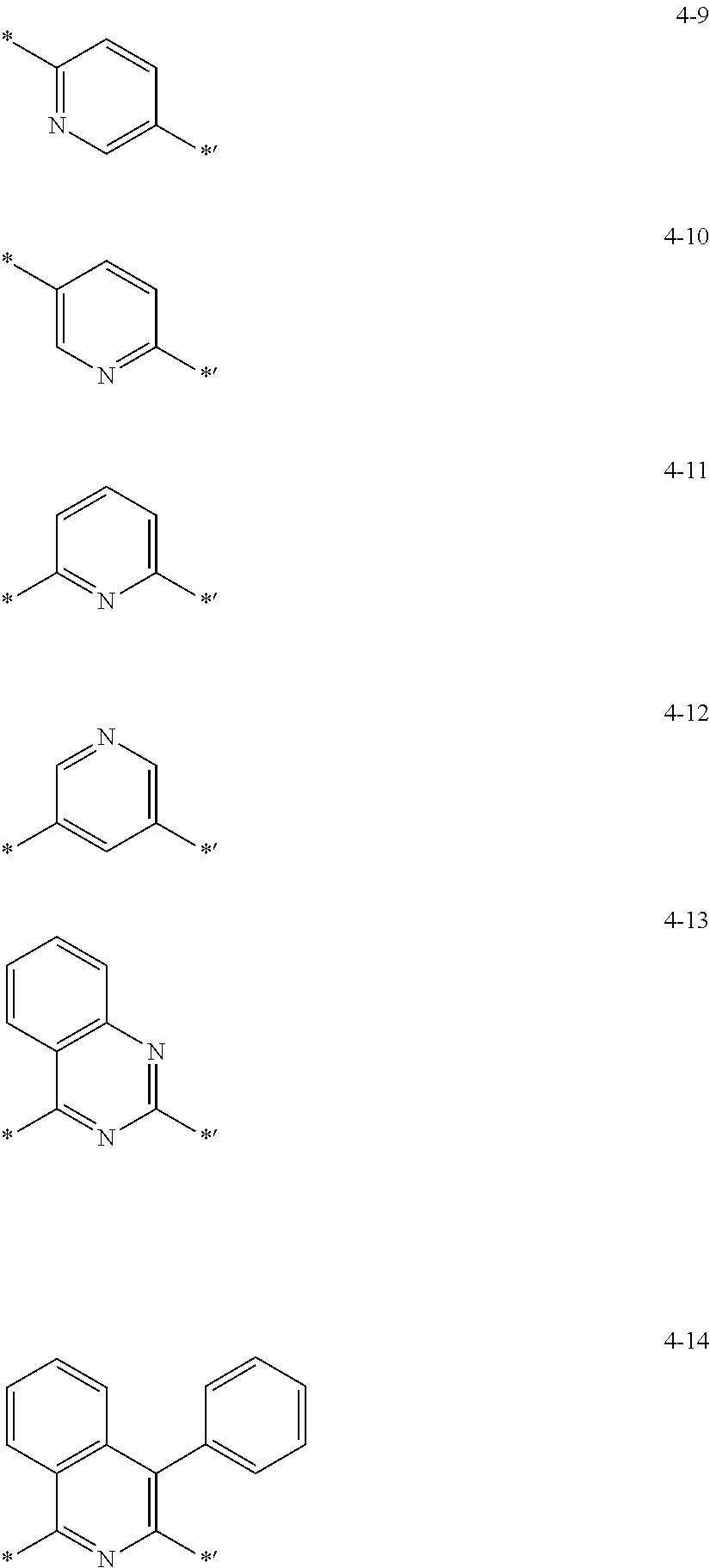
C00035
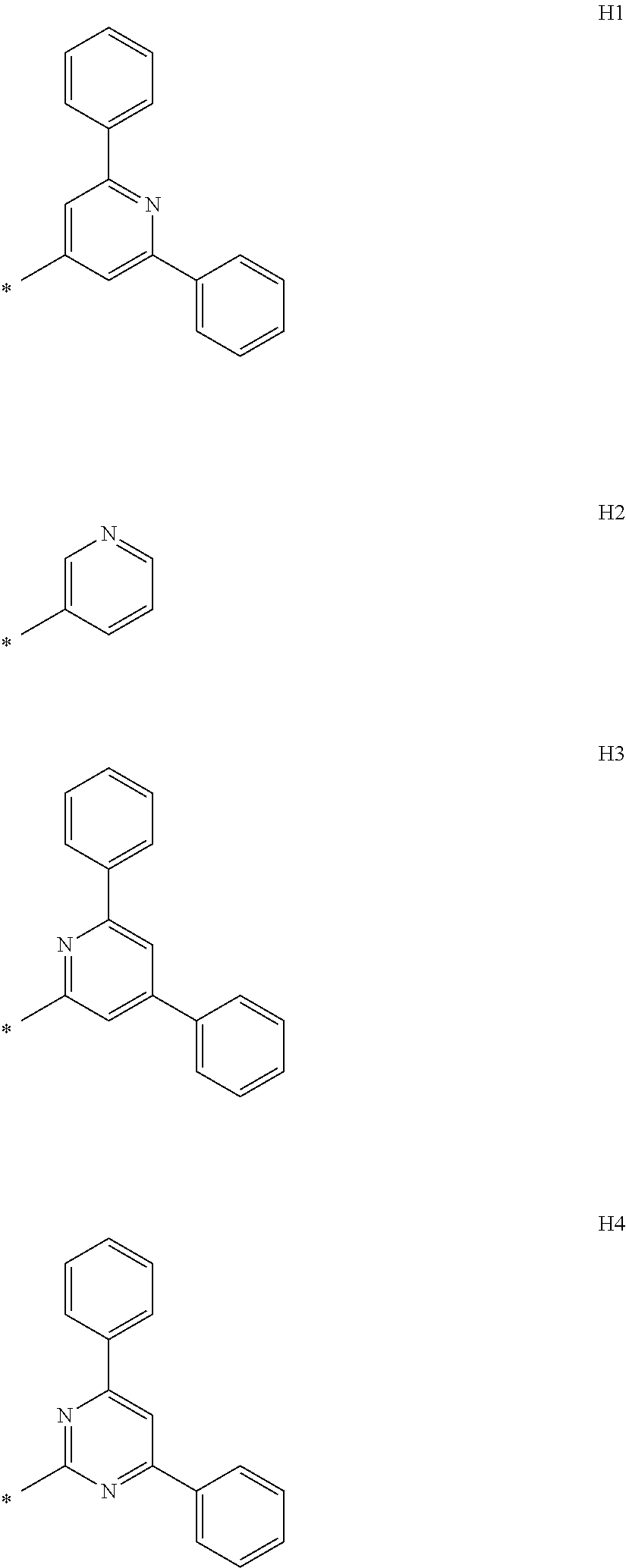
C00036

C00037
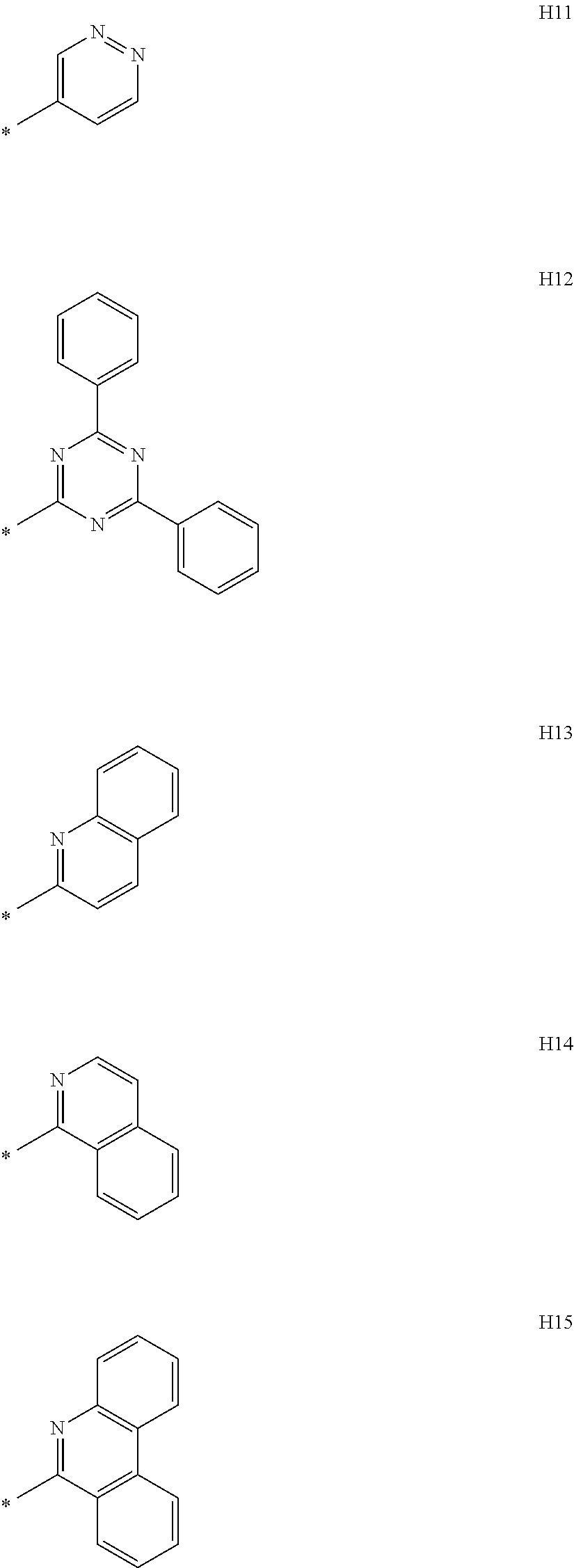
C00038
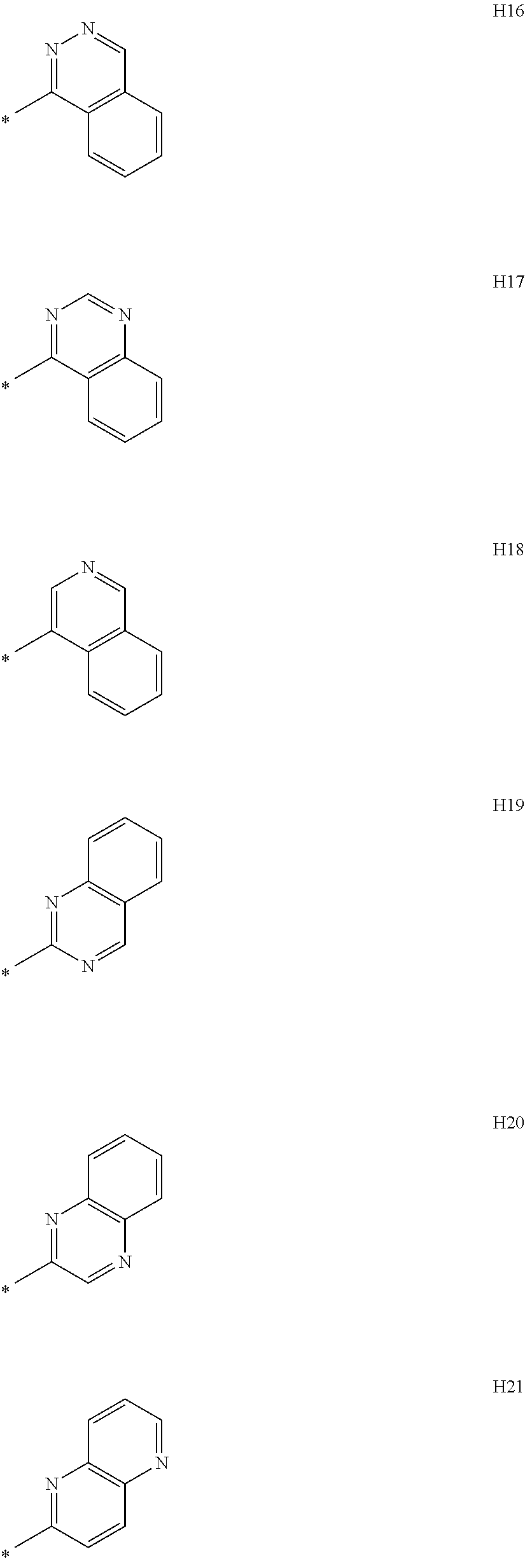
C00039
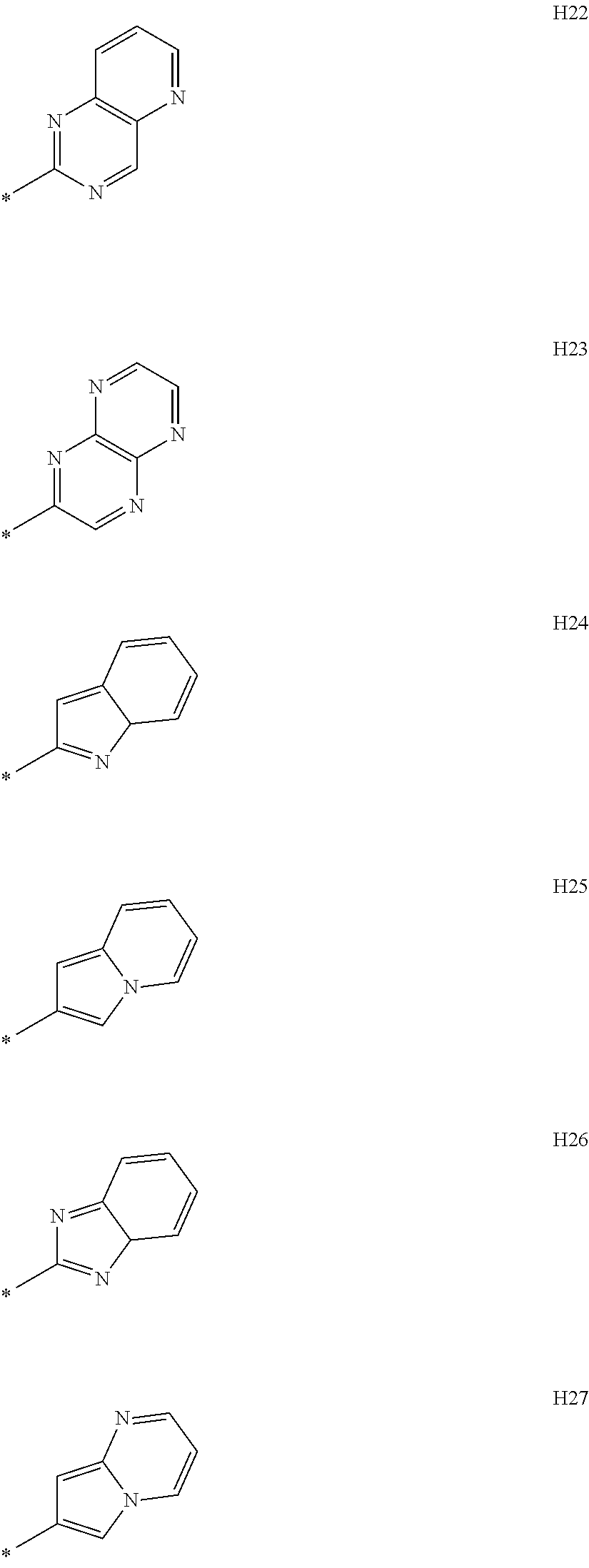
C00040
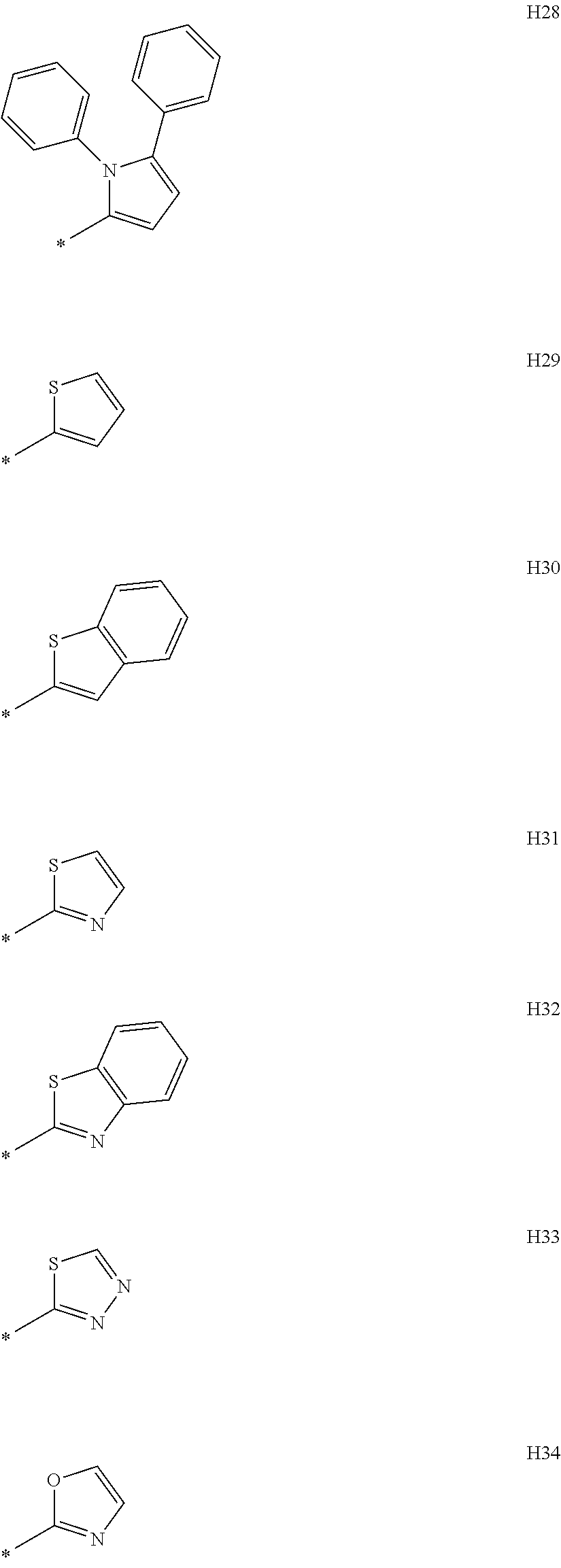
C00041
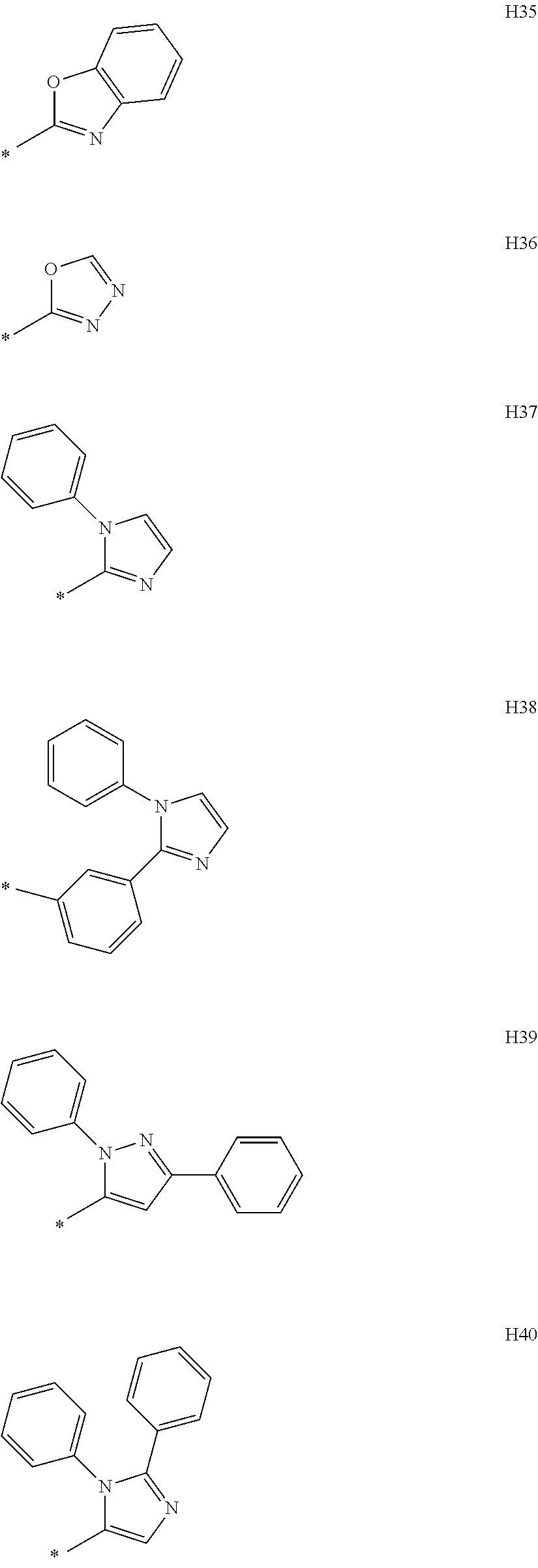
C00042
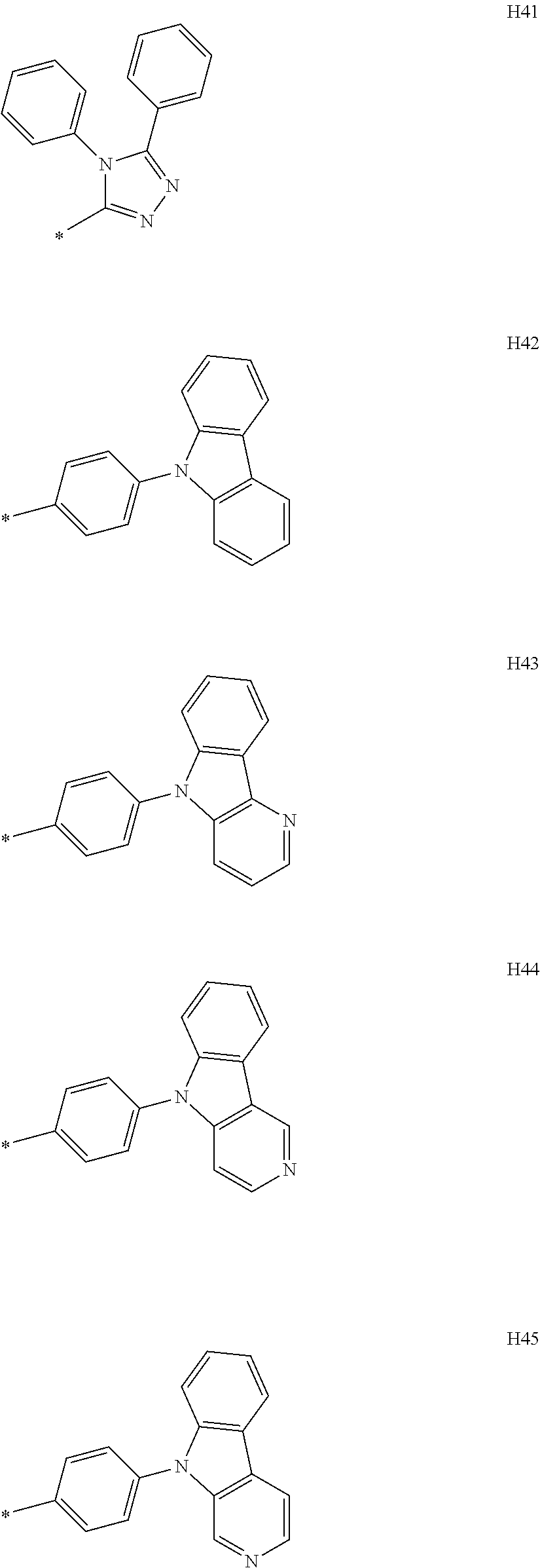
C00043
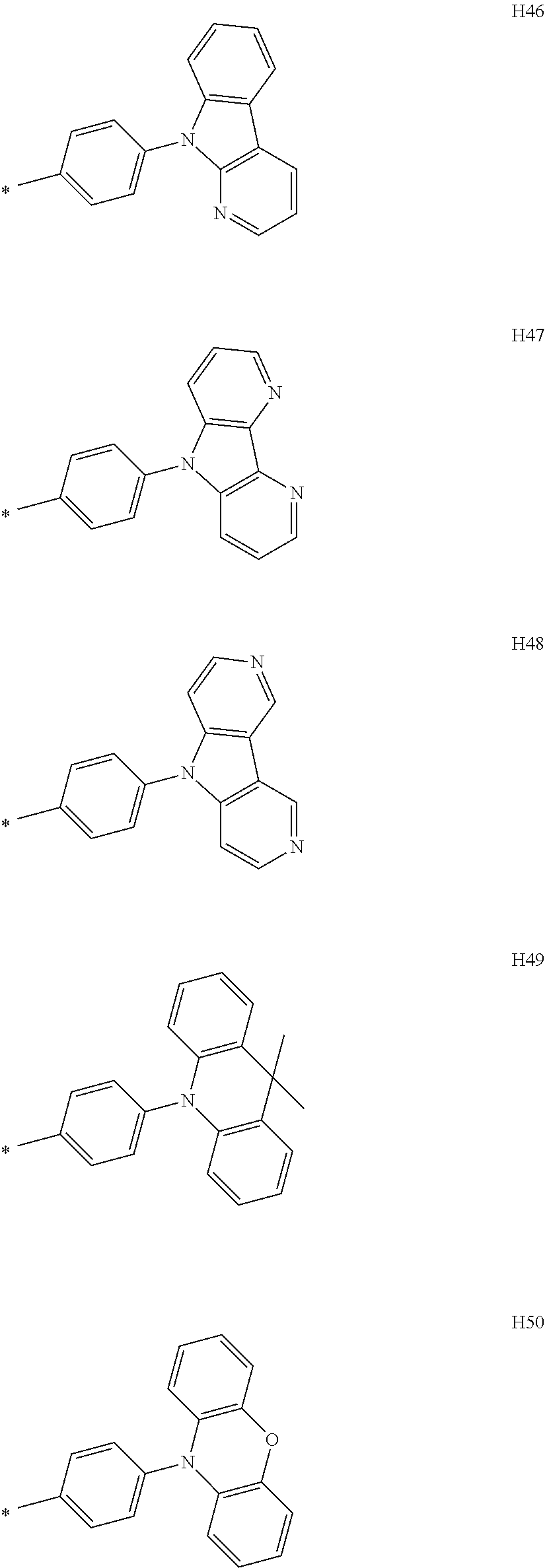
C00044

C00045
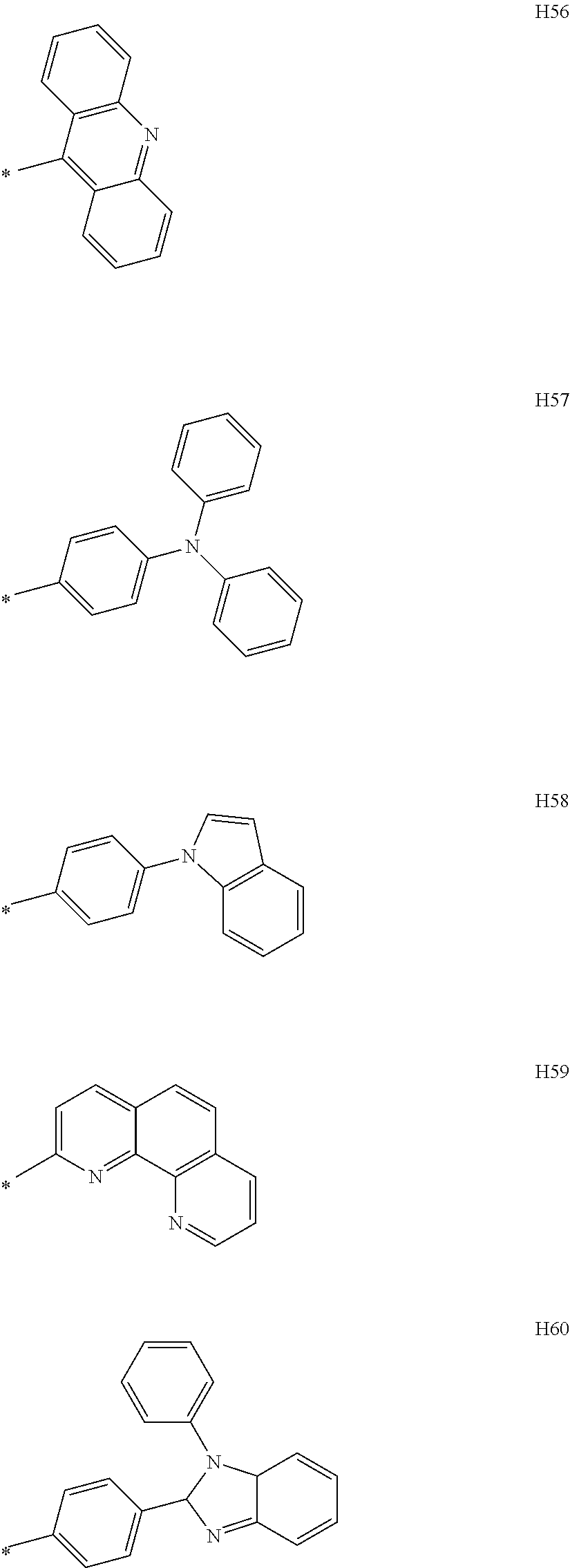
C00046

C00047
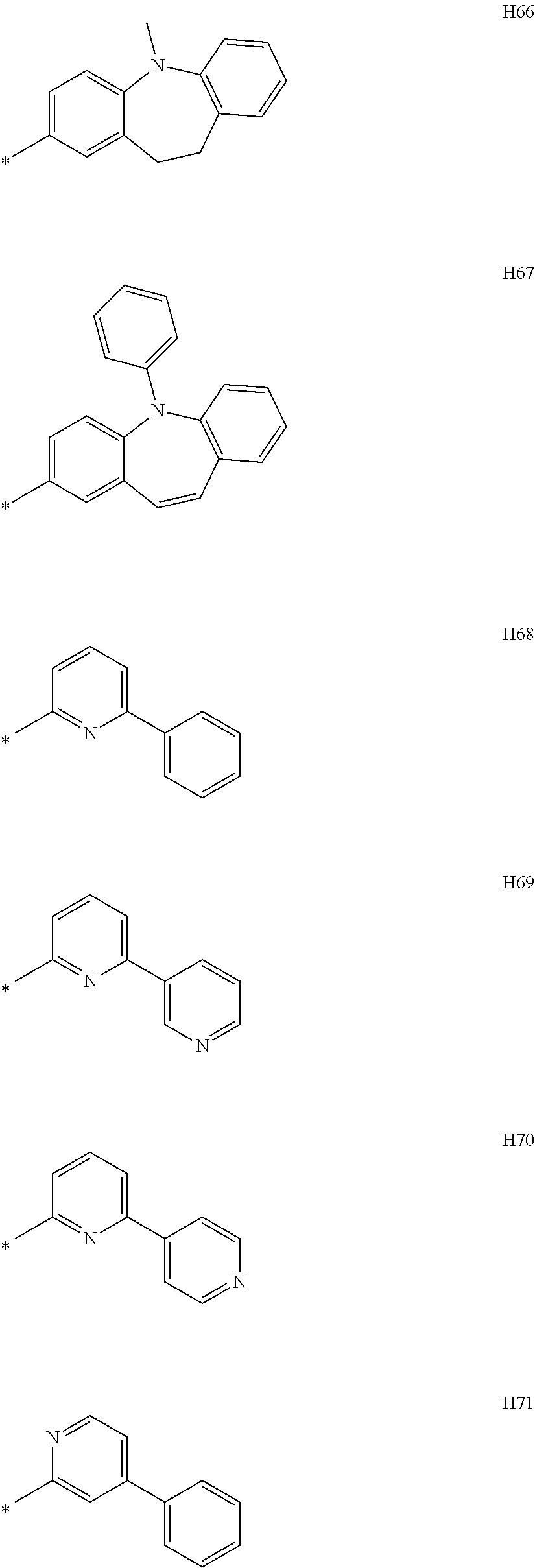
C00048
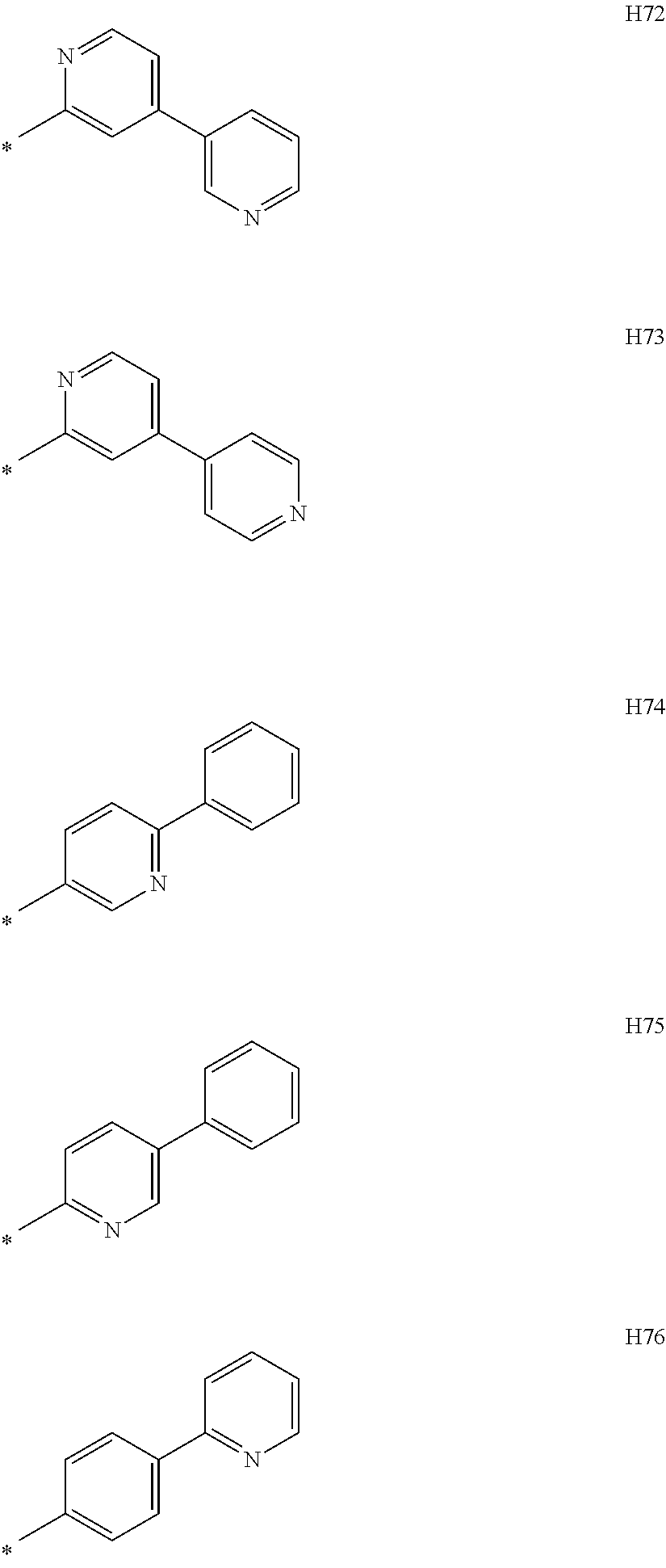
C00049
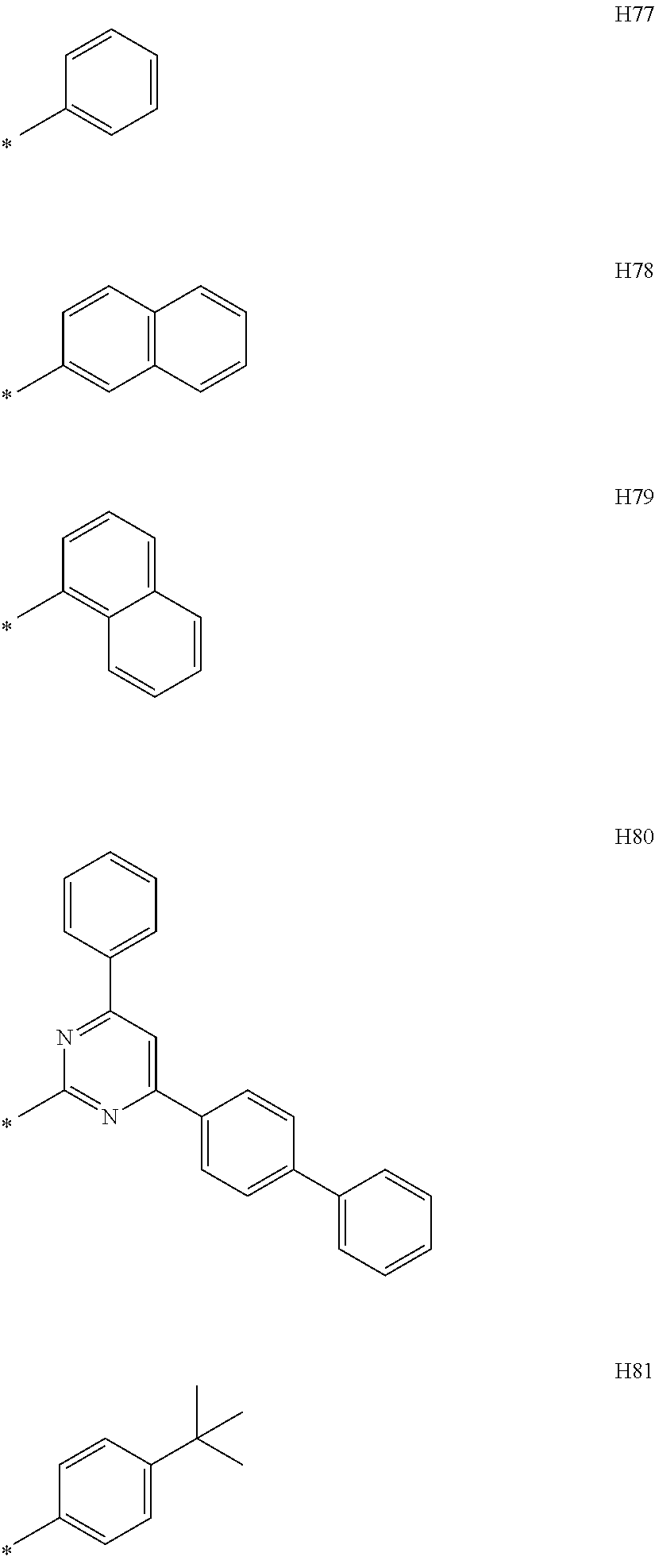
C00050
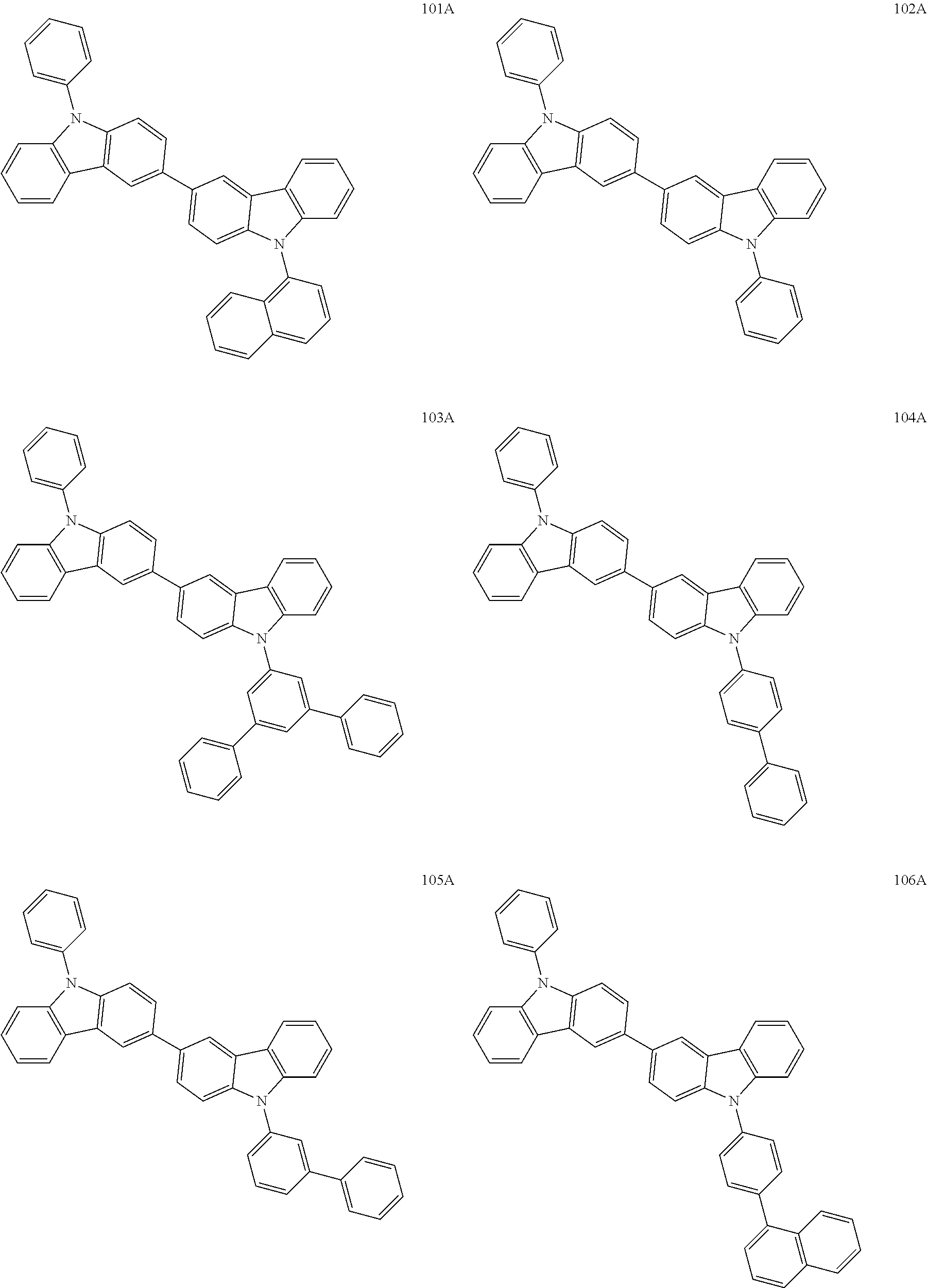
C00051
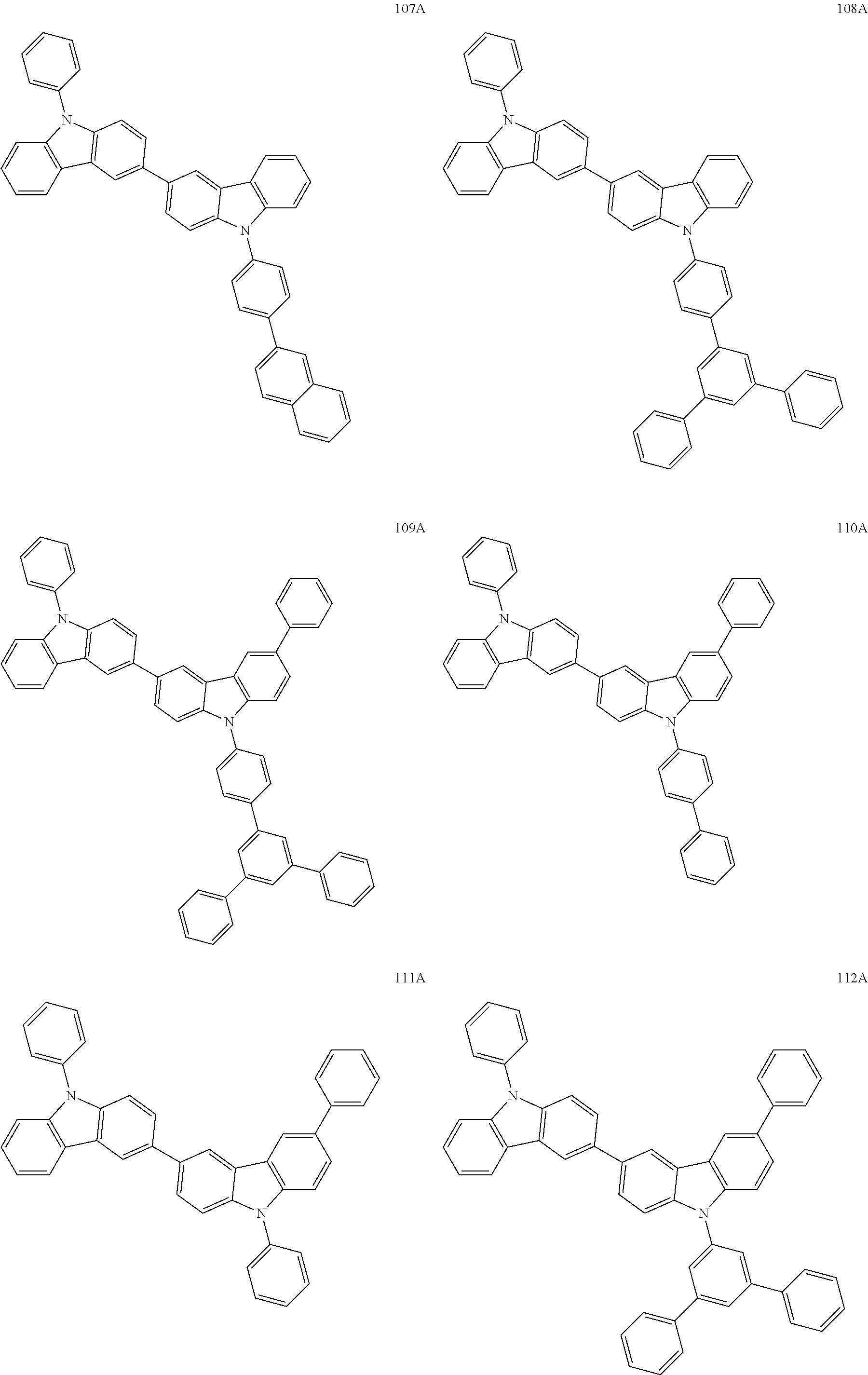
C00052
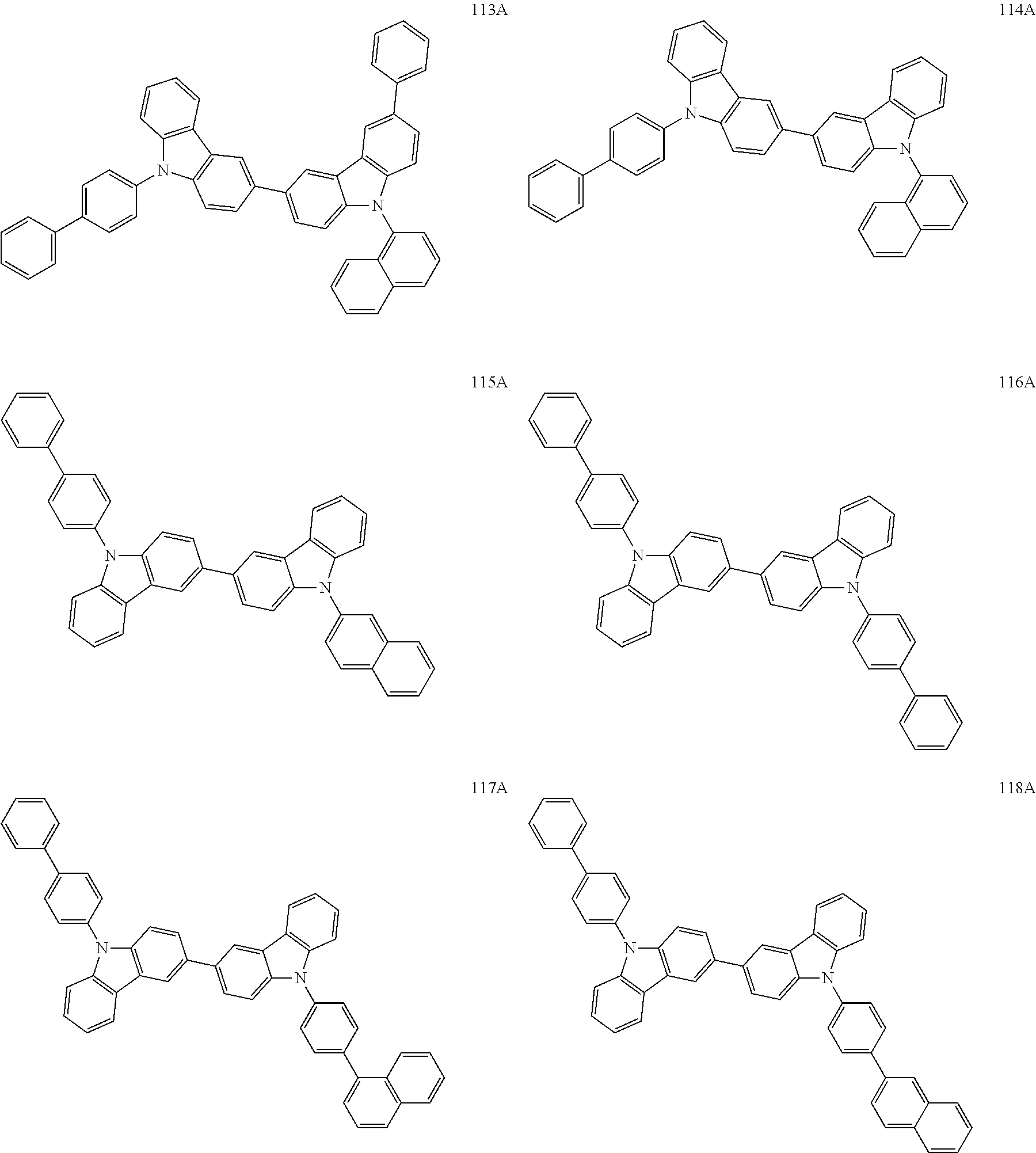
C00053
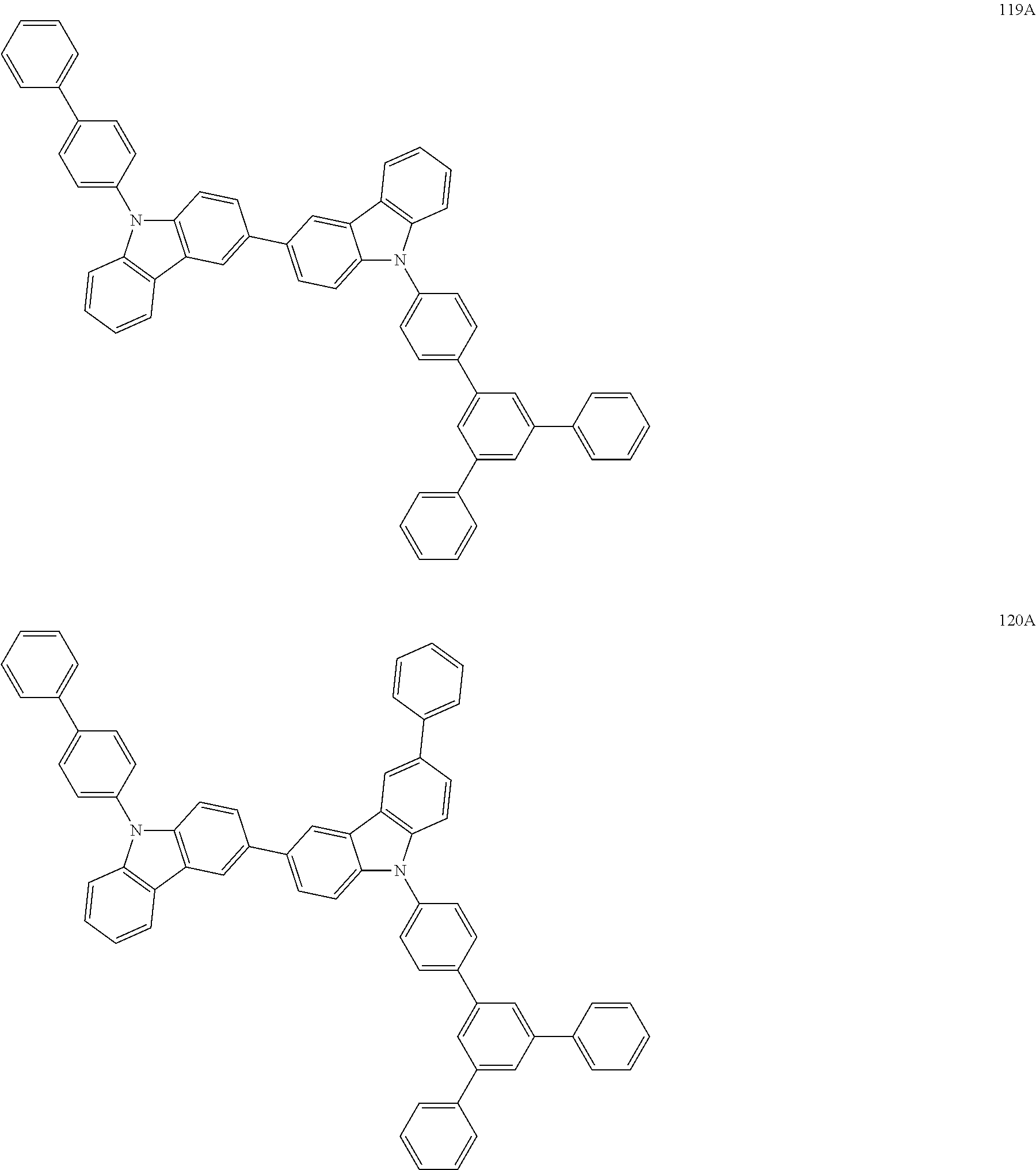
C00054
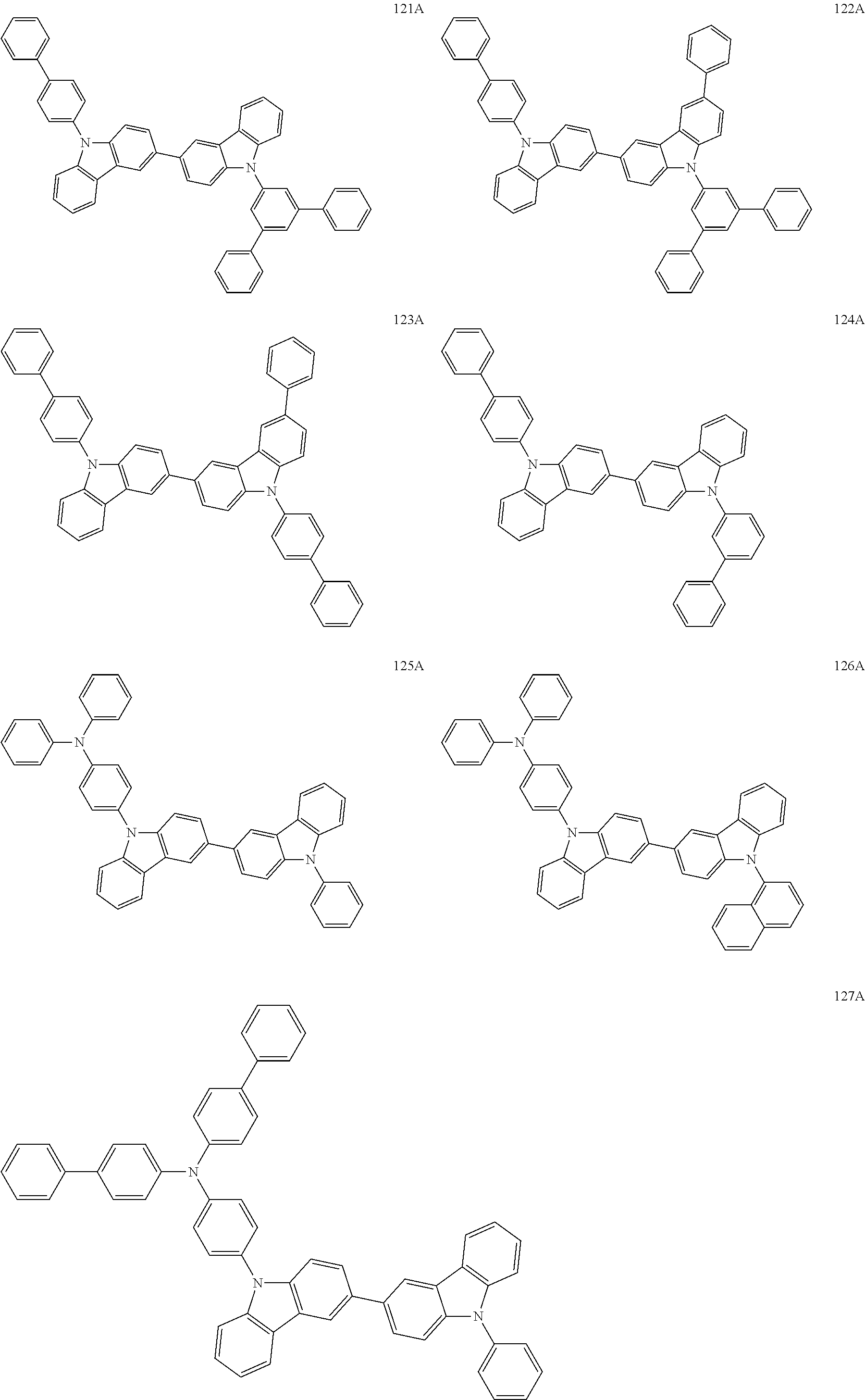
C00055
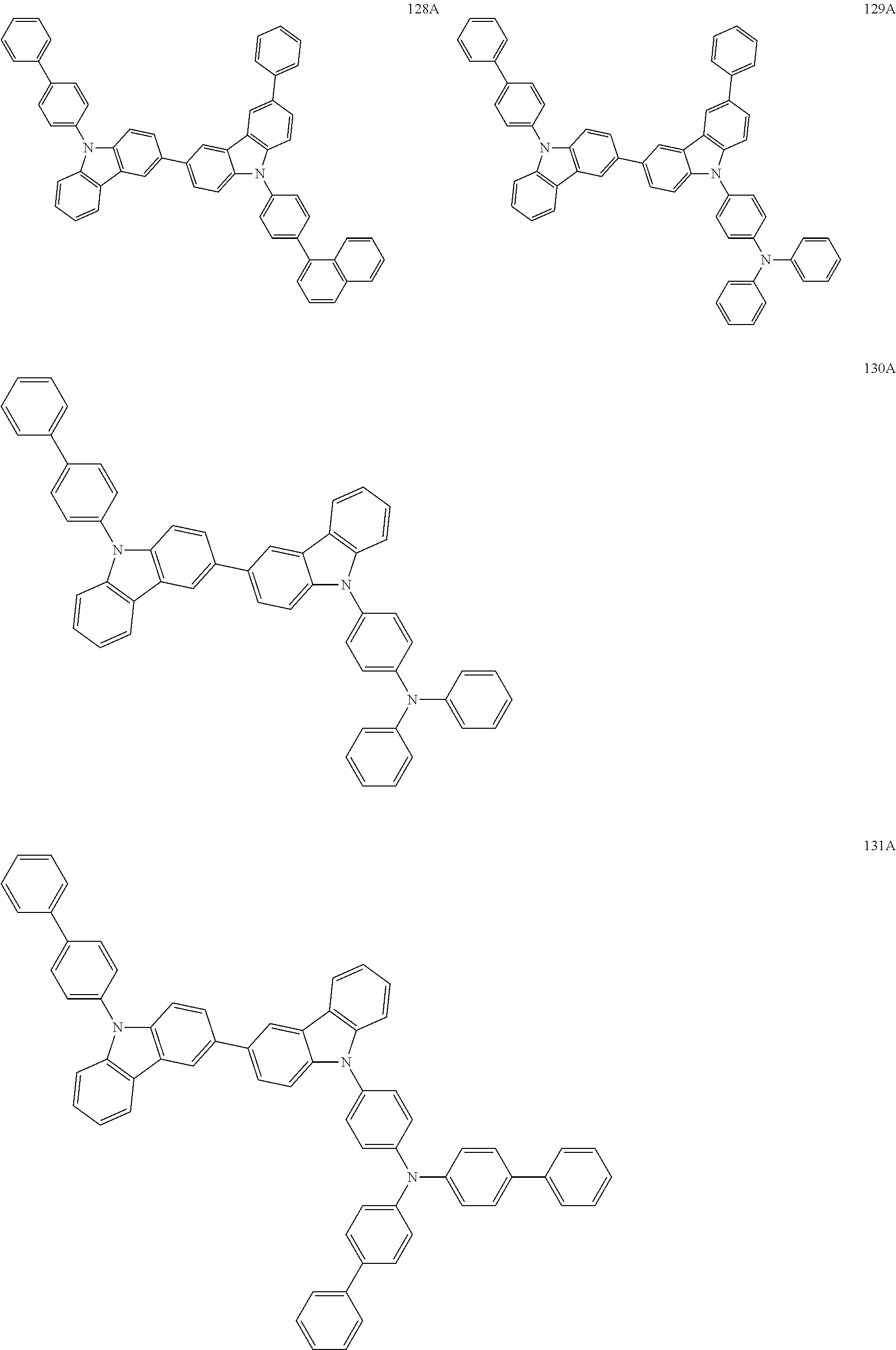
C00056
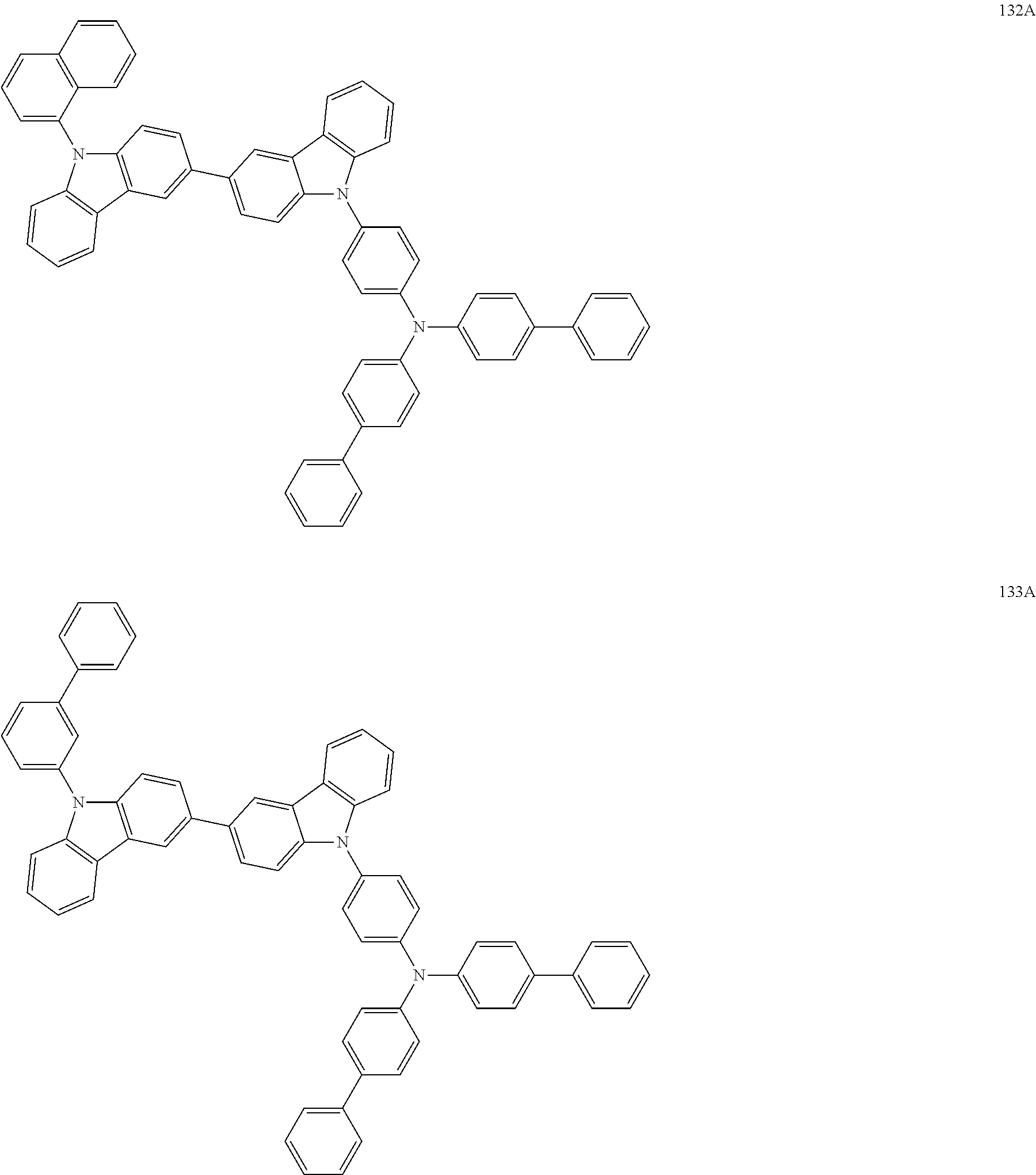
C00057
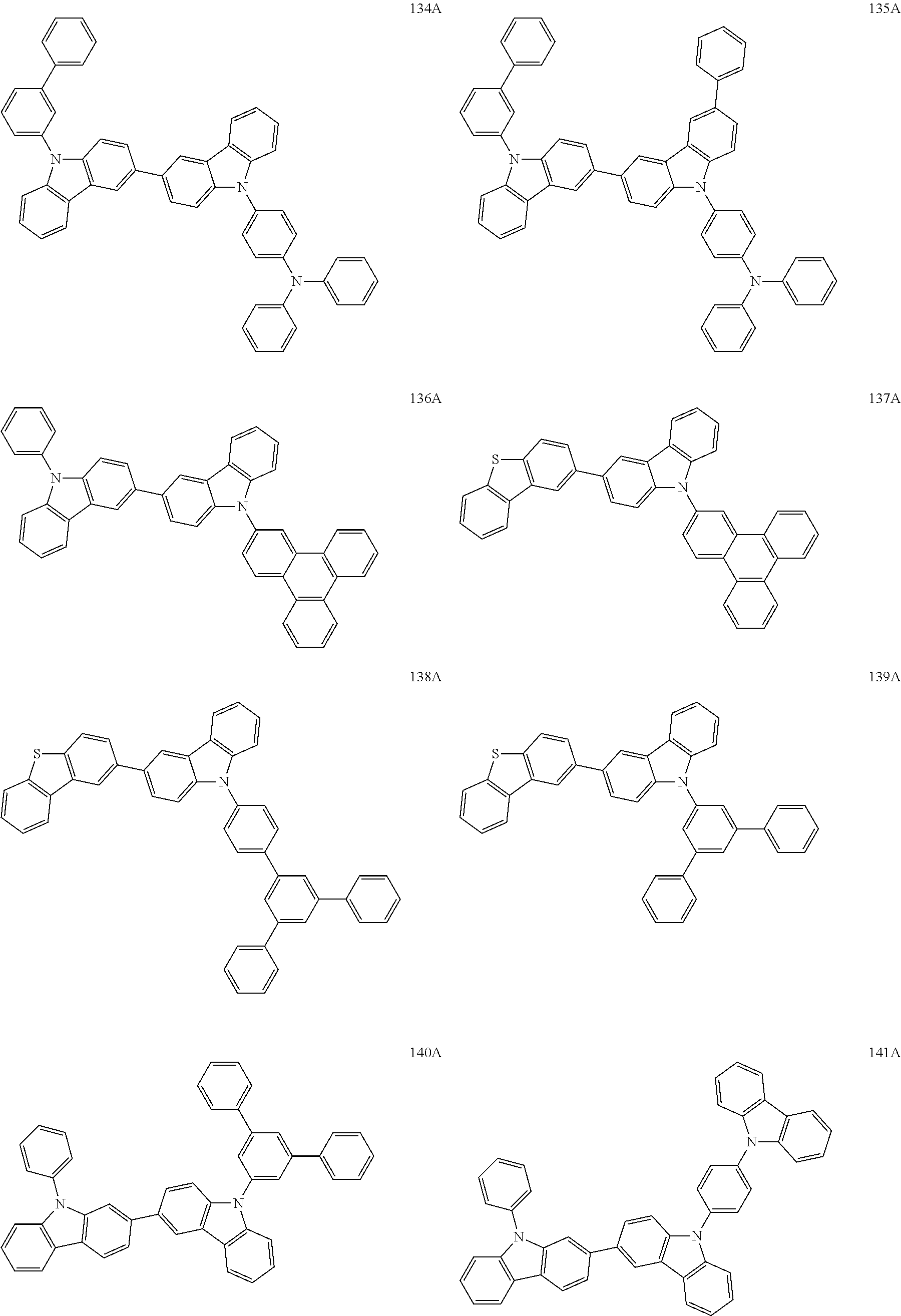
C00058
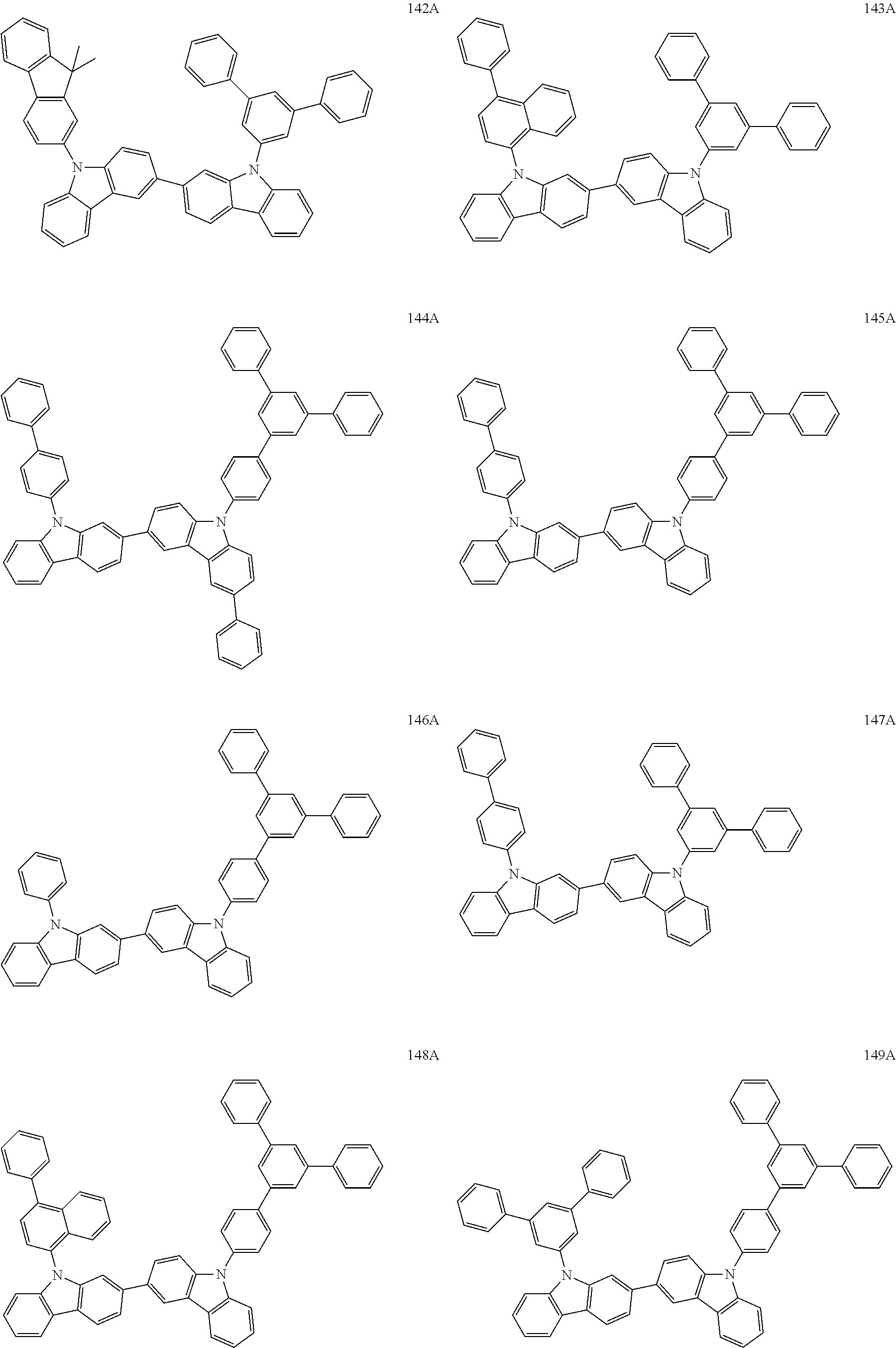
C00059
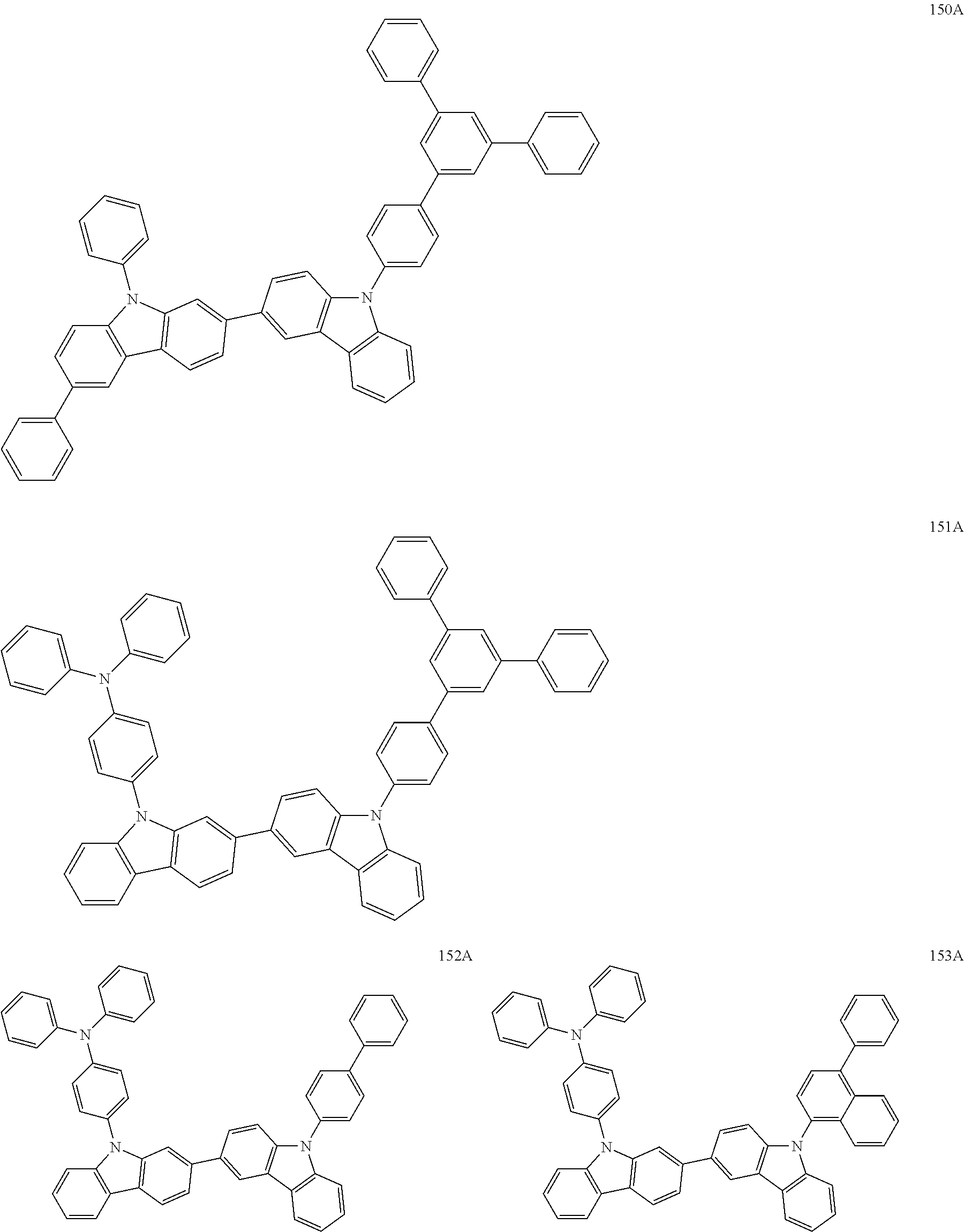
C00060
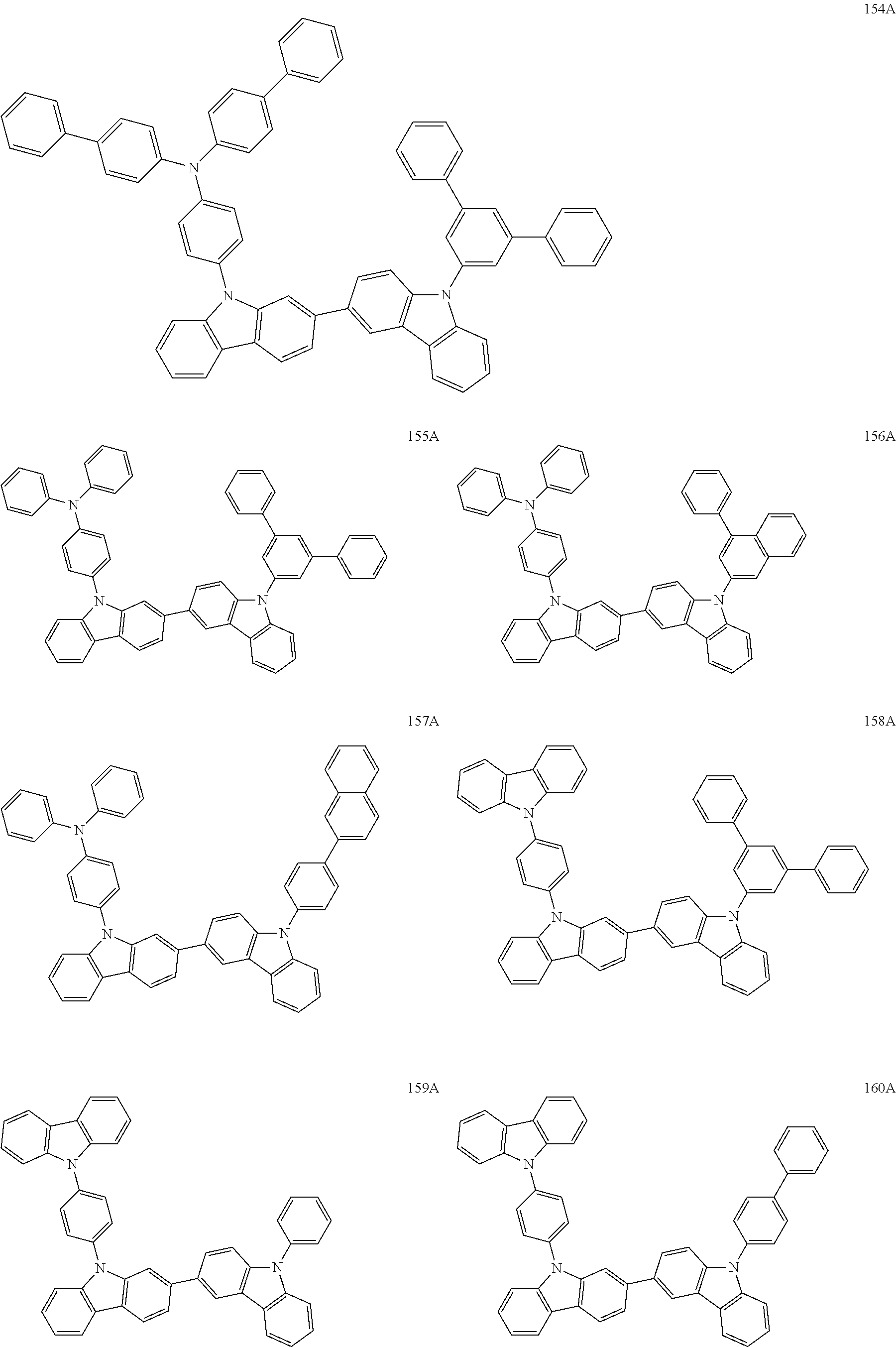
C00061
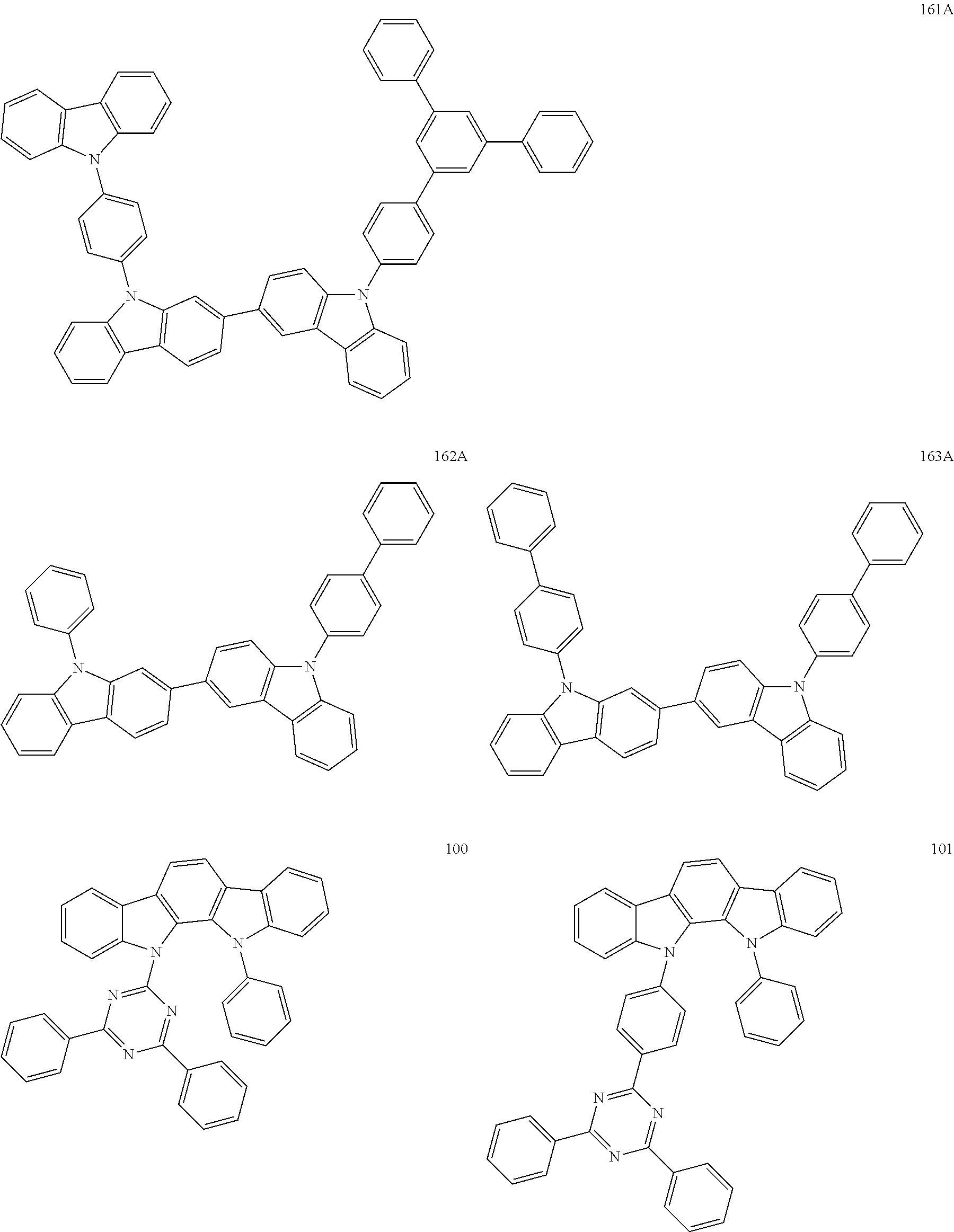
C00062
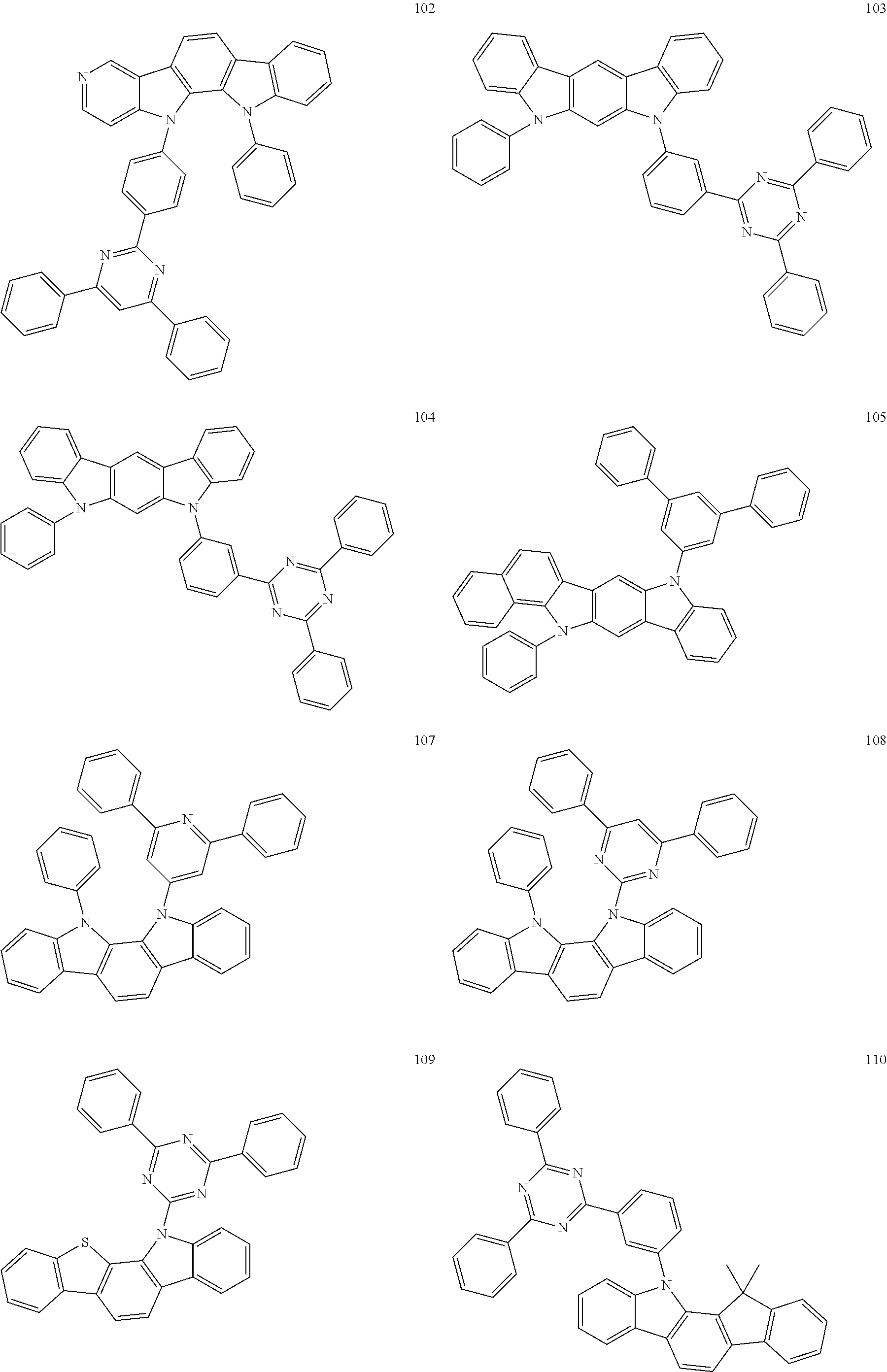
C00063
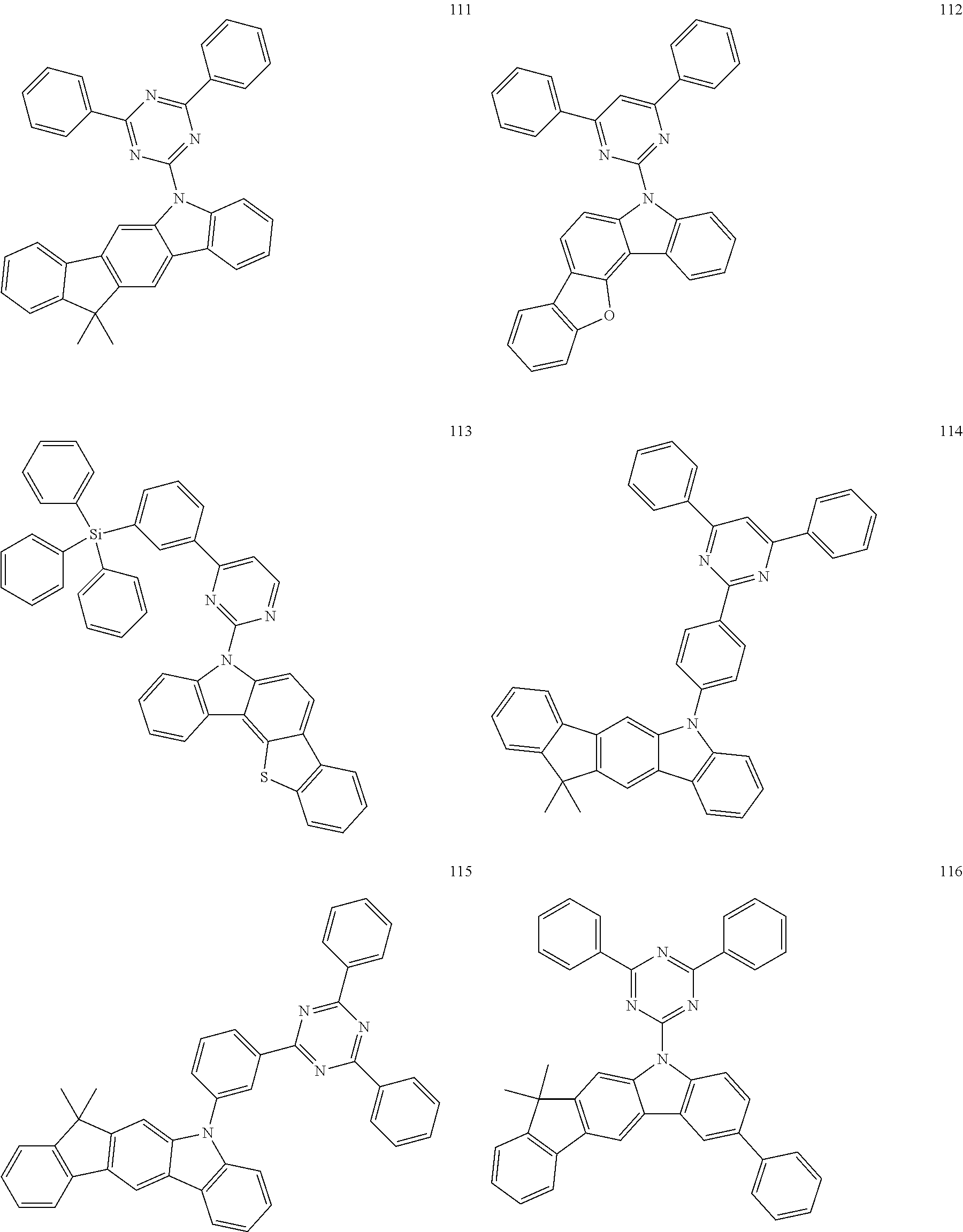
C00064
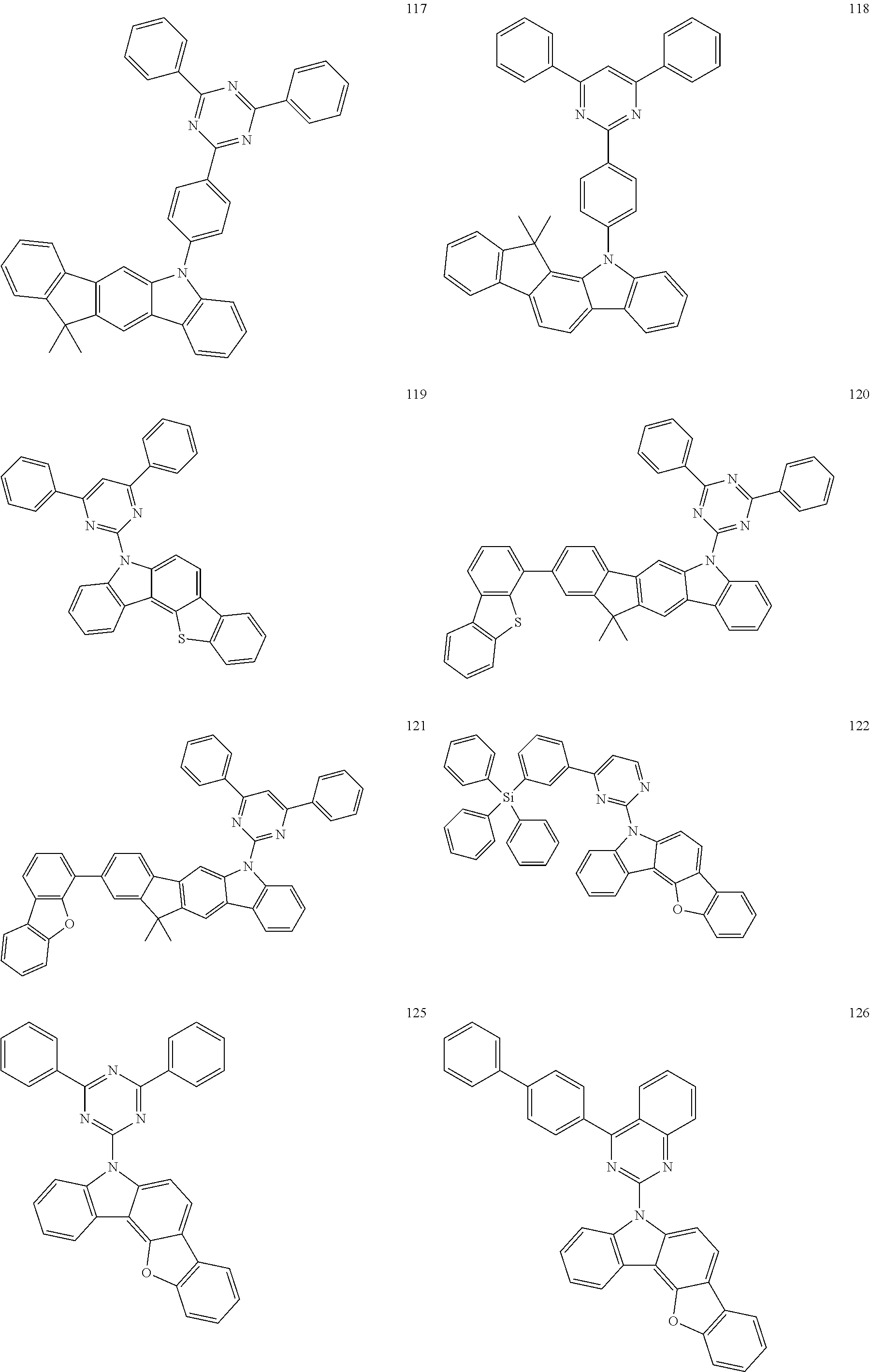
C00065
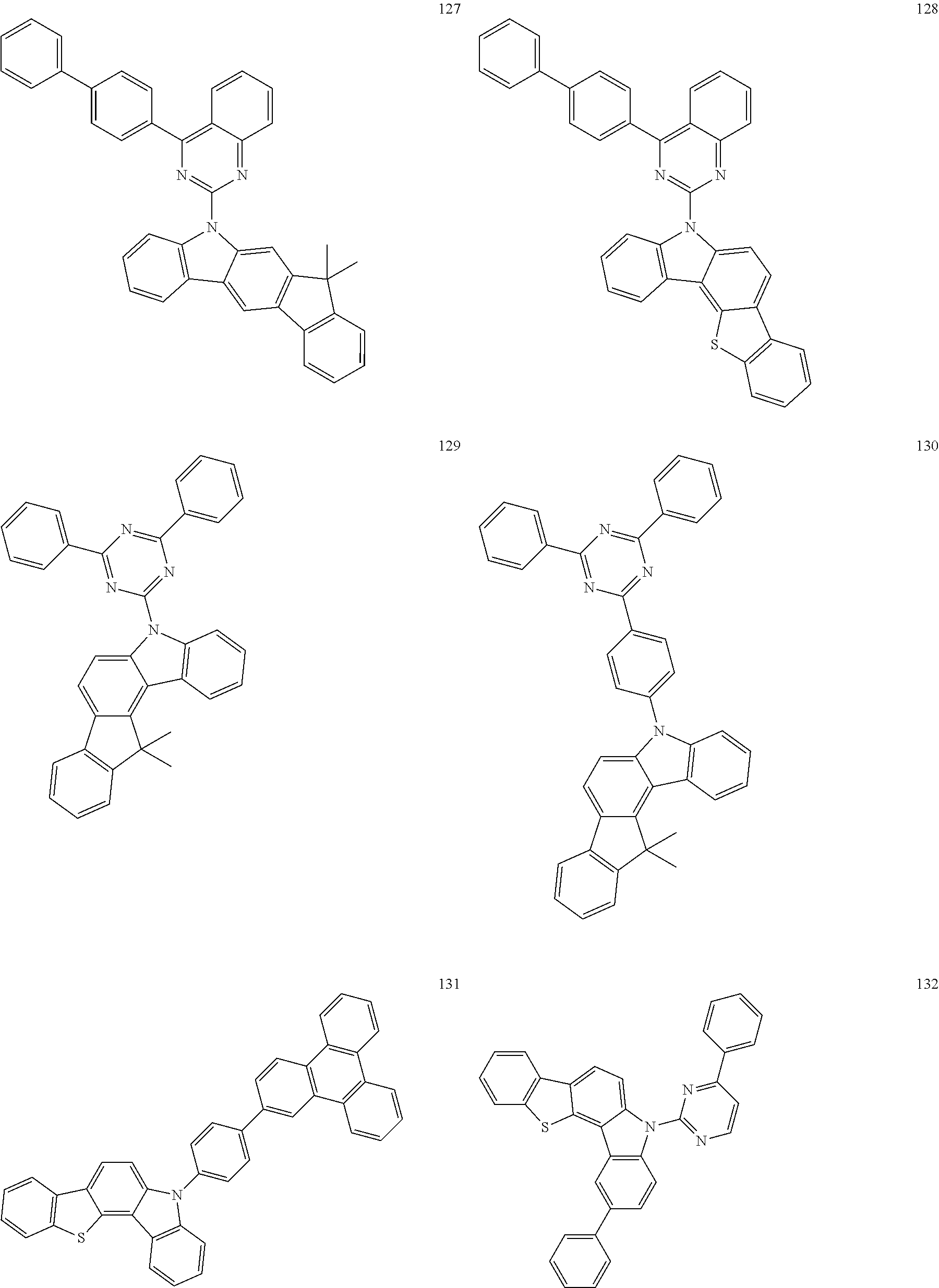
C00066
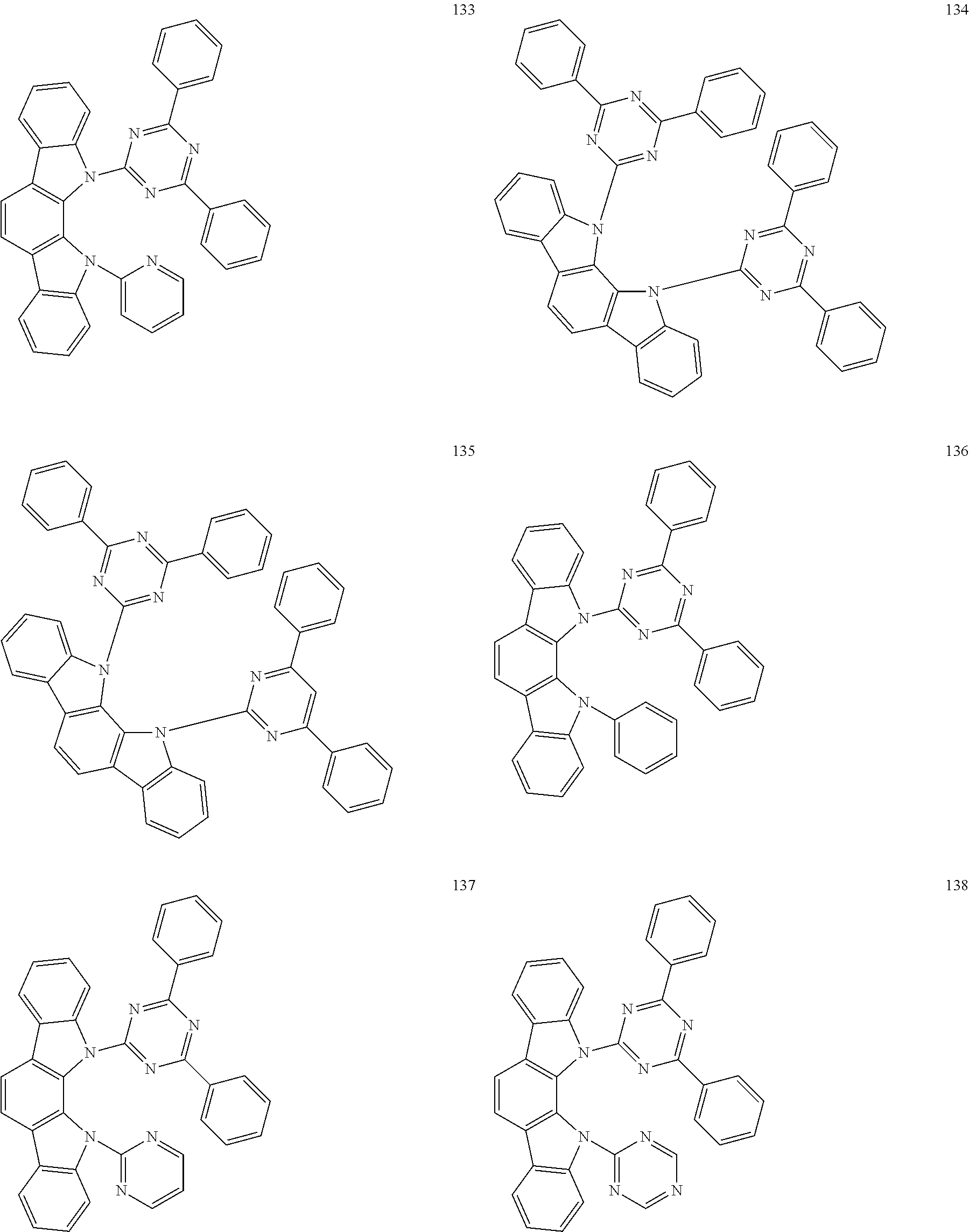
C00067
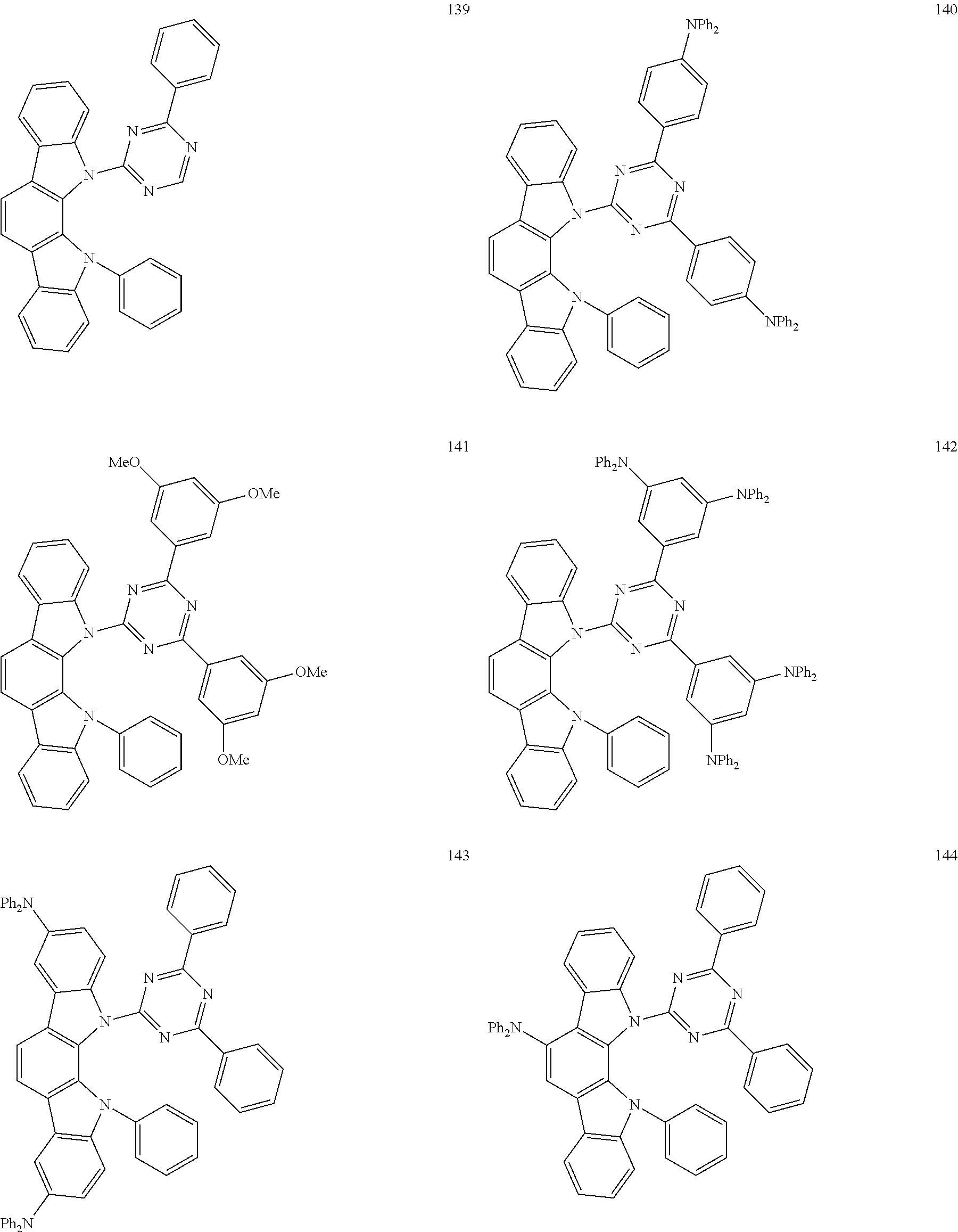
C00068
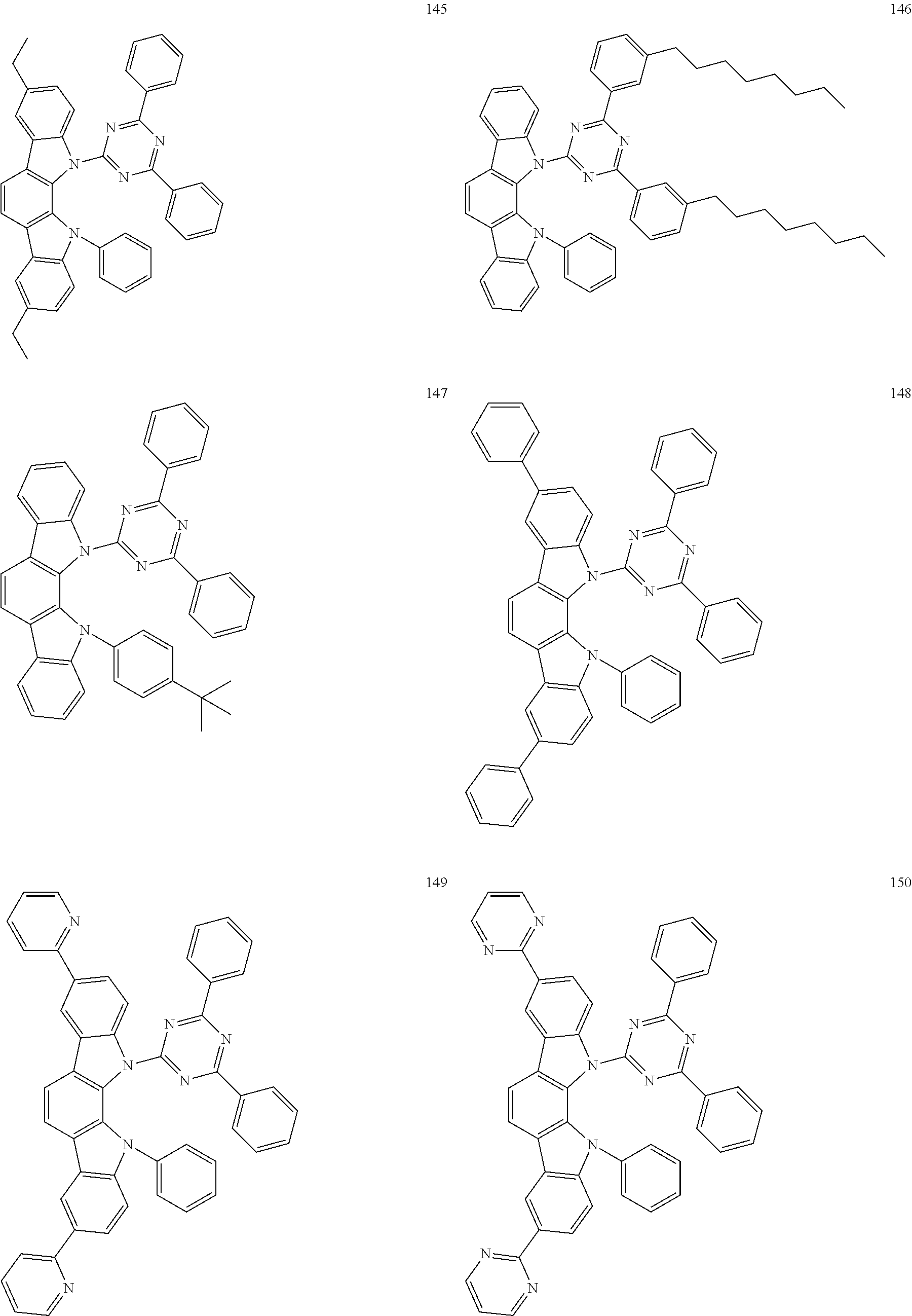
C00069
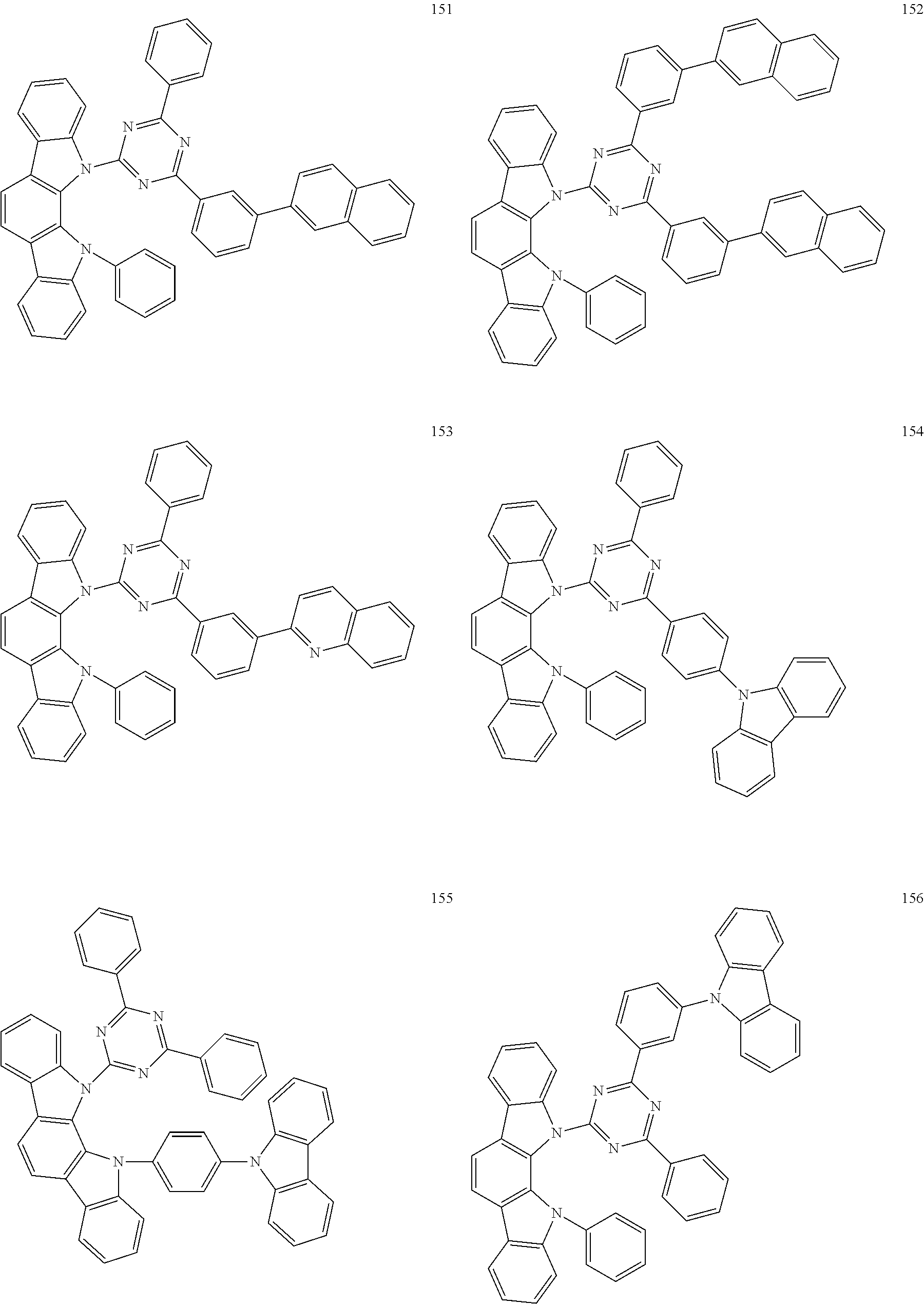
C00070
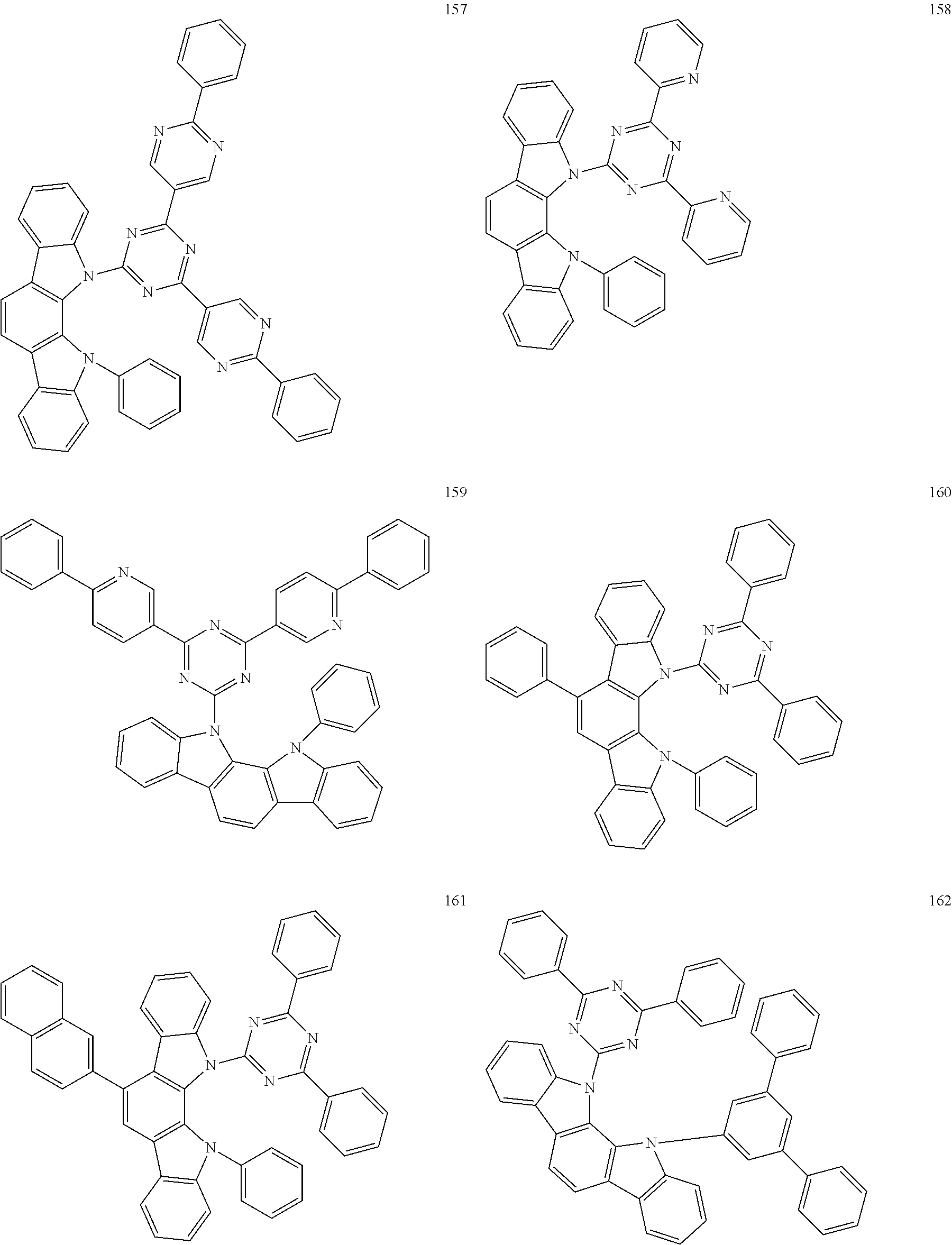
C00071
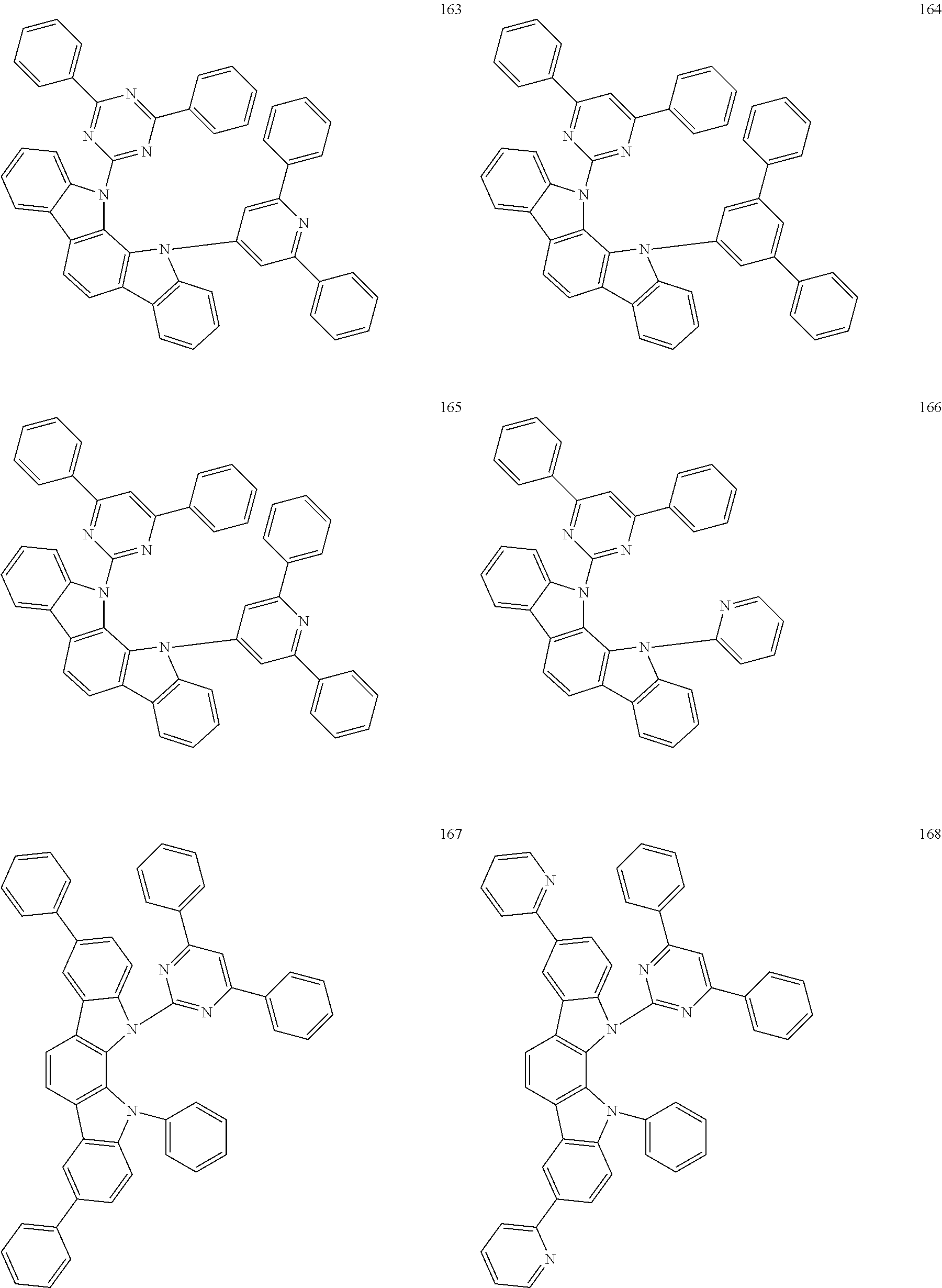
C00072
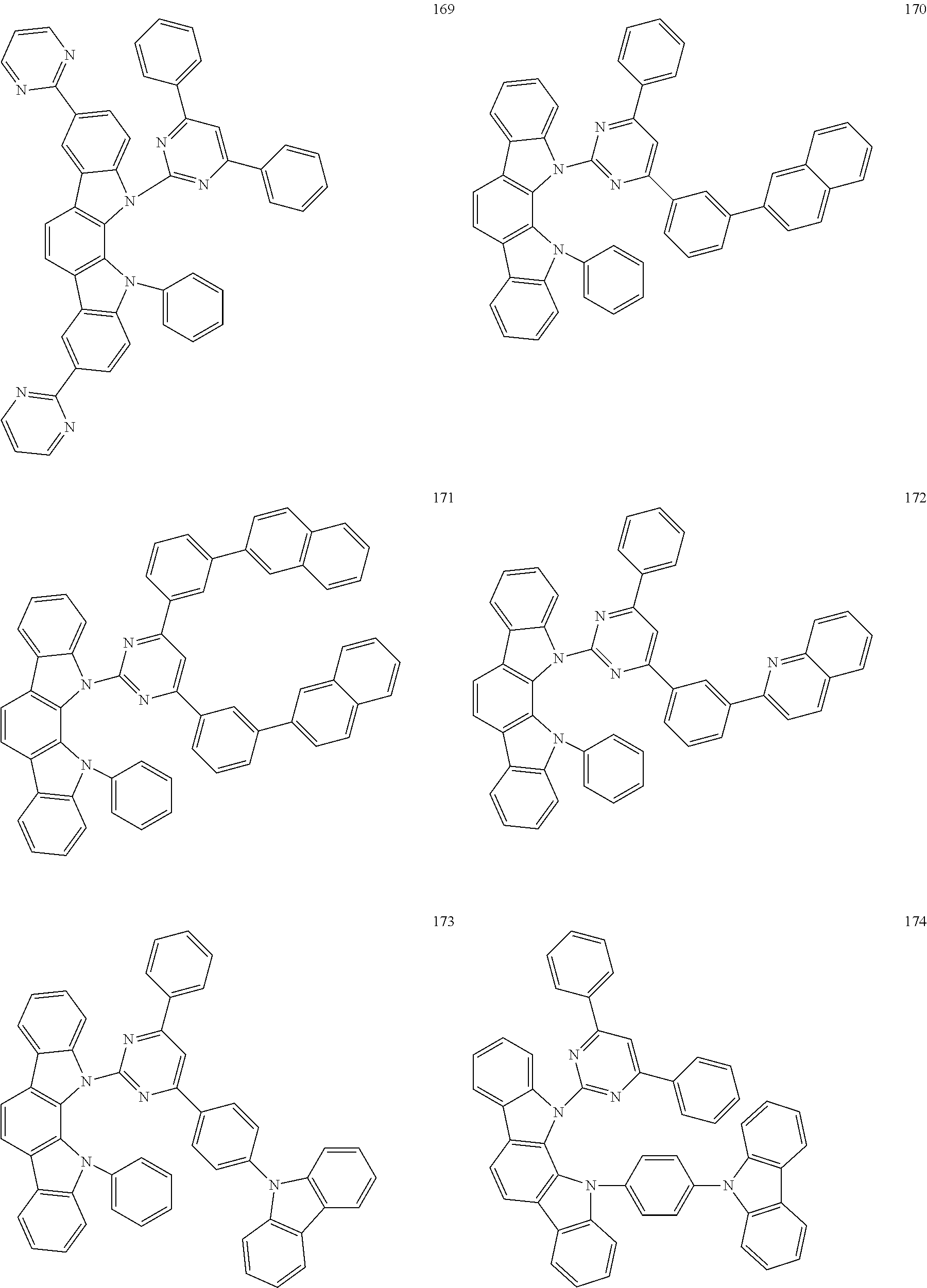
C00073
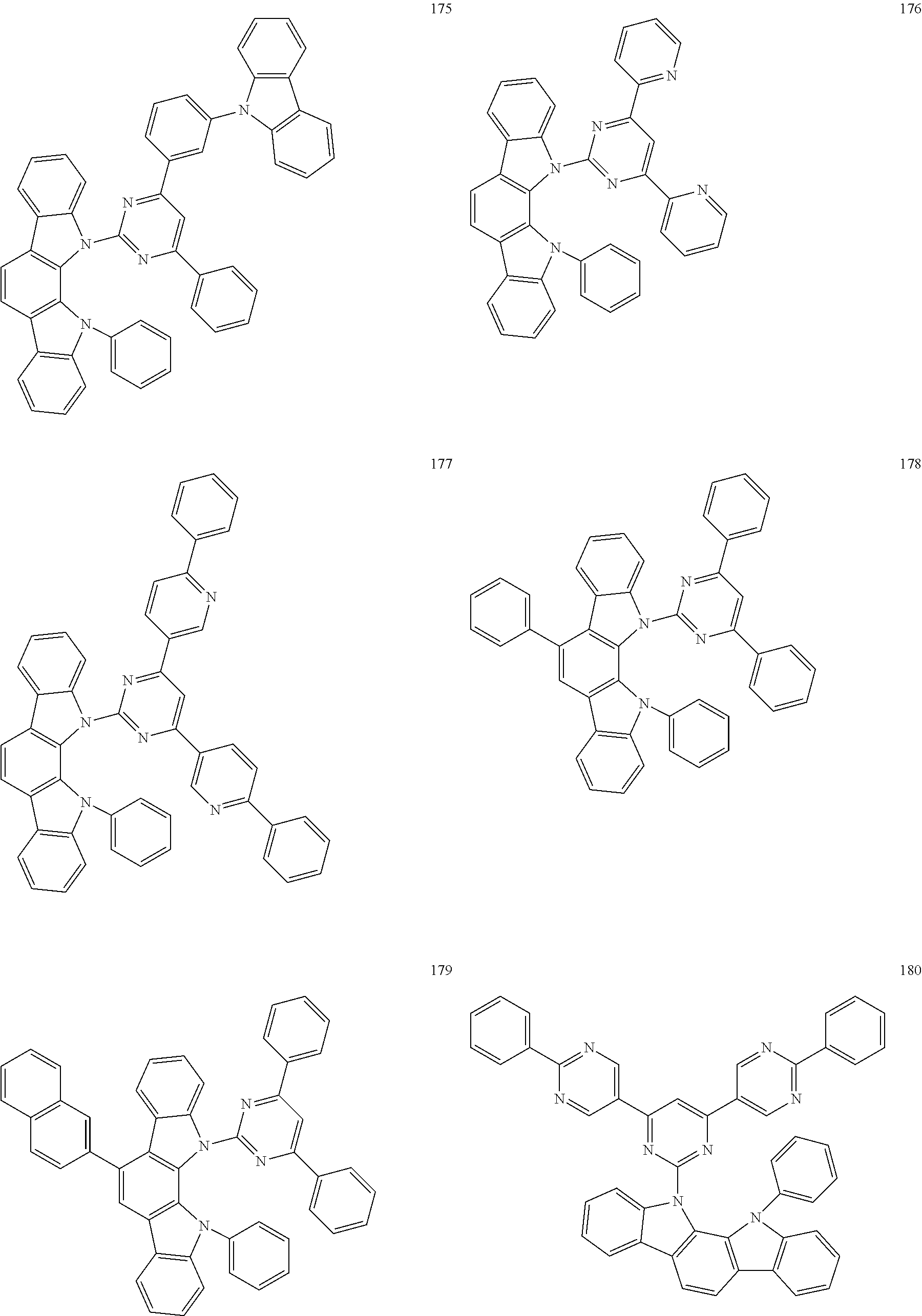
C00074
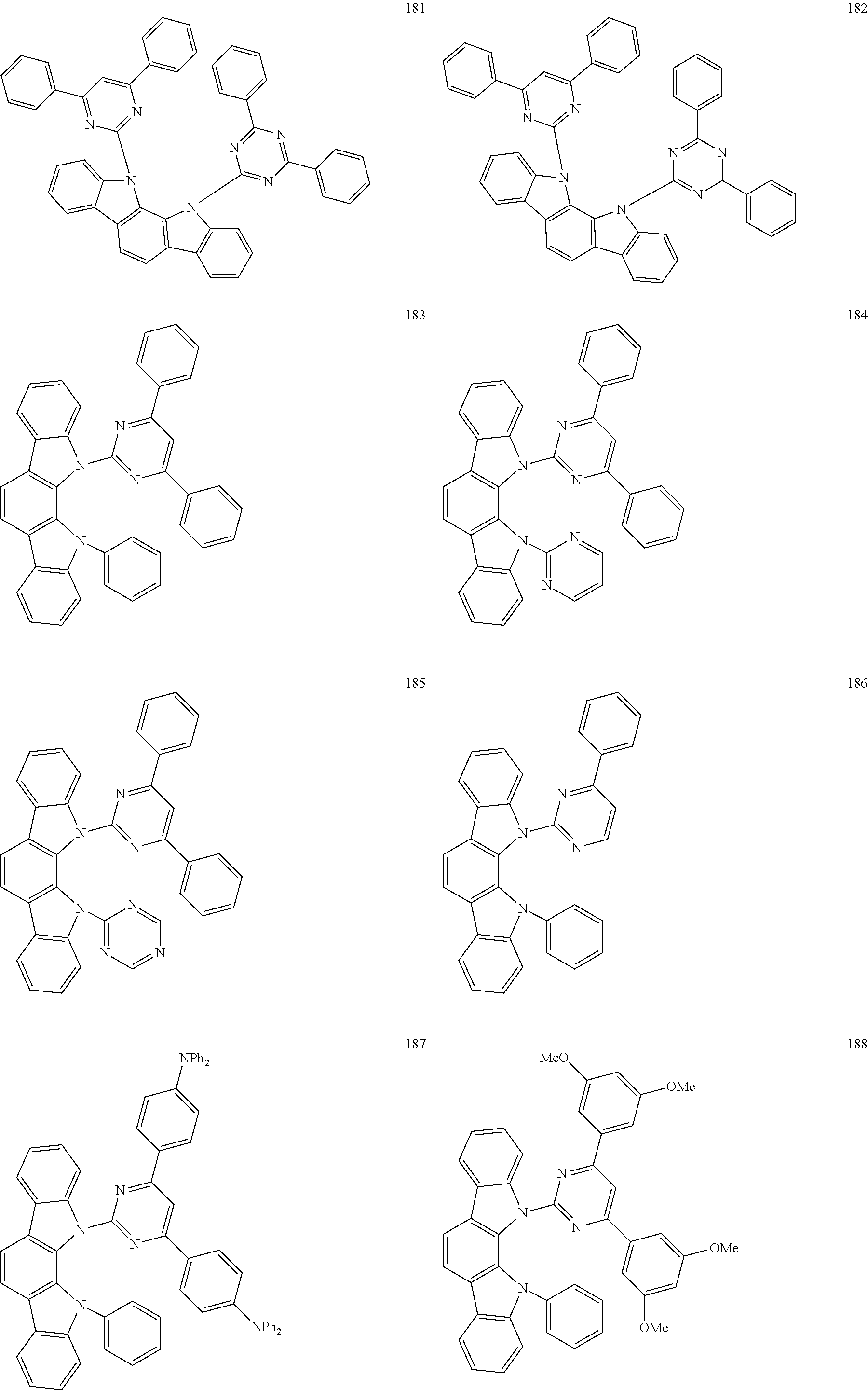
C00075
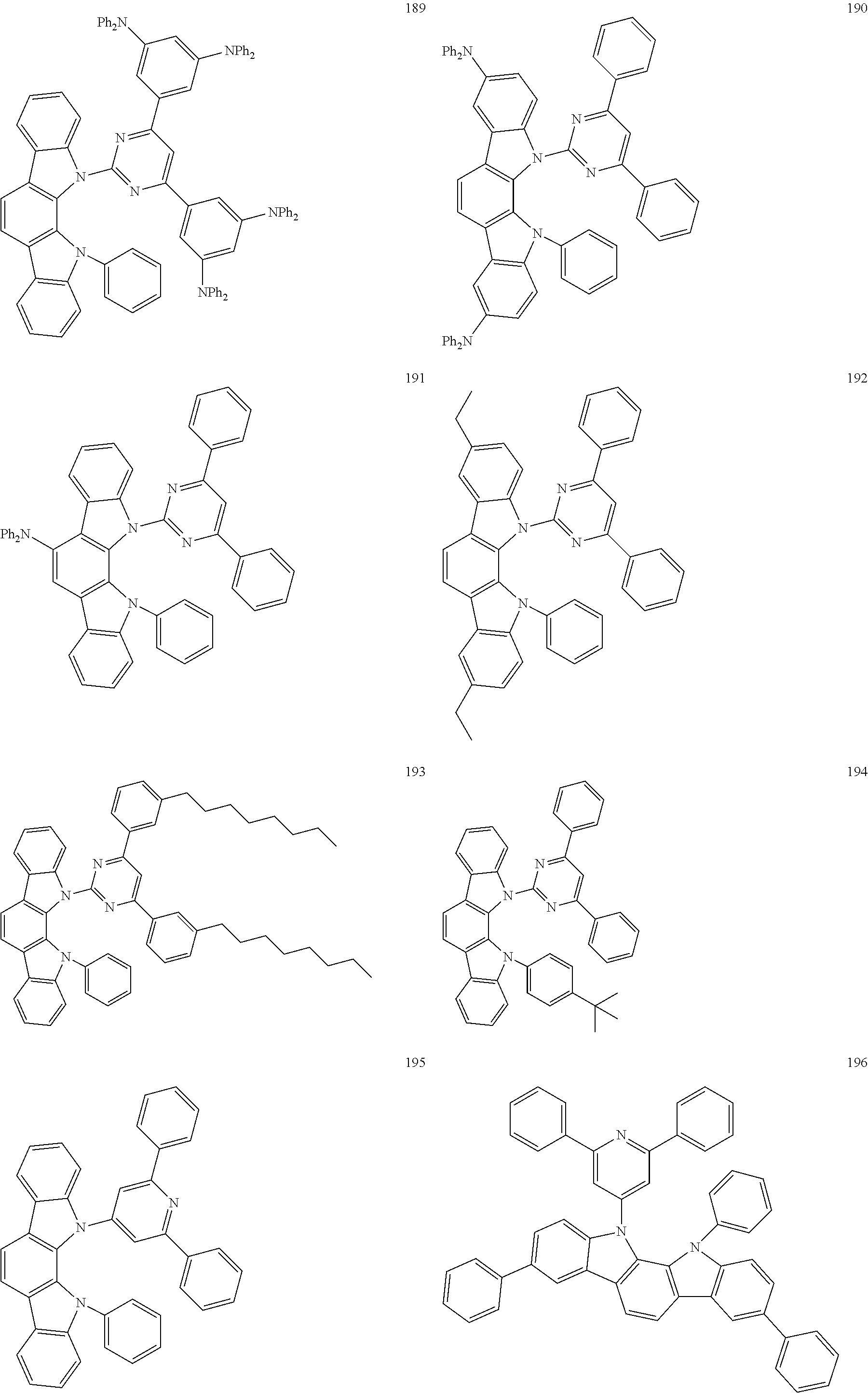
C00076
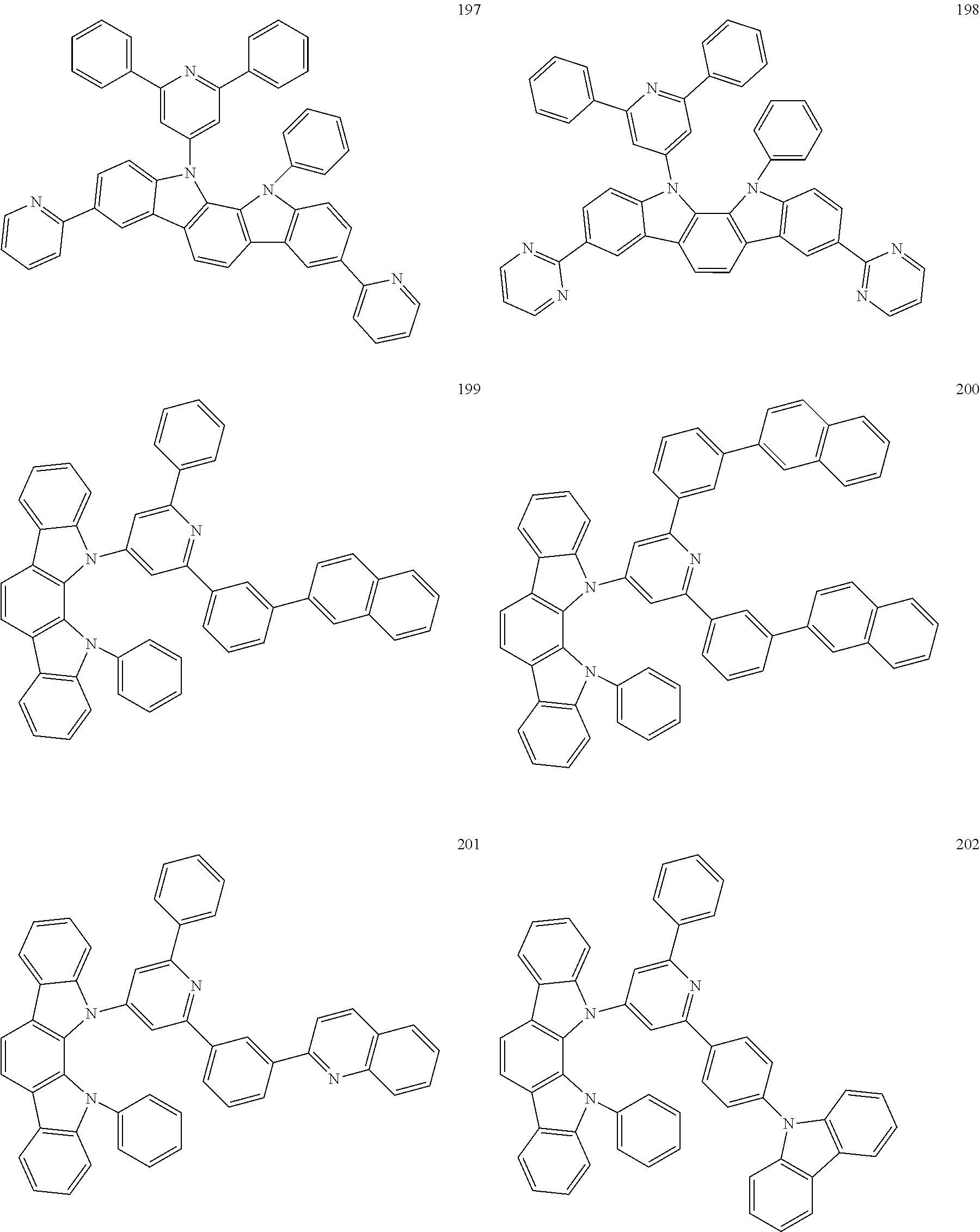
C00077
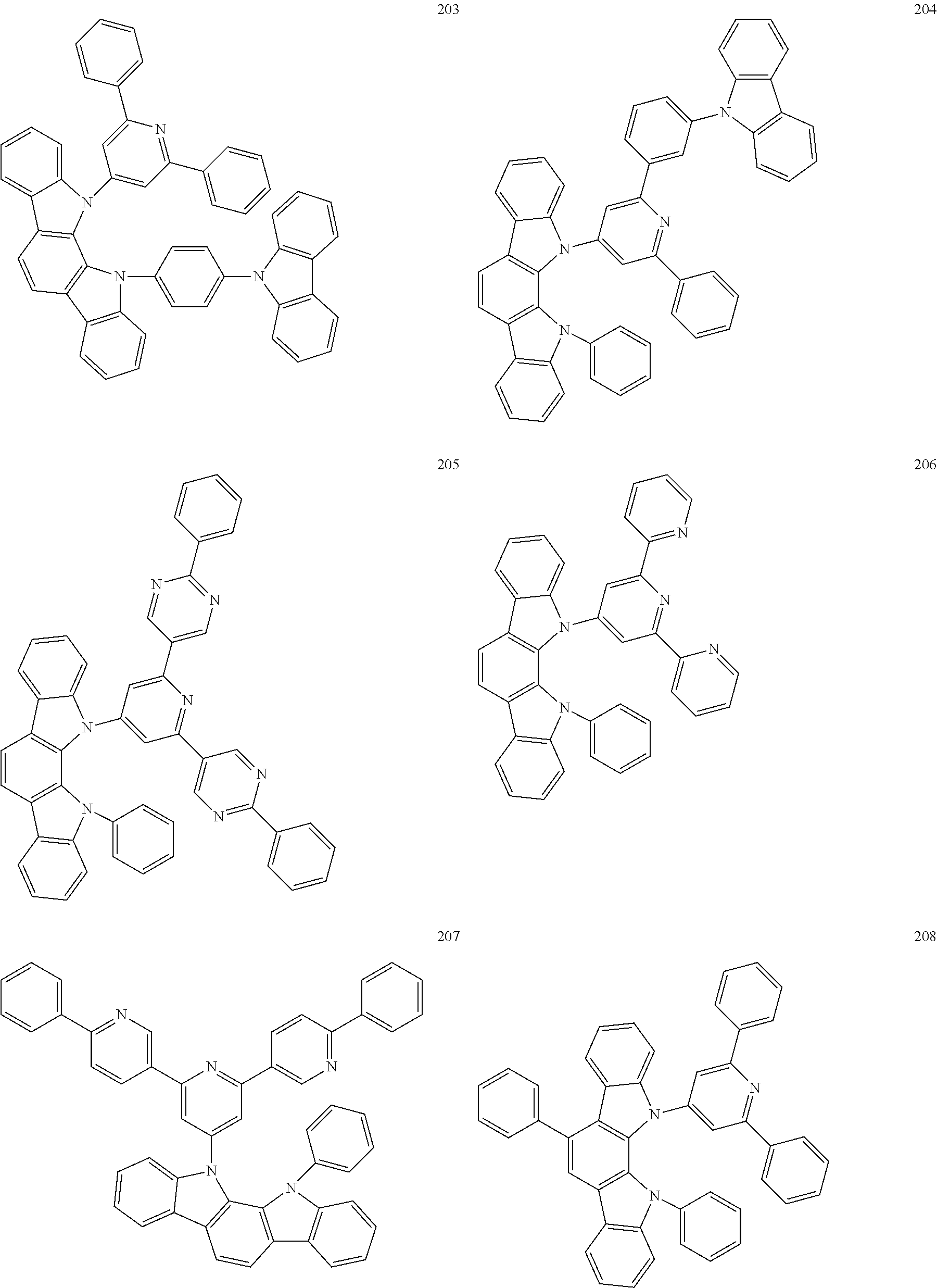
C00078
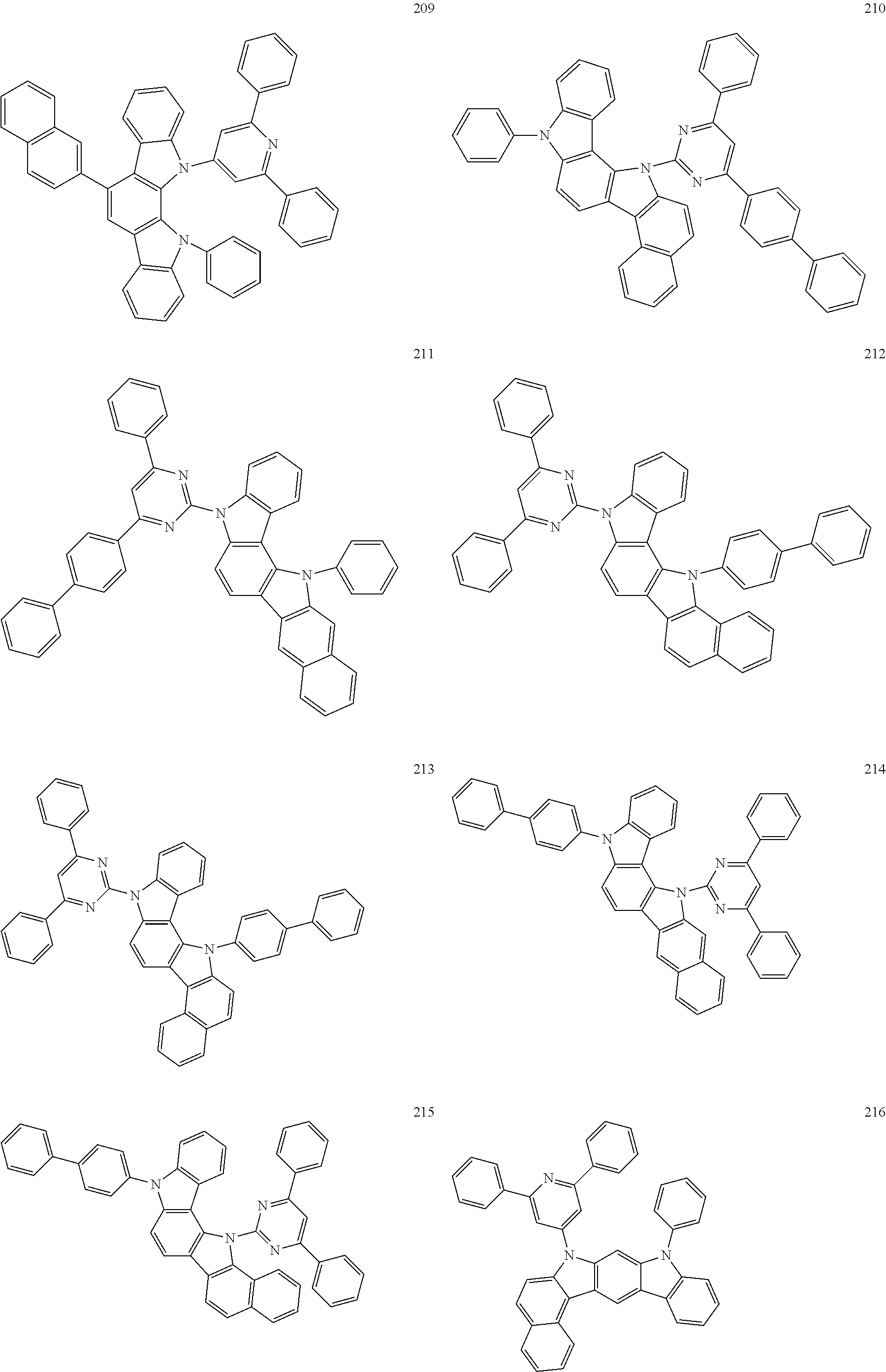
C00079
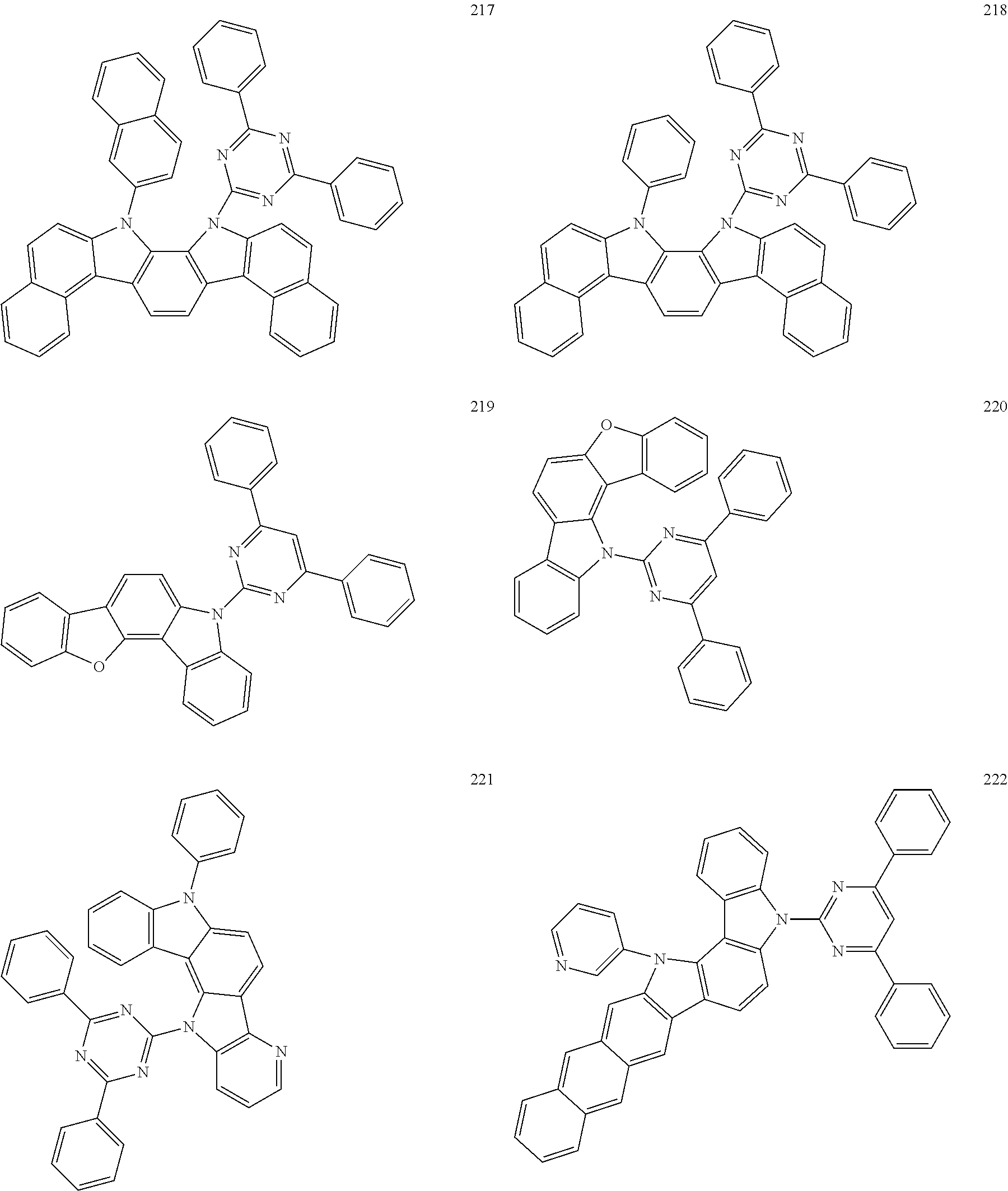
C00080
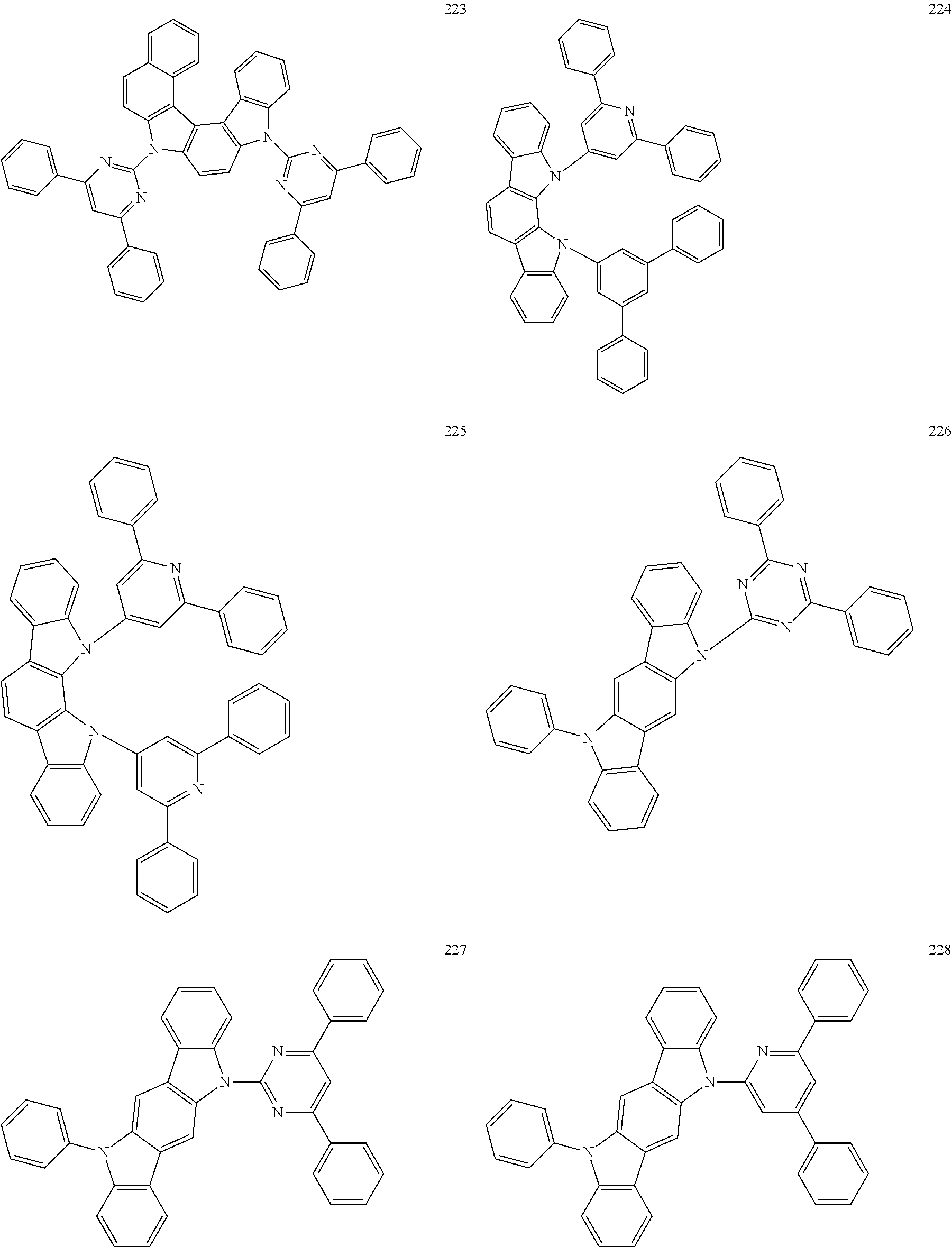
C00081
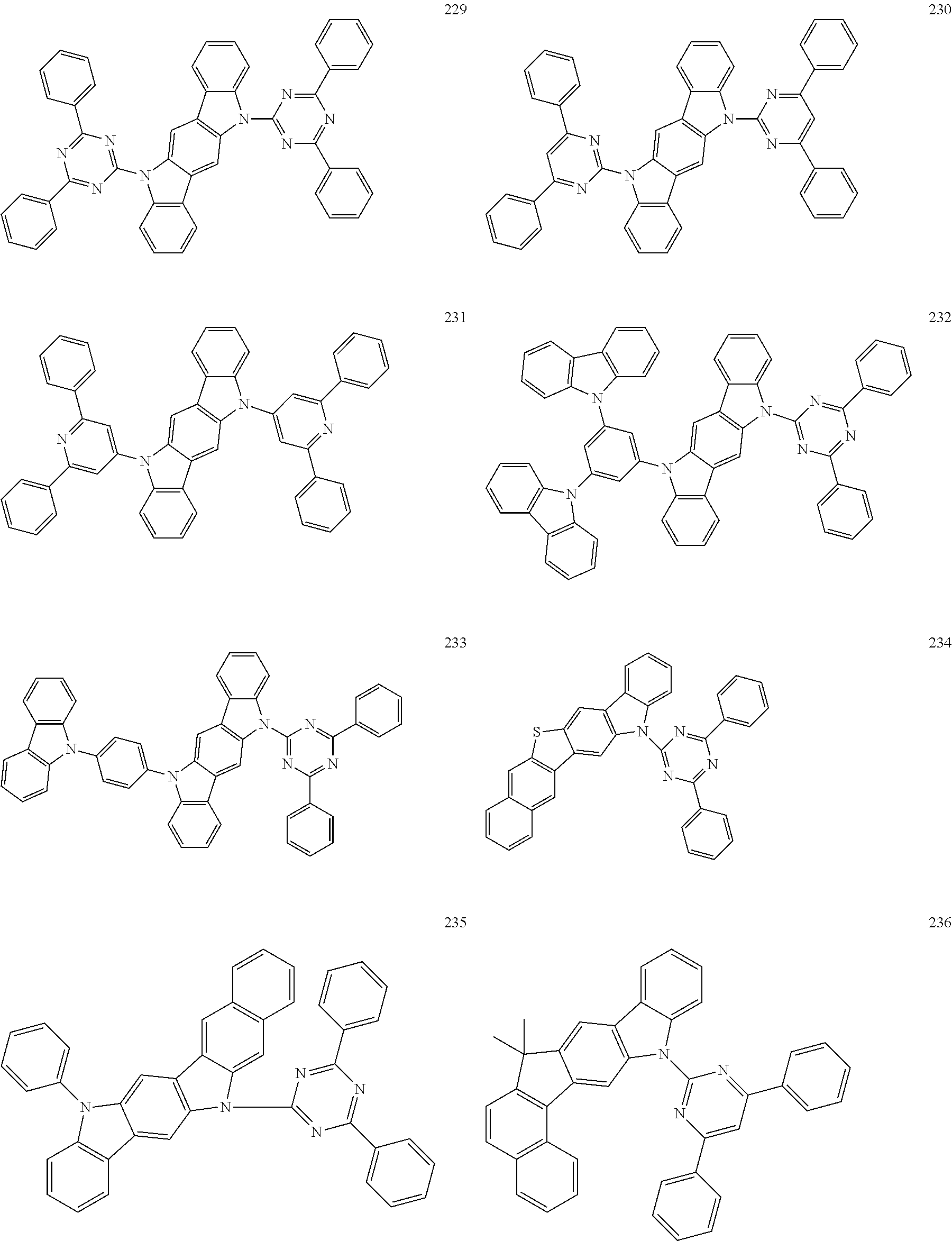
C00082

C00083

C00084

C00085
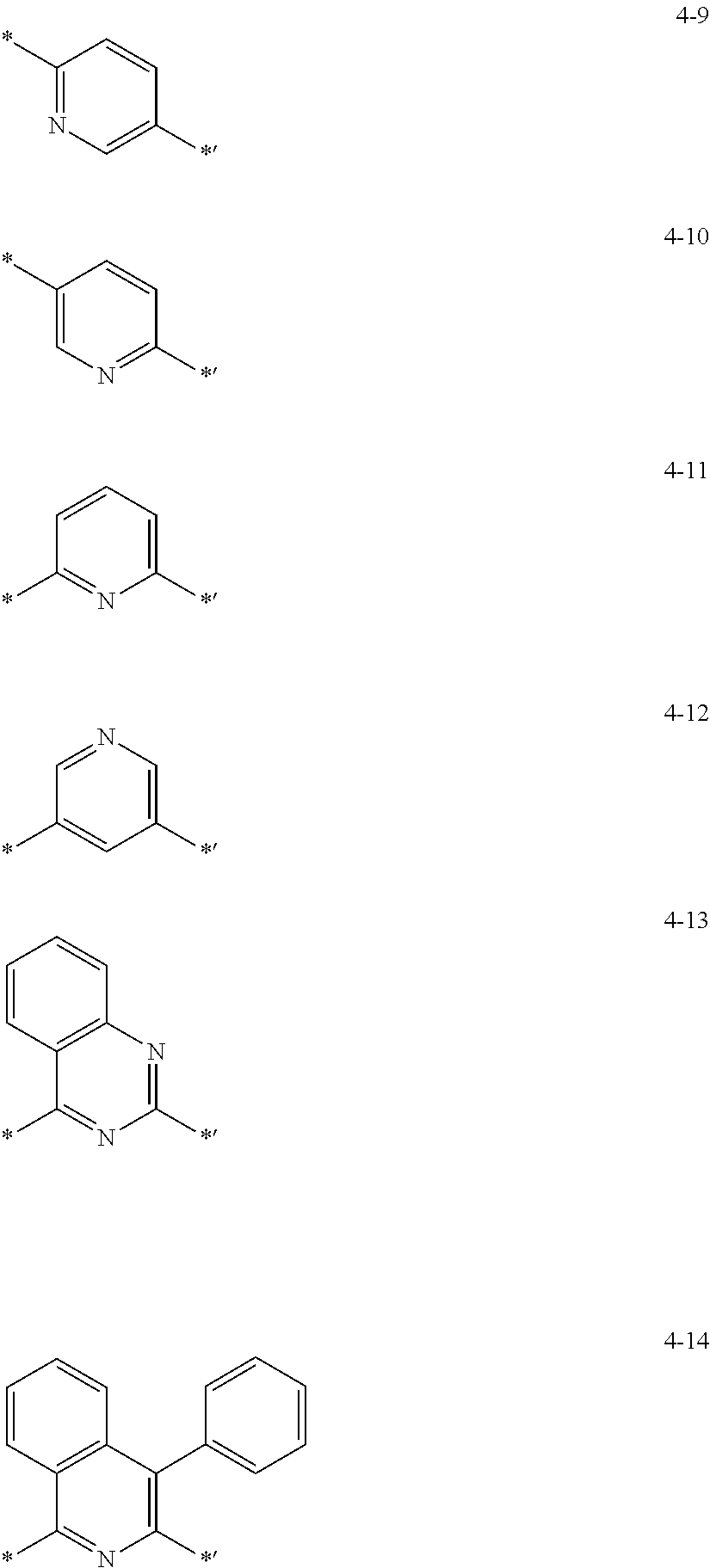
C00086
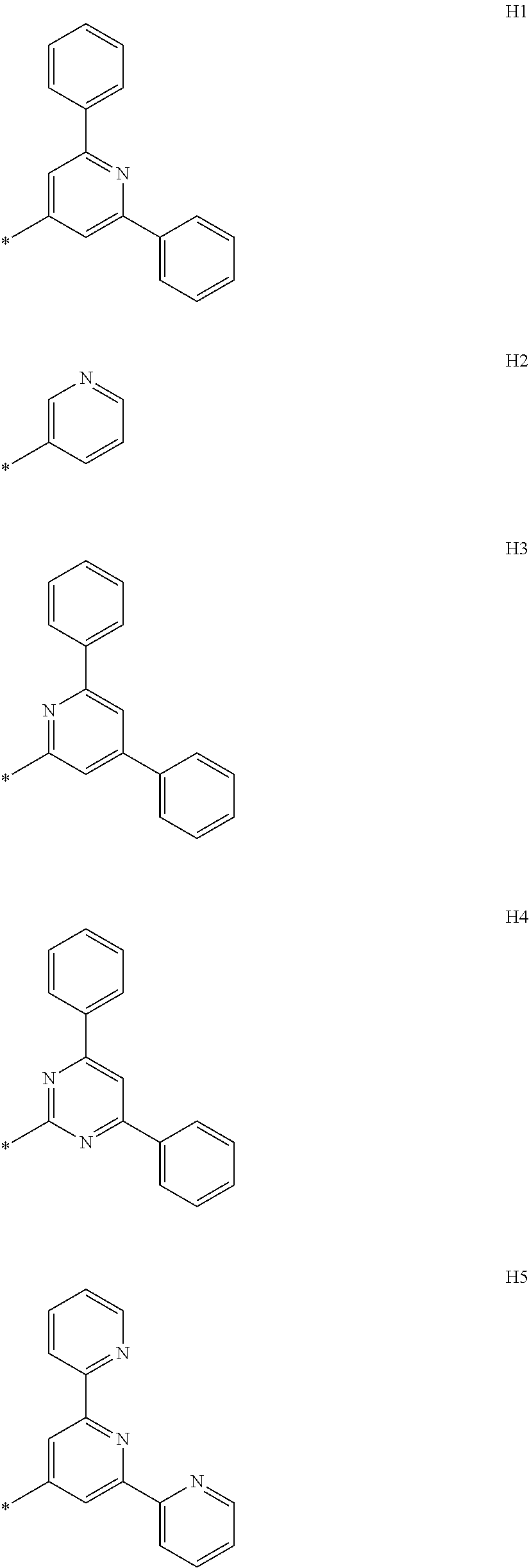
C00087

C00088

C00089

C00090

C00091

C00092
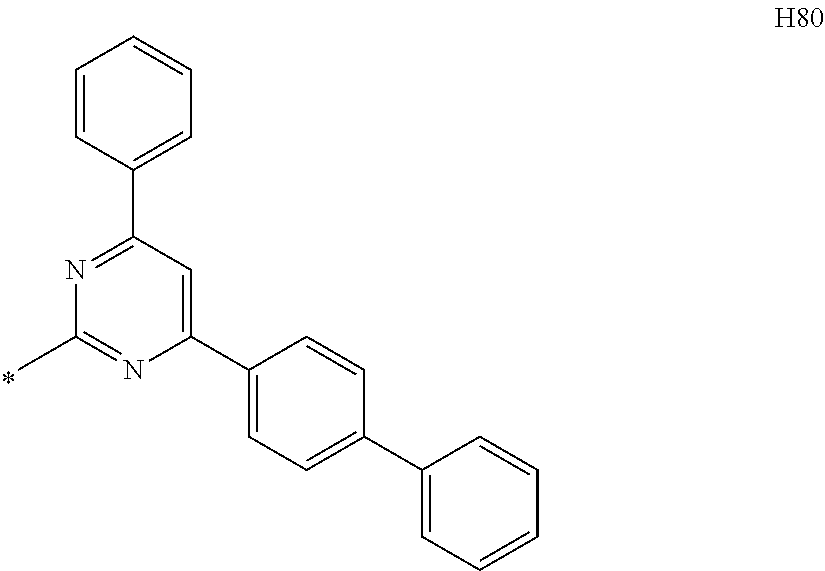
C00093

C00094

C00095

C00096

C00097

C00098

C00099
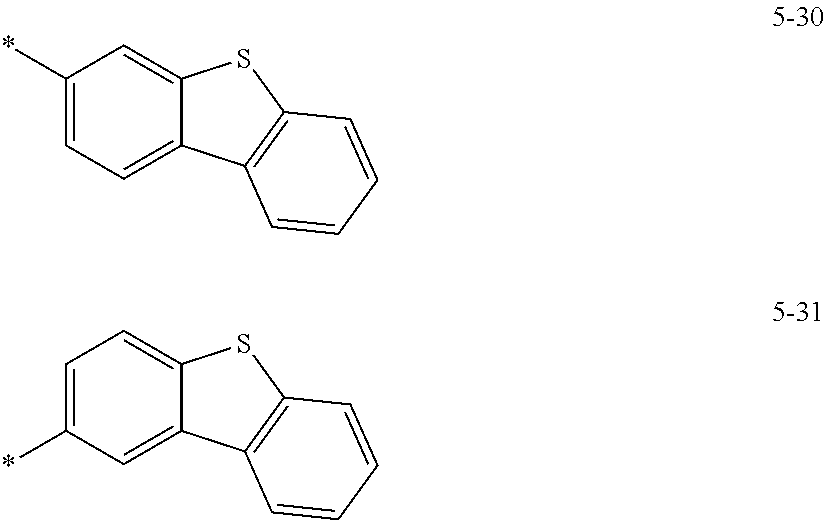
C00100
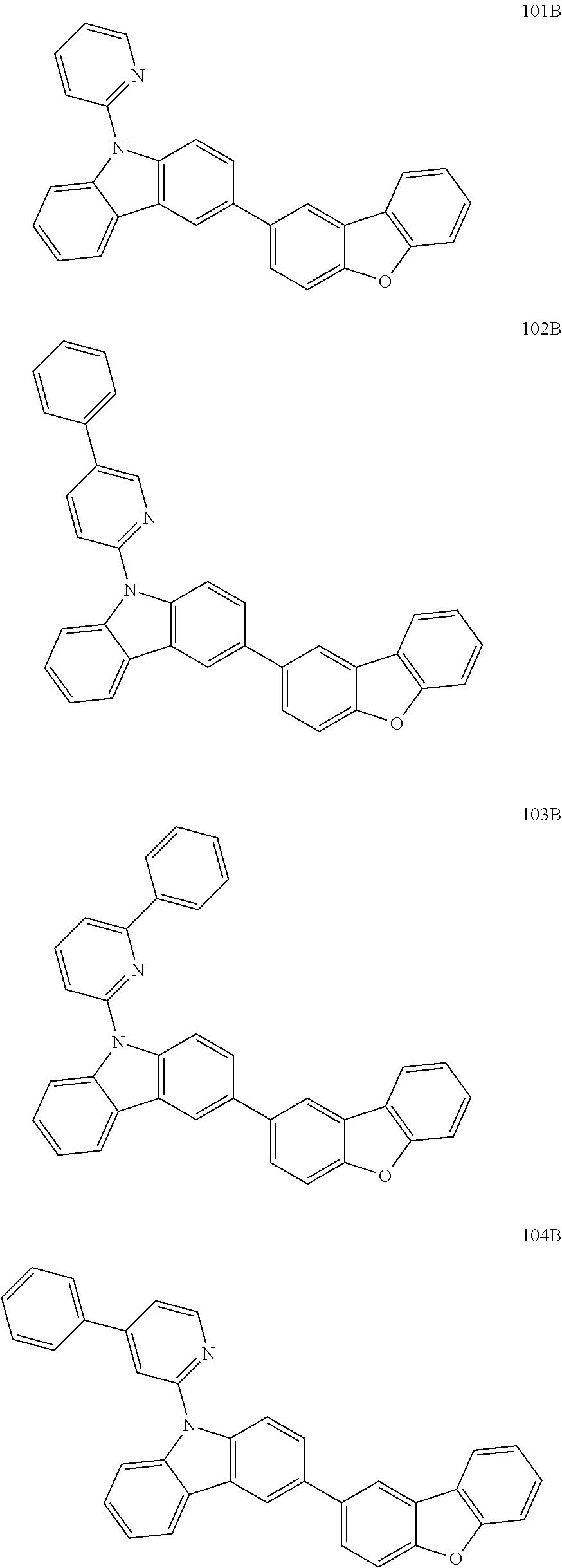
C00101

C00102

C00103

C00104

C00105

C00106
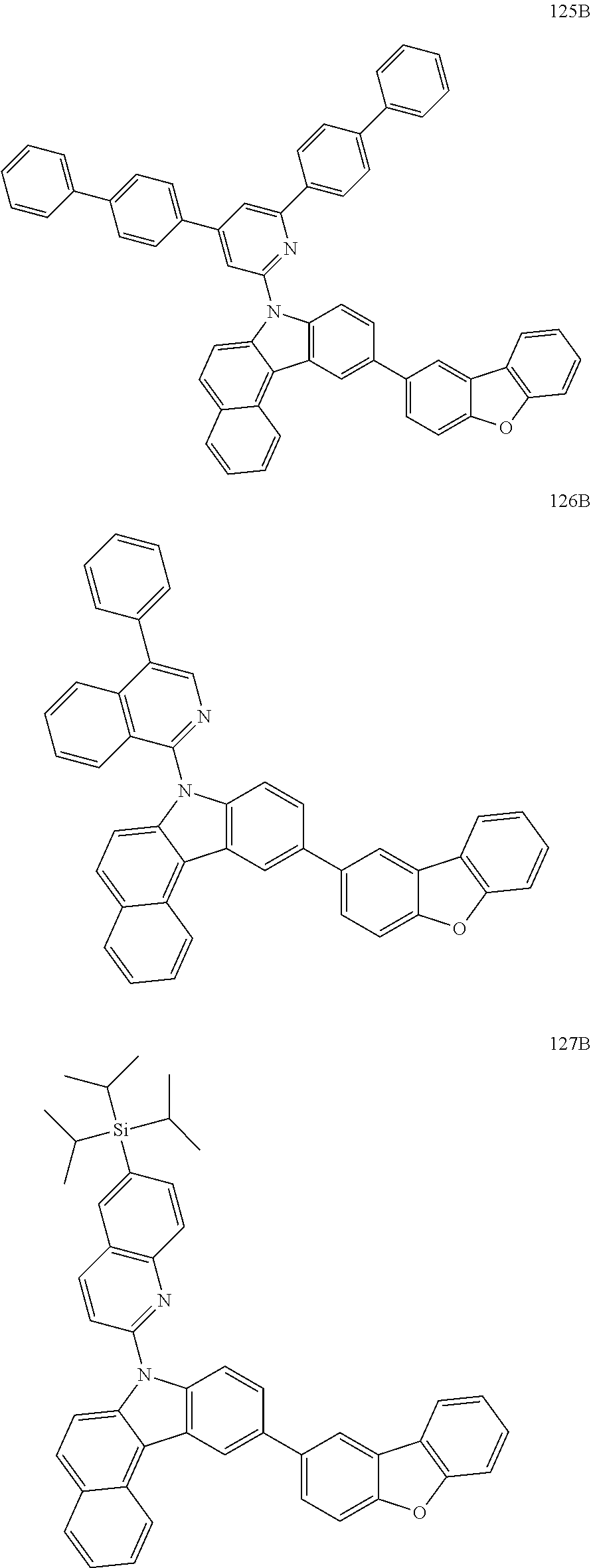
C00107
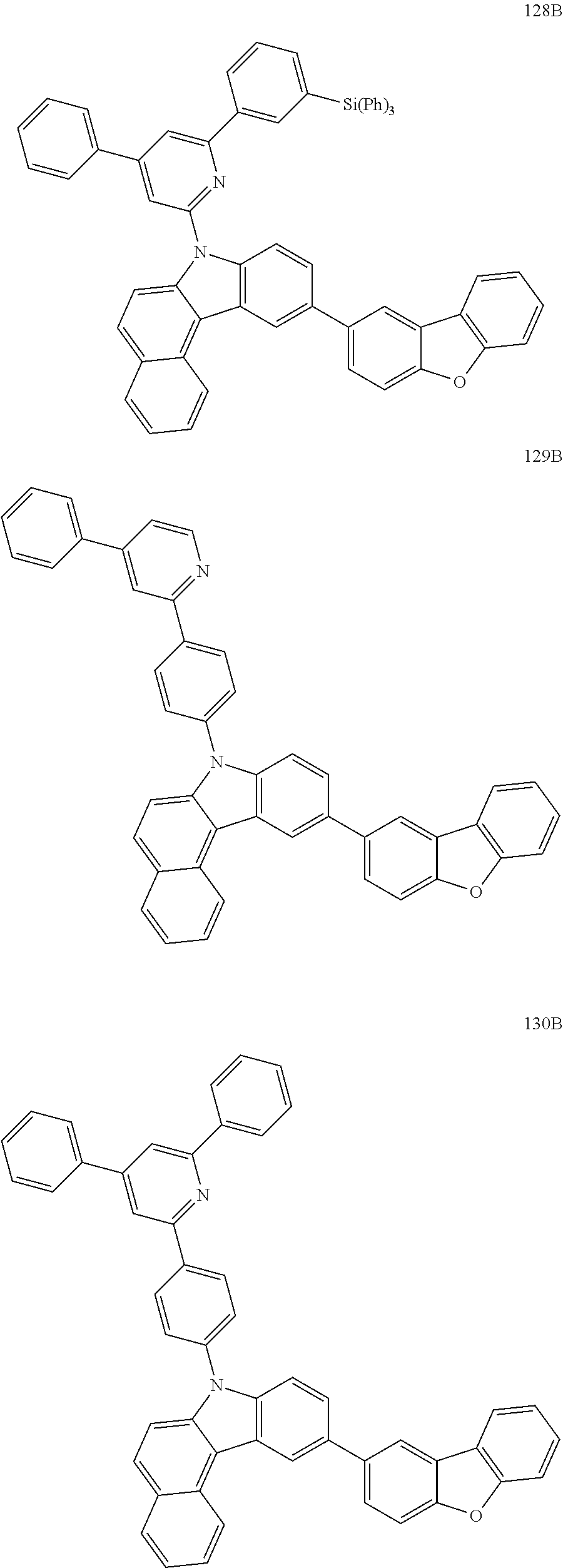
C00108
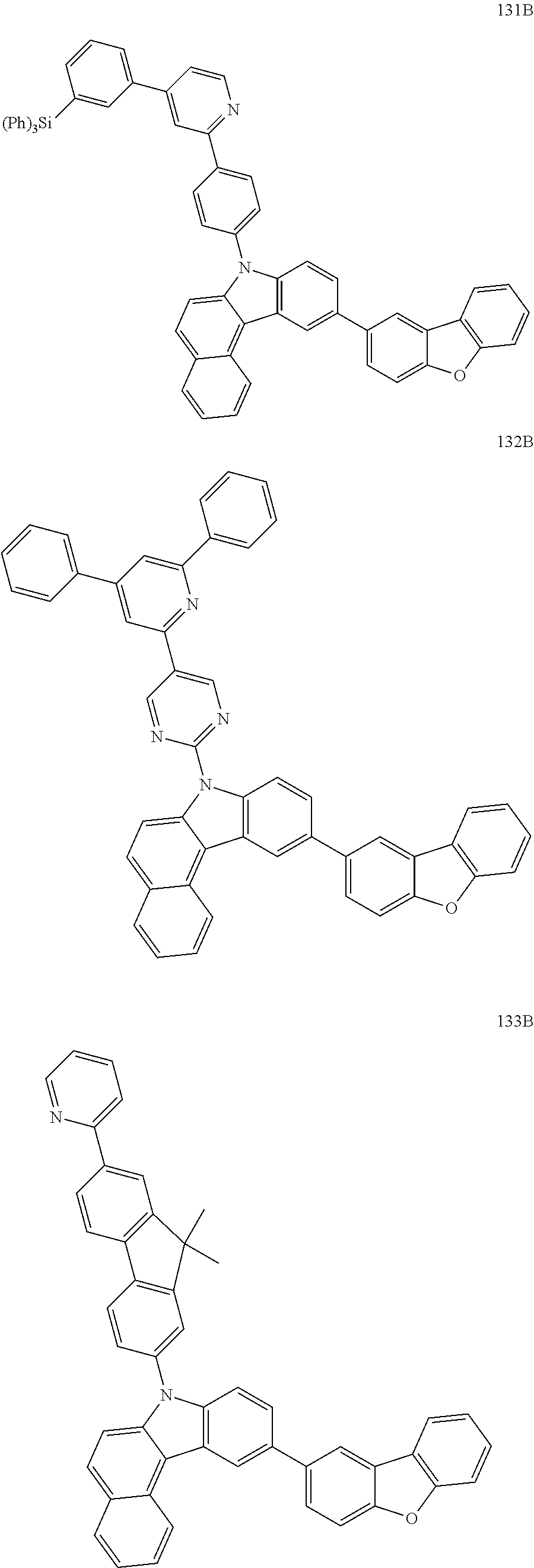
C00109
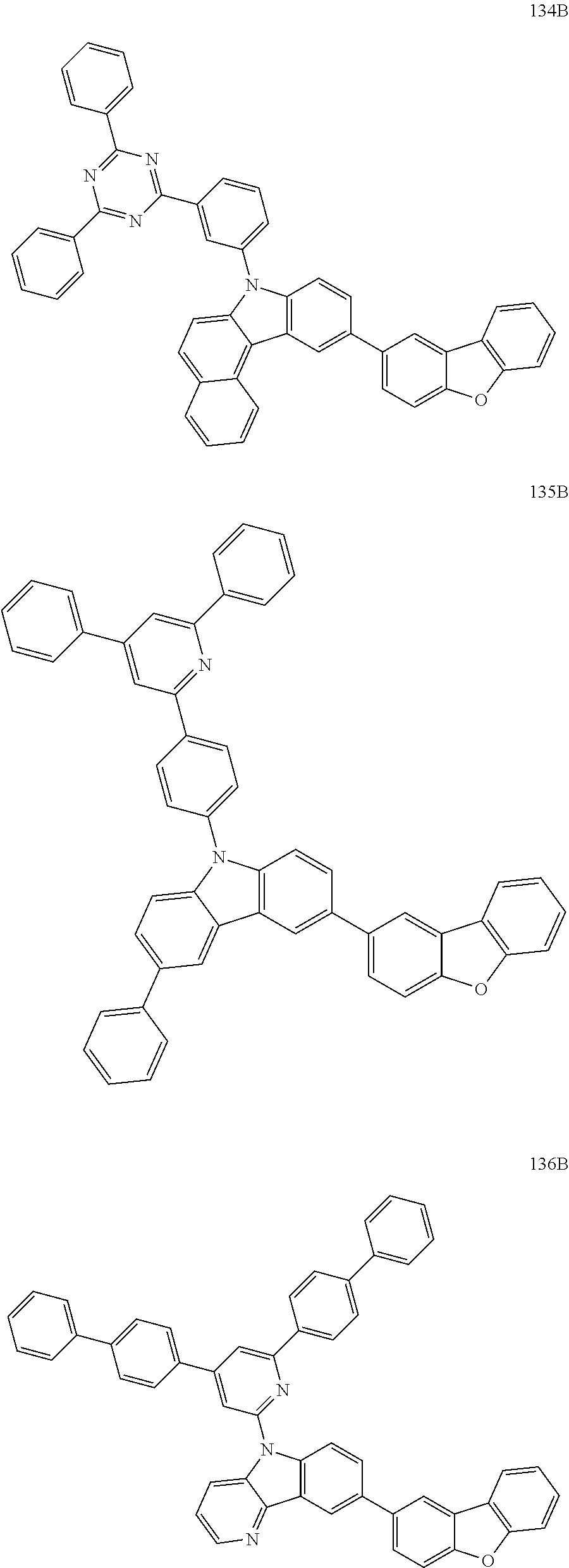
C00110

C00111

C00112

C00113

C00114

C00115
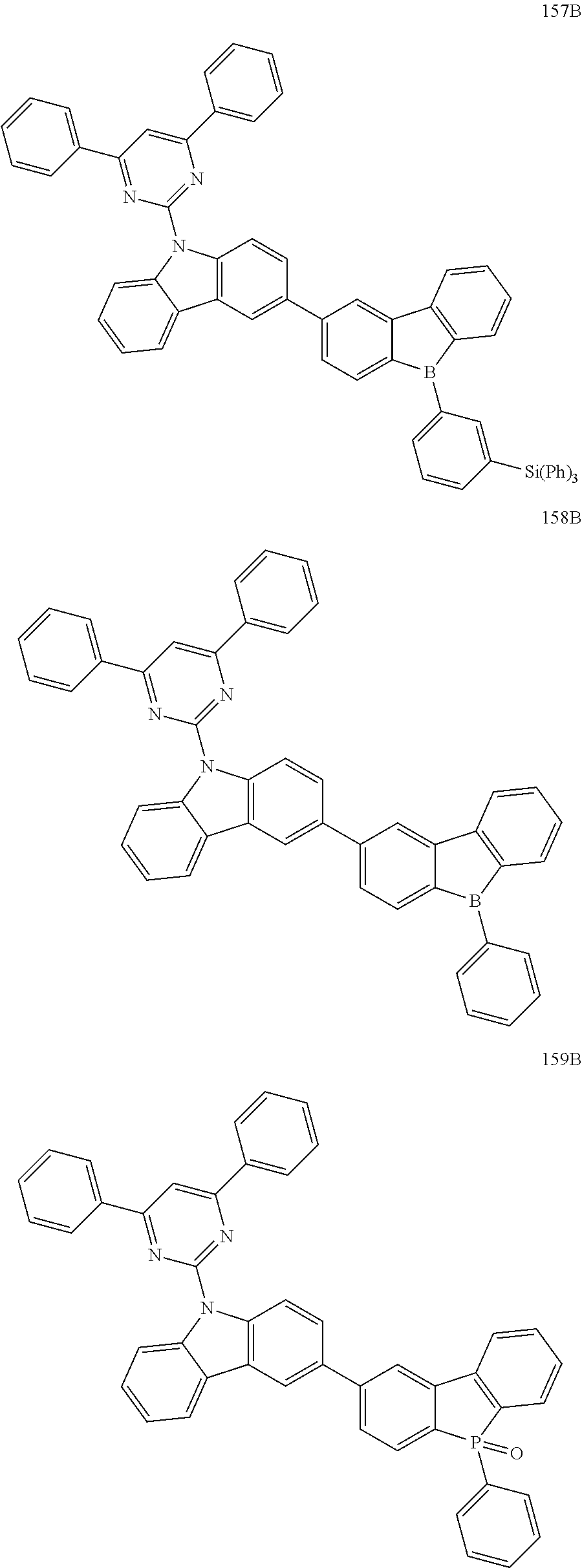
C00116
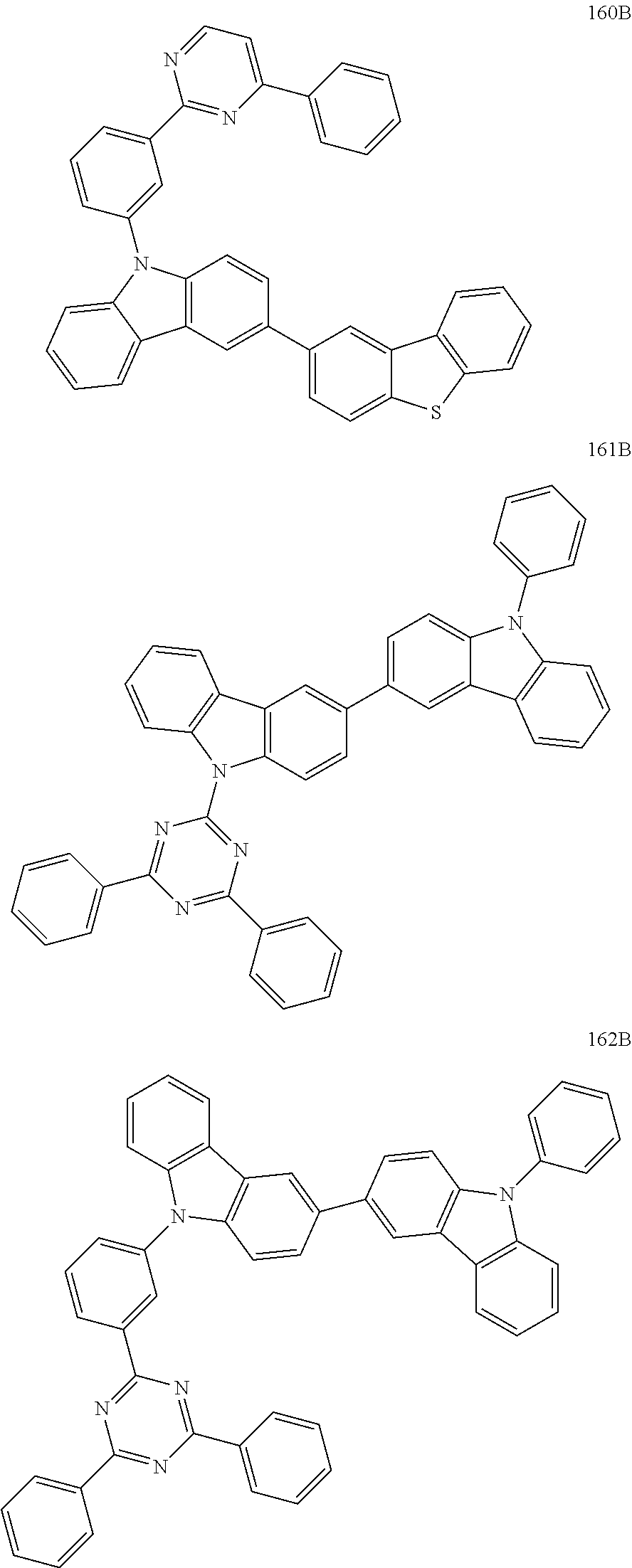
C00117
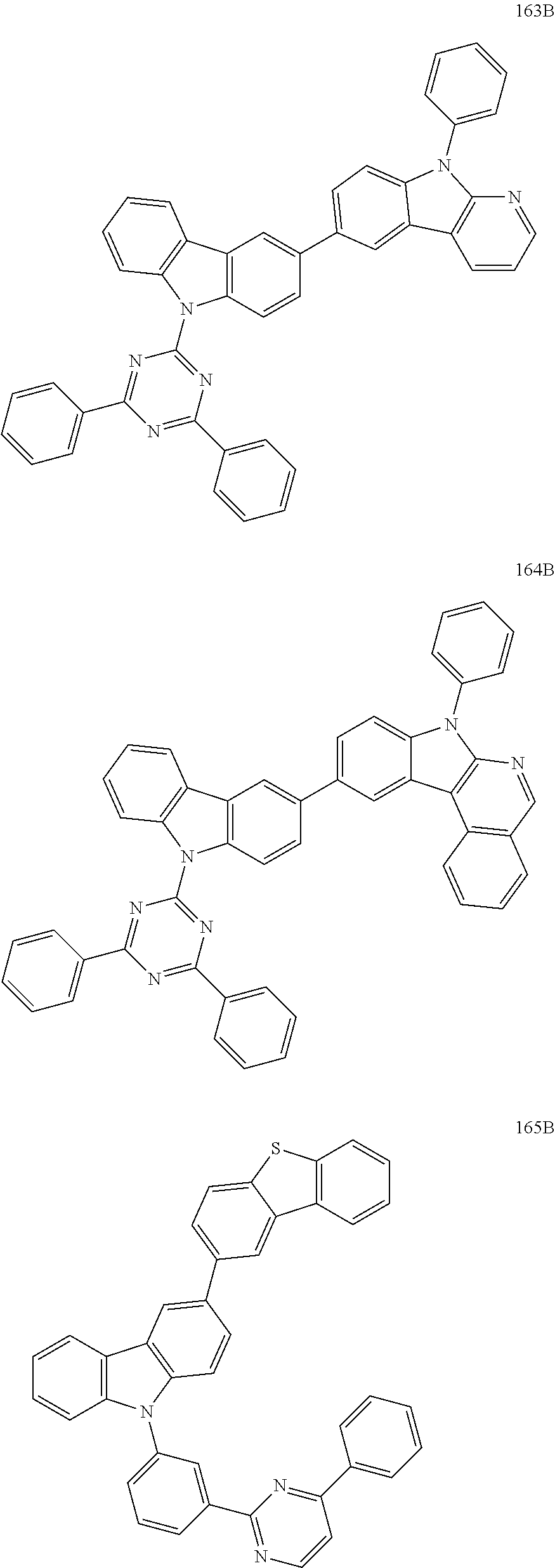
C00118
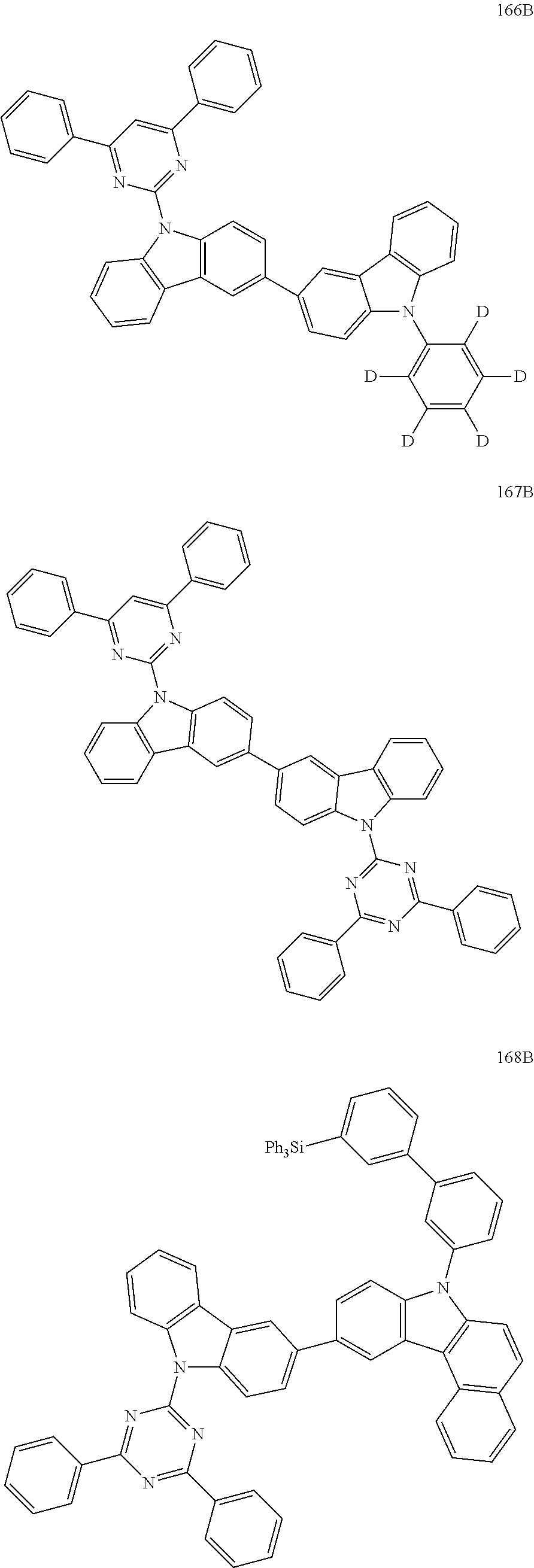
C00119

C00120
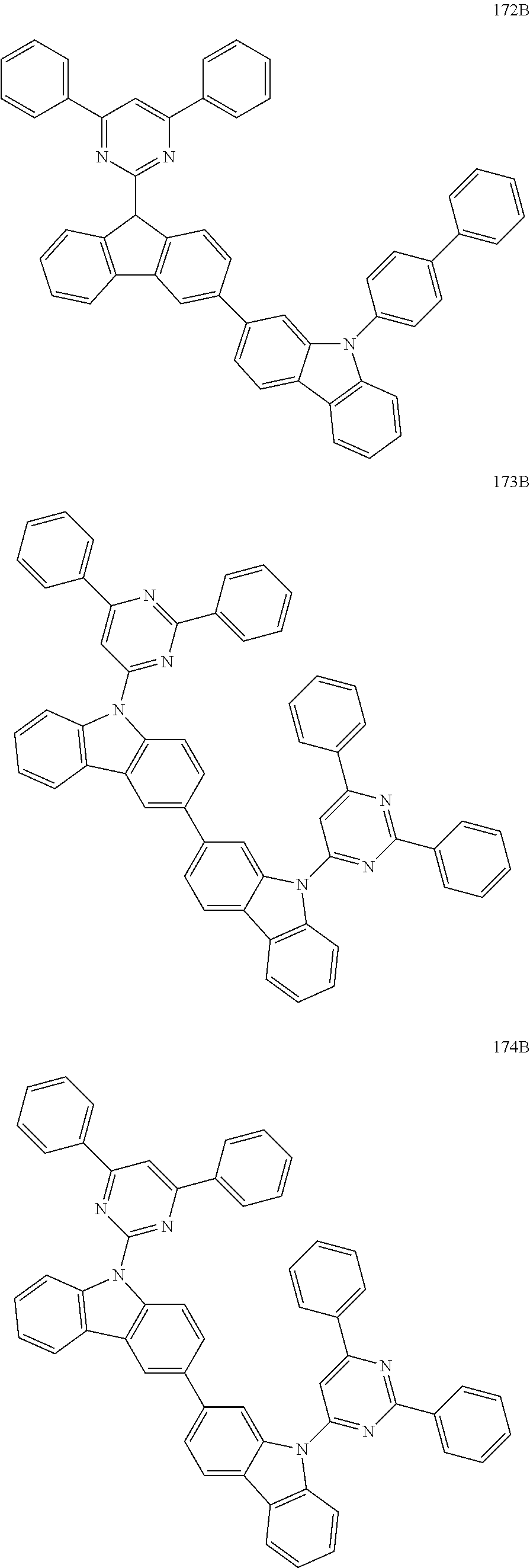
C00121

C00122

C00123
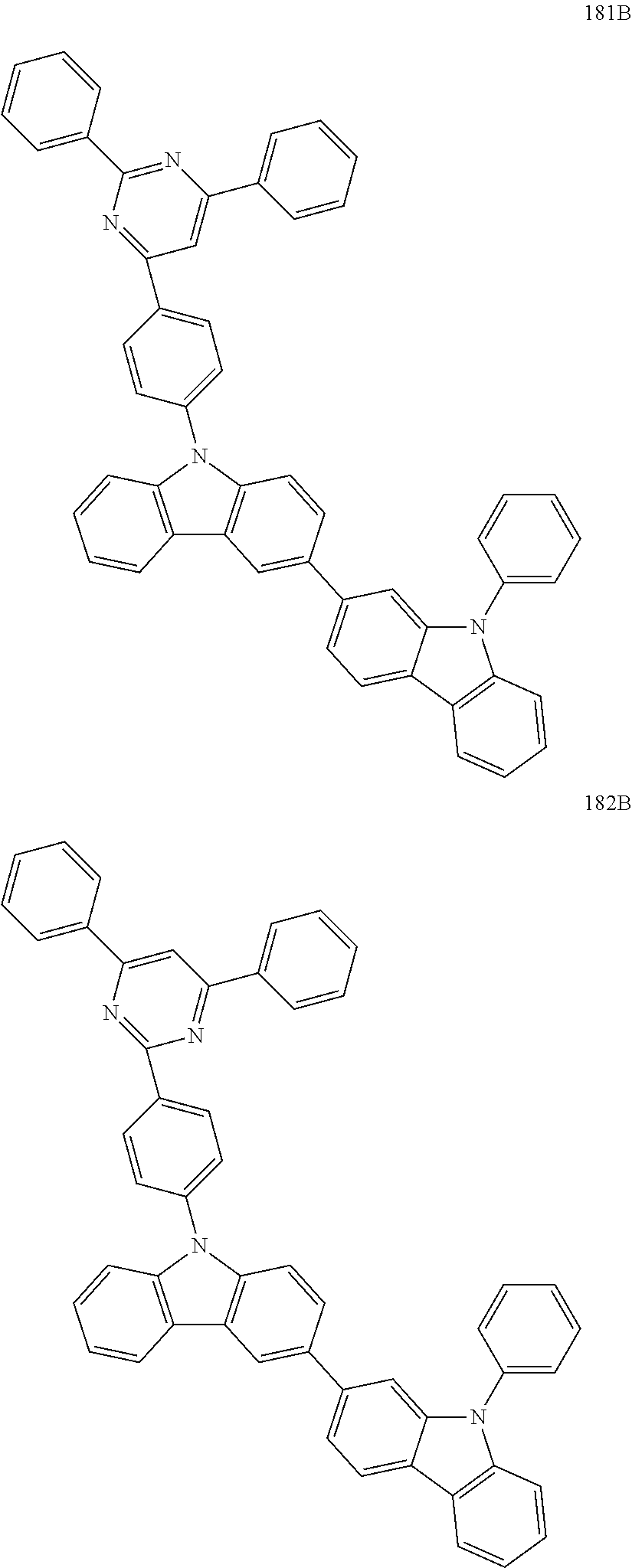
C00124

C00125
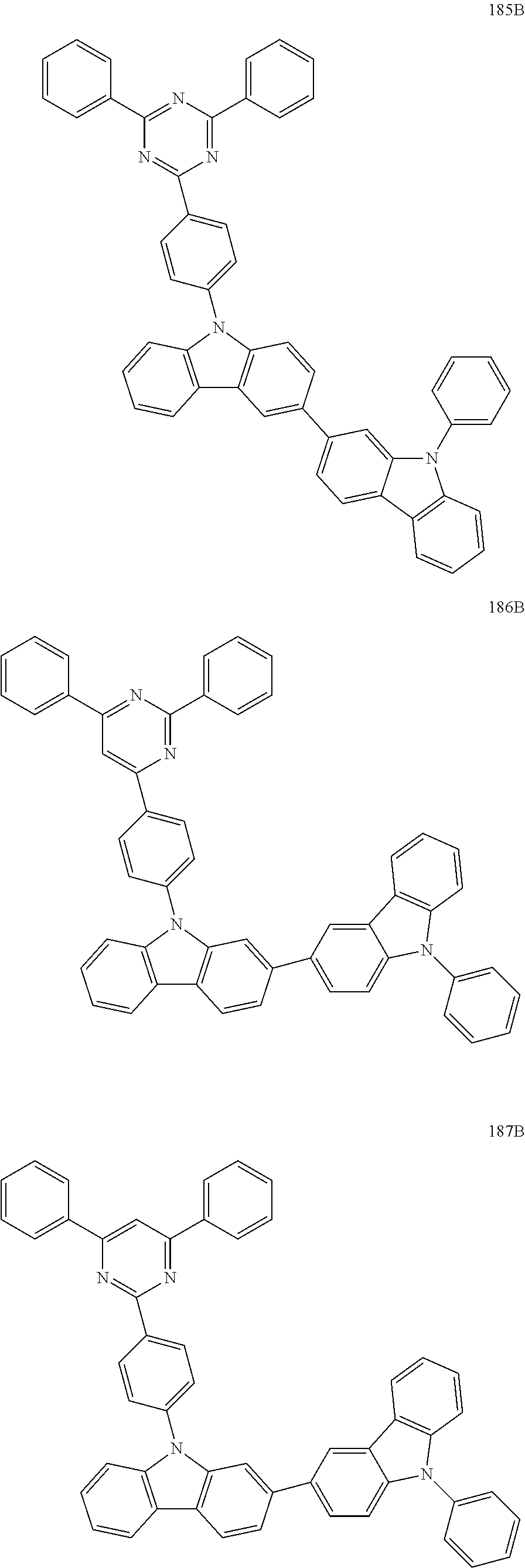
C00126
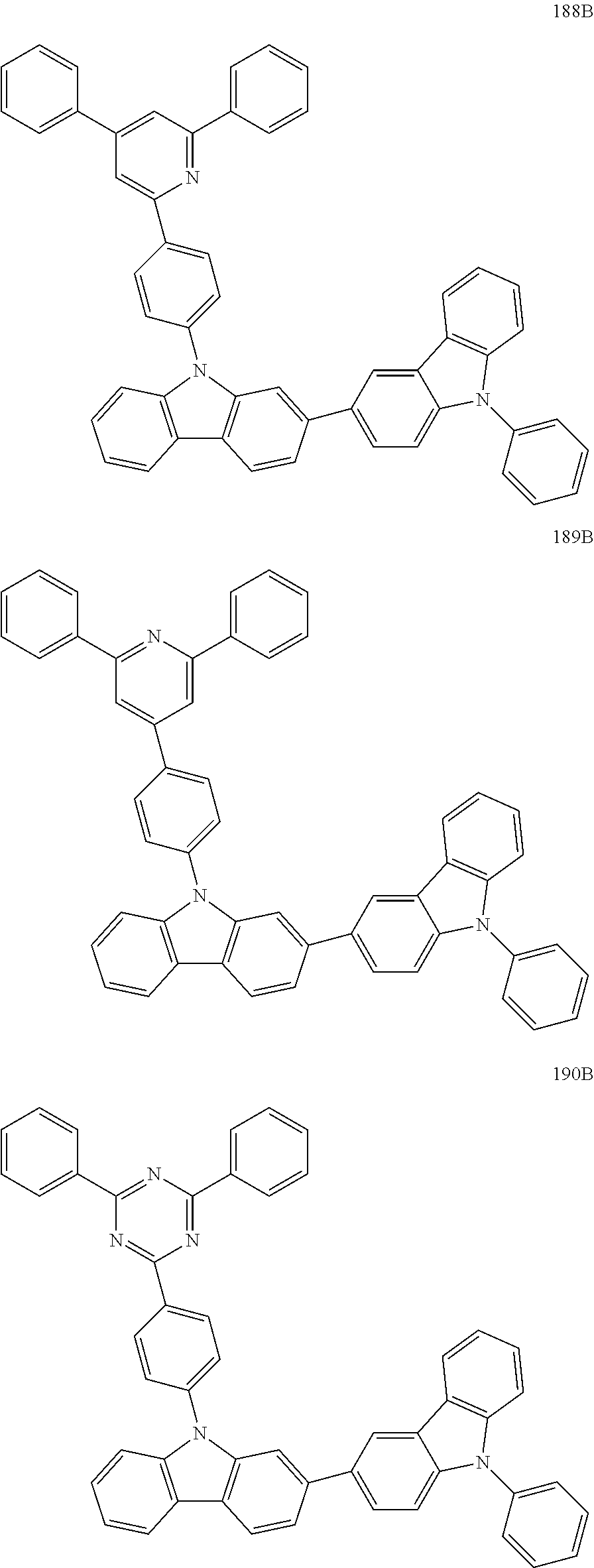
C00127
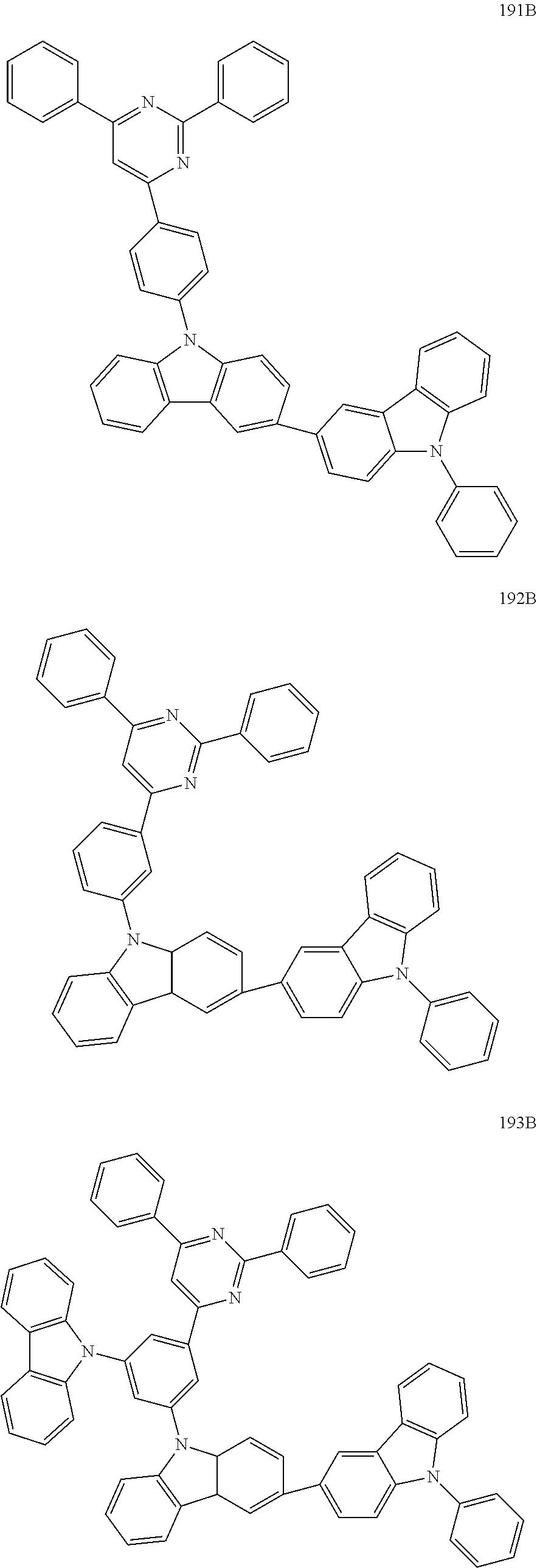
C00128

C00129

C00130

C00131

C00132

C00133
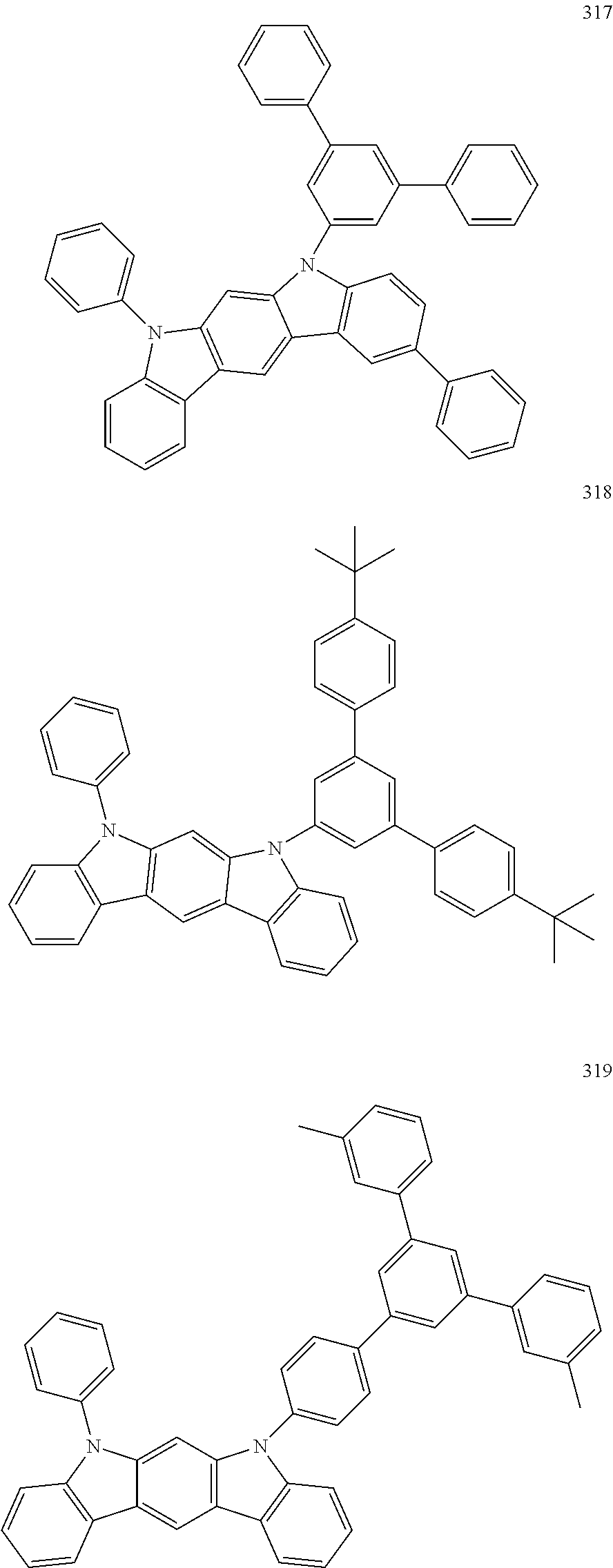
C00134

C00135

C00136

C00137

C00138
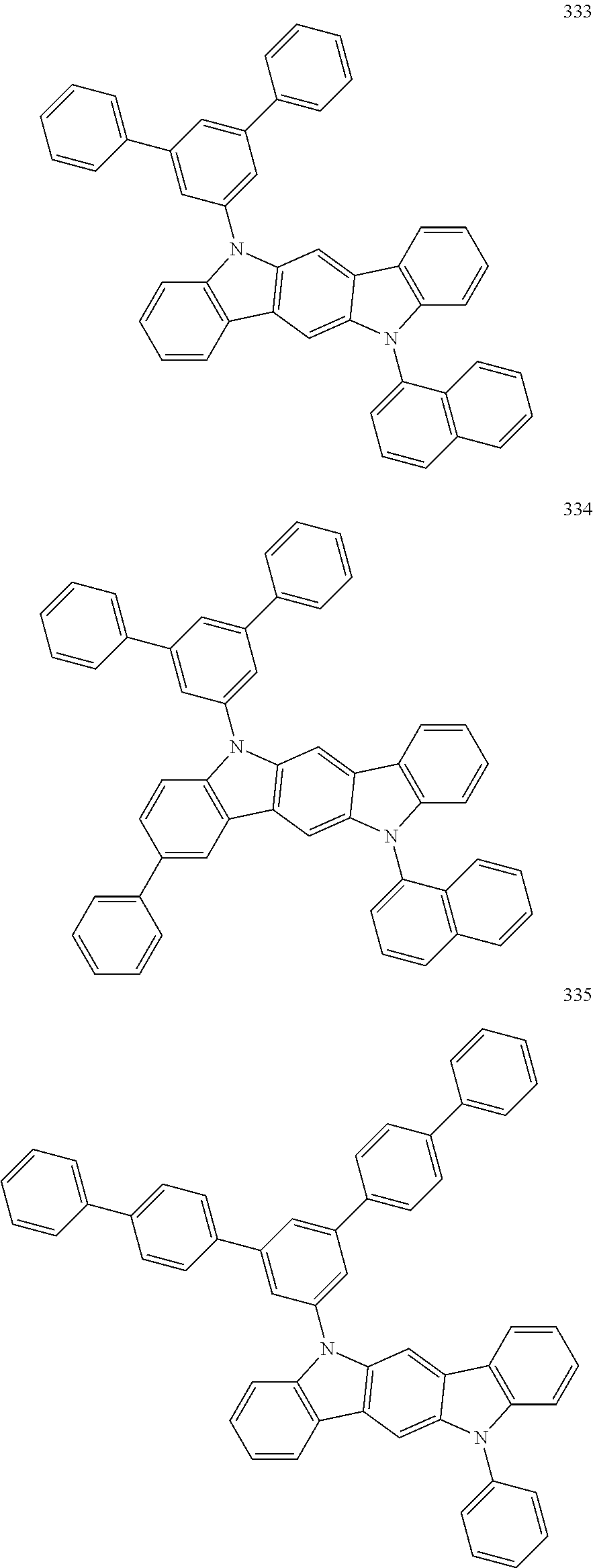
C00139

C00140
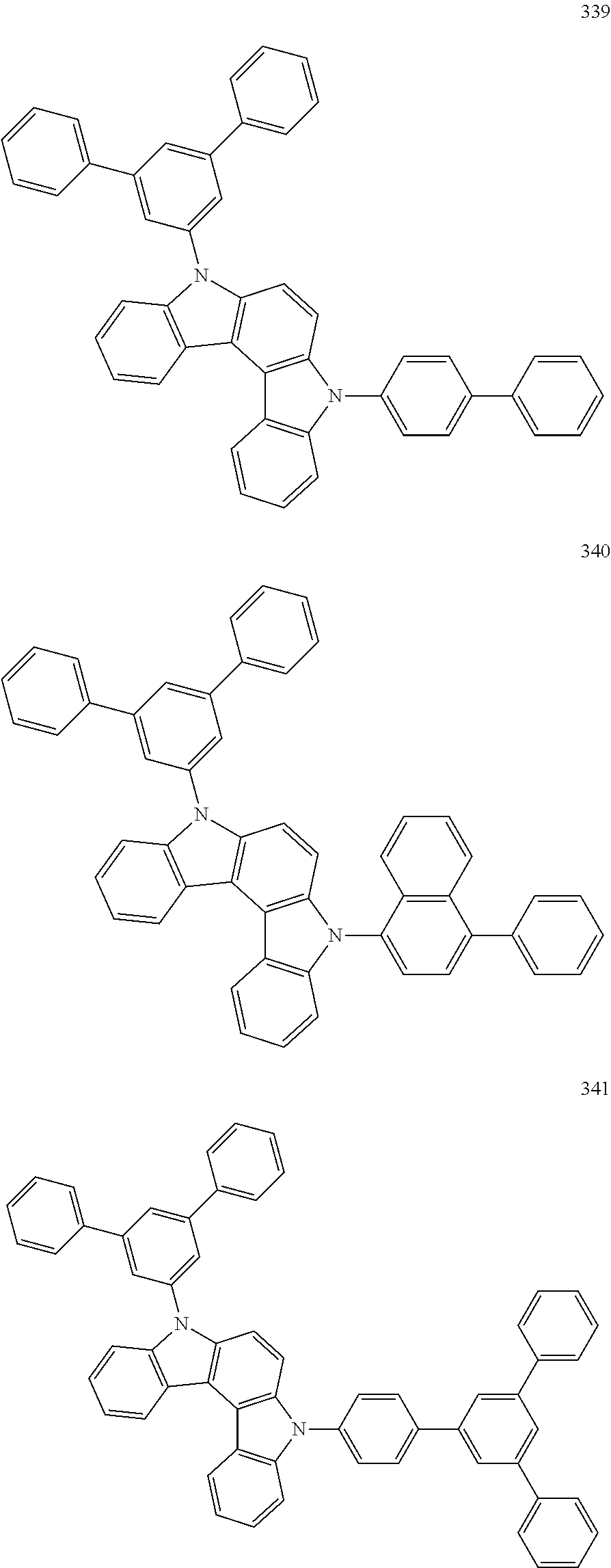
C00141

C00142
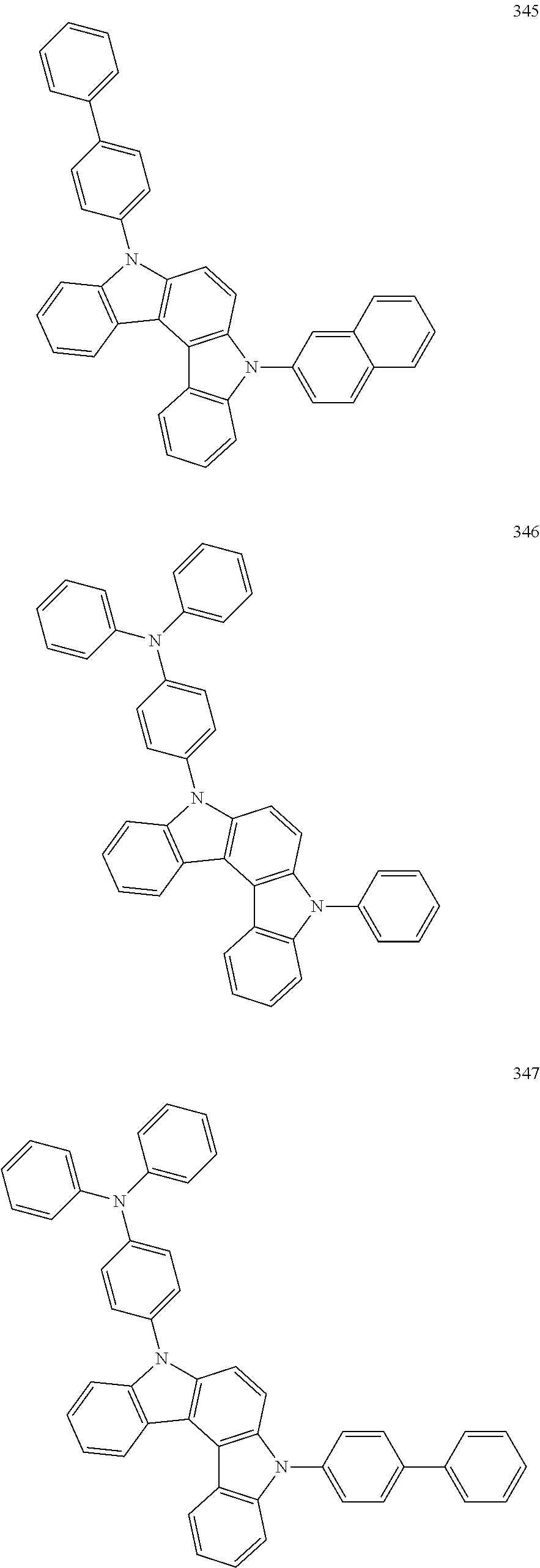
C00143

C00144
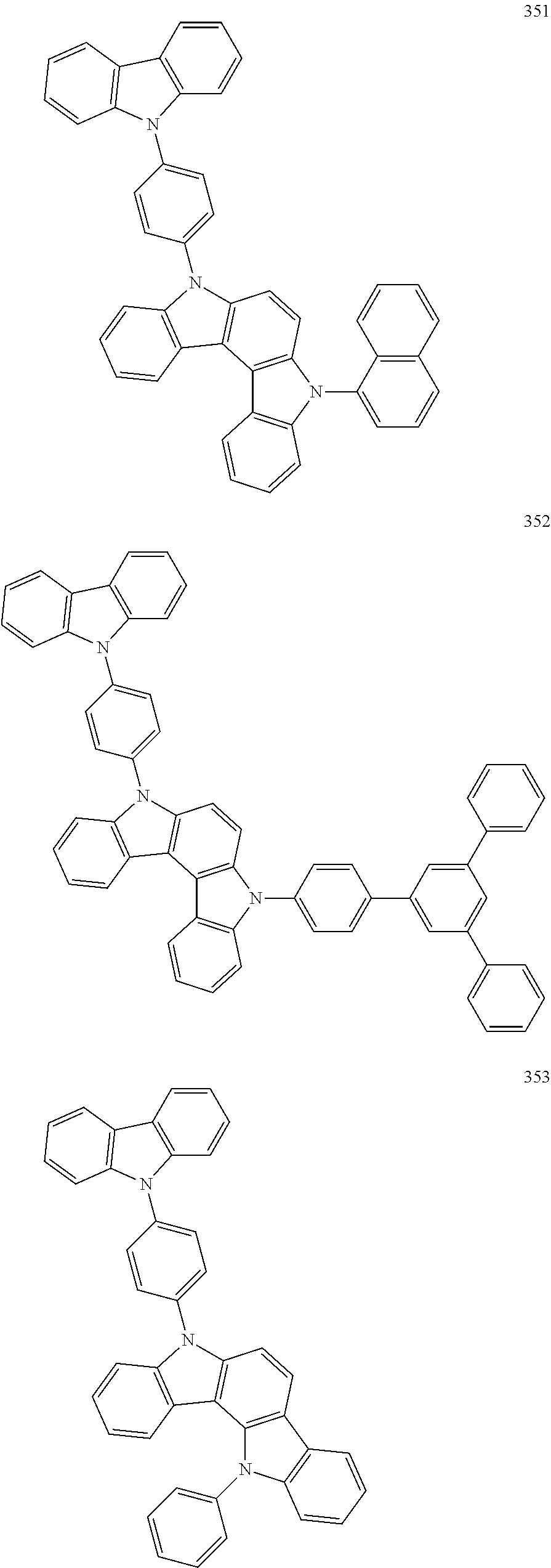
C00145

C00146
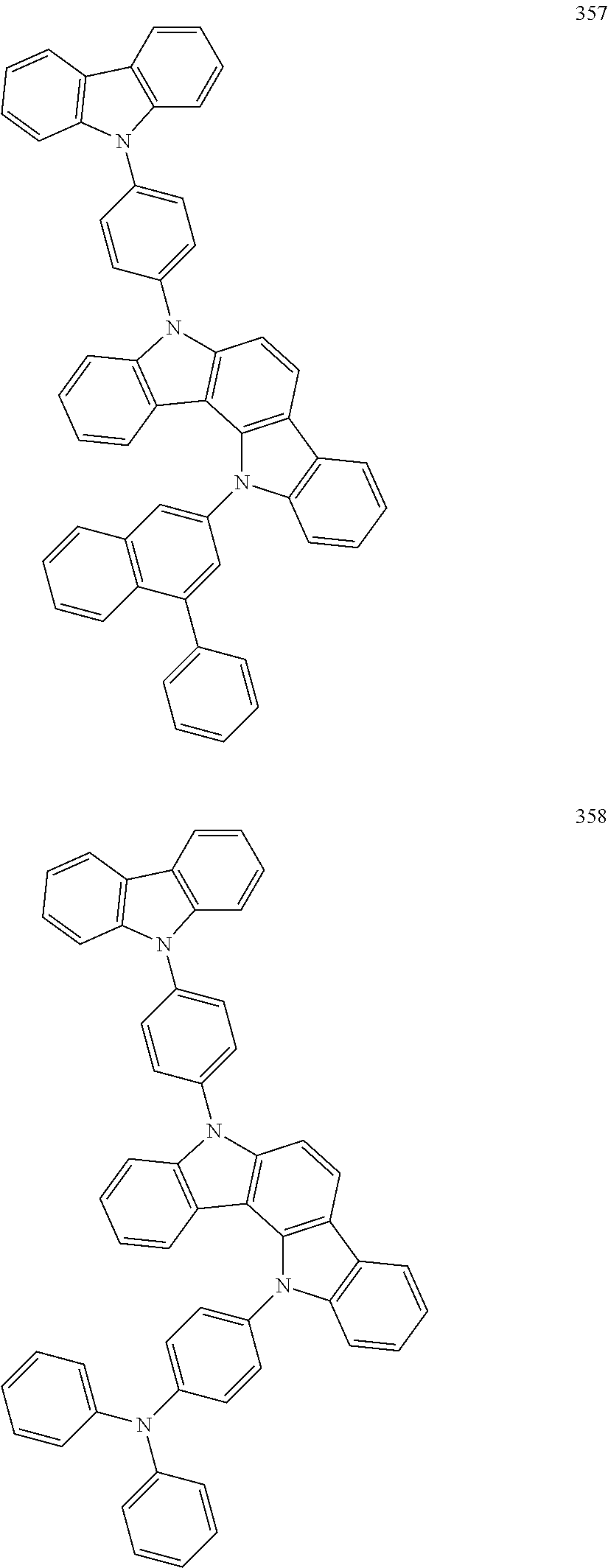
C00147

C00148

C00149
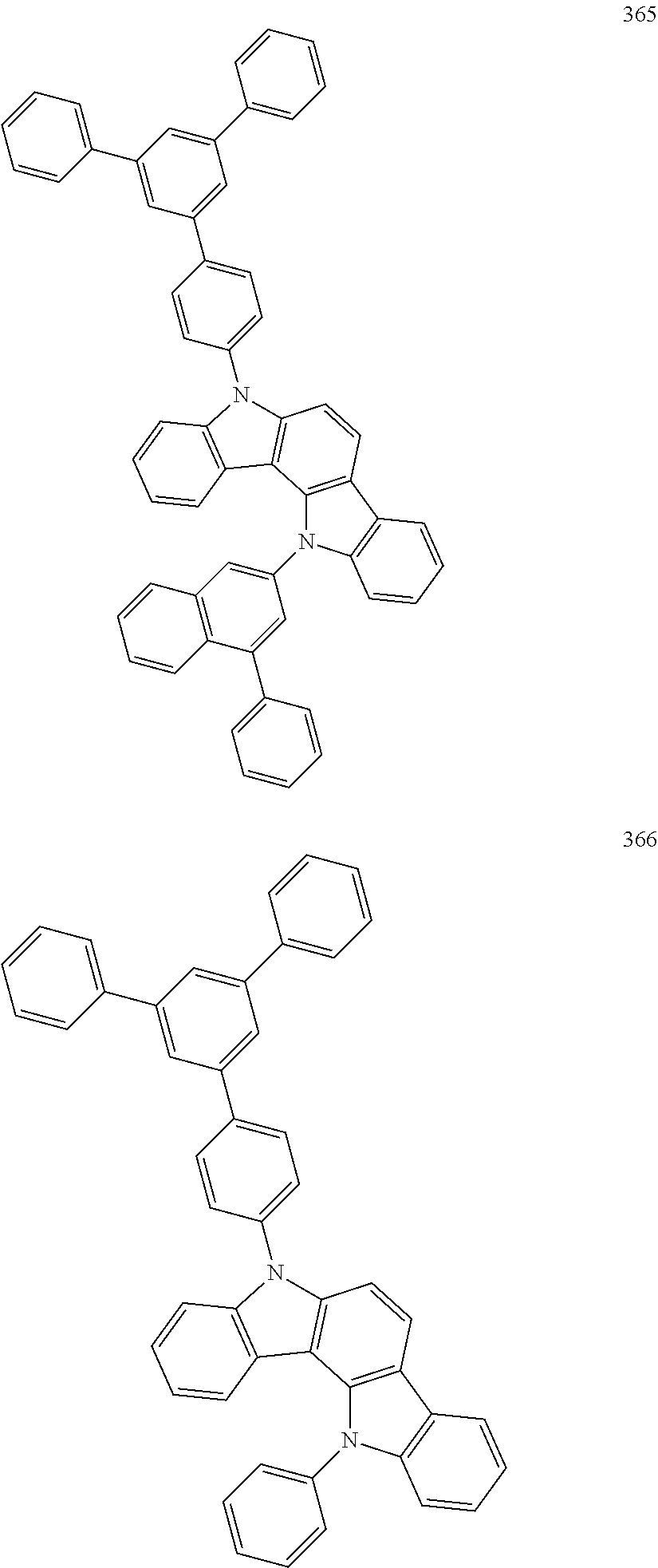
C00150
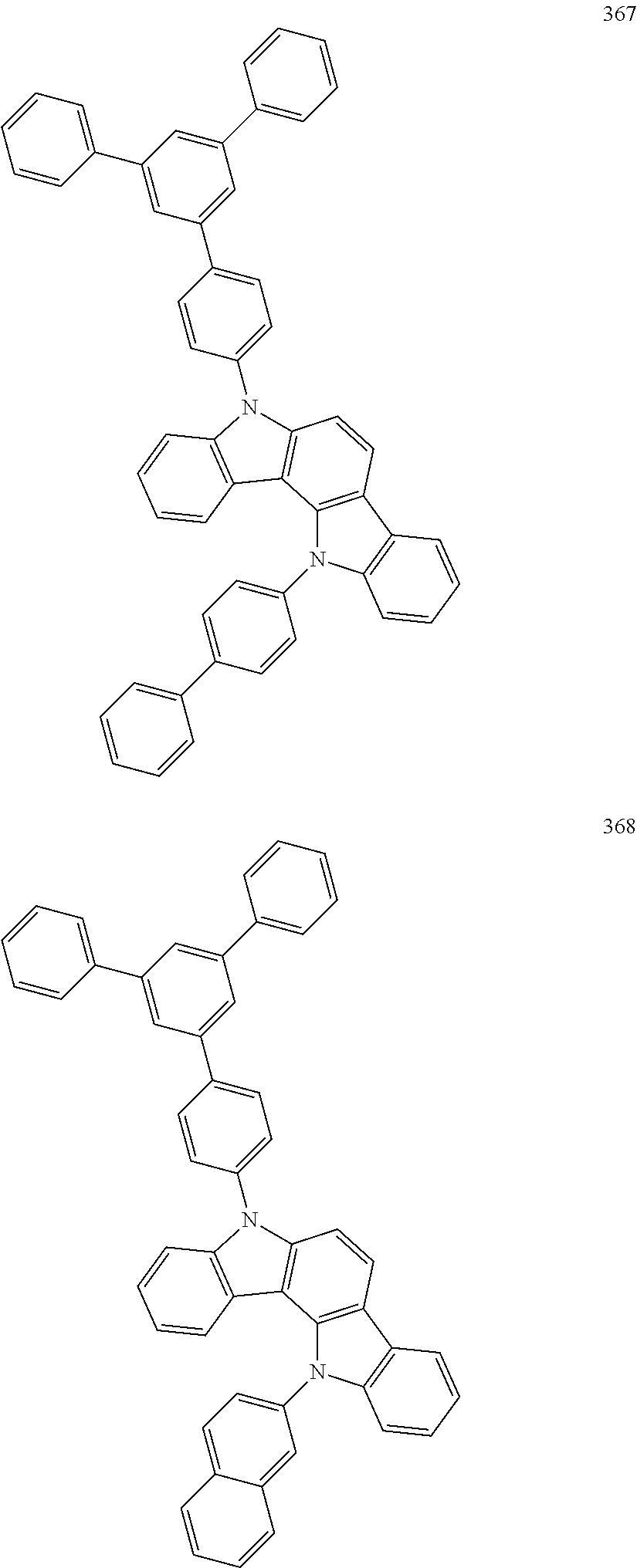
C00151
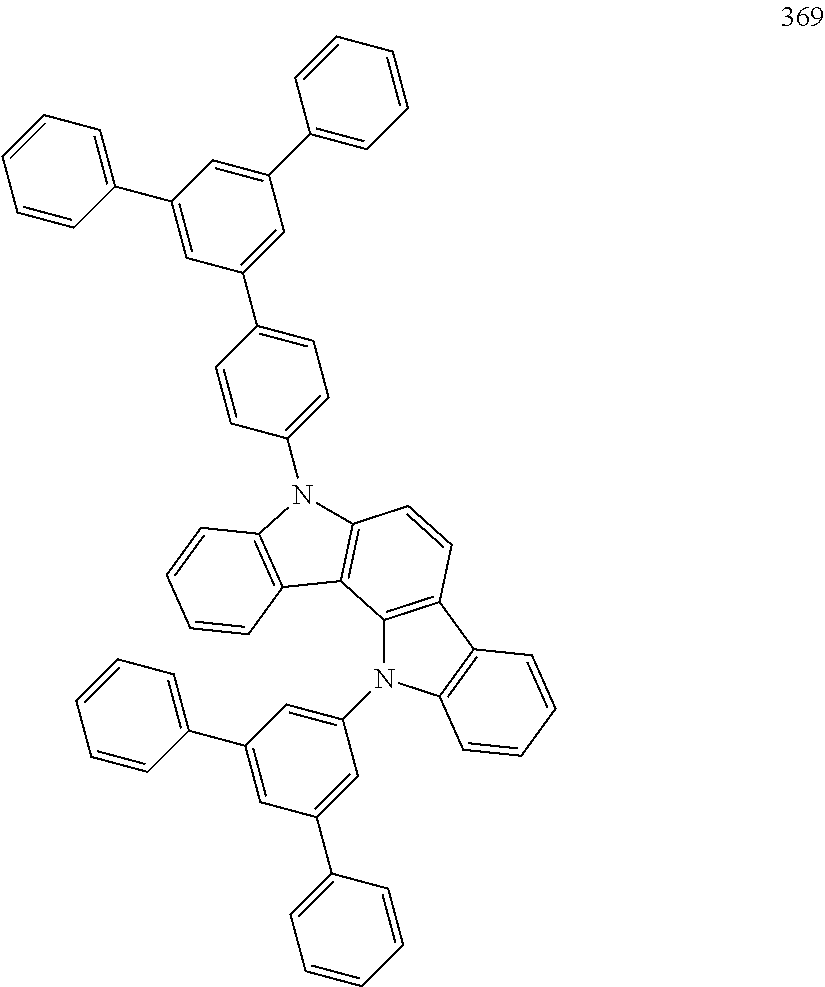
C00152
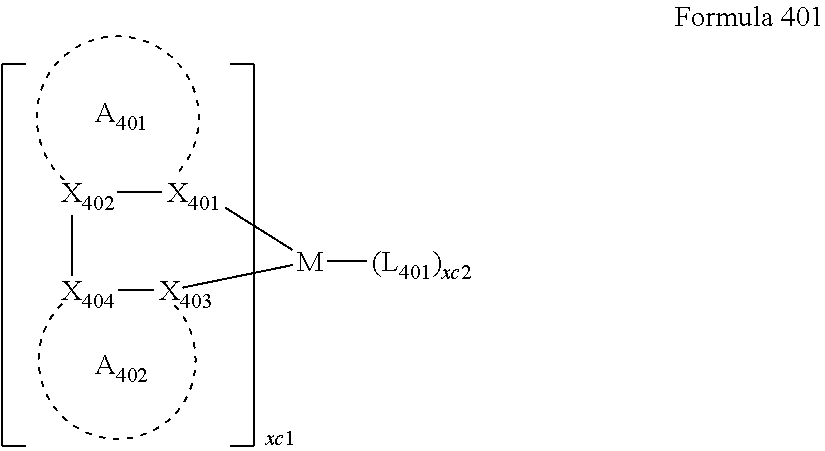
C00153
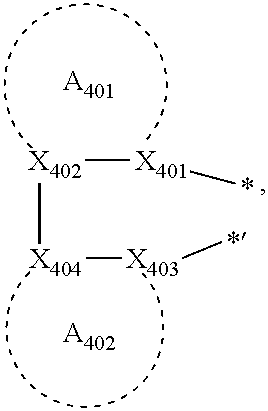
C00154

C00155

C00156

C00157

C00158

C00159

C00160

C00161

C00162

C00163

C00164

C00165

C00166
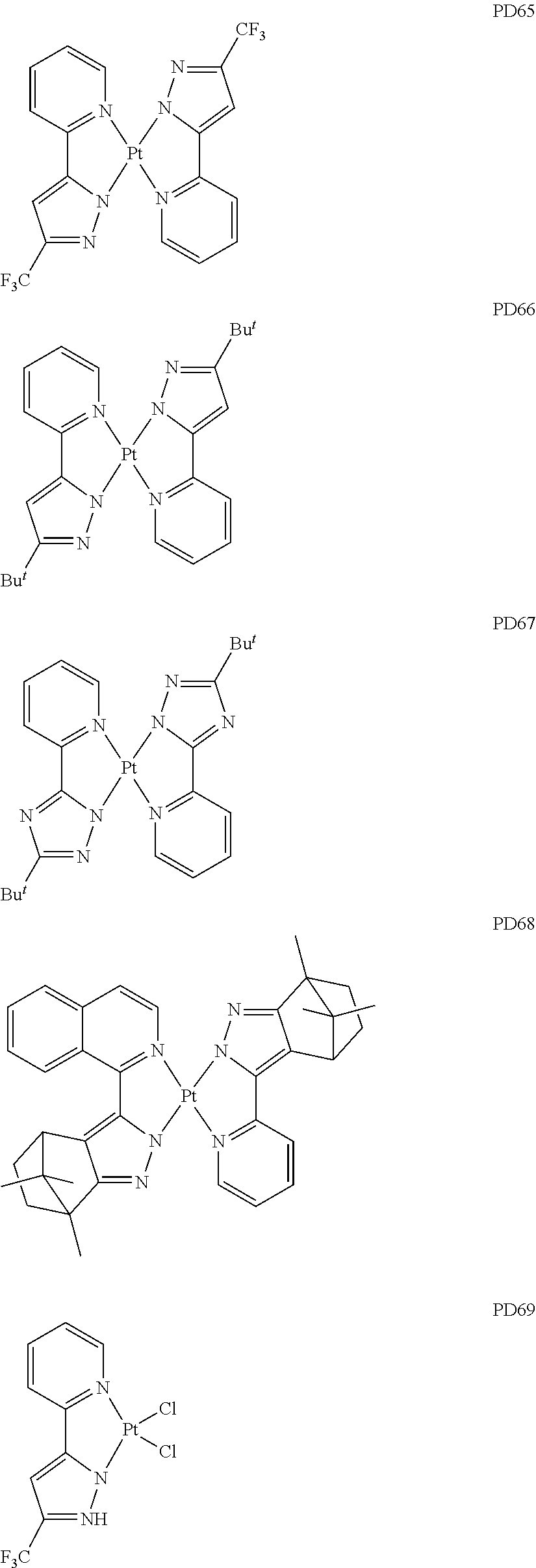
C00167

C00168

C00169
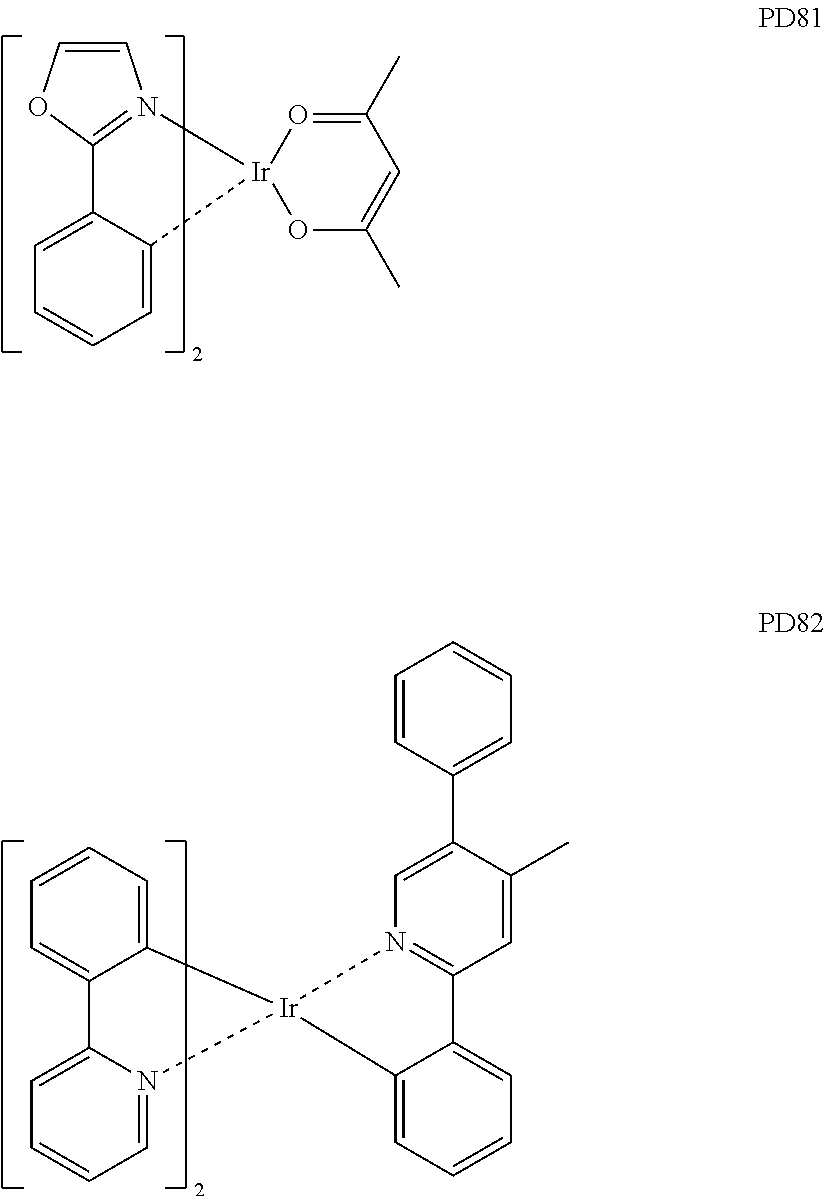
C00170

C00171
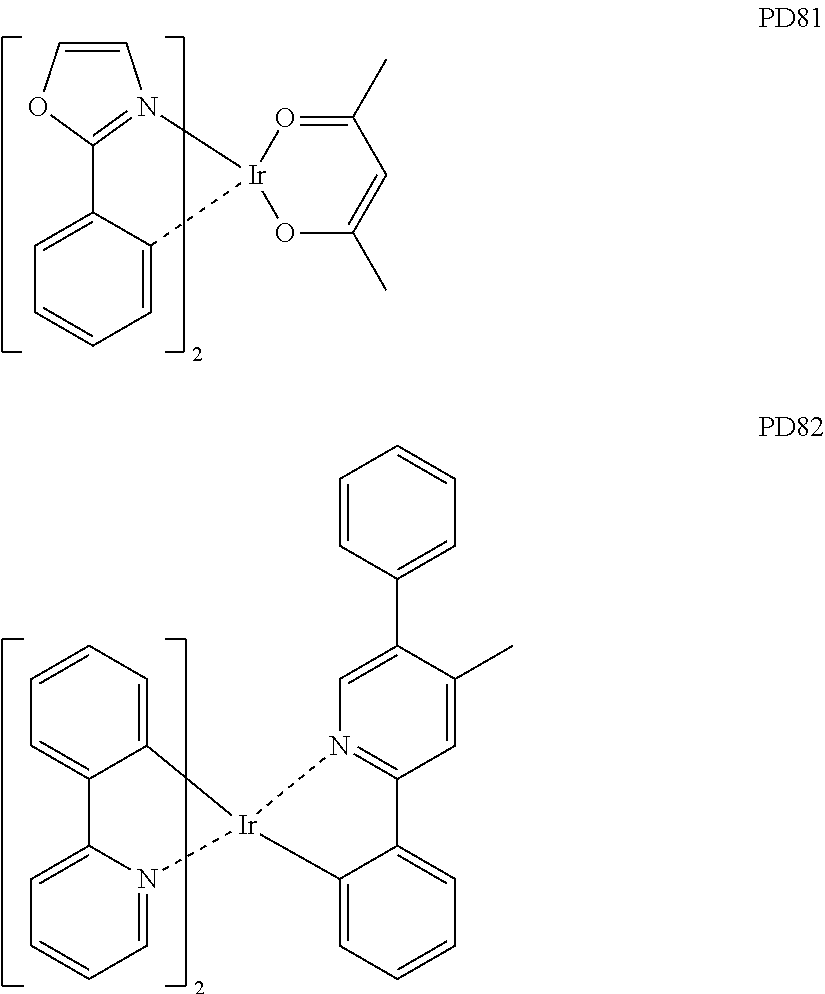
C00172
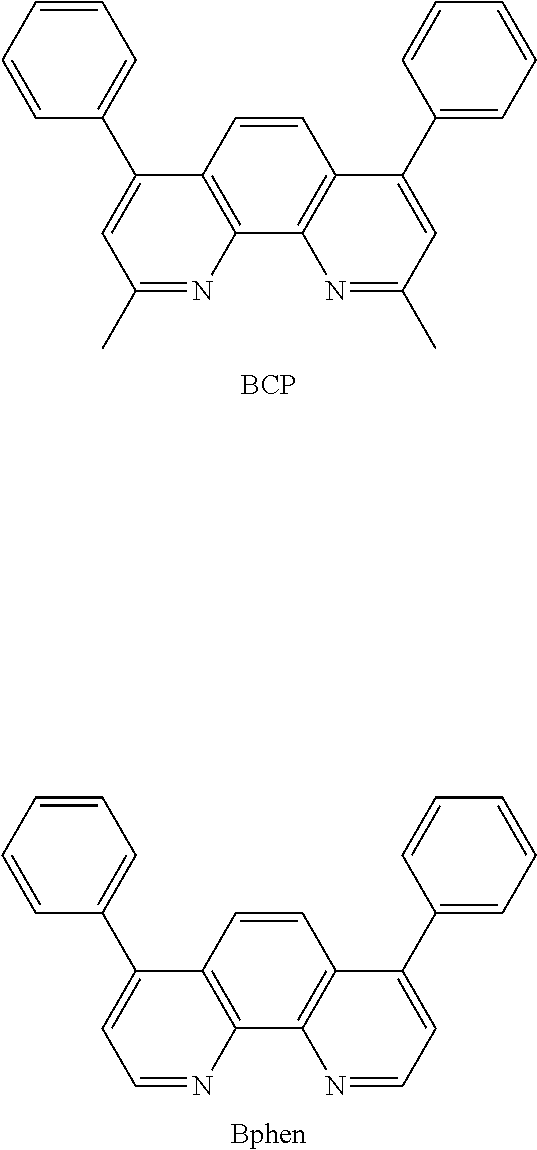
C00173

C00174
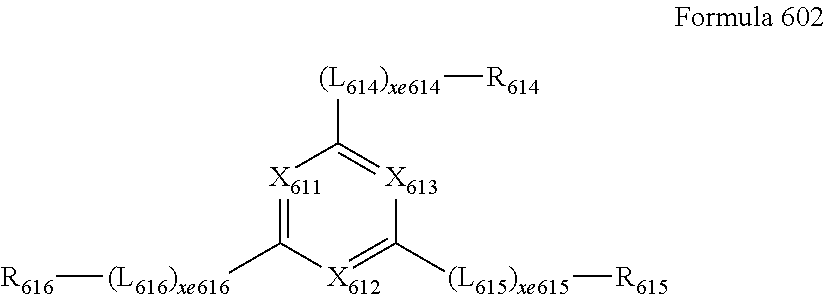
C00175

C00176

C00177

C00178

C00179
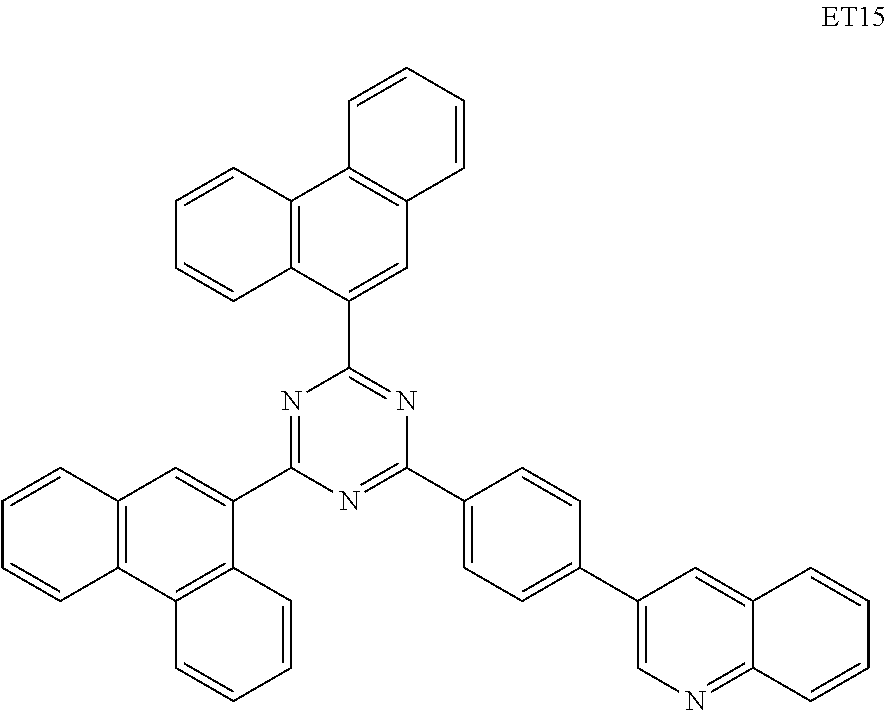
C00180
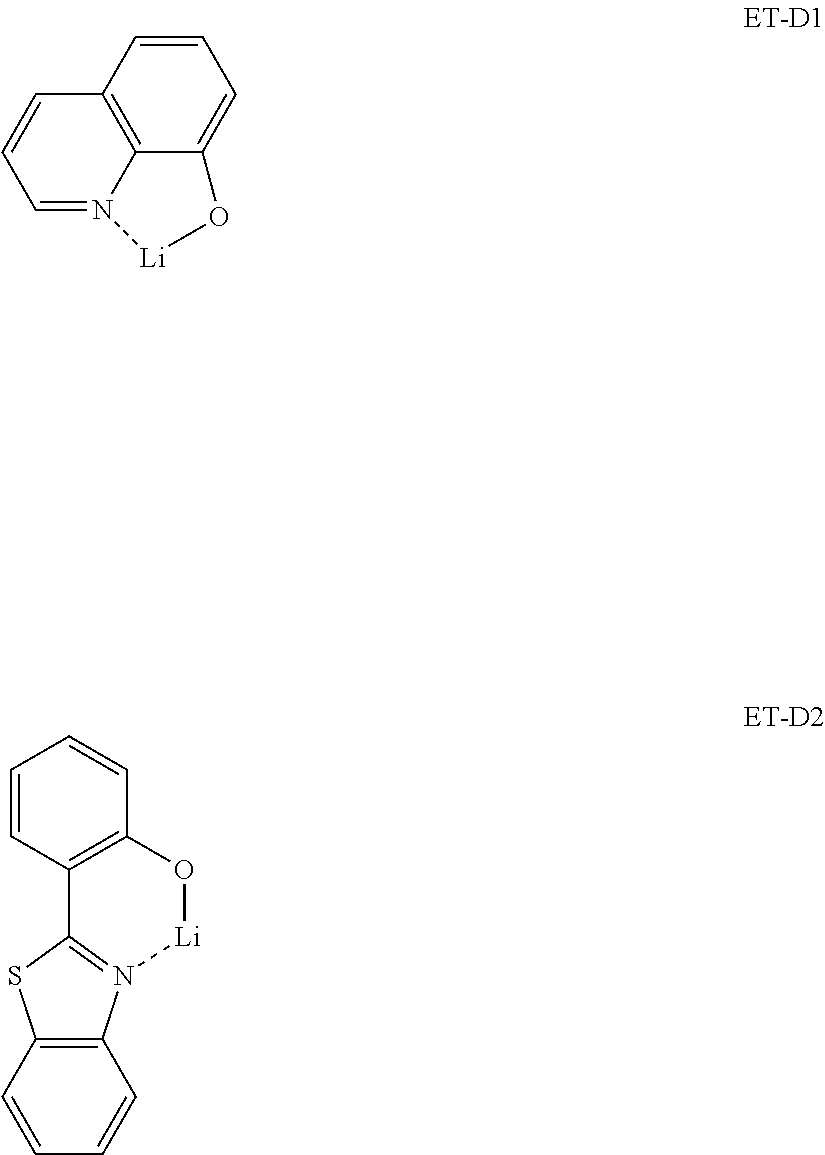
C00181
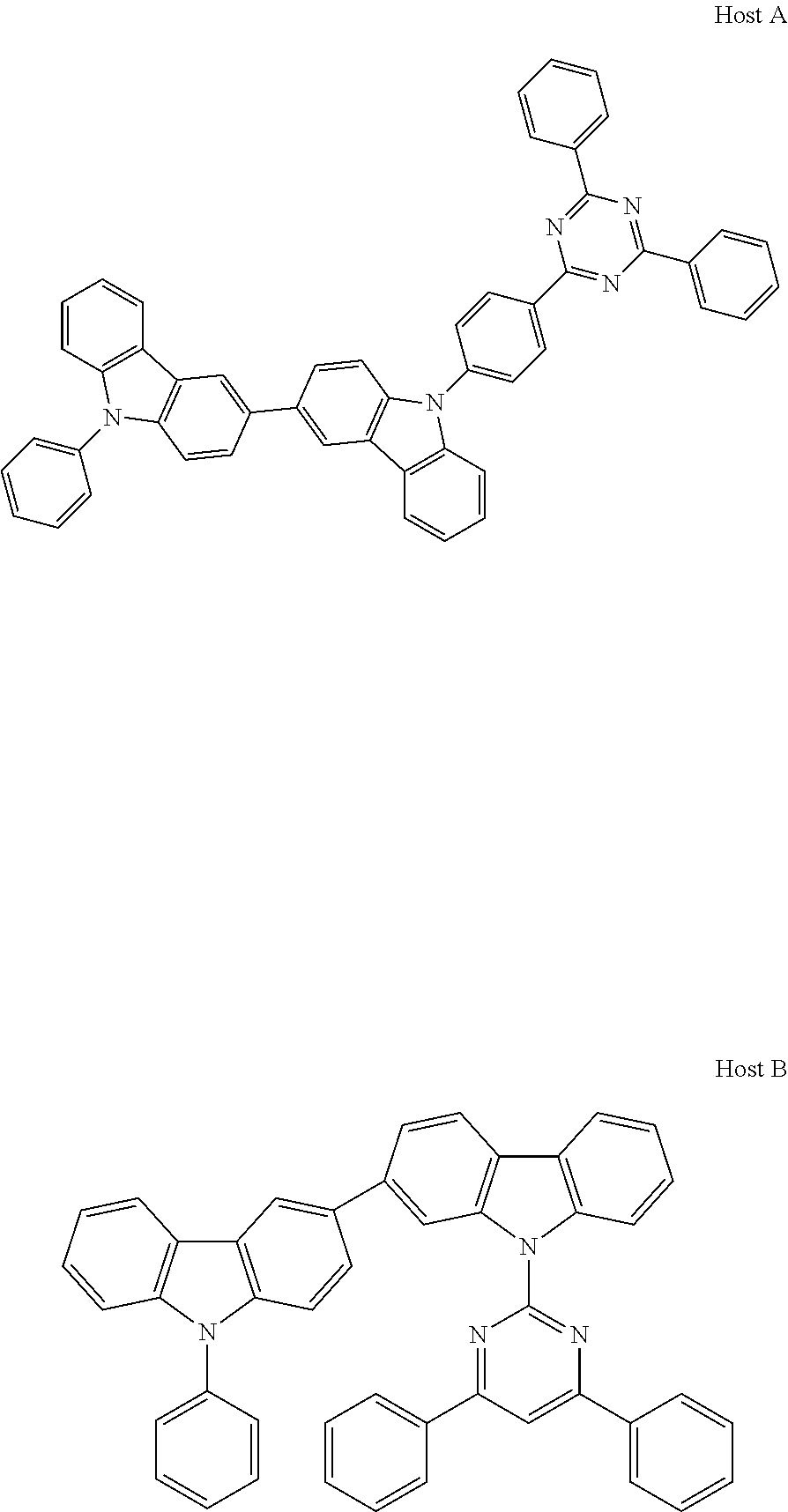
C00182

C00183
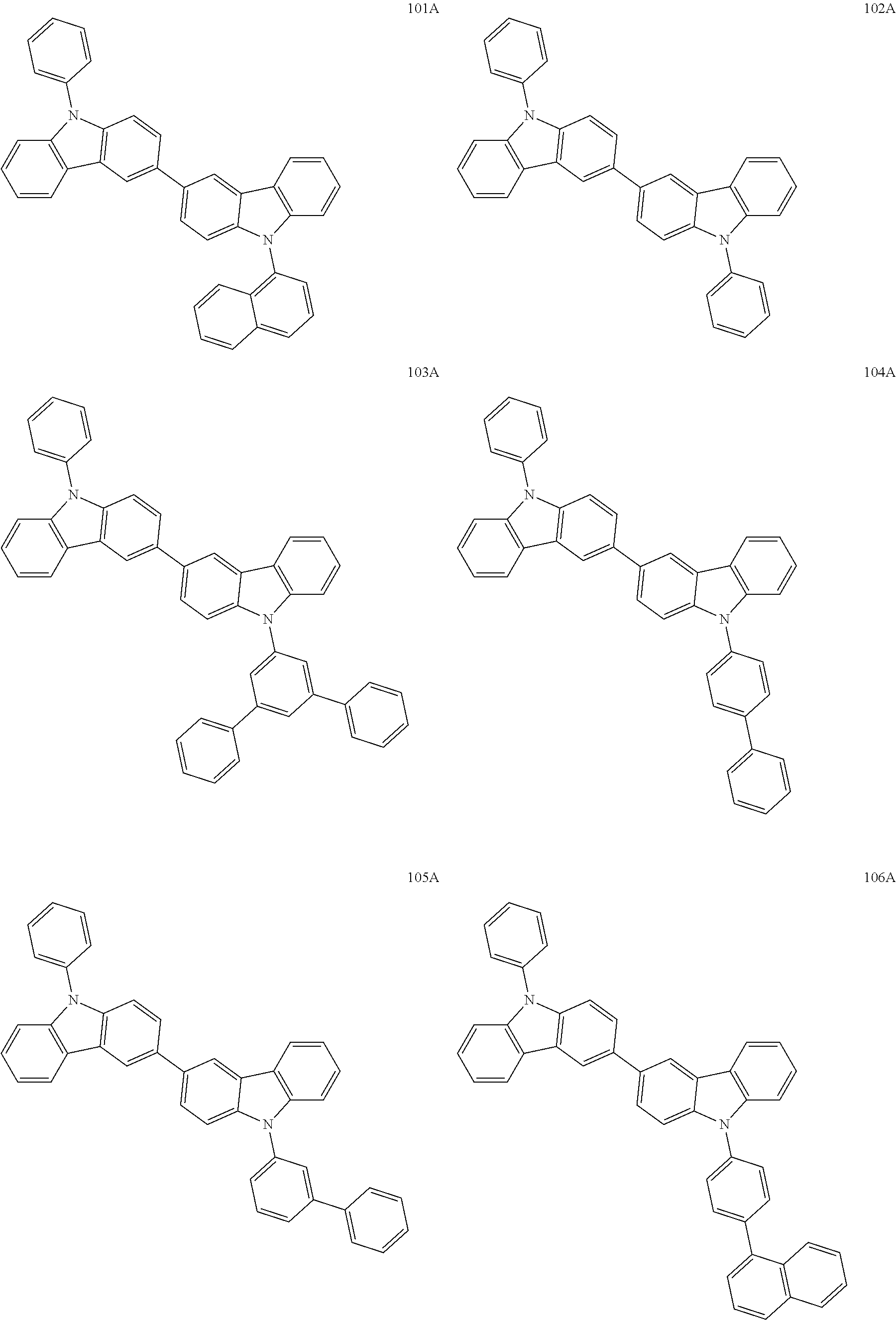
C00184
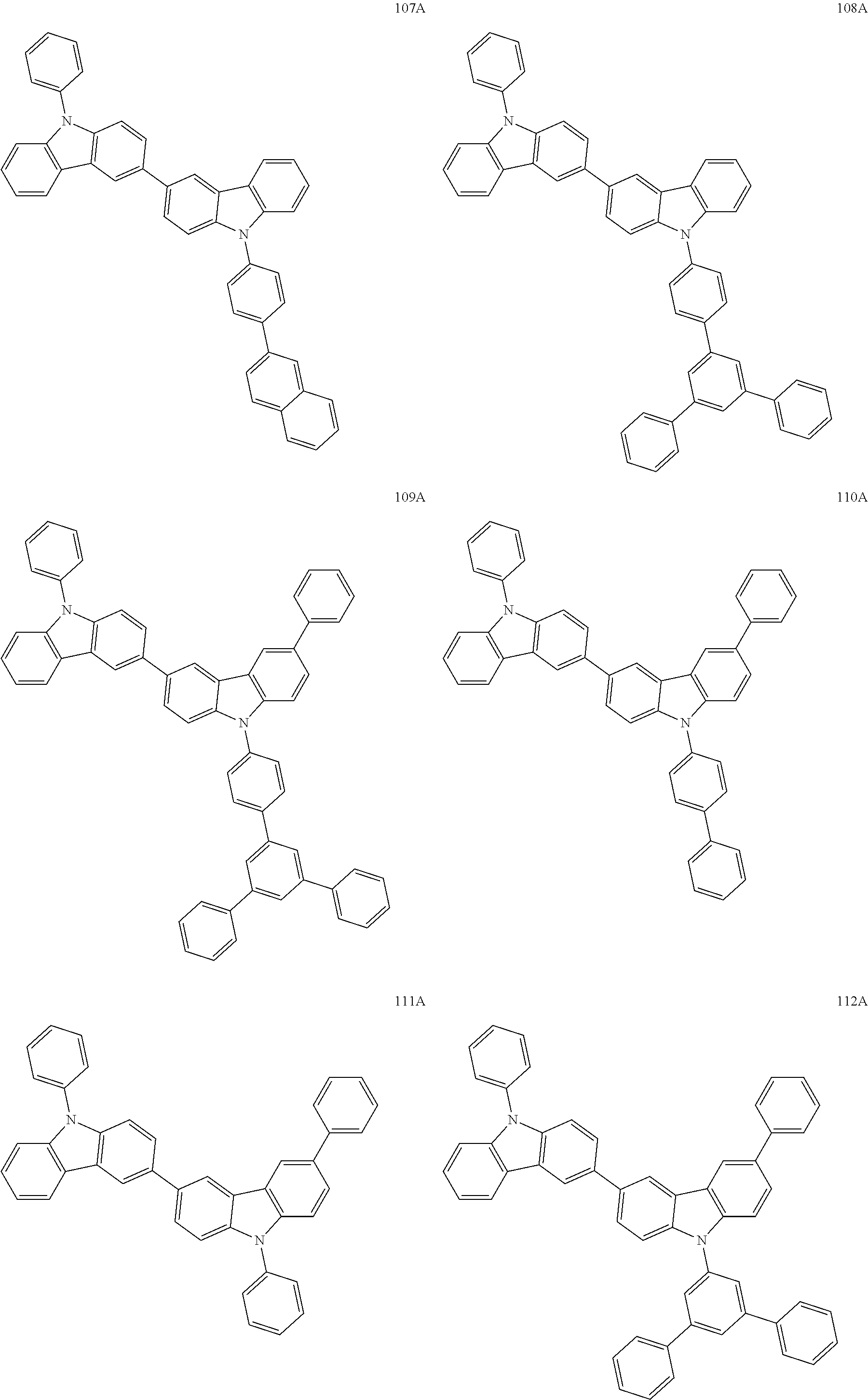
C00185
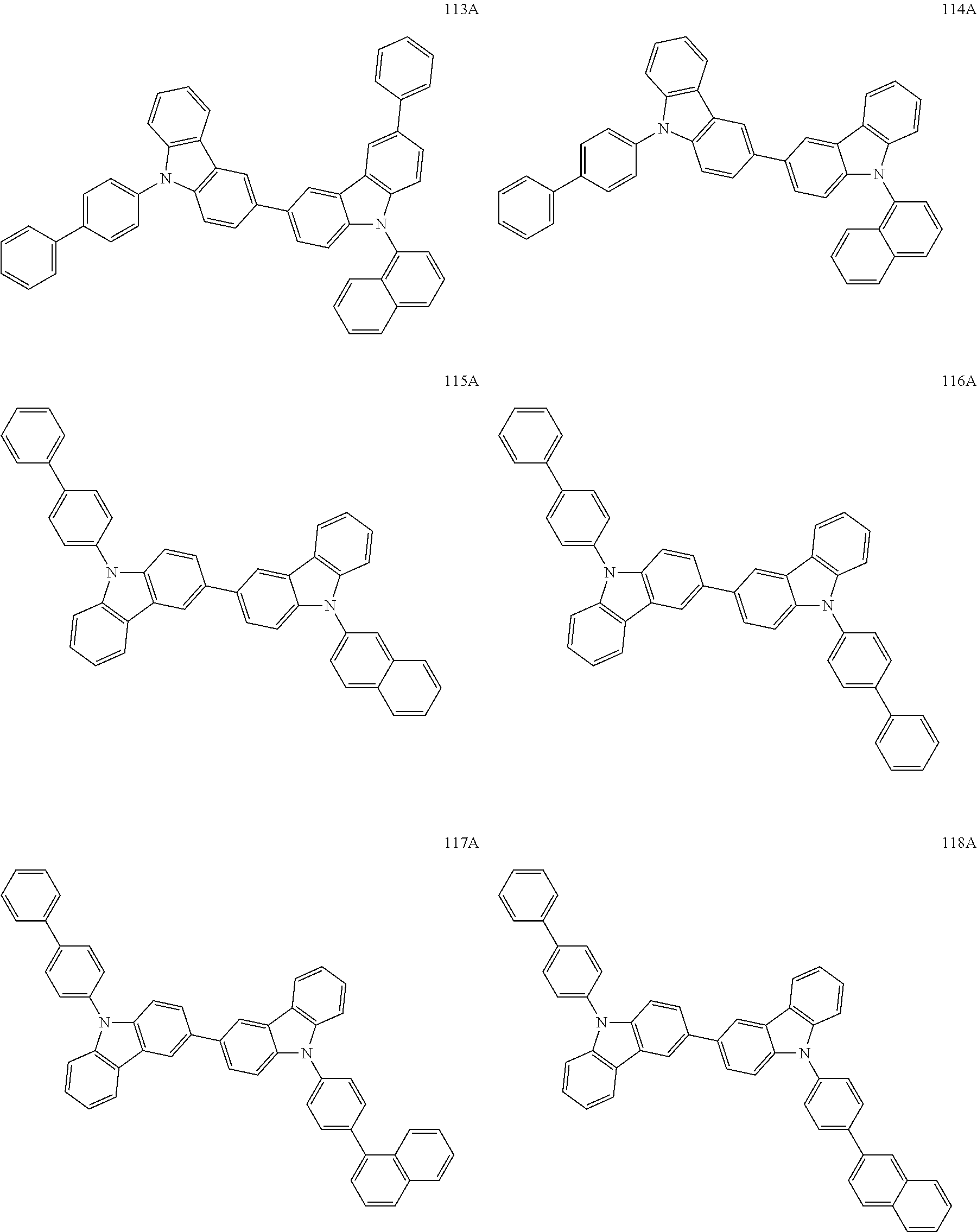
C00186
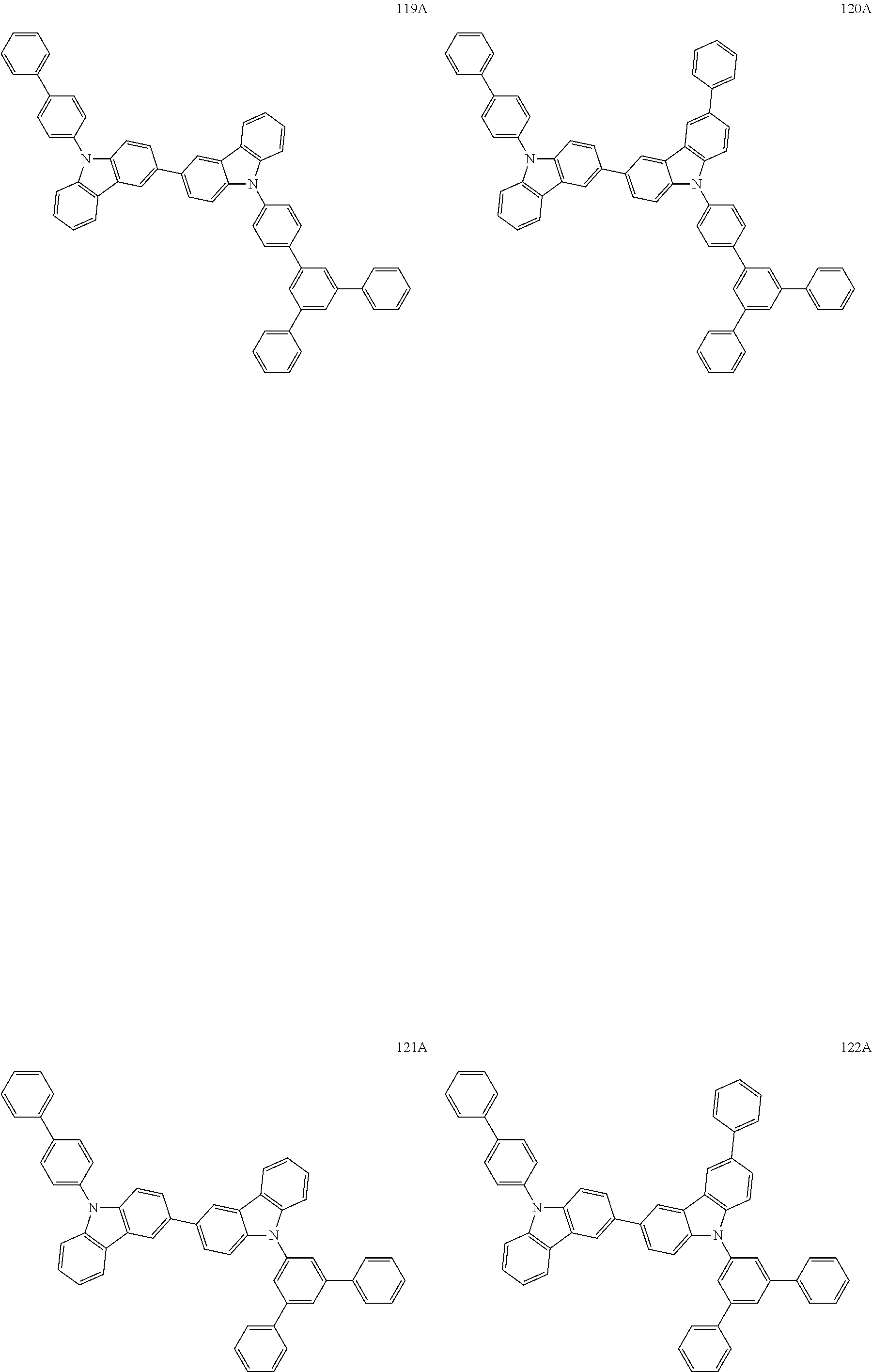
C00187
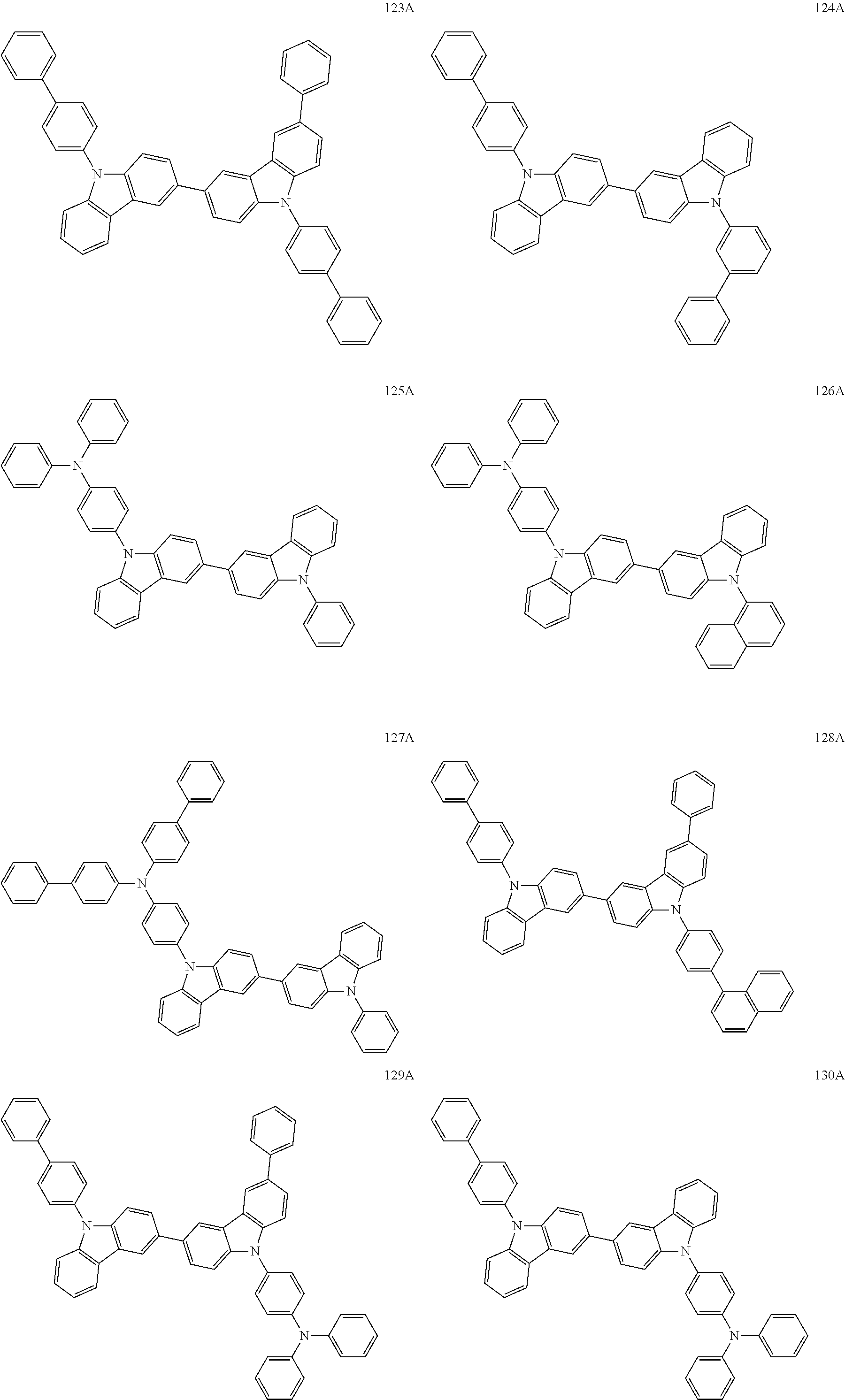
C00188
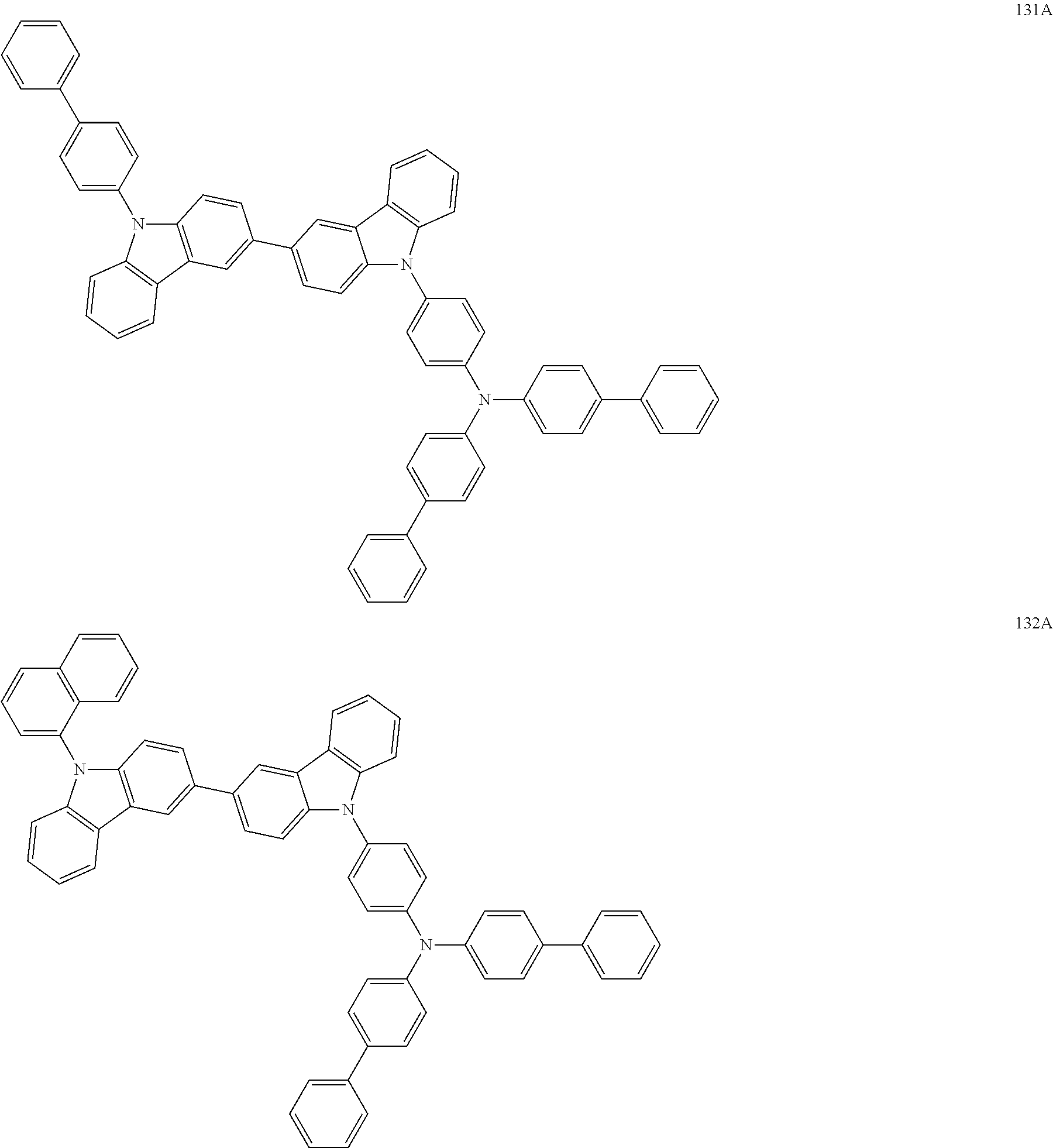
C00189
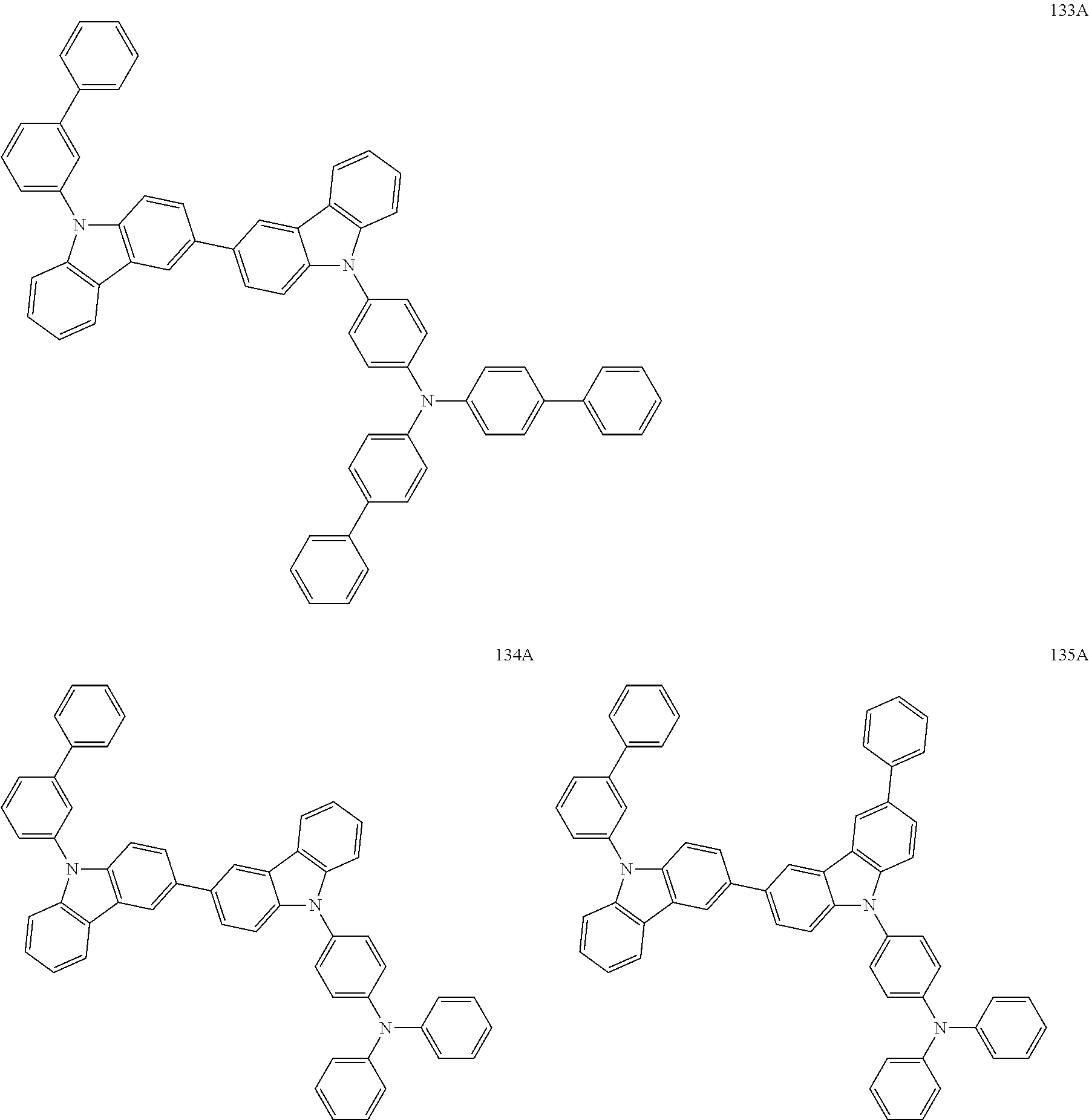
C00190
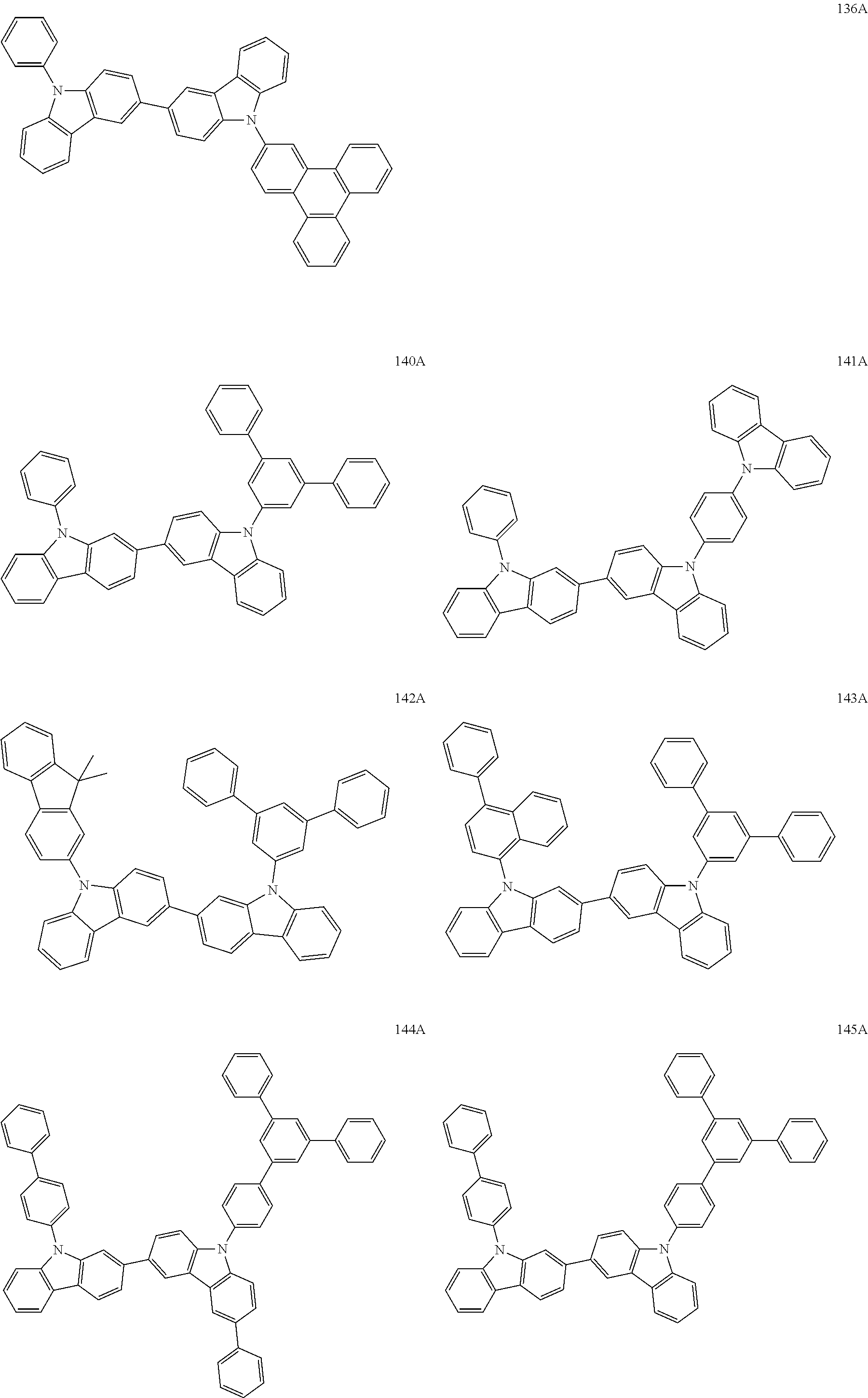
C00191
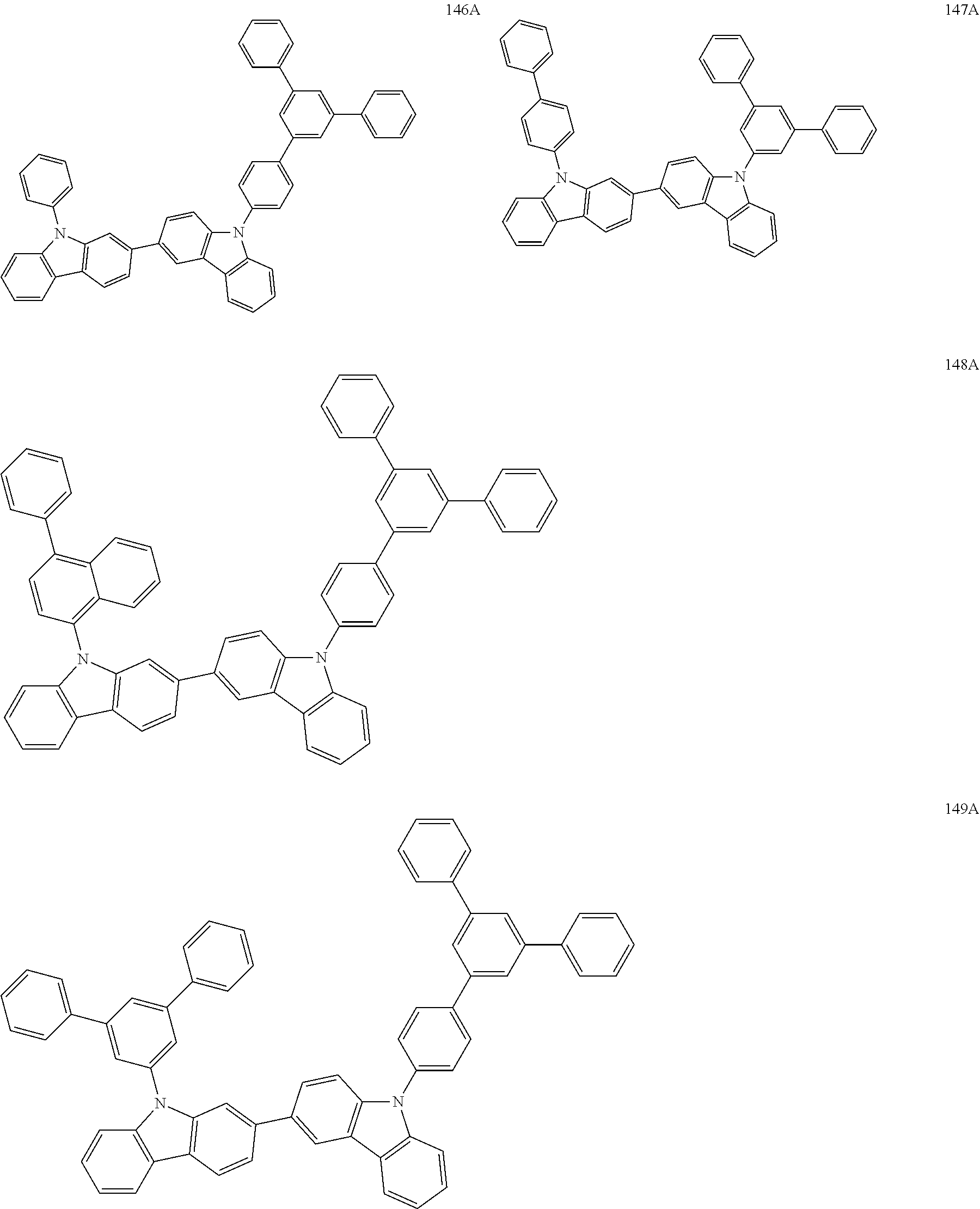
C00192
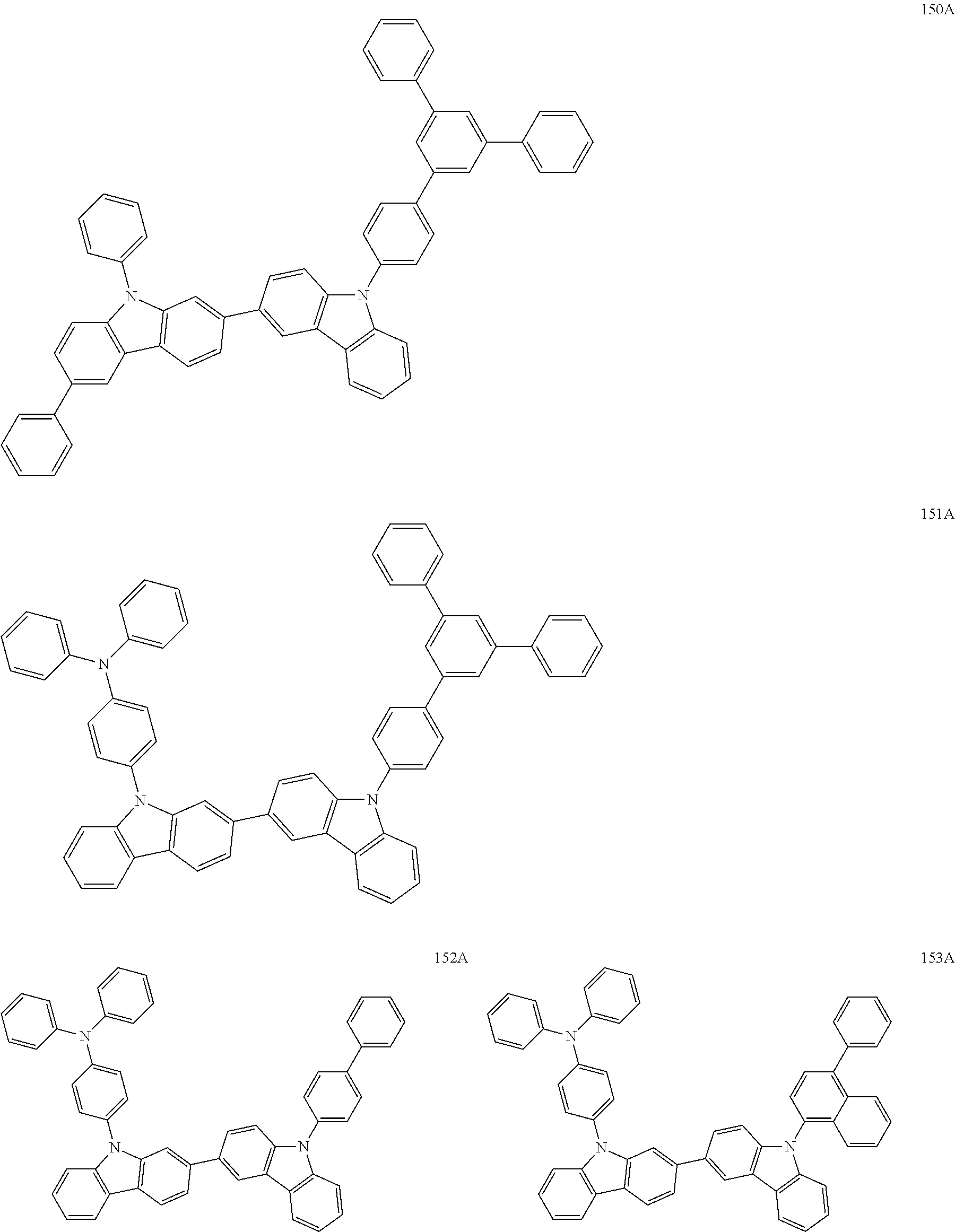
C00193
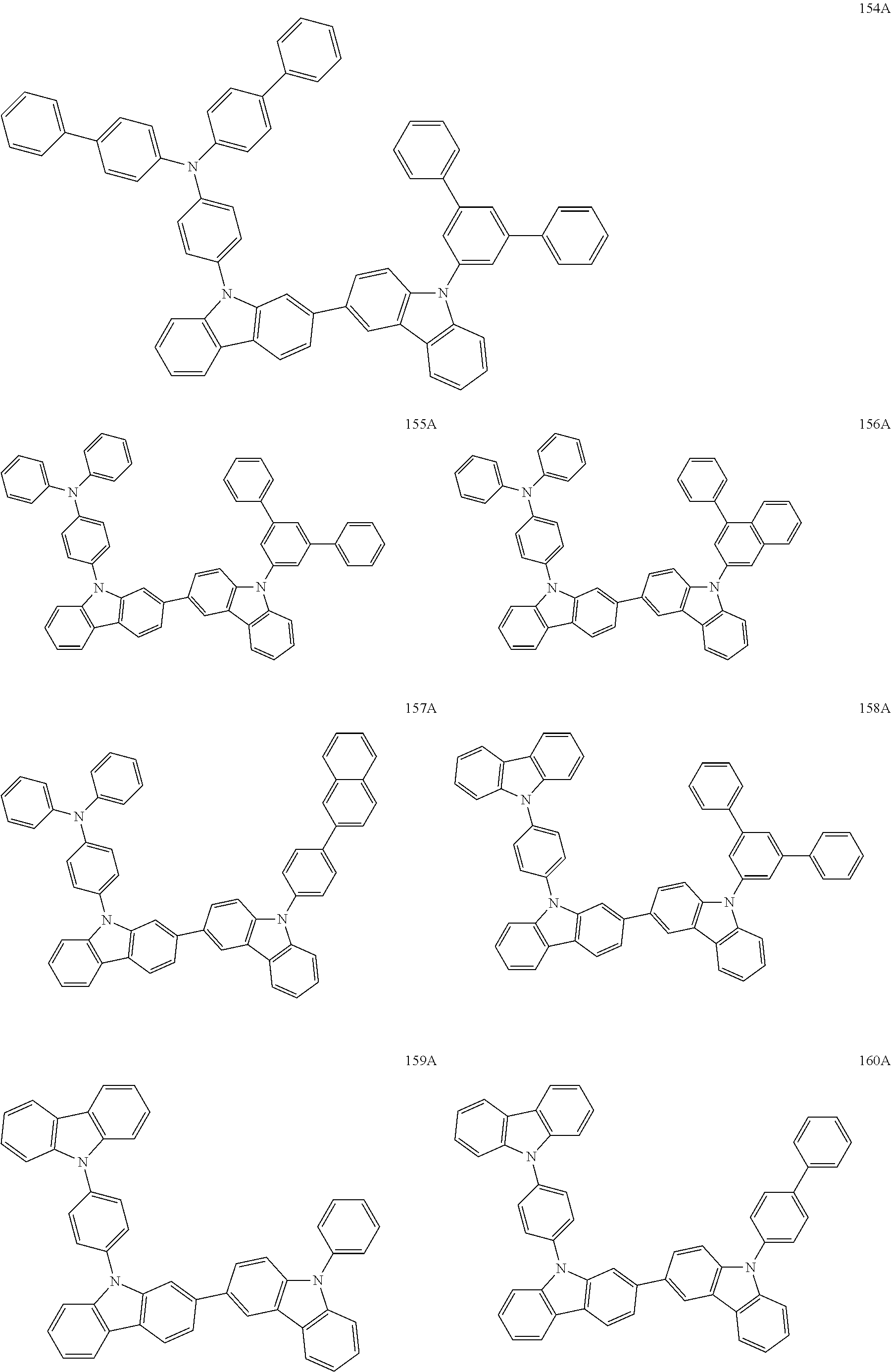
C00194
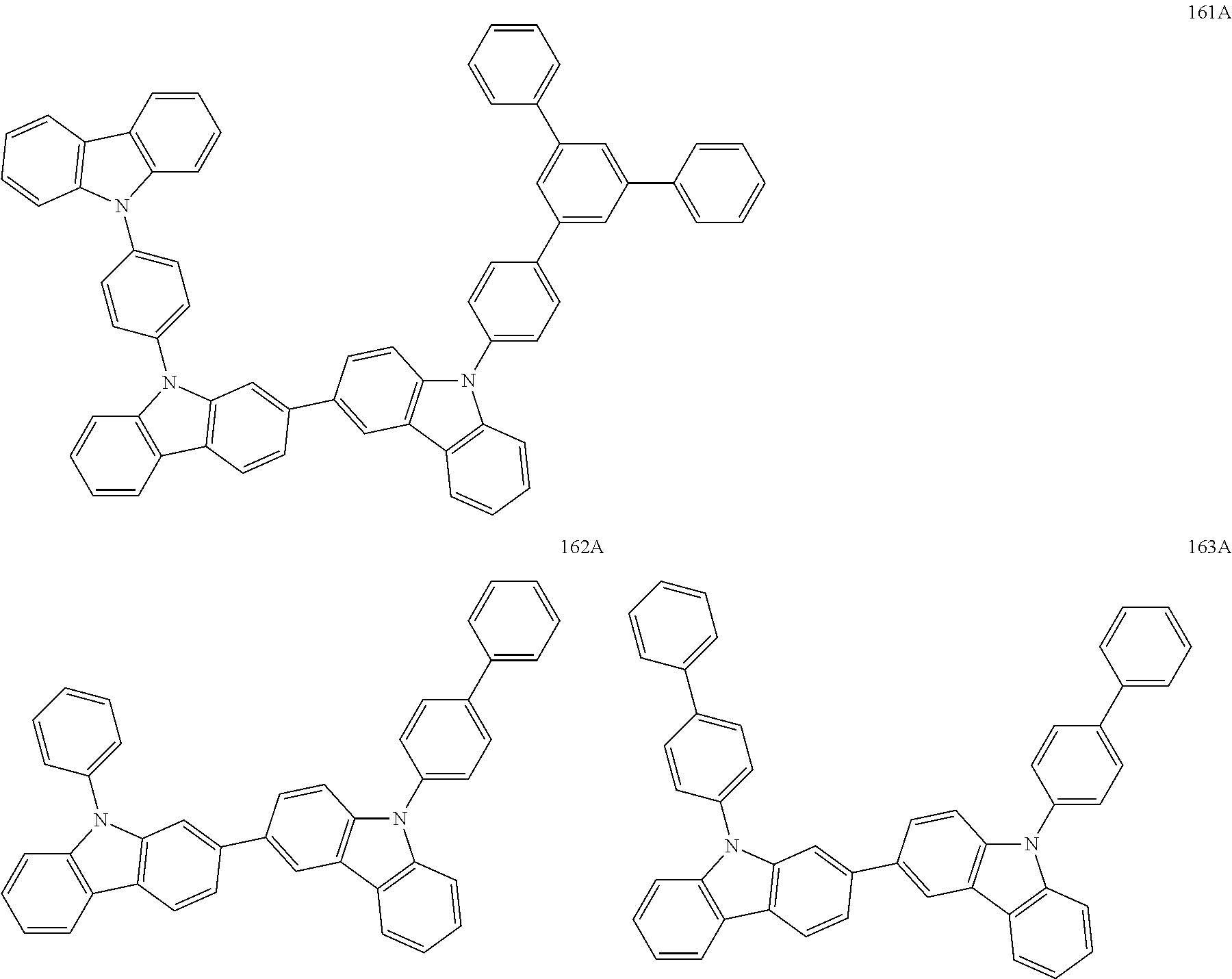
C00195
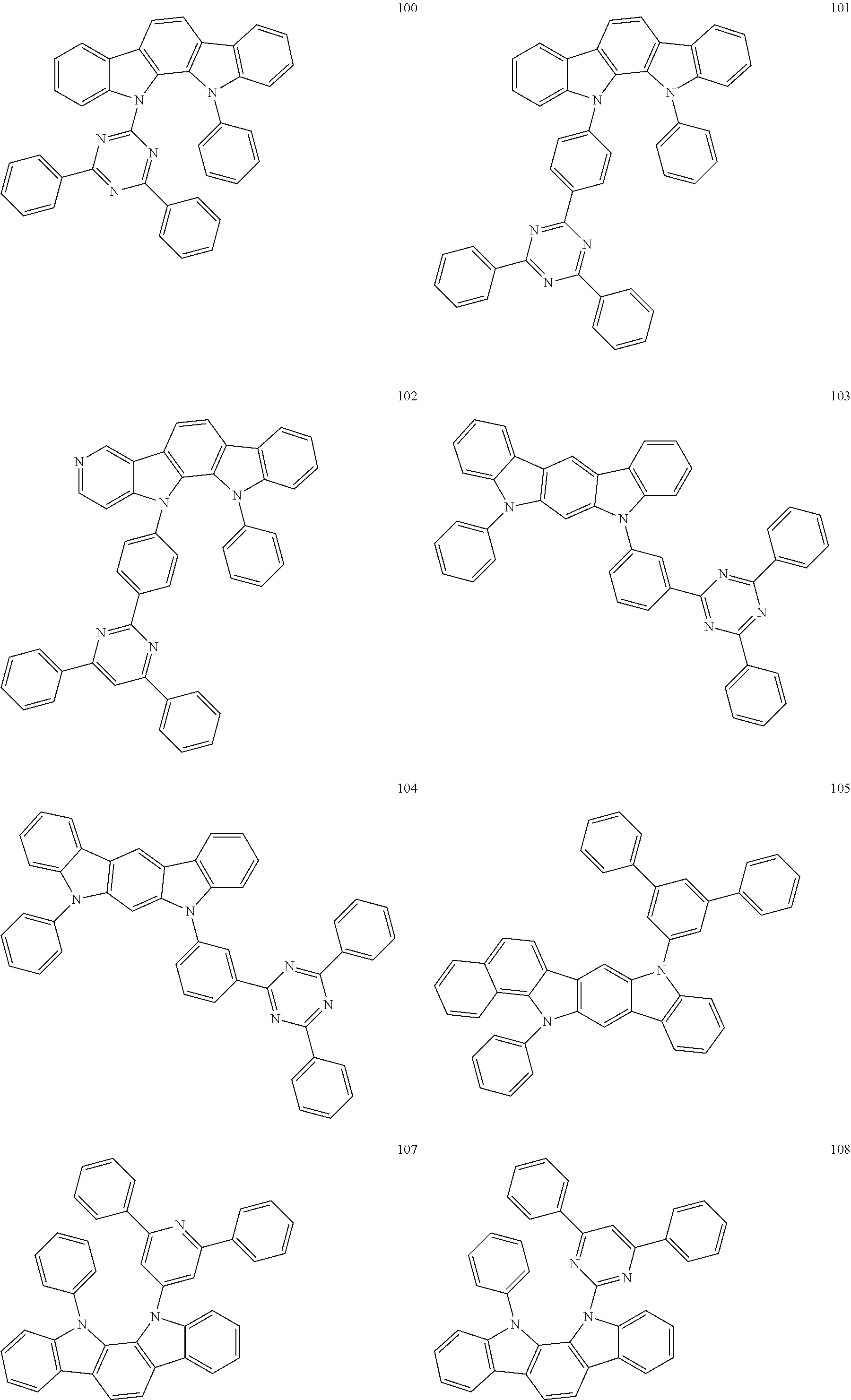
C00196
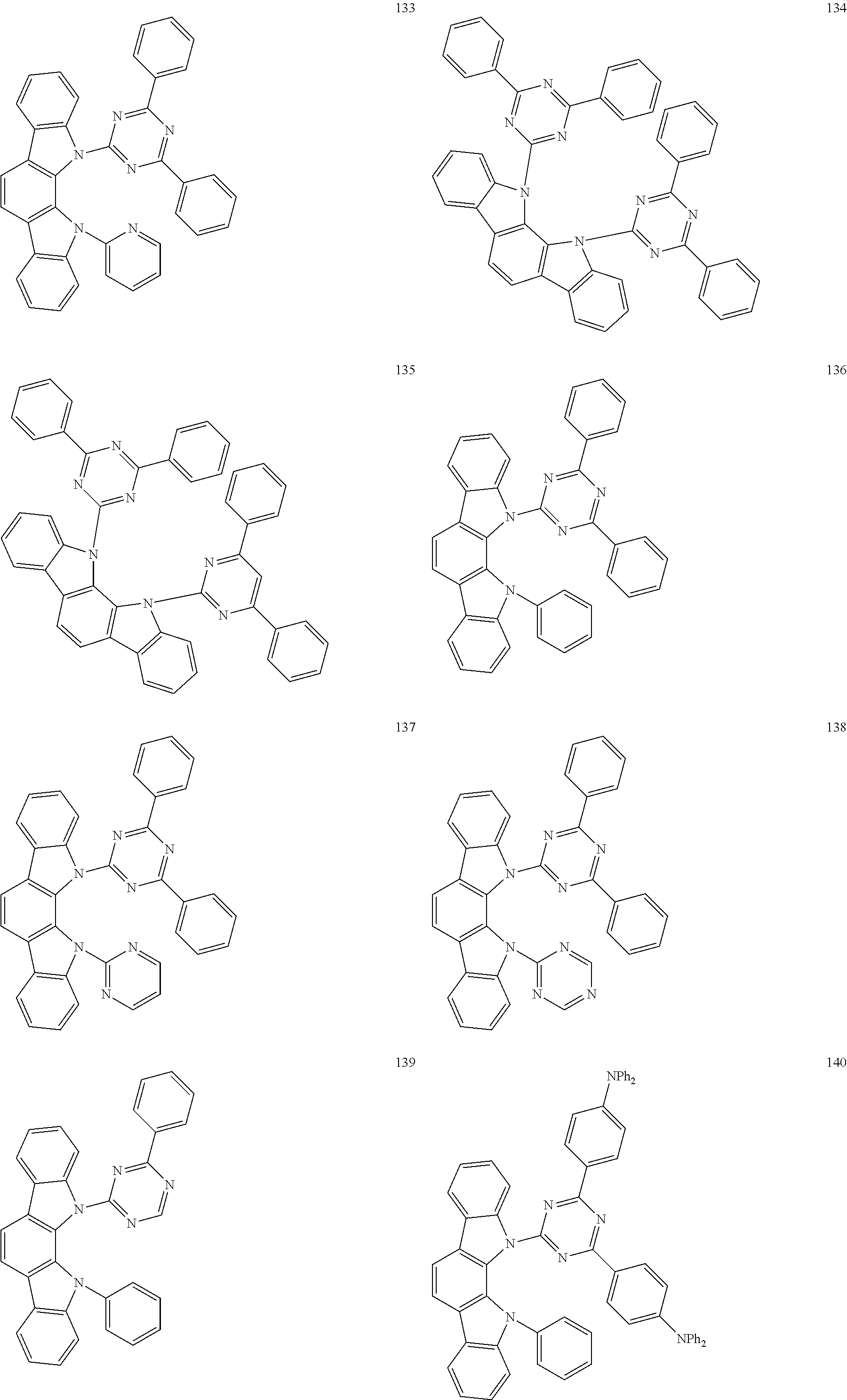
C00197
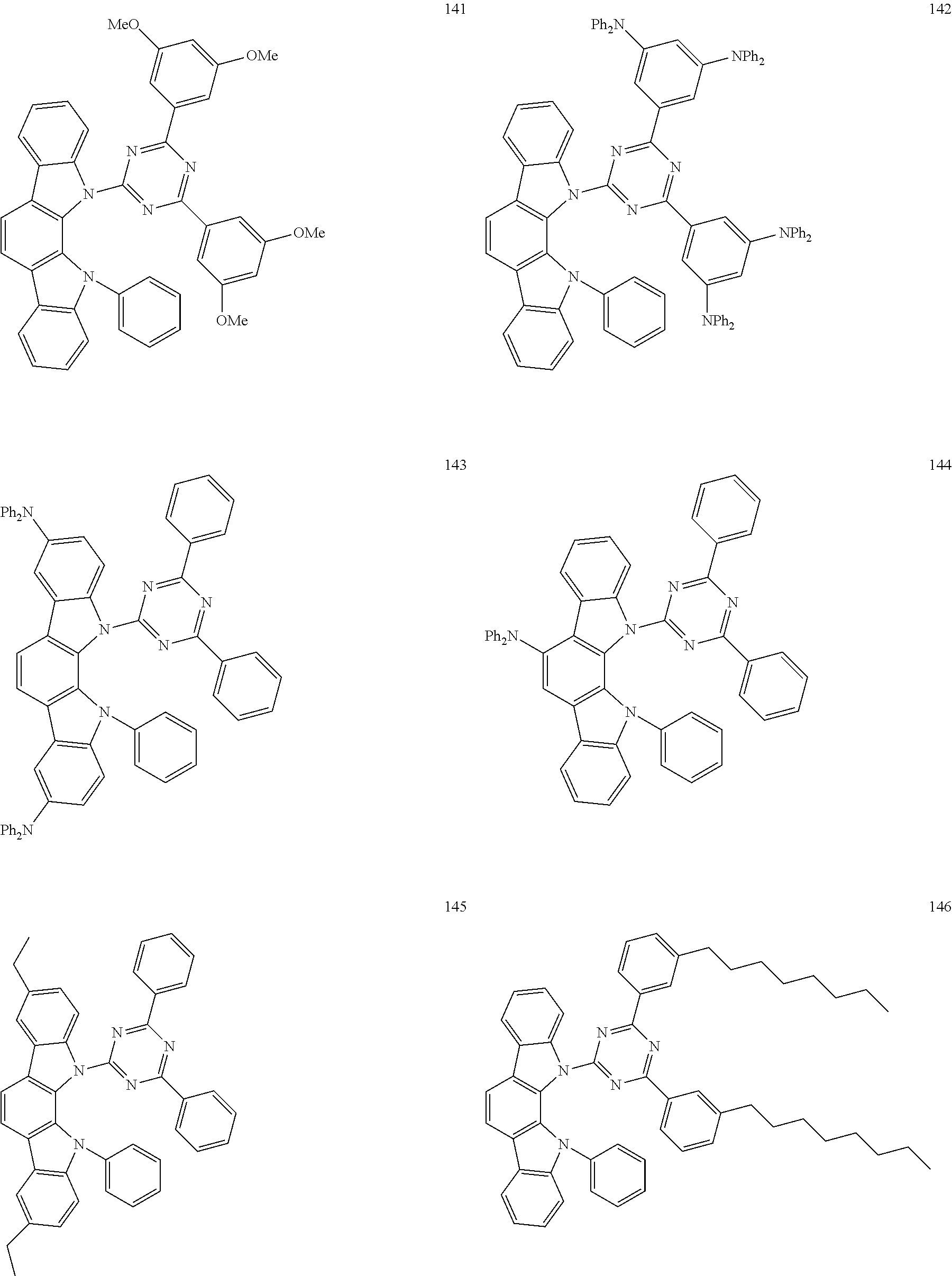
C00198
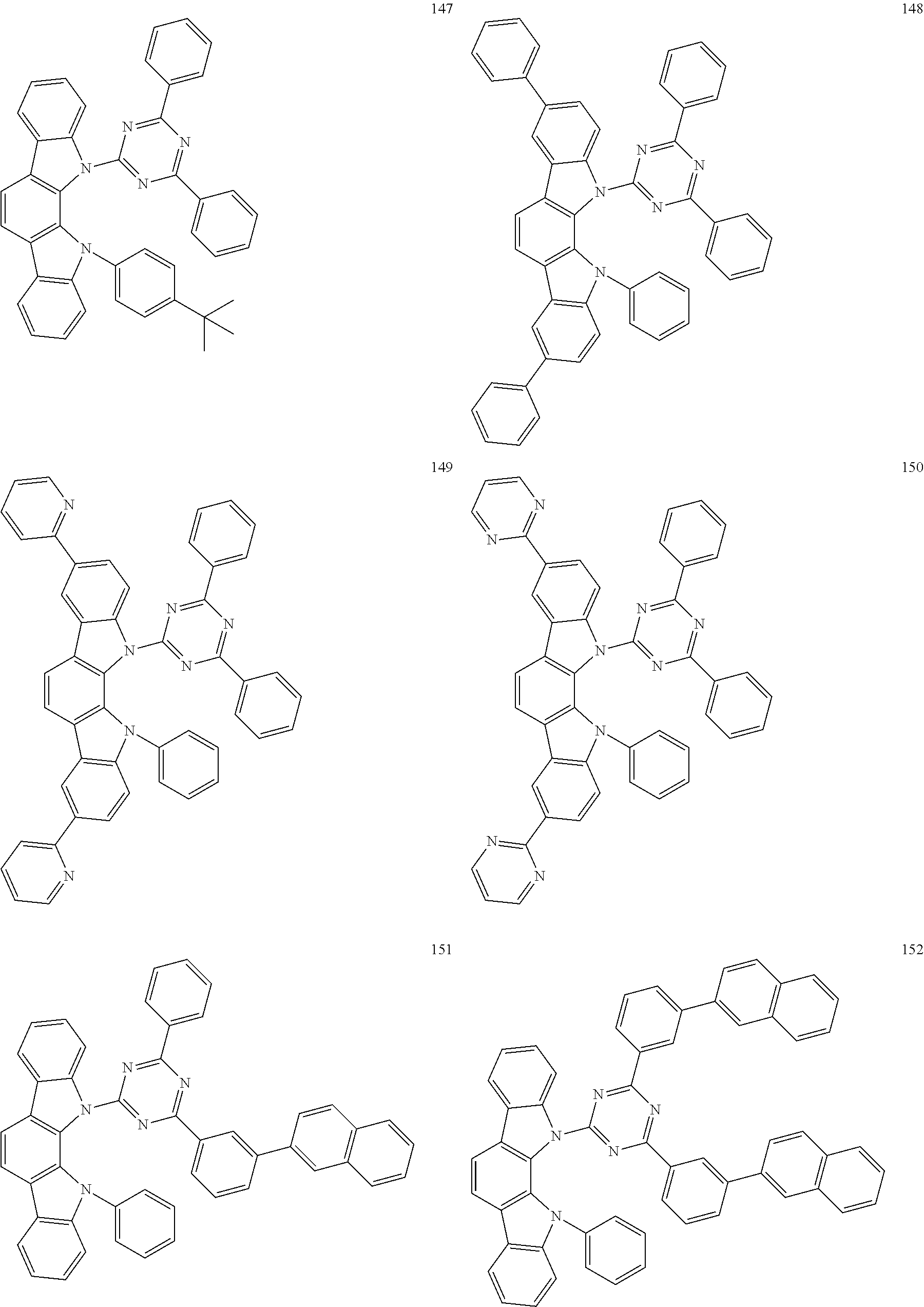
C00199
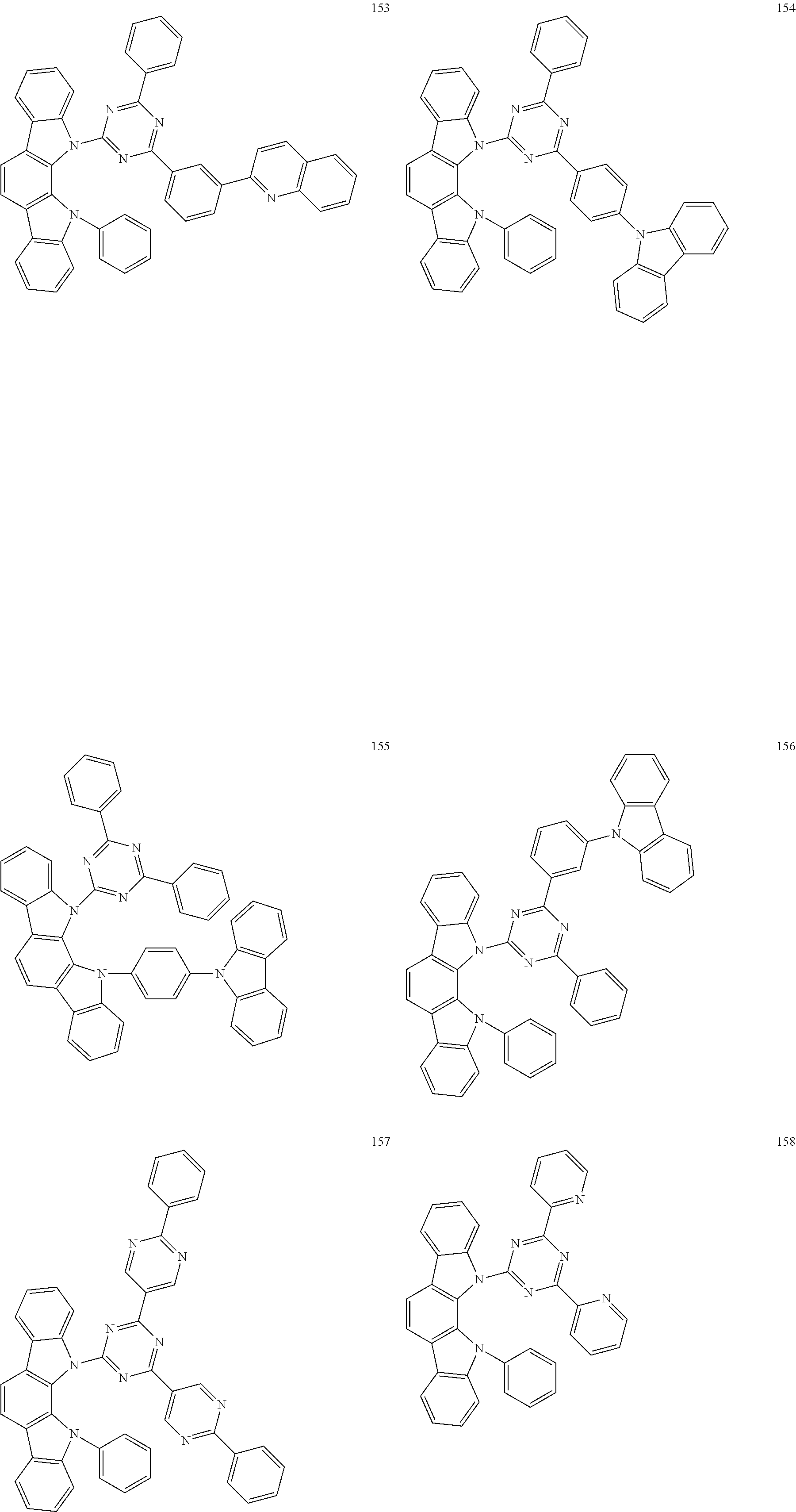
C00200
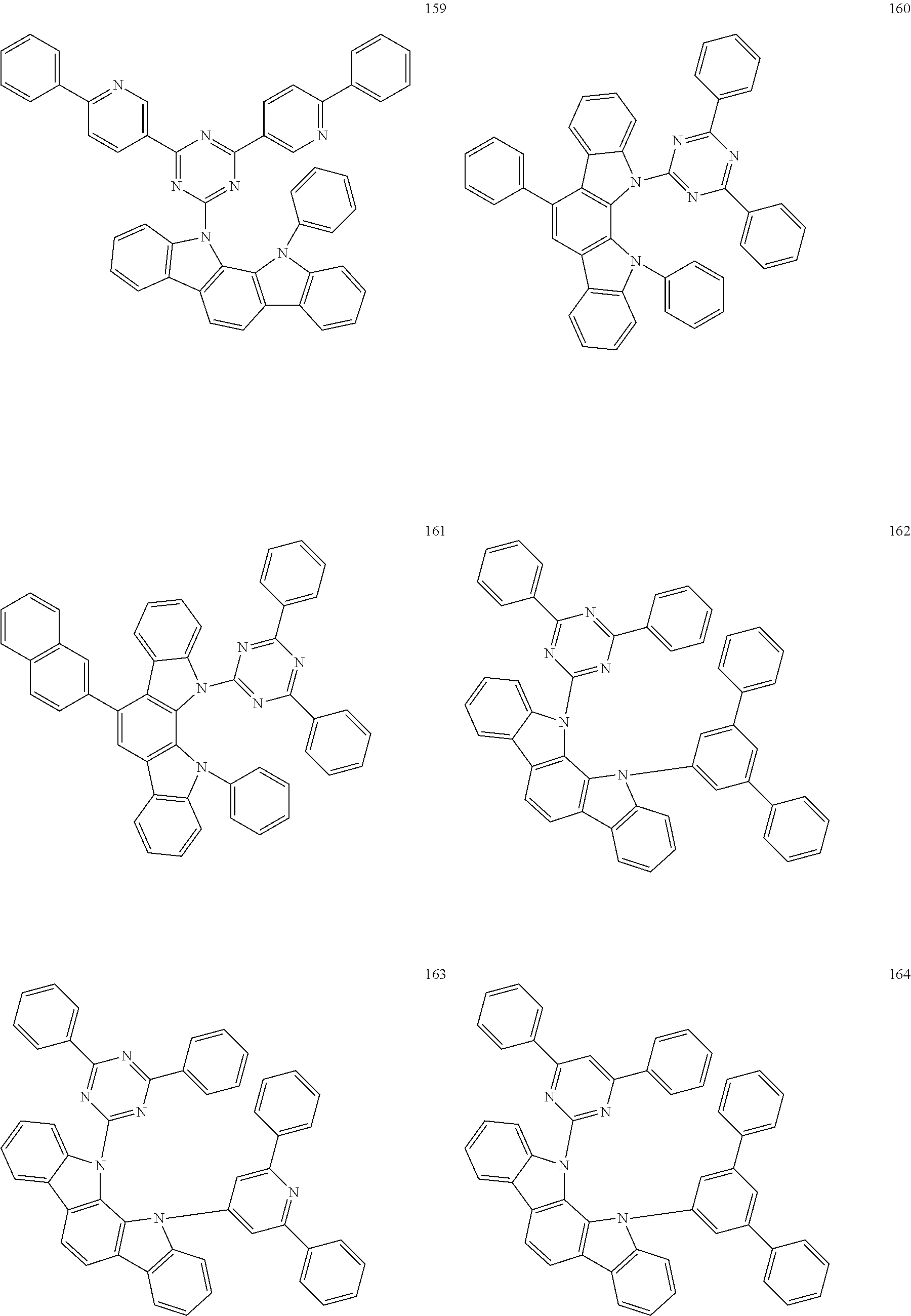
C00201
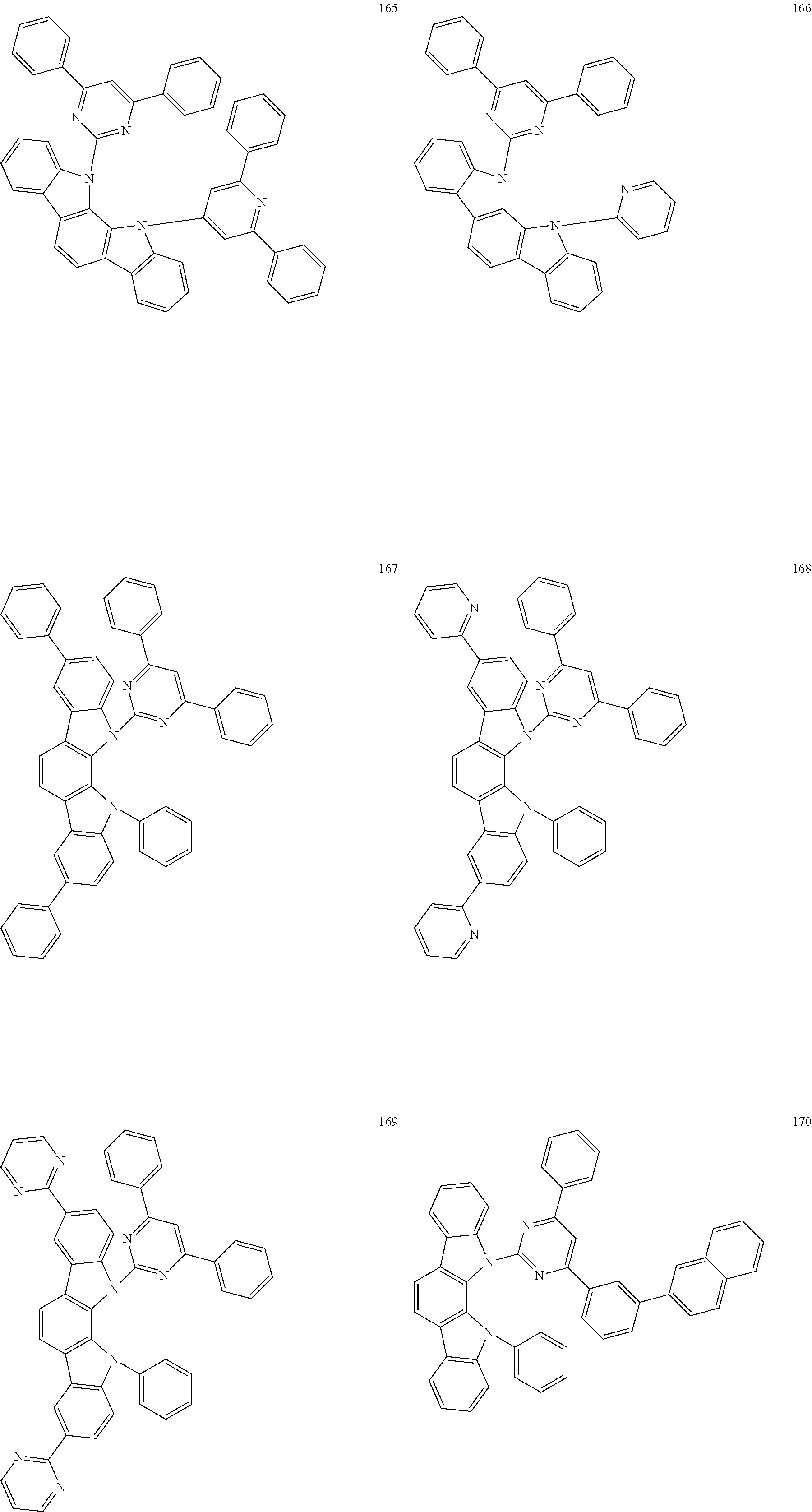
C00202
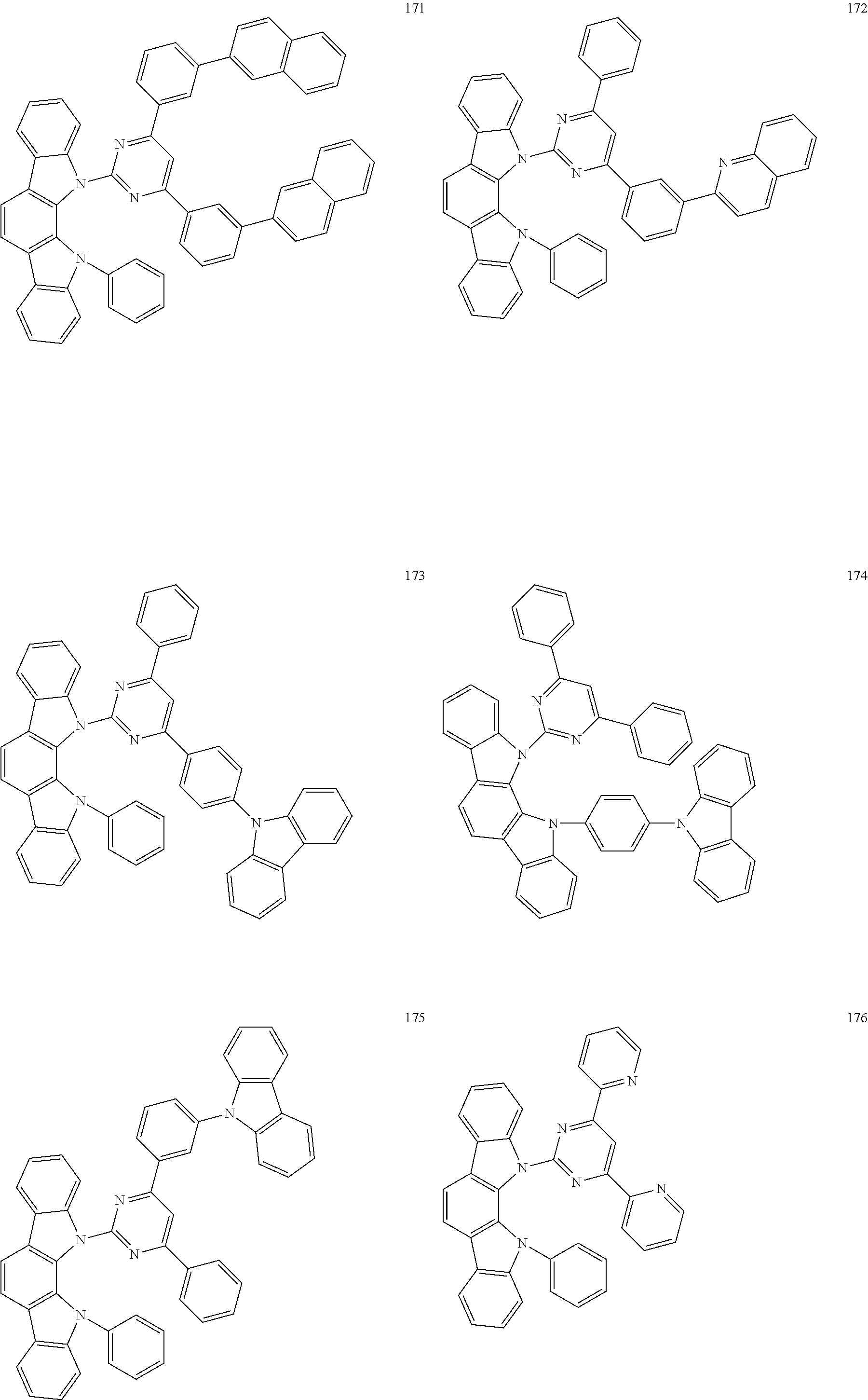
C00203
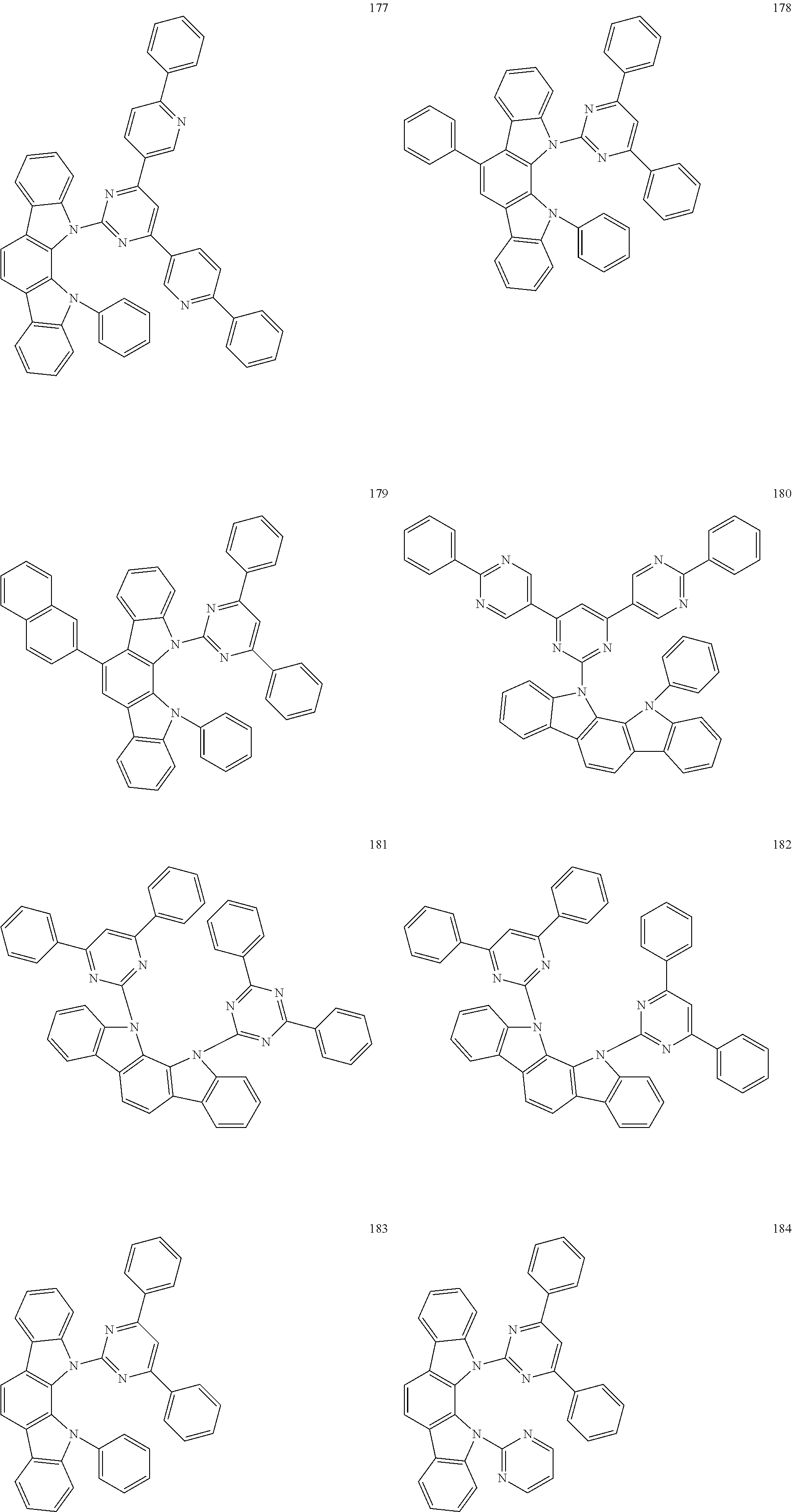
C00204
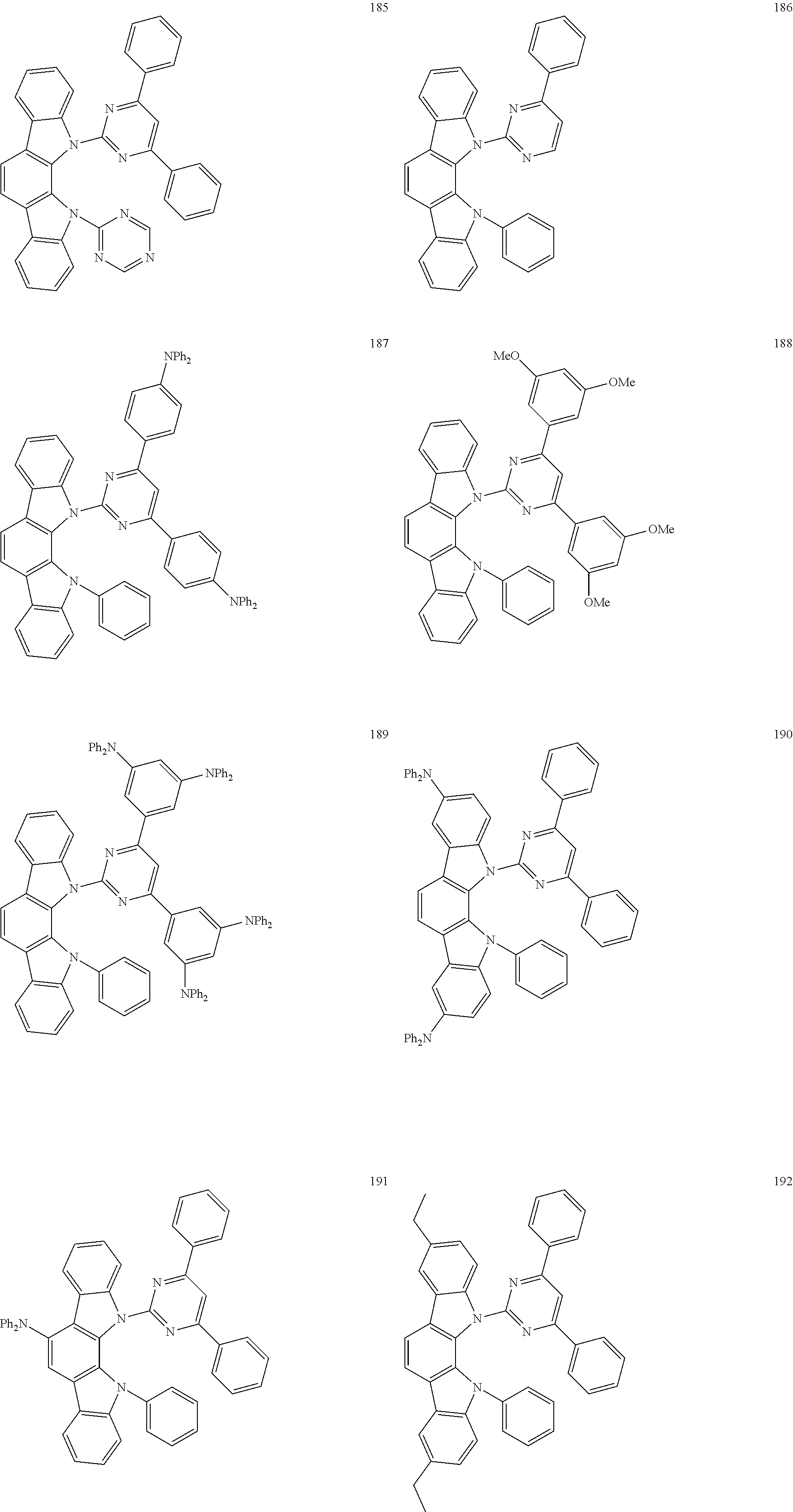
C00205

C00206
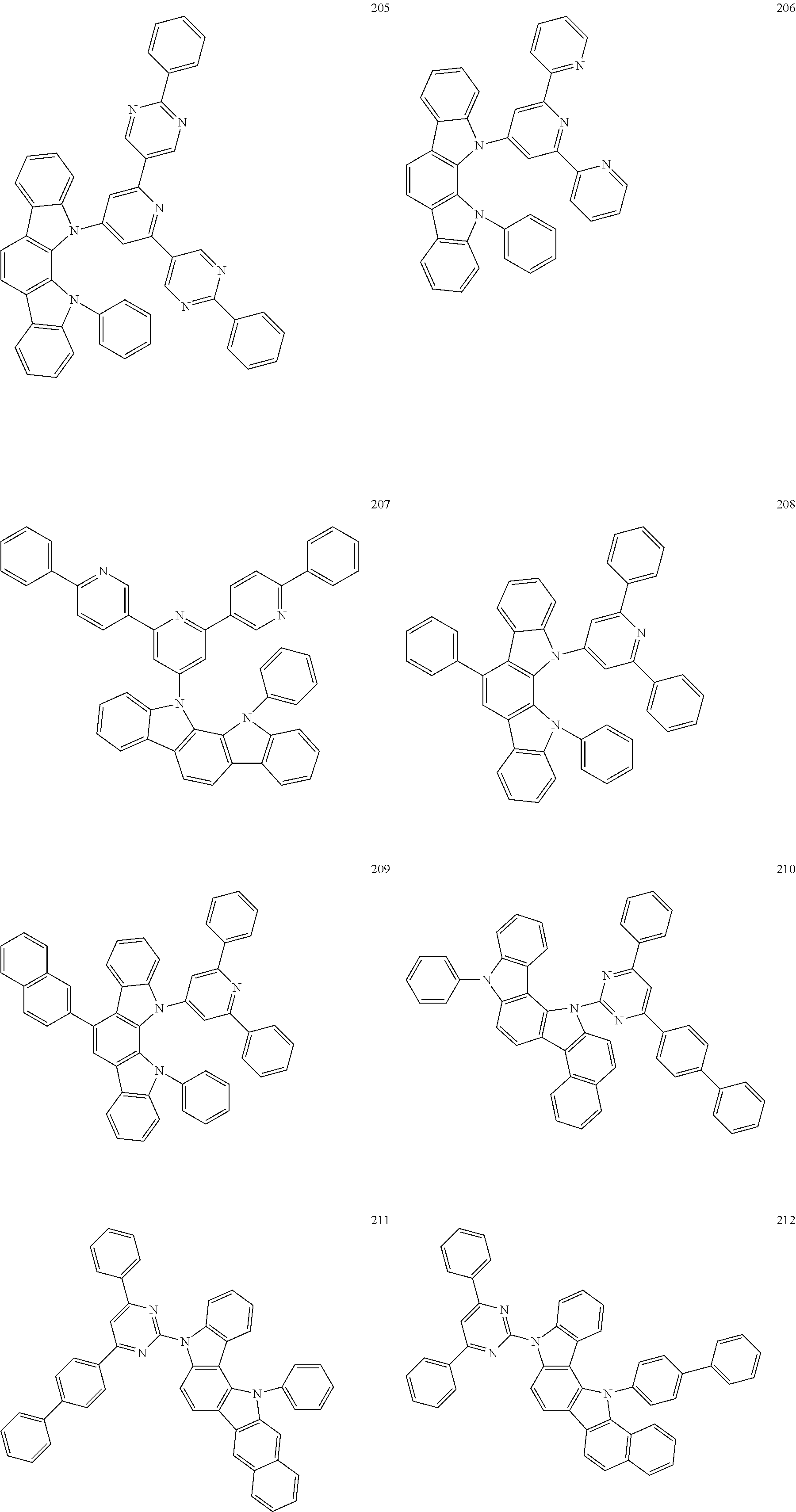
C00207
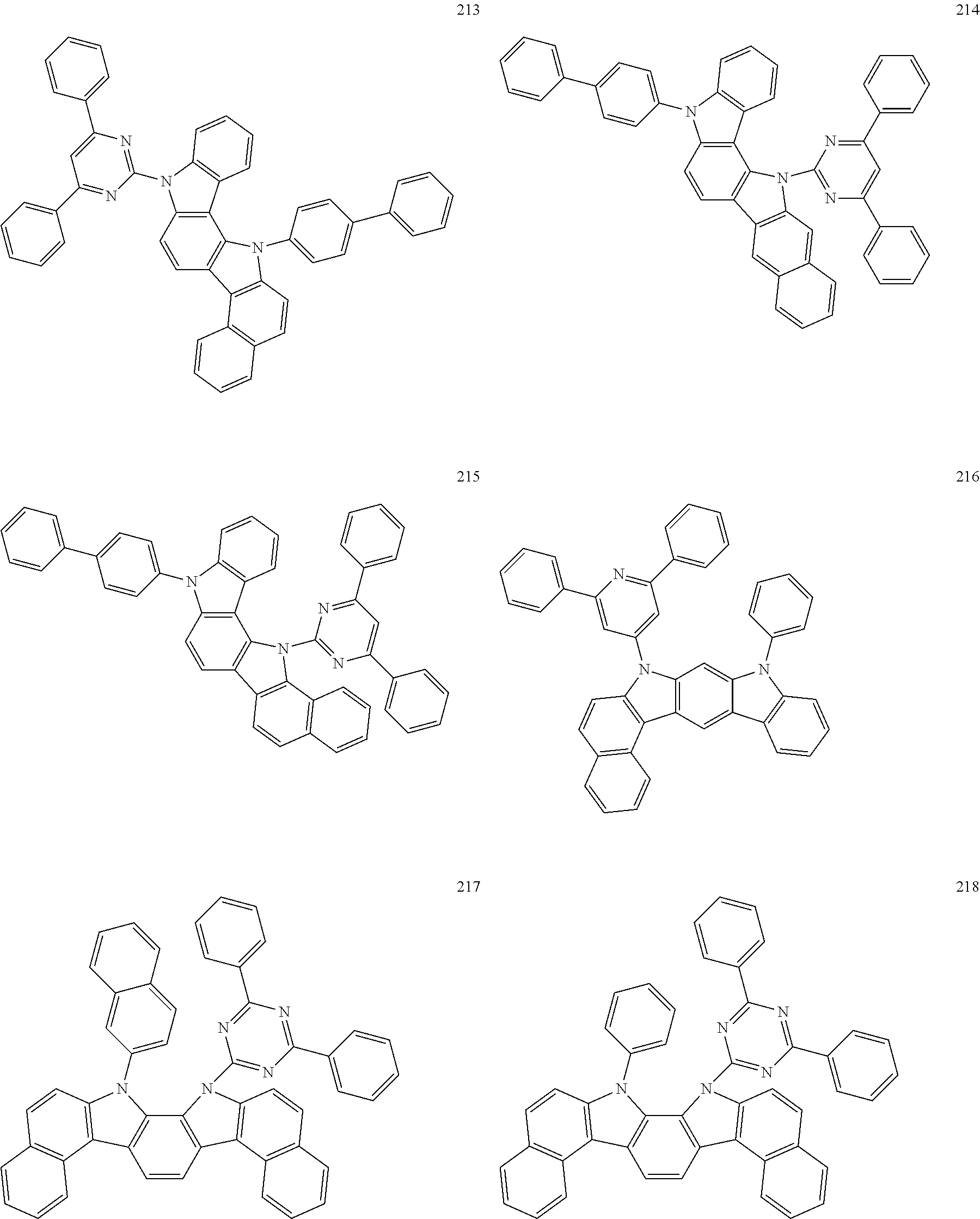
C00208
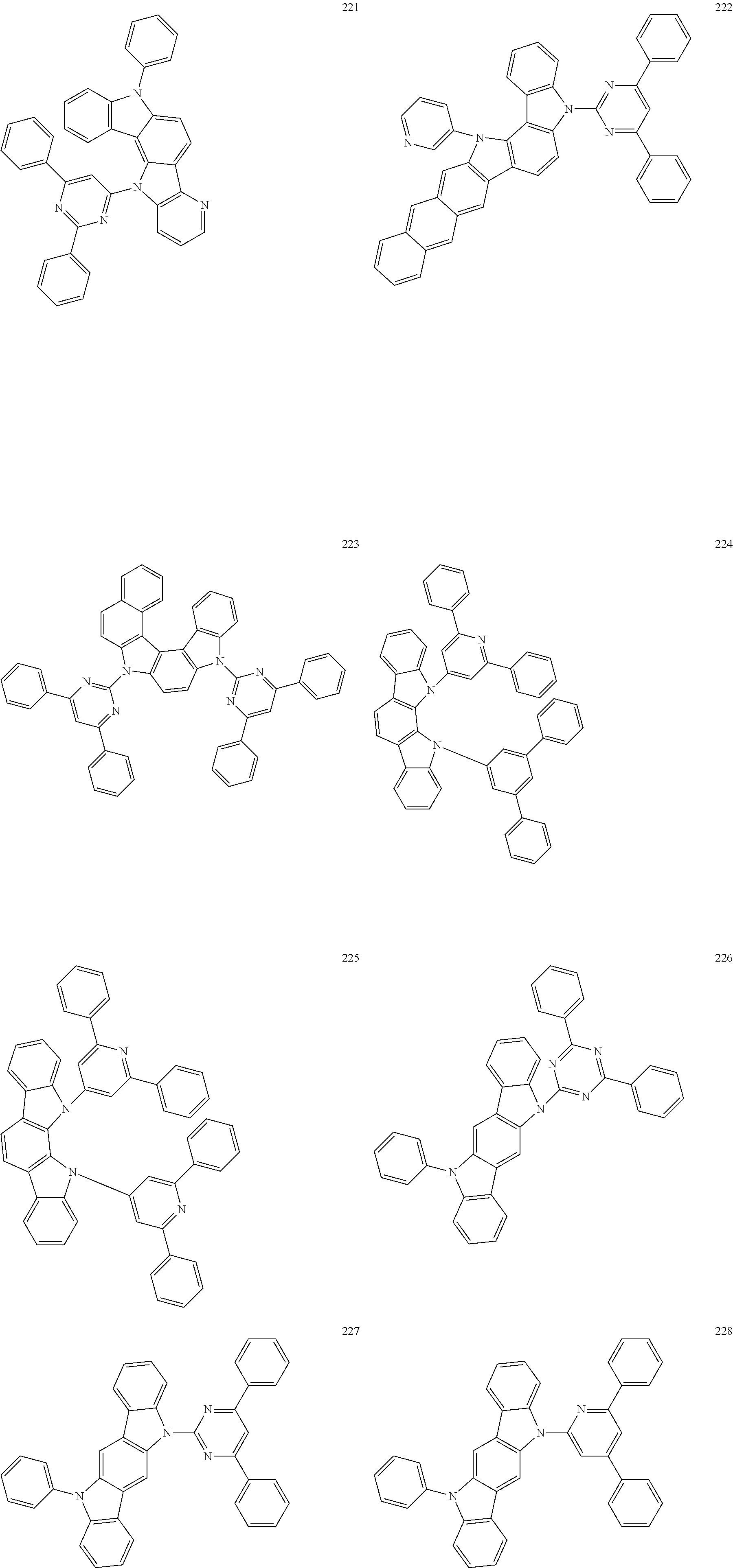
C00209
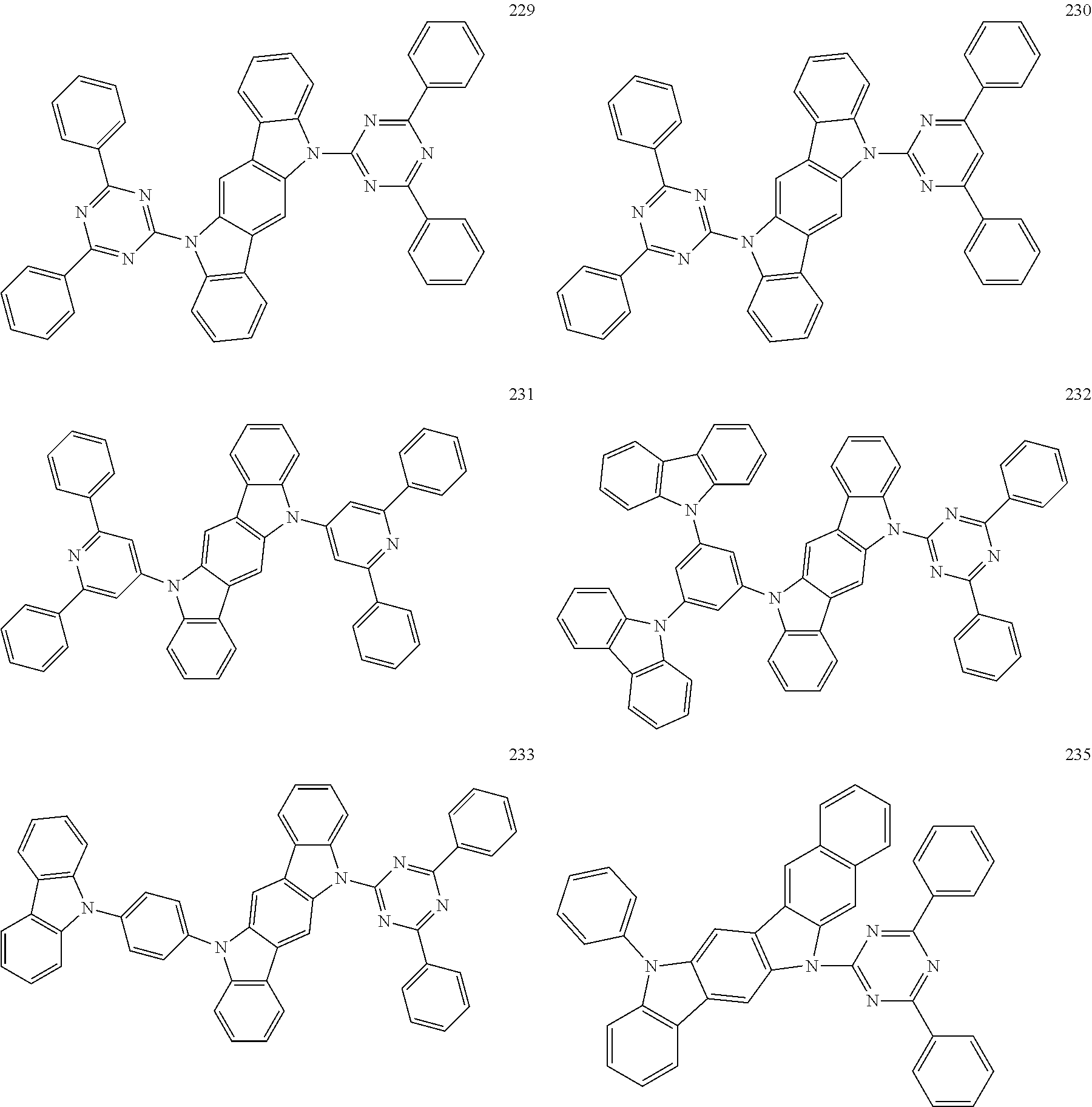
C00210

C00211
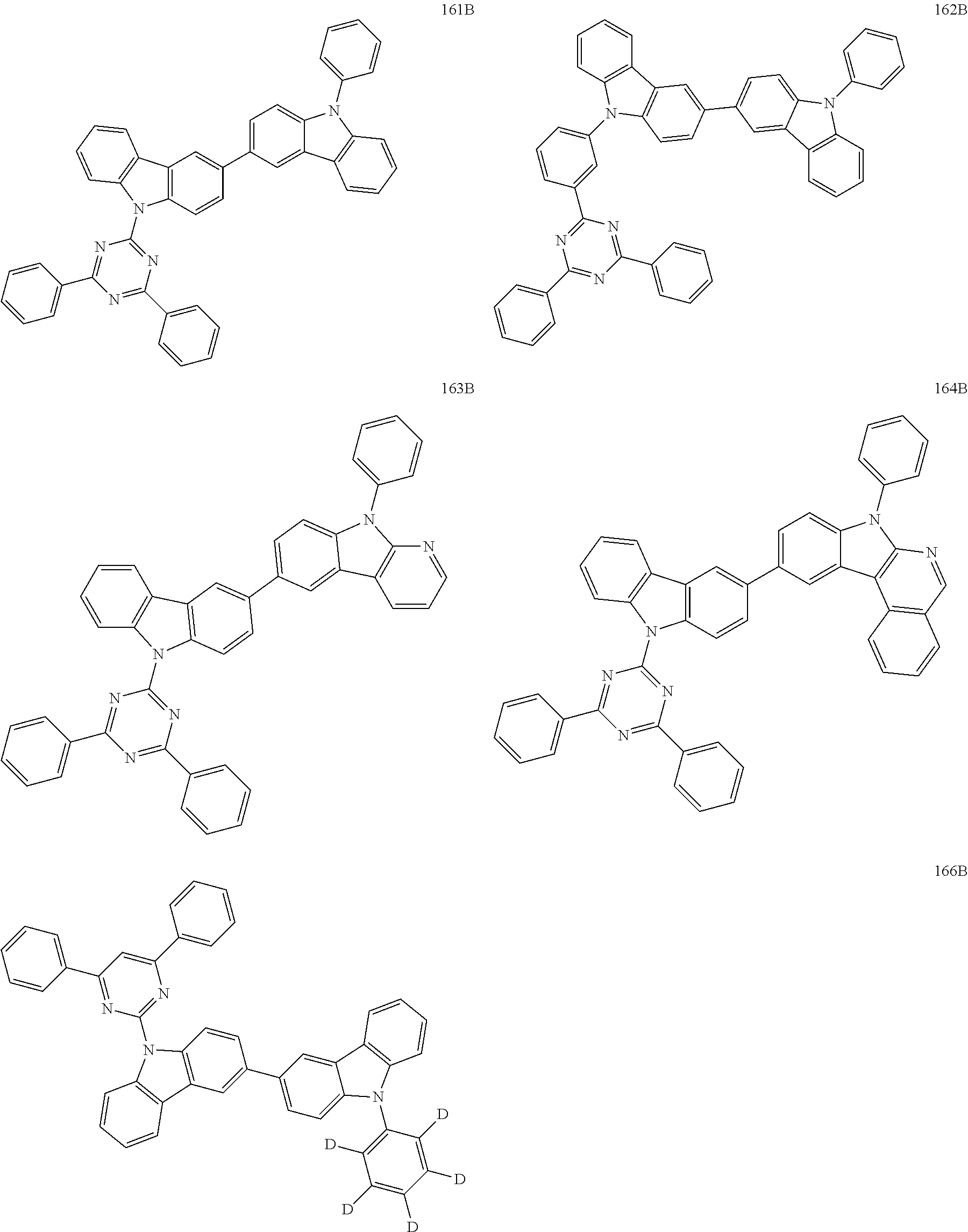
C00212
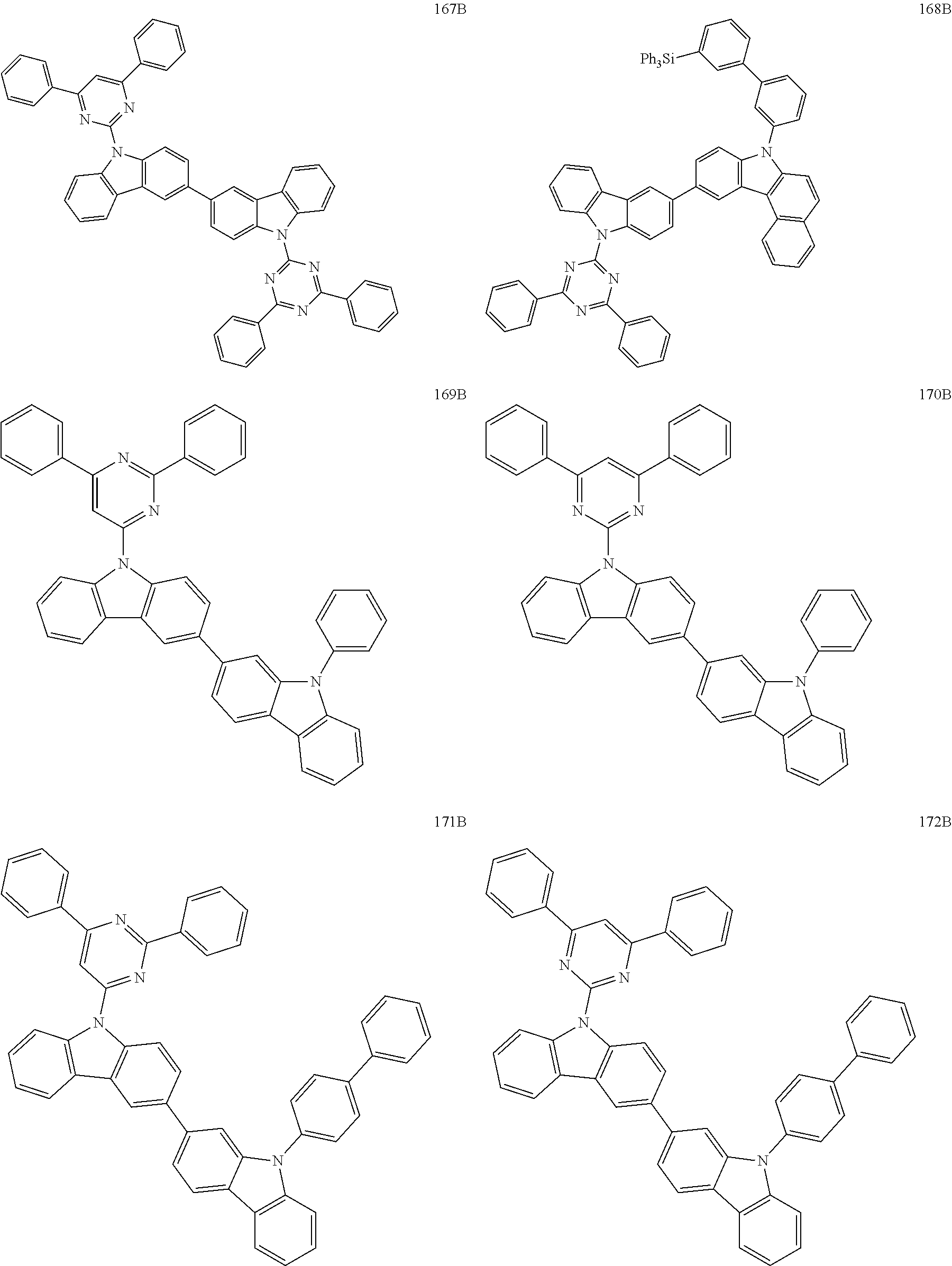
C00213
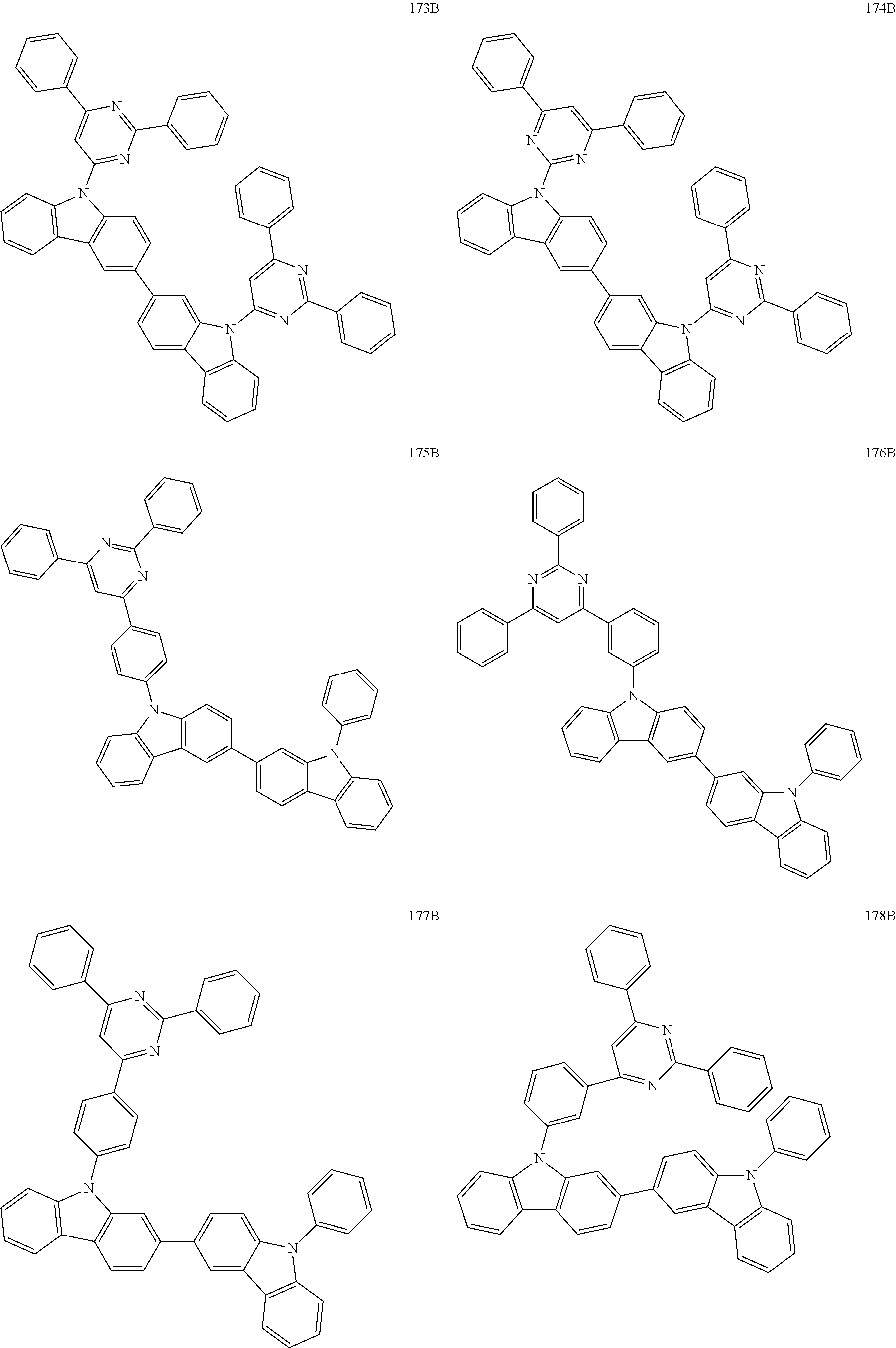
C00214
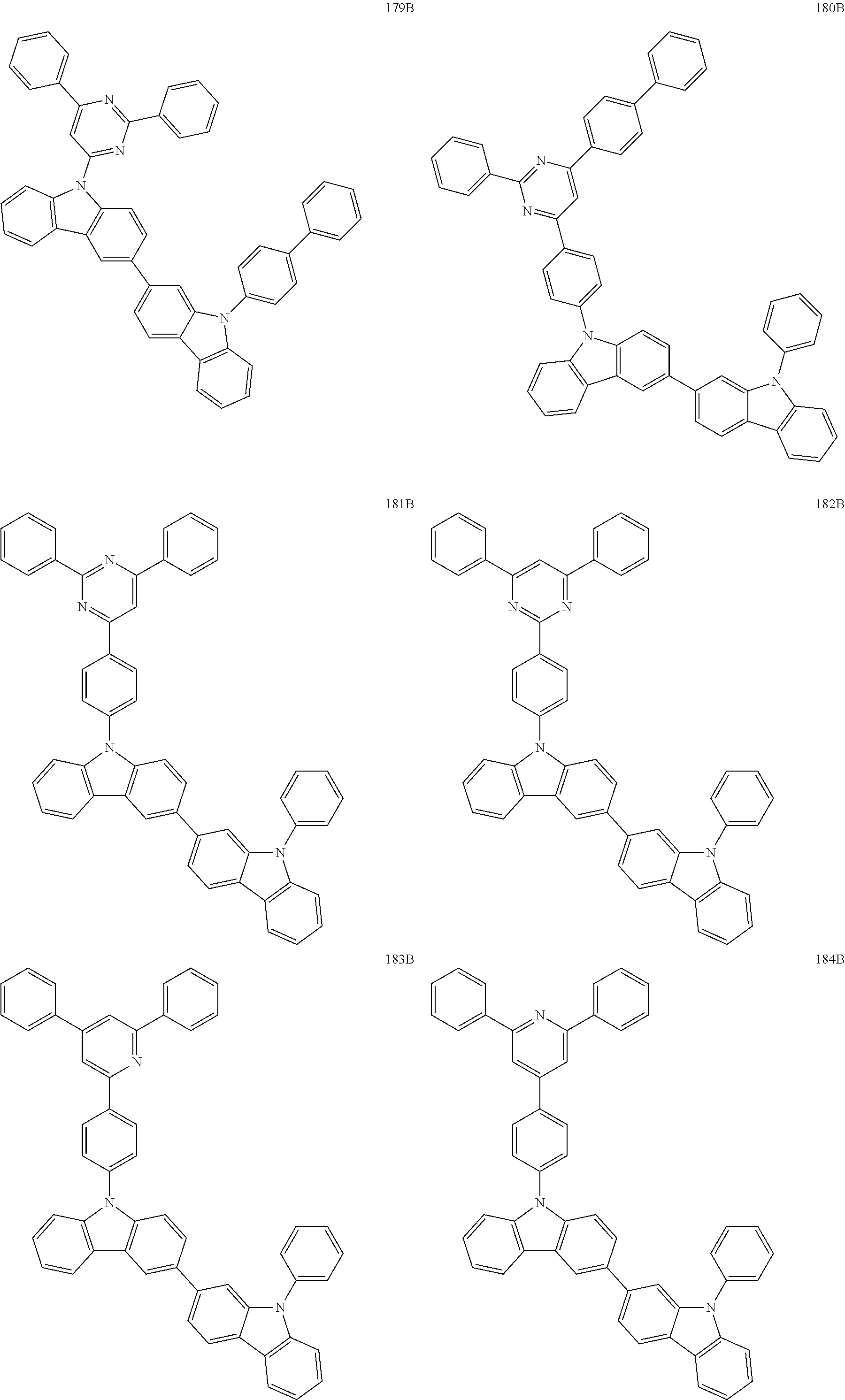
C00215
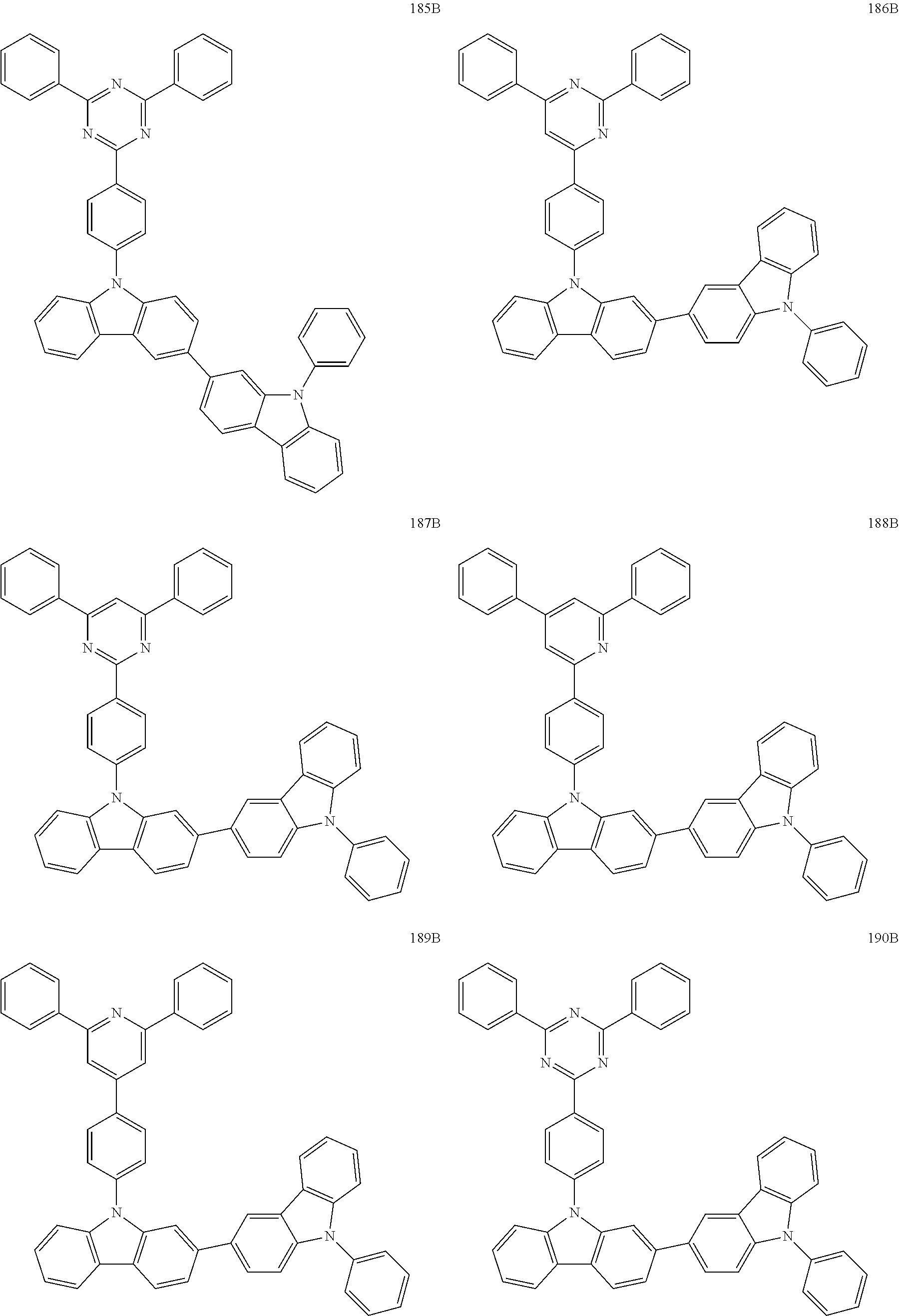
C00216
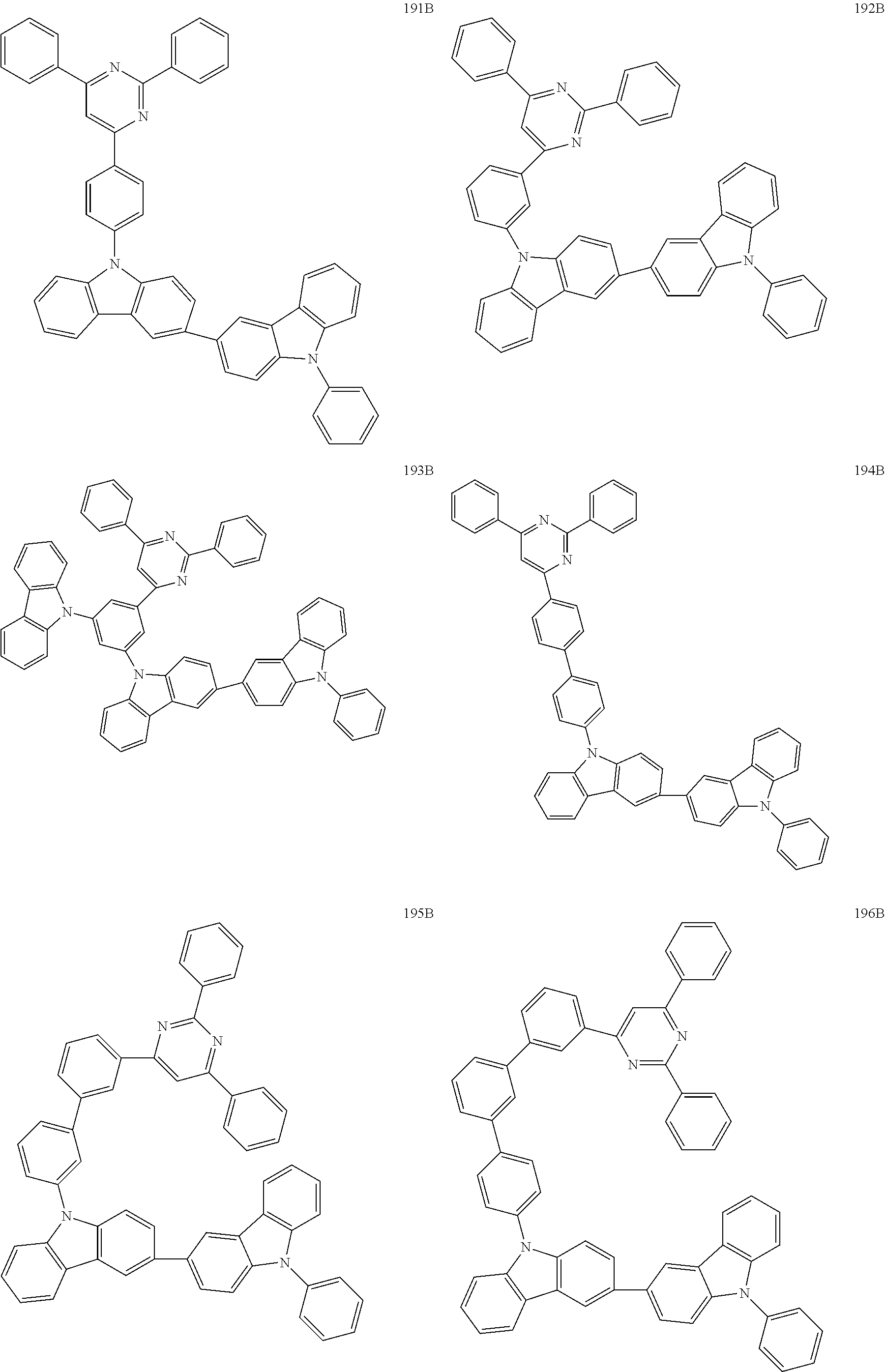
C00217
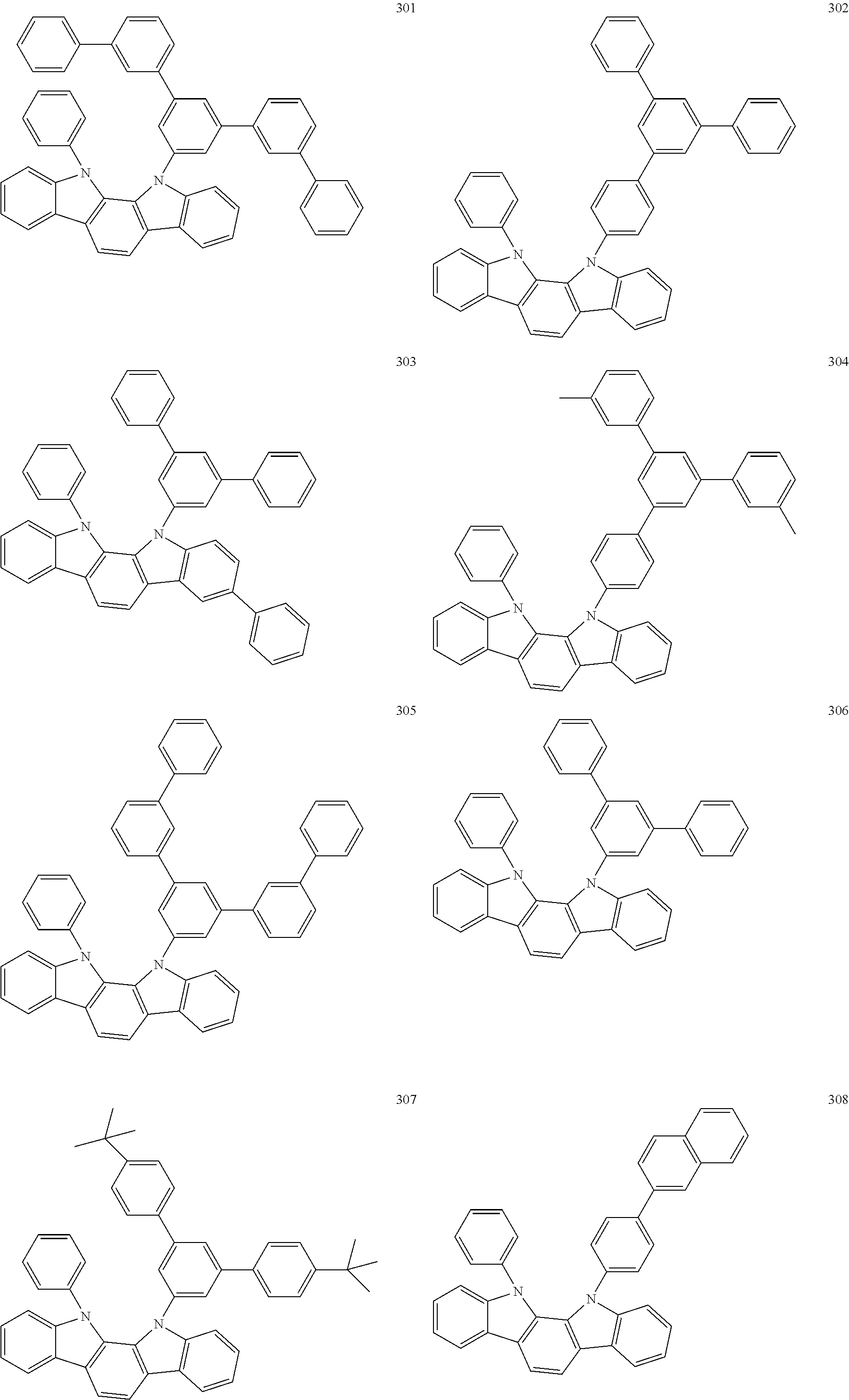
C00218
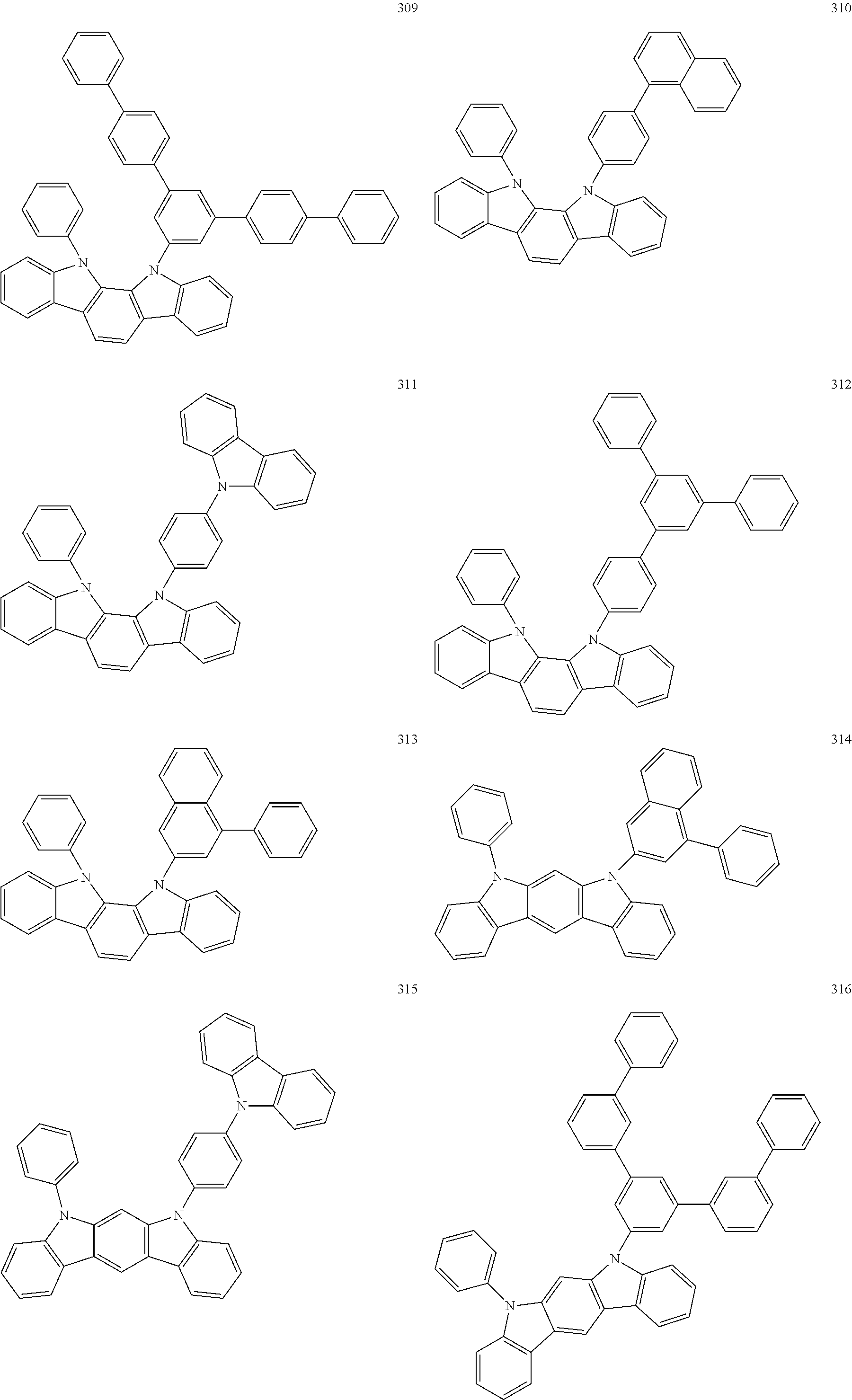
C00219
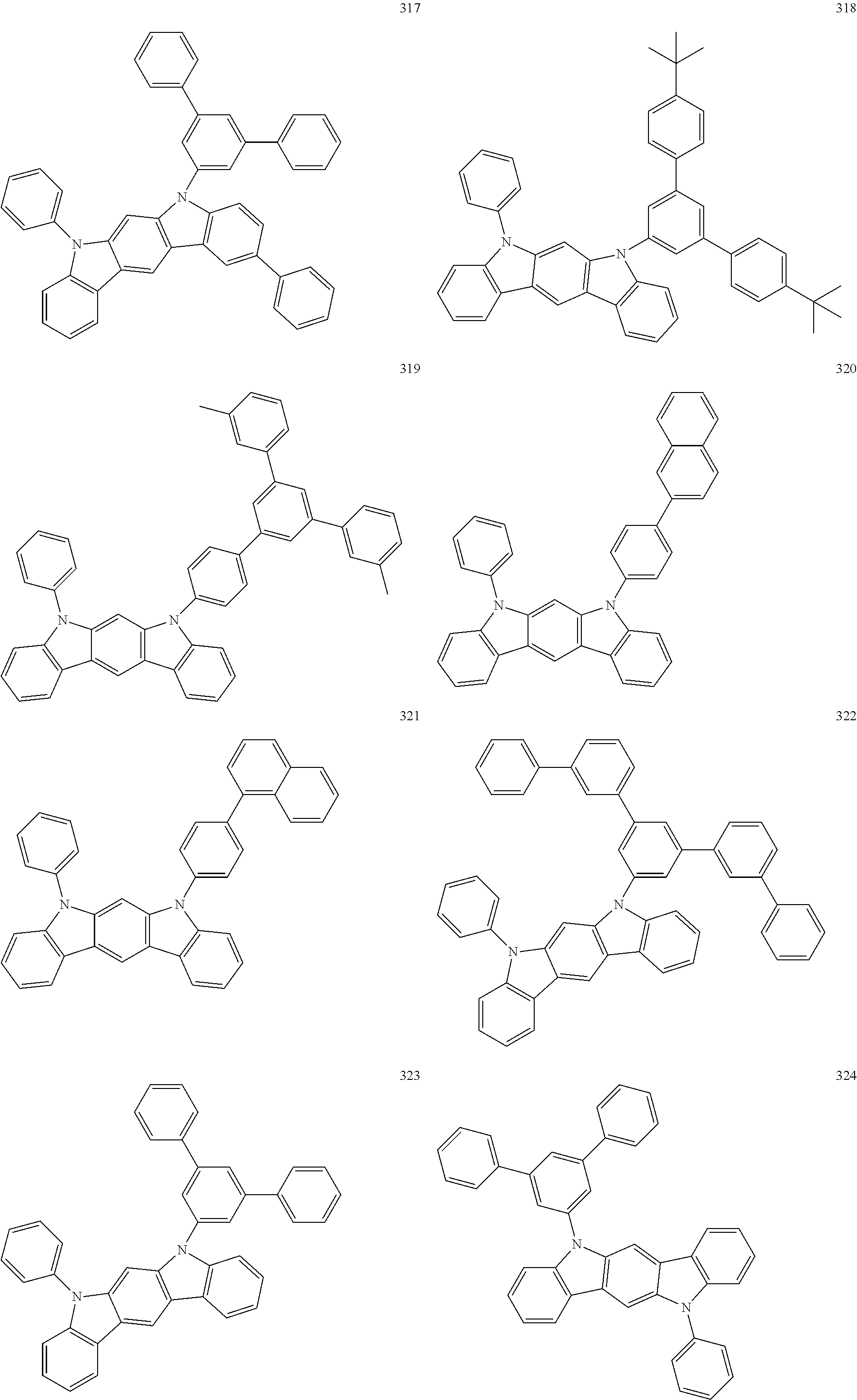
C00220
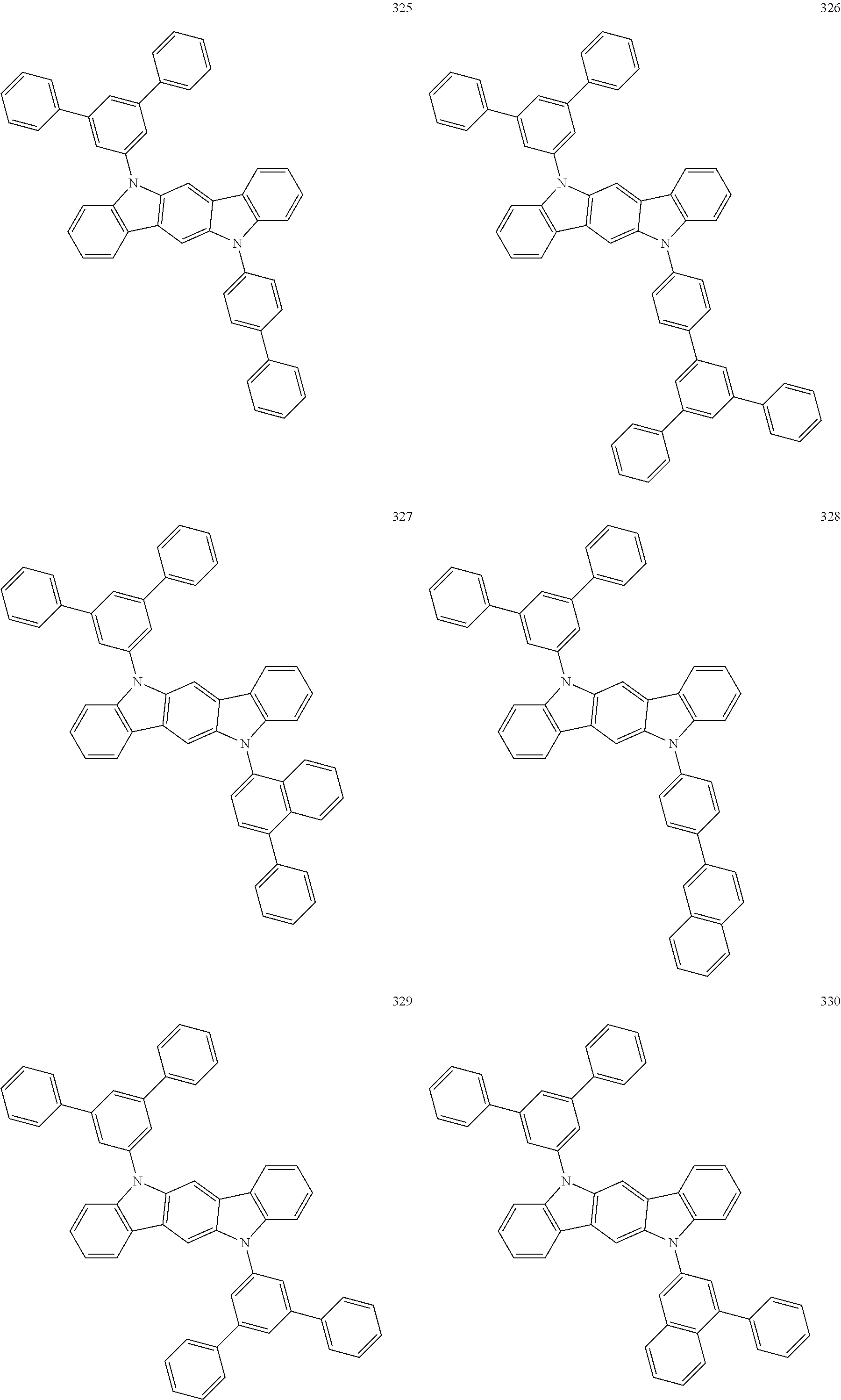
C00221
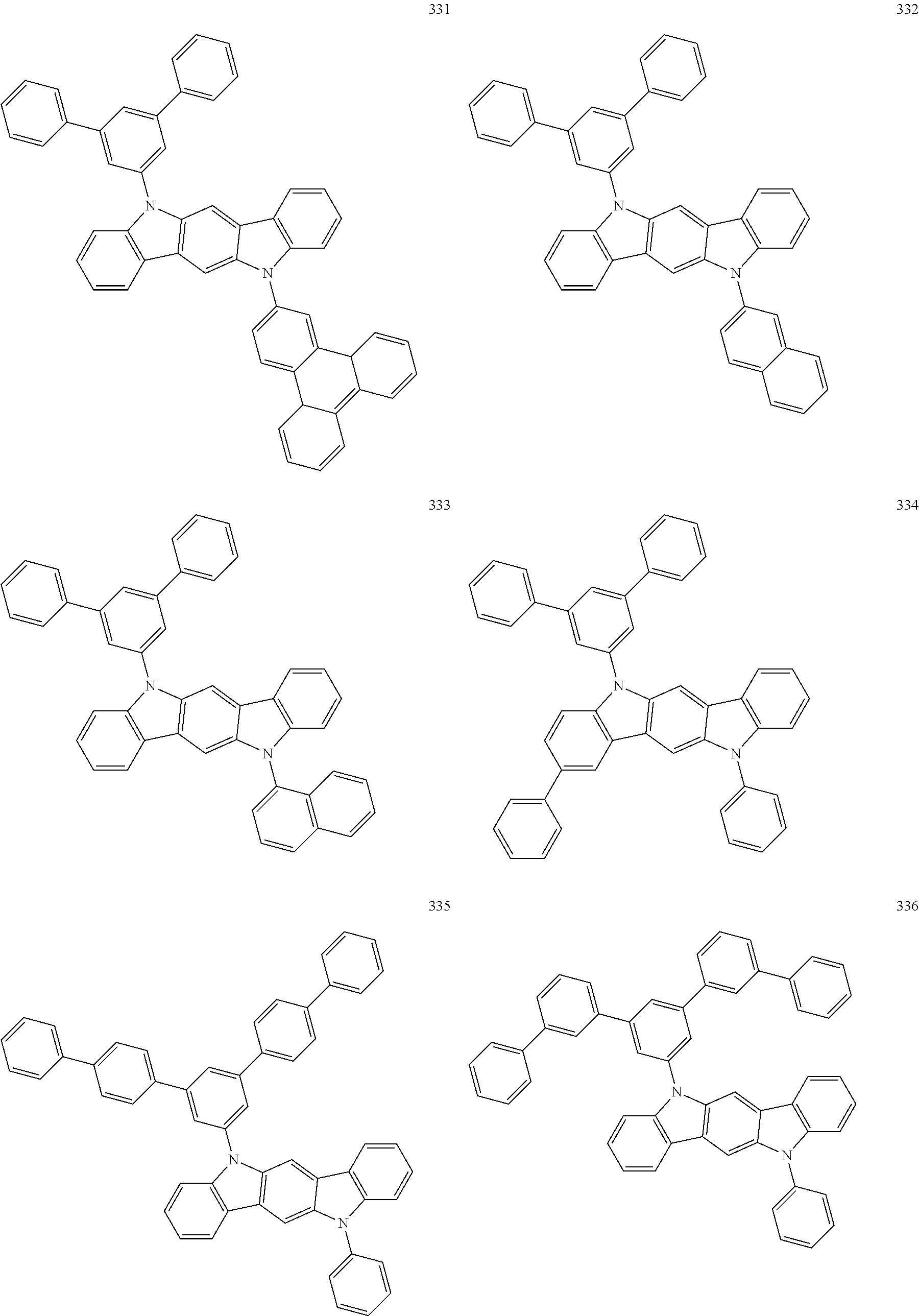
C00222
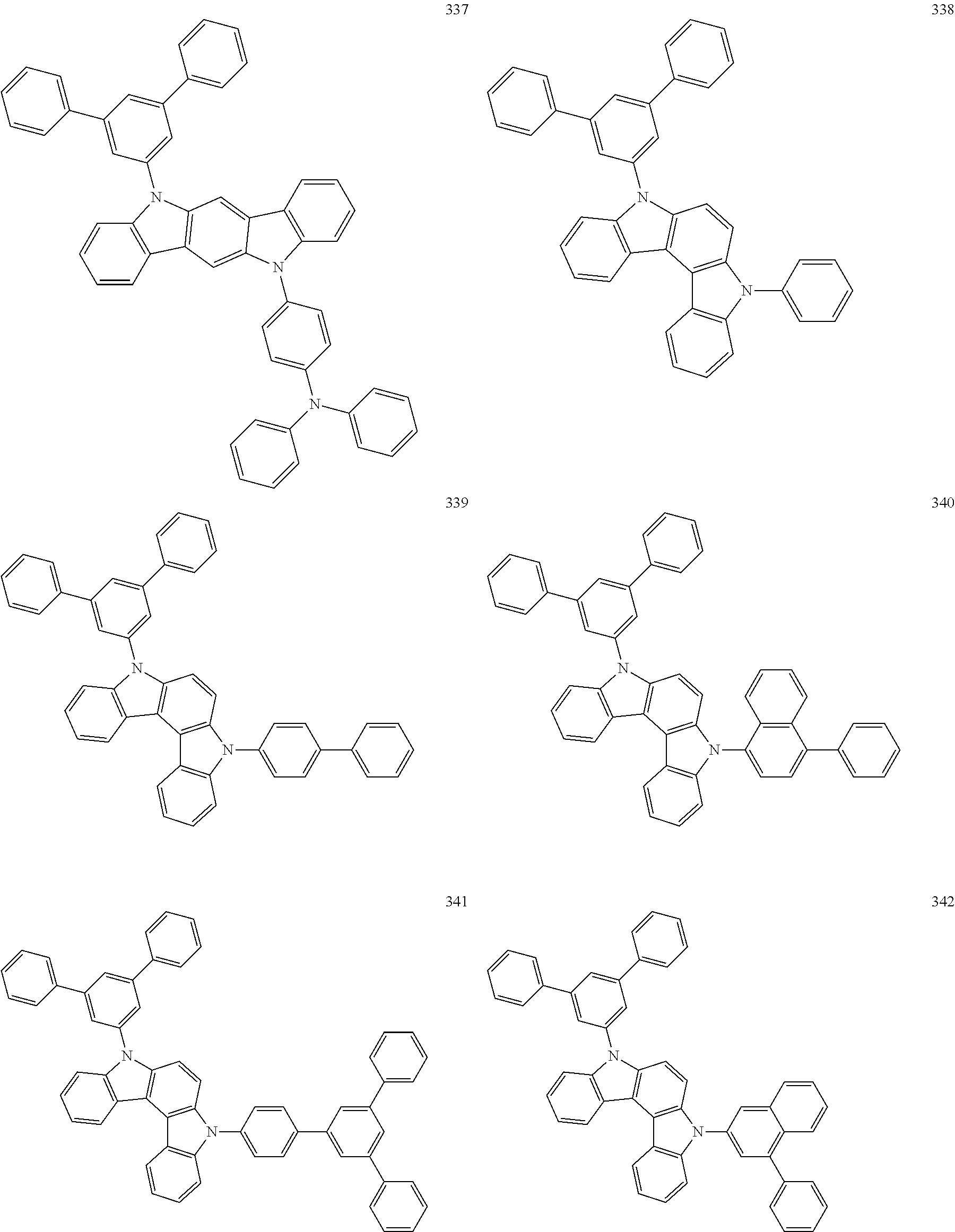
C00223
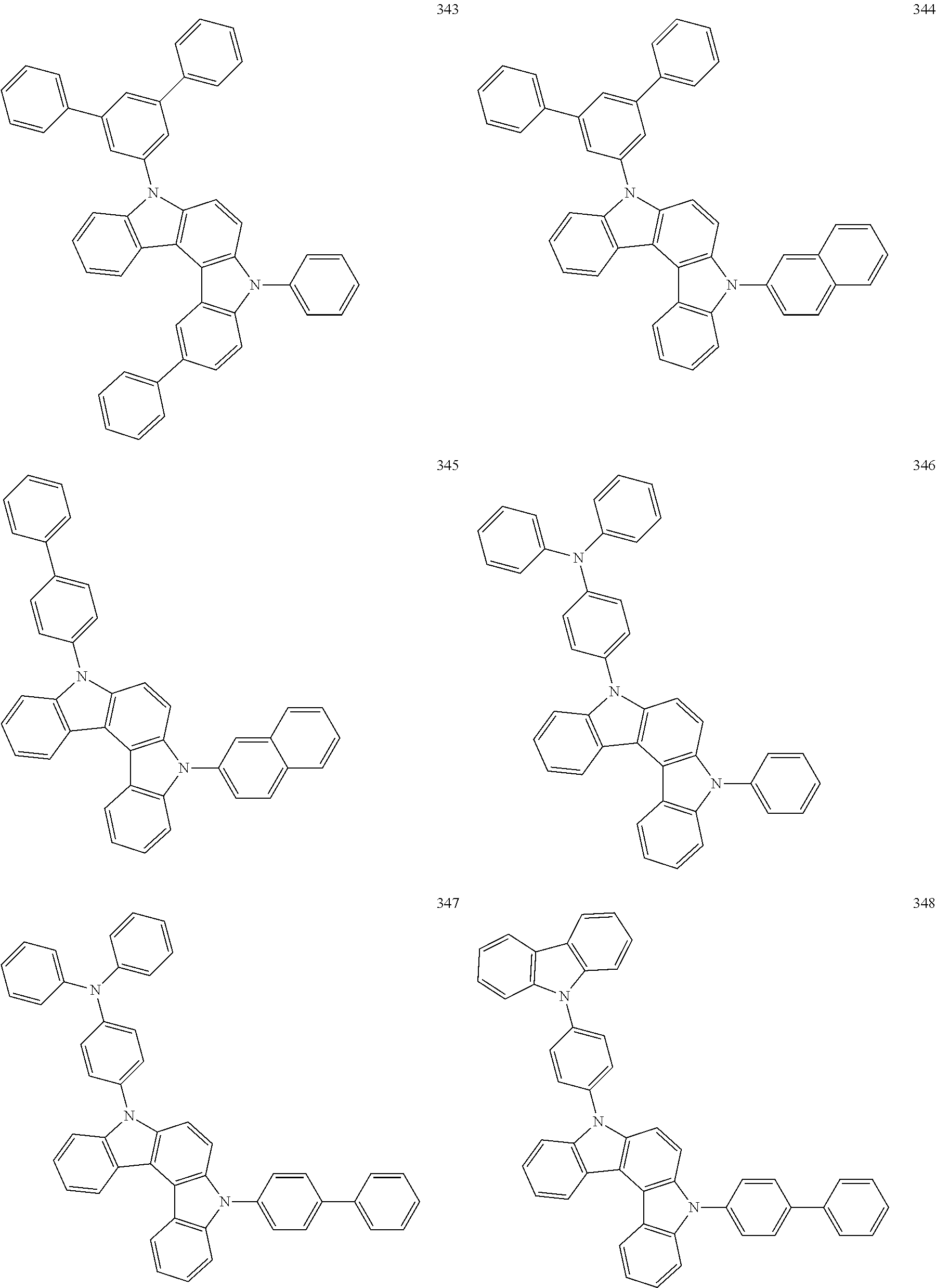
C00224
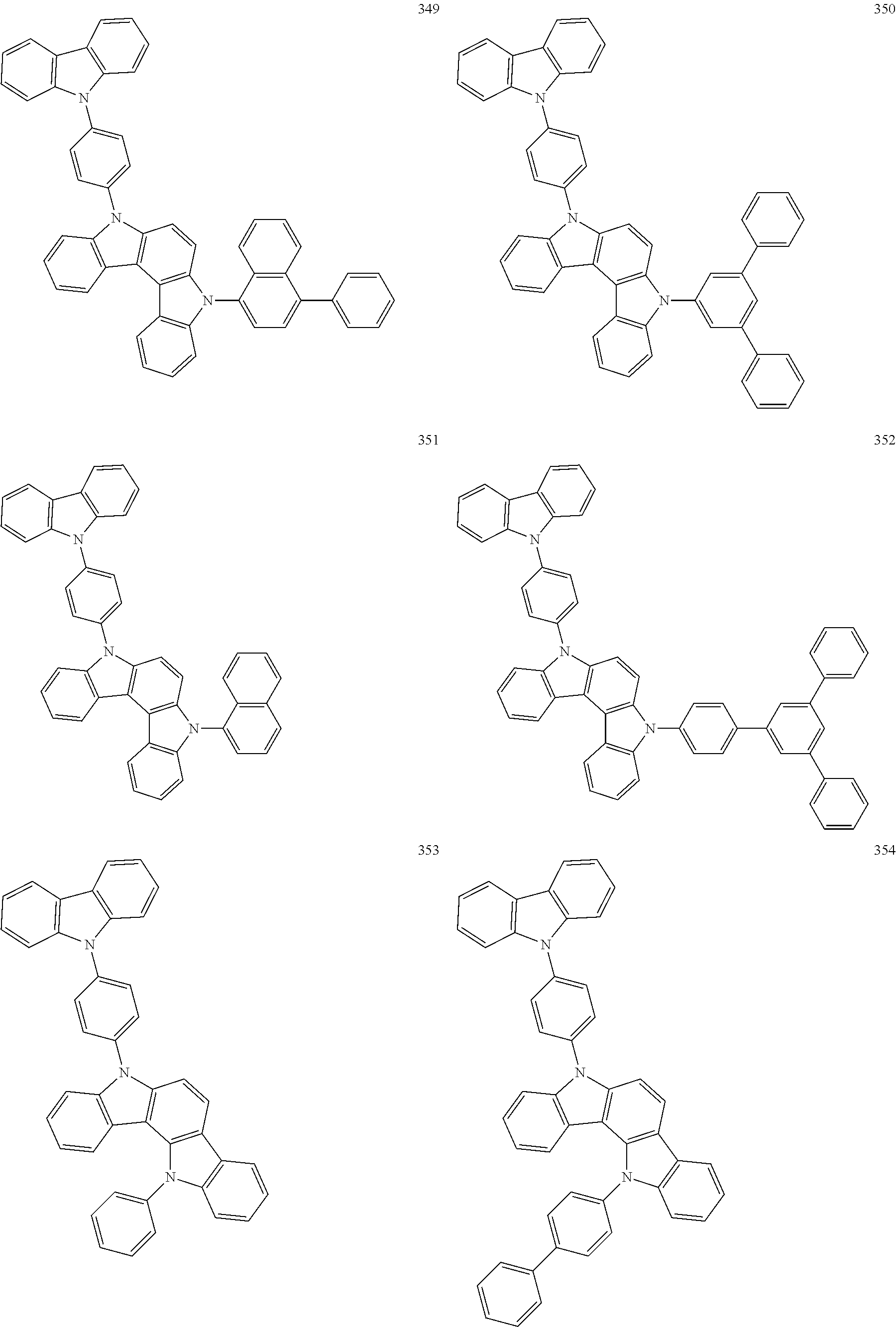
C00225
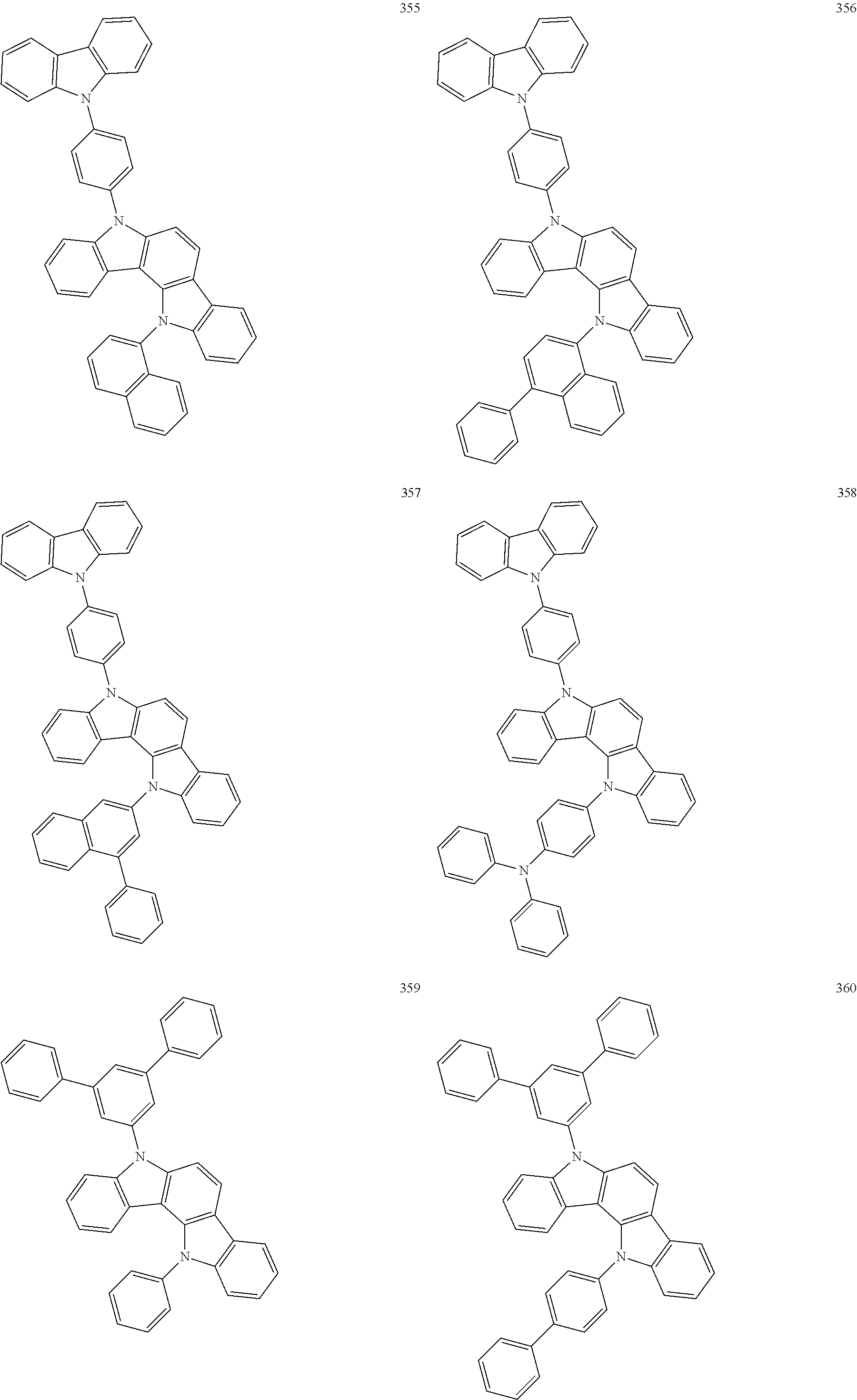
C00226
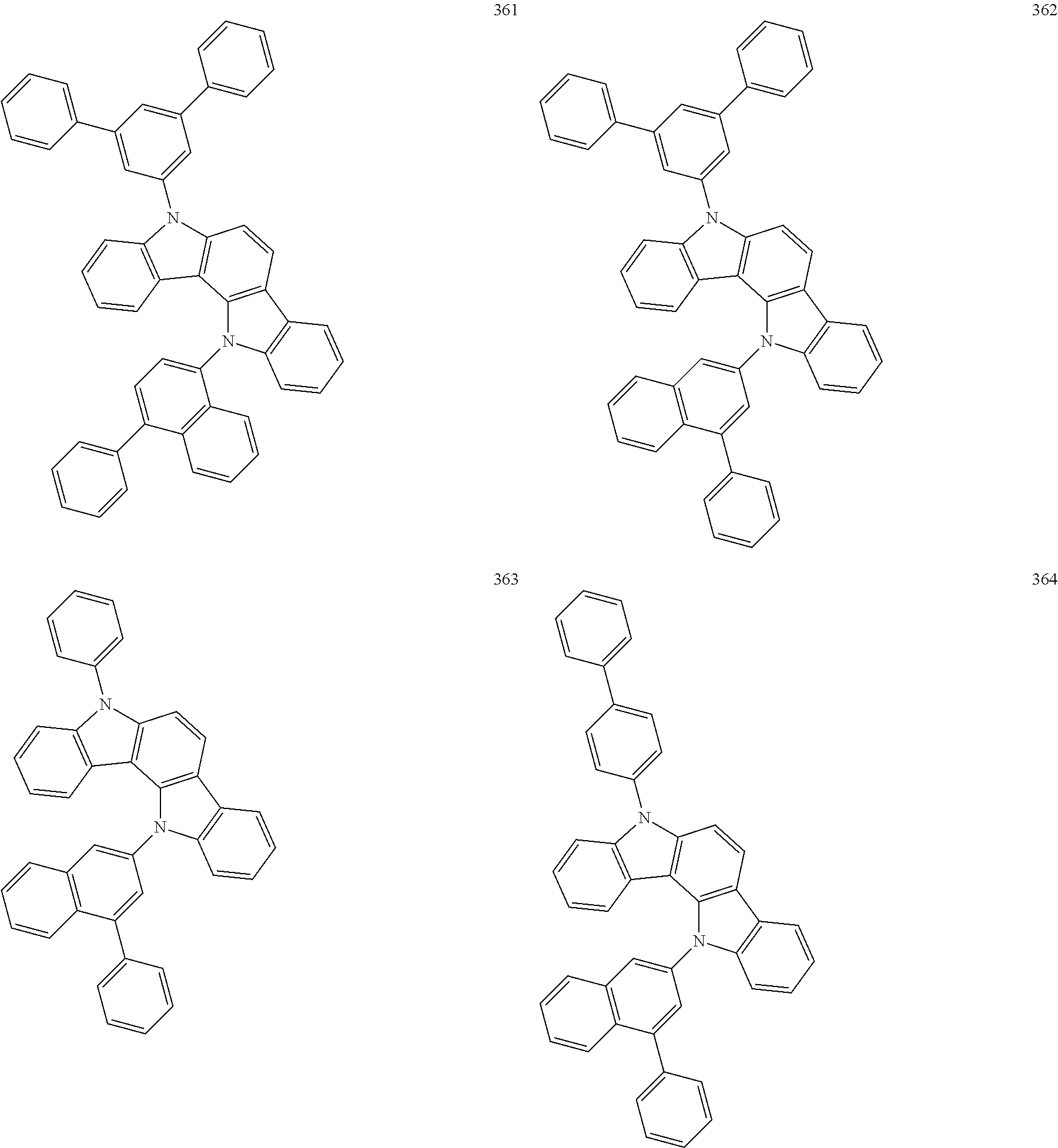
C00227
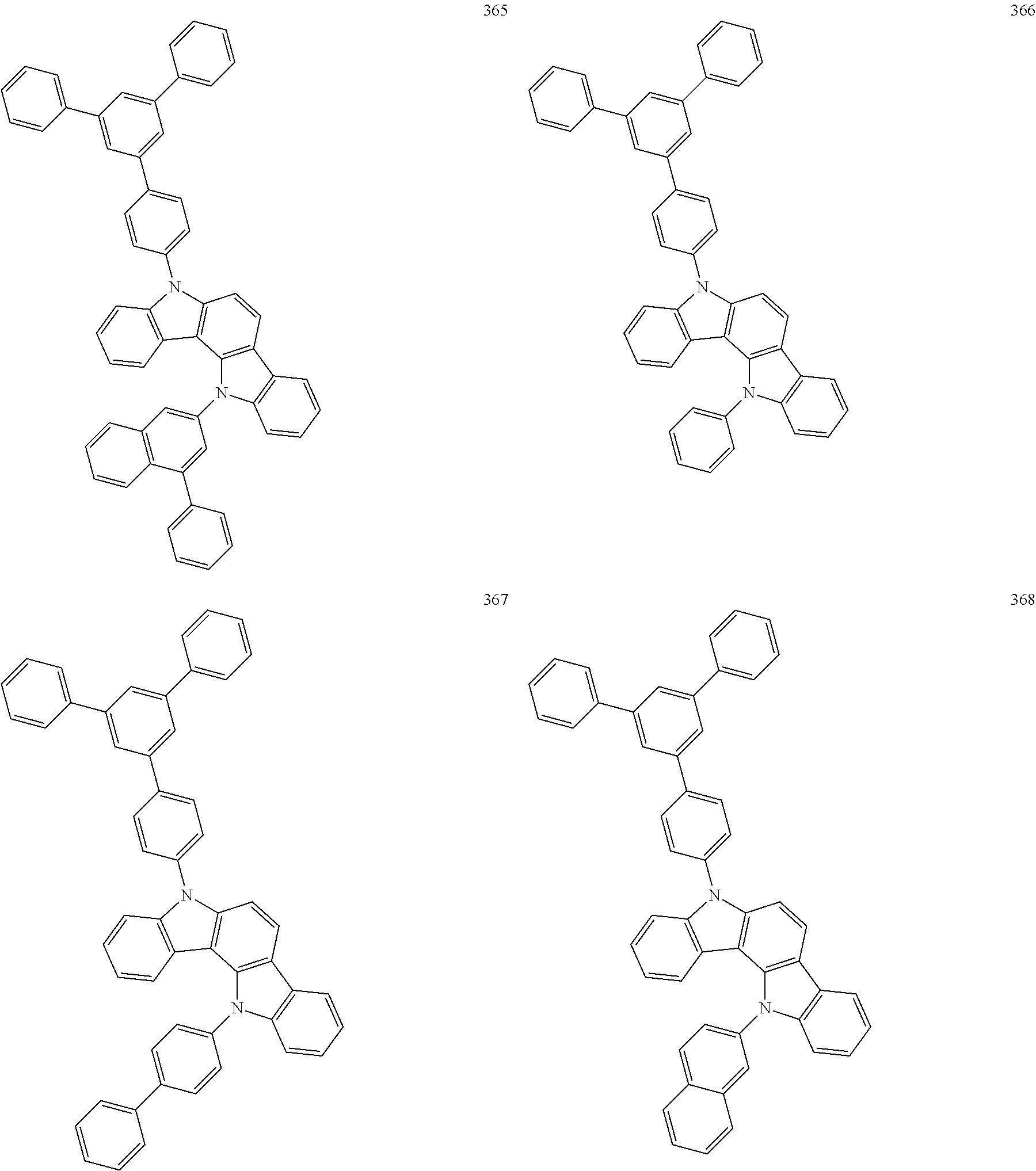
C00228
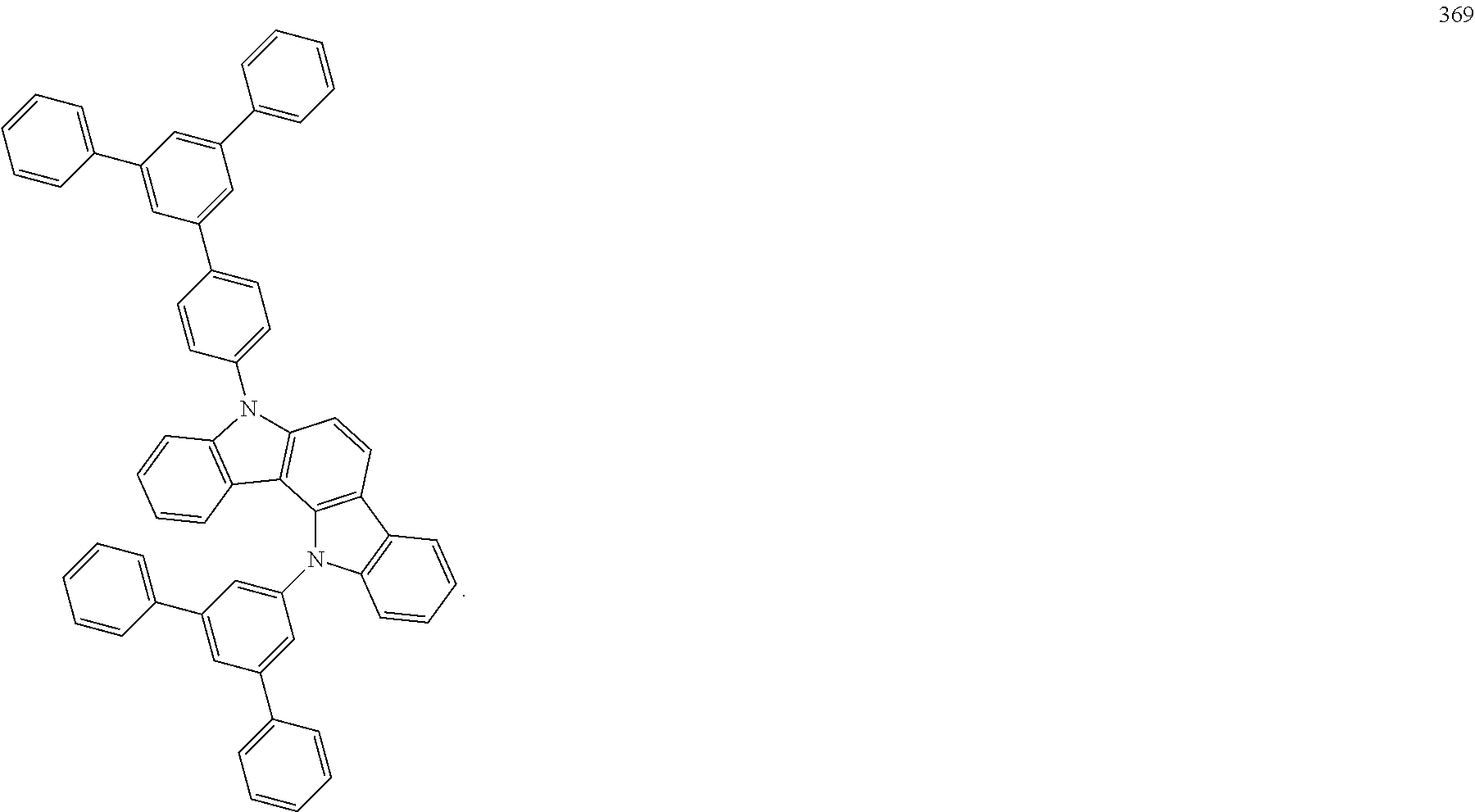
C00229
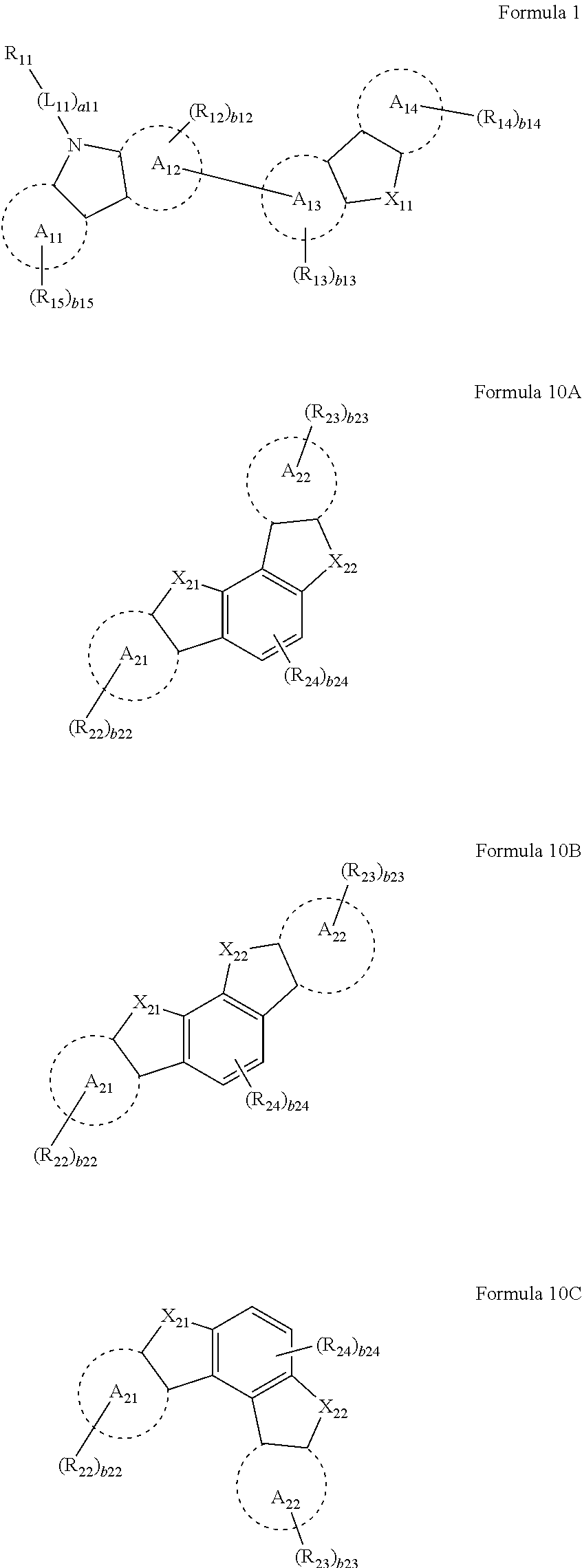
C00230
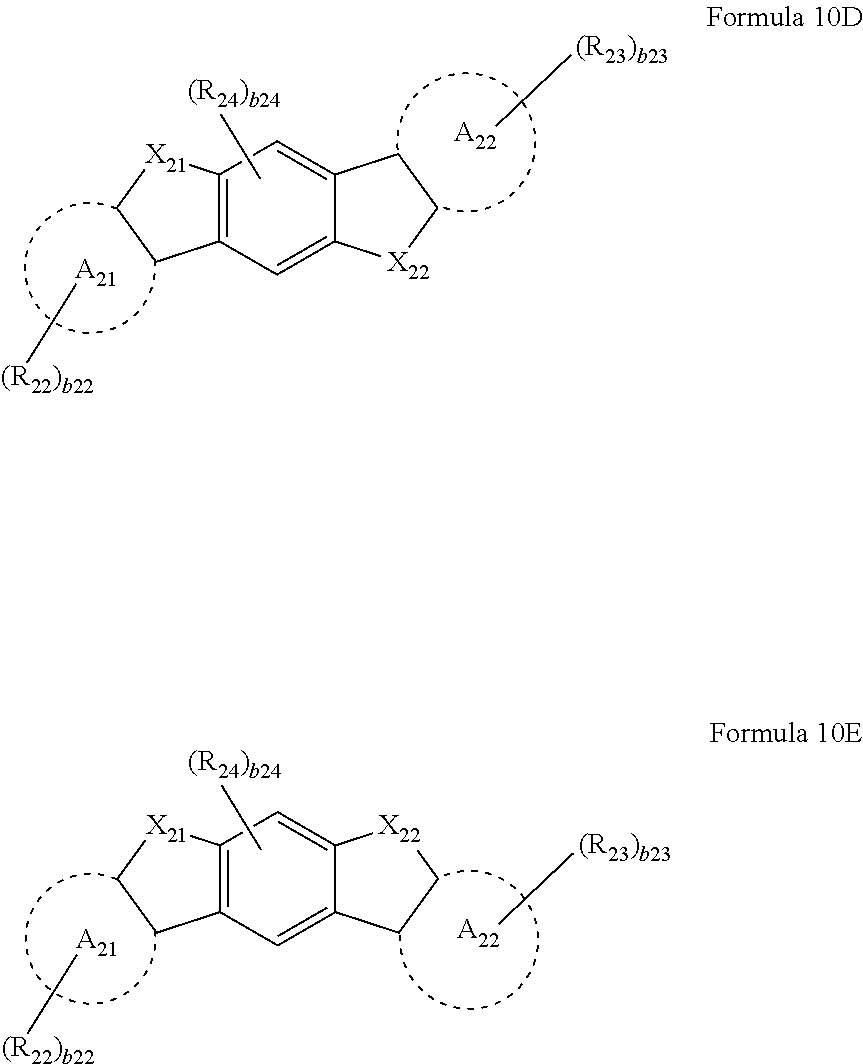
C00231
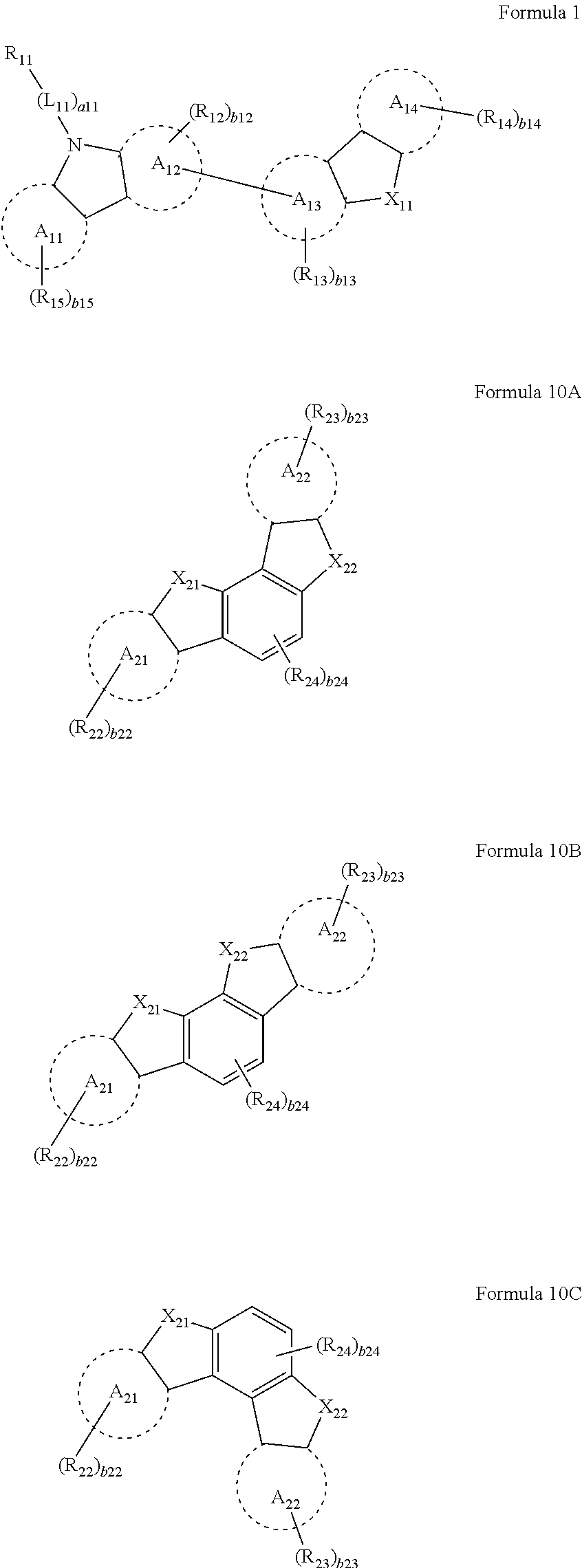
C00232
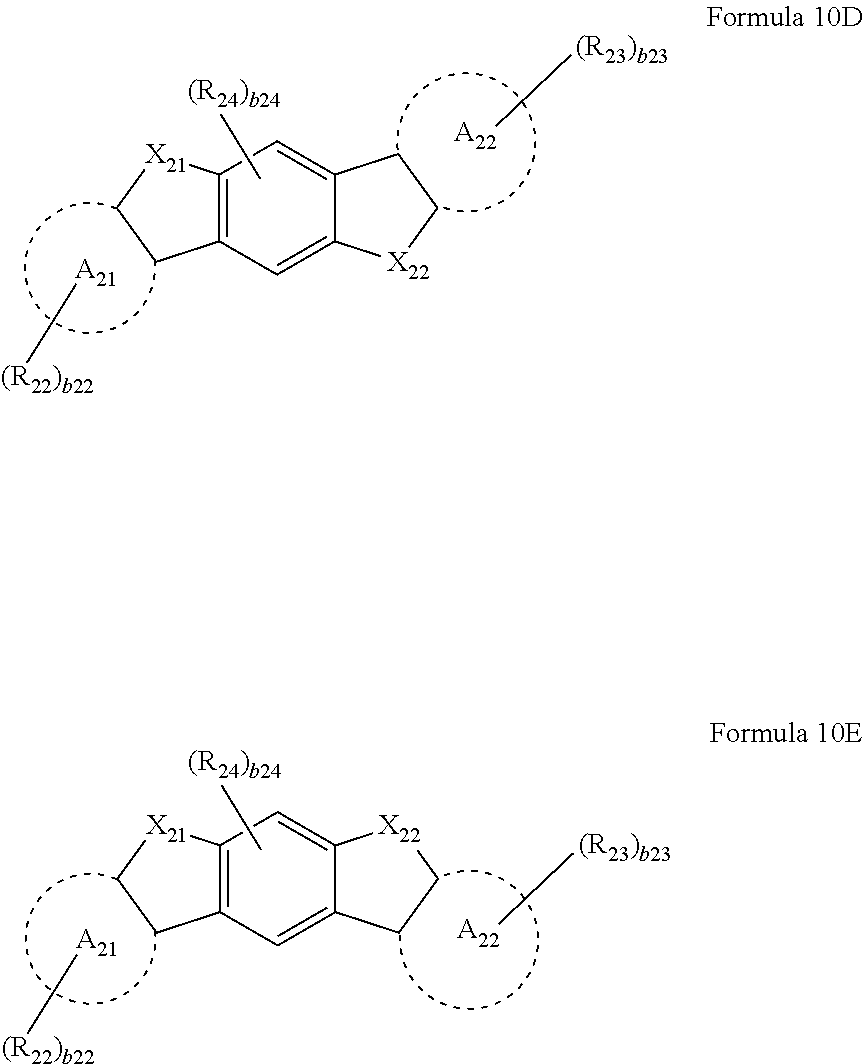
D00001
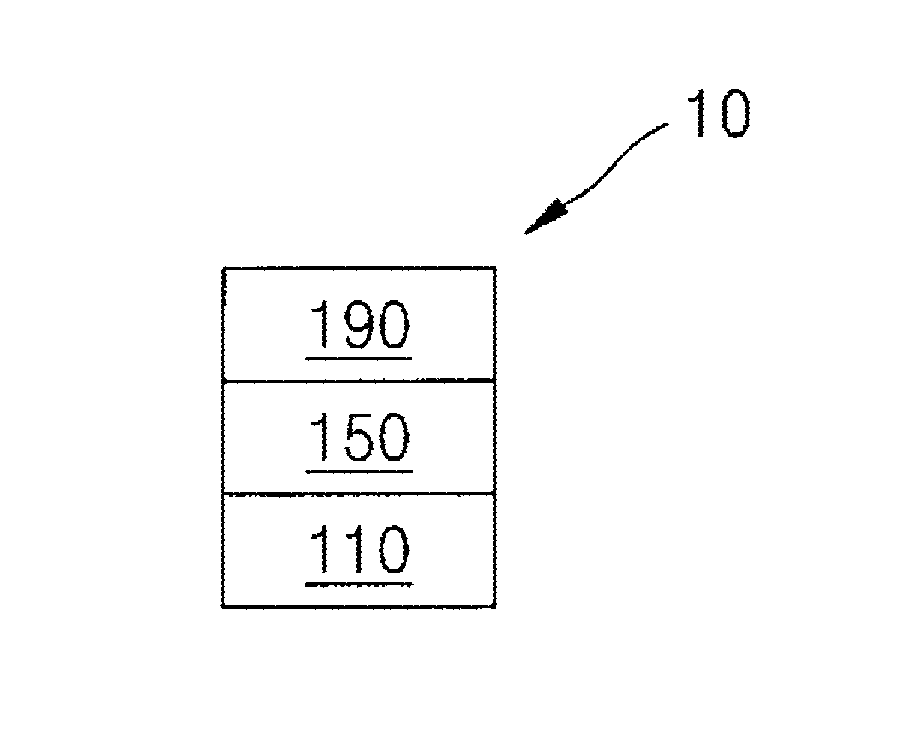
XML
uspto.report is an independent third-party trademark research tool that is not affiliated, endorsed, or sponsored by the United States Patent and Trademark Office (USPTO) or any other governmental organization. The information provided by uspto.report is based on publicly available data at the time of writing and is intended for informational purposes only.
While we strive to provide accurate and up-to-date information, we do not guarantee the accuracy, completeness, reliability, or suitability of the information displayed on this site. The use of this site is at your own risk. Any reliance you place on such information is therefore strictly at your own risk.
All official trademark data, including owner information, should be verified by visiting the official USPTO website at www.uspto.gov. This site is not intended to replace professional legal advice and should not be used as a substitute for consulting with a legal professional who is knowledgeable about trademark law.